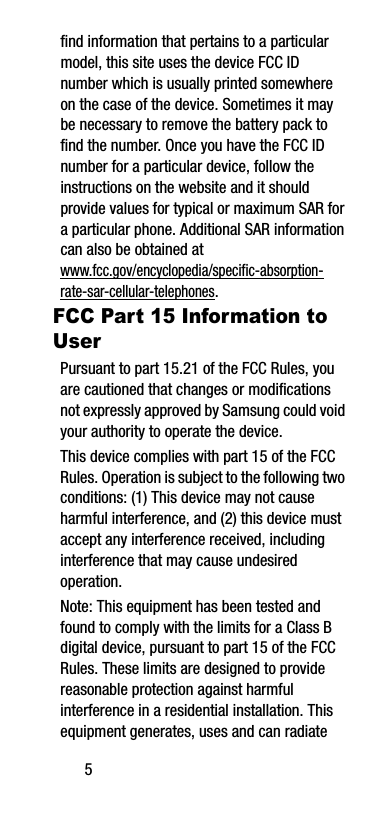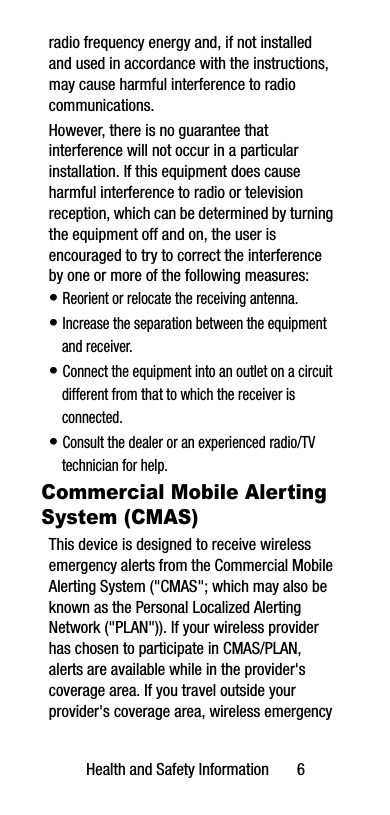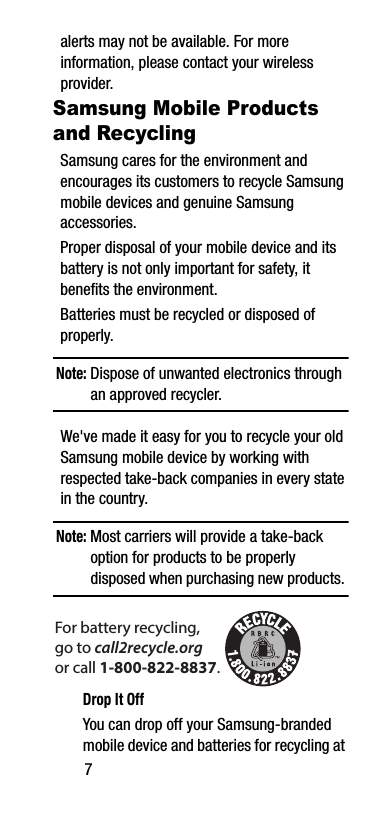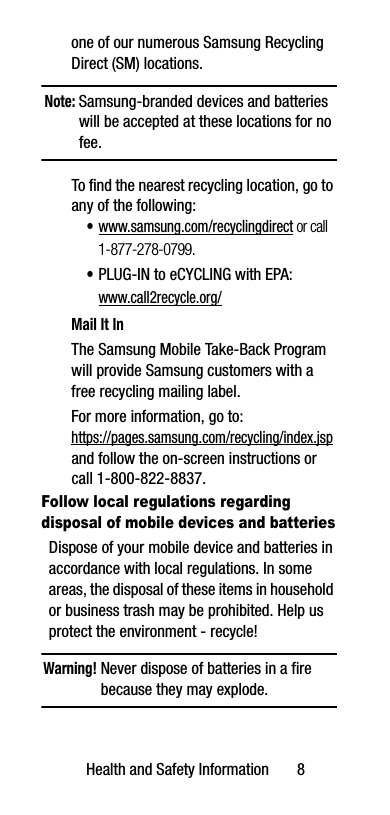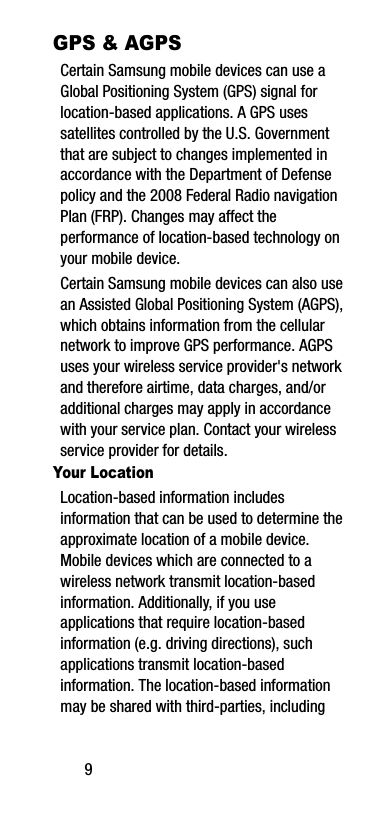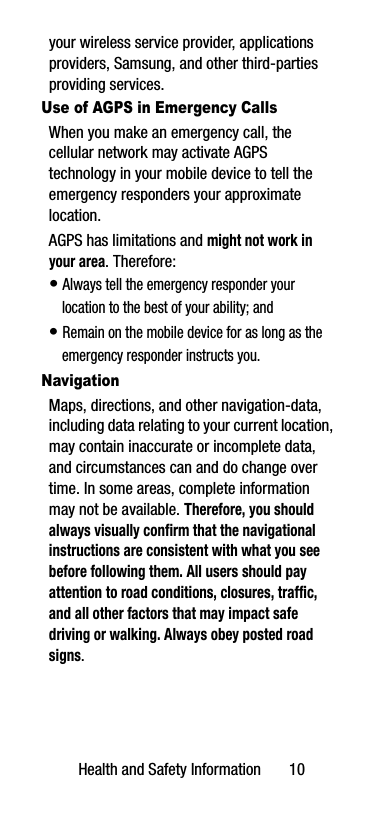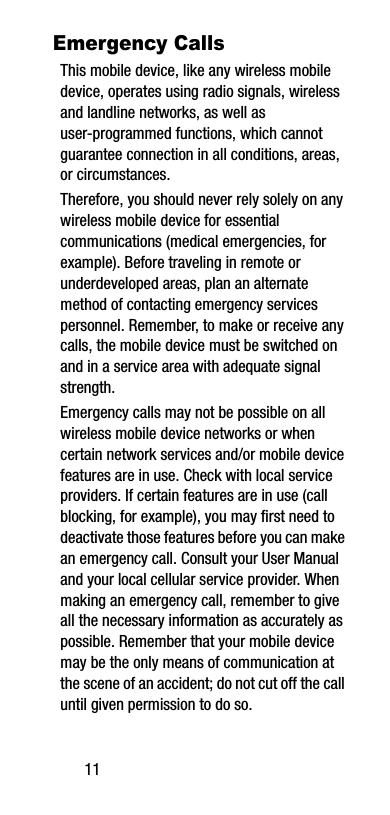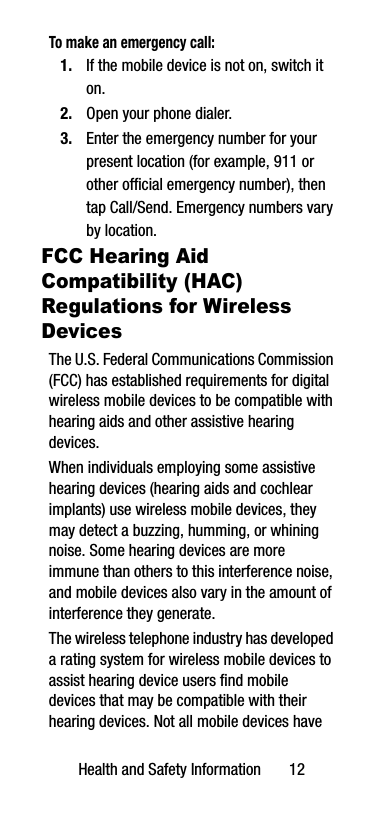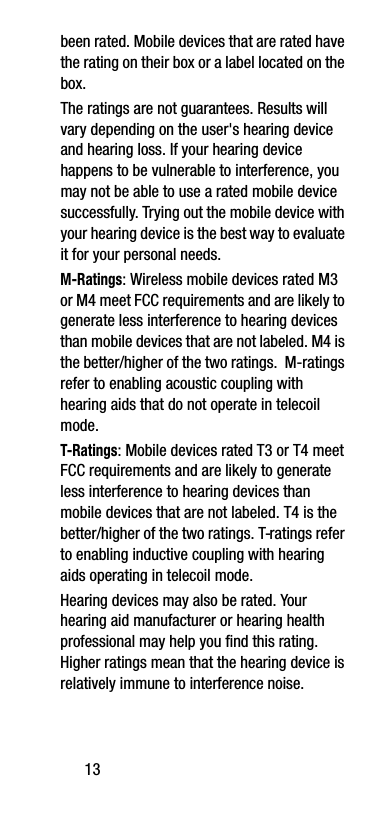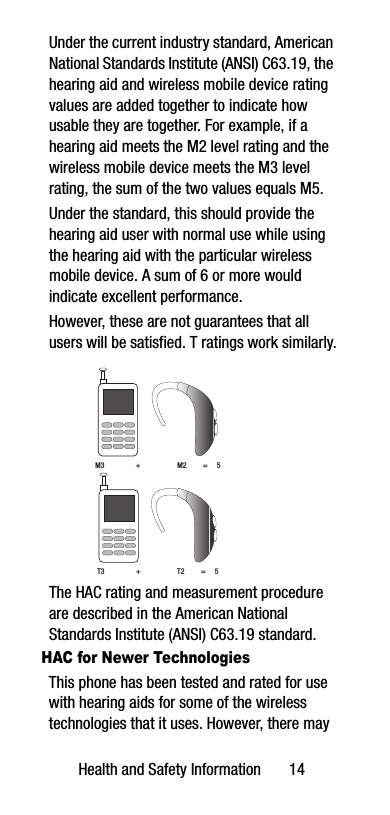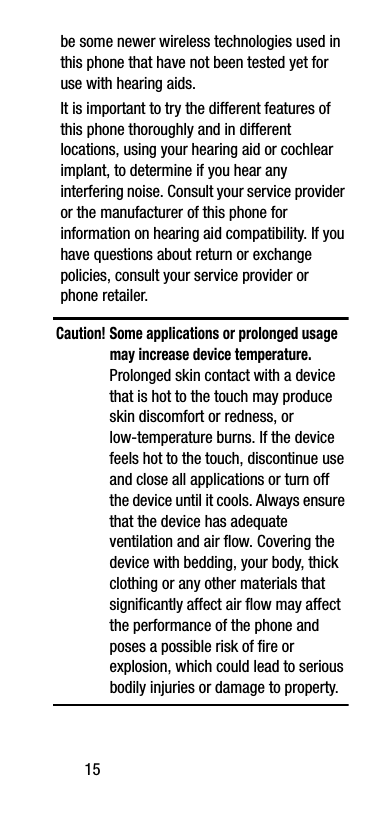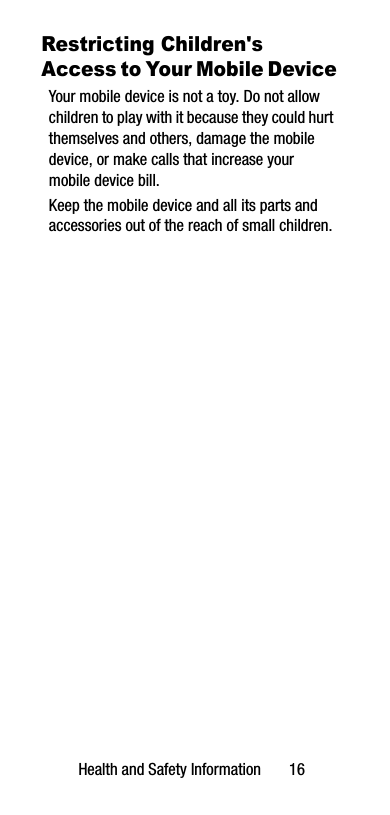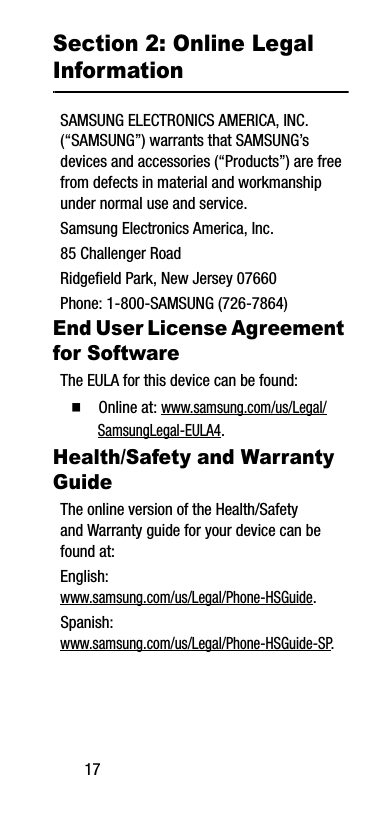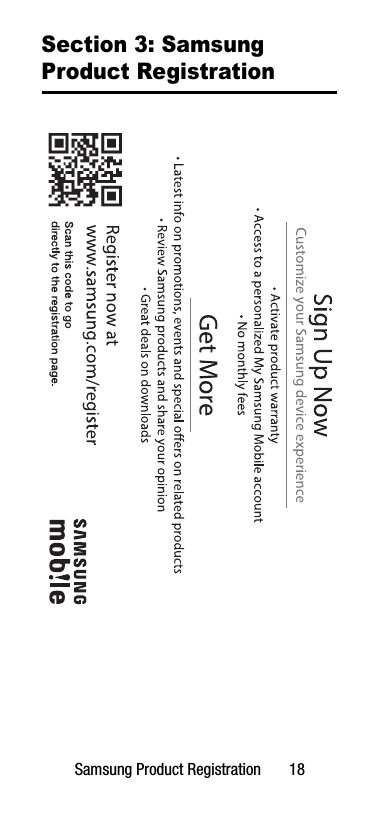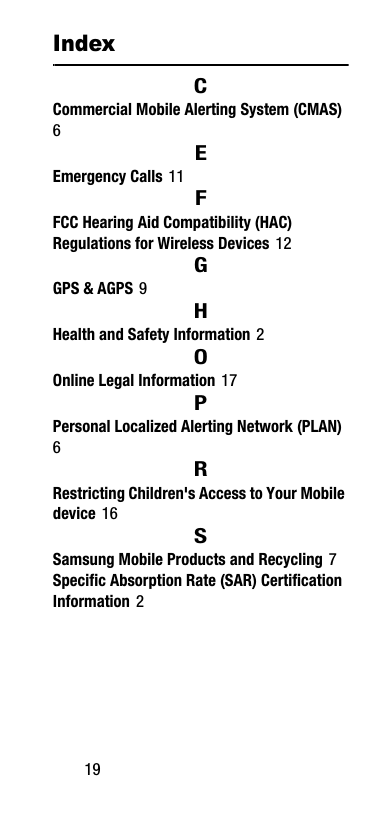Samsung Electronics Co SMN920R4 Multi-band GSM/EDGE/UMTS/CDMA/LTE Phone with WLAN, Bluetooth, RFID, and ANT+ User Manual
Samsung Electronics Co Ltd Multi-band GSM/EDGE/UMTS/CDMA/LTE Phone with WLAN, Bluetooth, RFID, and ANT+ Users Manual
Users Manual
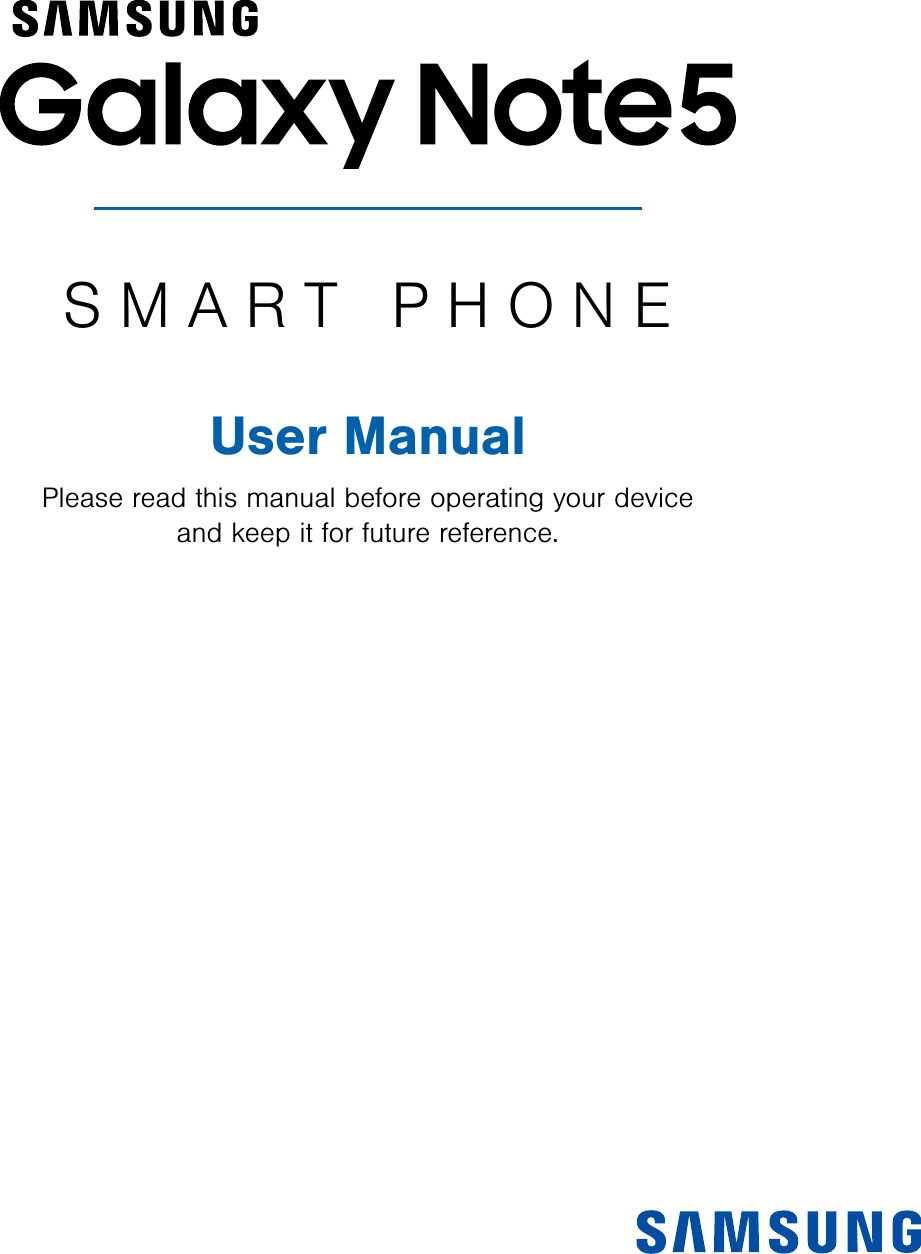
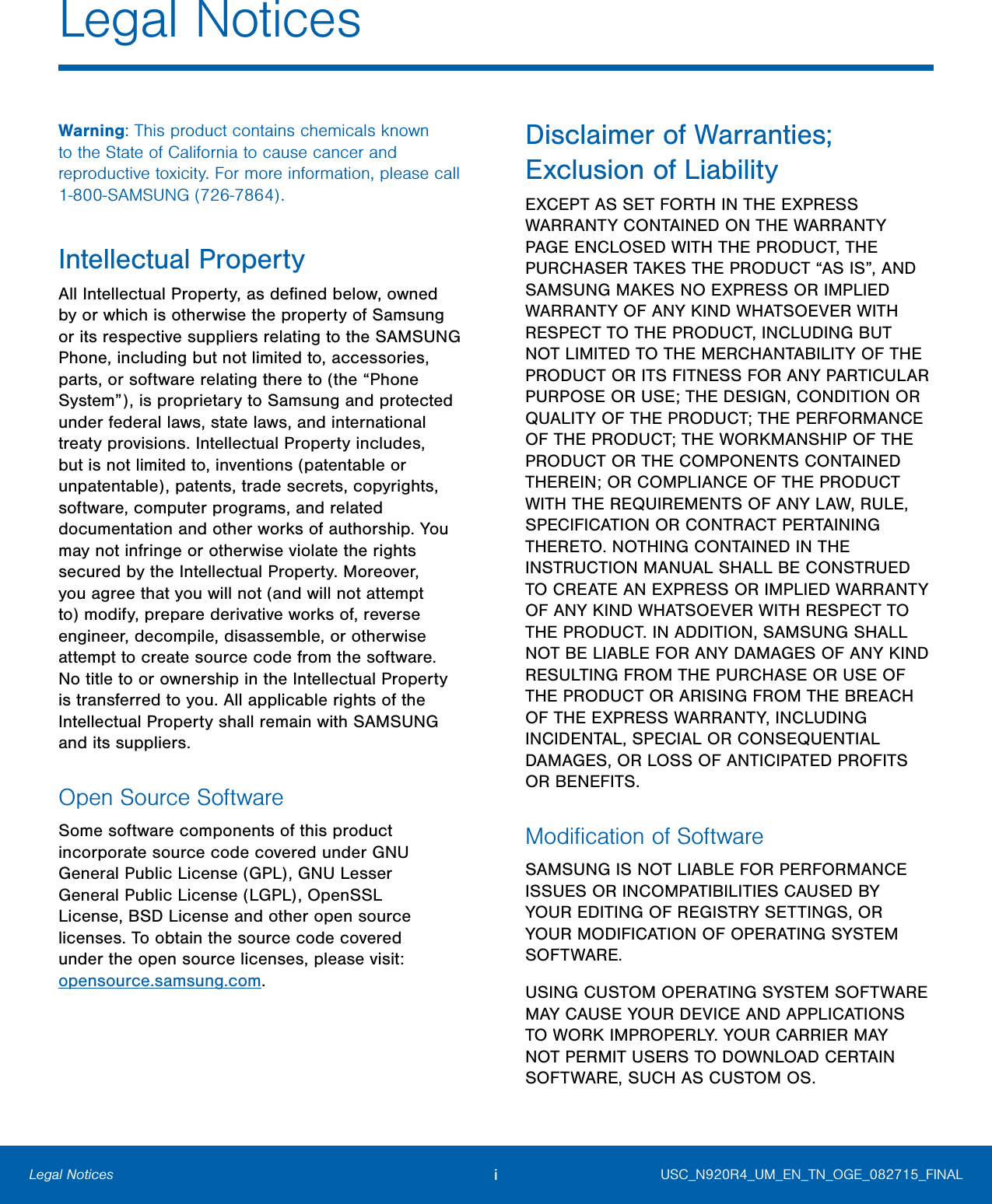
![ii Legal Notices Samsung KNOX Samsung Knox™ is Samsung’s security platform and is a mark for a Samsung device tested for security with enterprise use in mind. Additional licensing fee may be required. For more information about Knox, please refer to: samsung.com/us/knox. [030115] Samsung Electronics America (SEA), Inc Address: 85 Challenger Road Ridgefield Park, New Jersey 07660 Phone: 1-800-SAMSUNG (726-7864) Internet Address: samsung.com ©2015 Samsung Electronics America, Inc. Samsung, Samsung Galaxy, MultiWindow, S Pen, and SHealth are all trademarks of SamsungElectronics Co., Ltd. Screen images are simulated. Appearance of device may vary. Do you have questions about your Samsung Mobile Device? For 24 hour information and assistance, we offer a new FAQ/ARS System (Automated Response System) at: samsung.com/us/support The actual available capacity of the internal memory is less than the specified capacity because the operating system and default applications occupy part of the memory. The available capacity may change when you upgrade the device. Nuance®, VSuite™, T9® Text Input, and the Nuance logo are trademarks or registered trademarks of Nuance Communications, Inc., or its affiliates in the United States and/or other countries. The Bluetooth® word mark, figure mark (stylized “B Design”), and combination mark (Bluetooth word mark and “B Design”) are registered trademarks and are wholly owned by the Bluetooth SIG. Google, the Google logo, Android, the Android logo, Google Play, Gmail, Google Maps, Google Music, Google Hangouts, Picasa, YouTube, and other marks are trademarks of Google Inc. Wi-Fi is a registered trademark of the WirelessFidelity Alliance, Inc. LTE is a trademark of ETSI. Legal Information Important legal information can be accessed in writing on the mobile device or at samsung.com. Read this information before using your mobile device. Samsung Limited Warranty — This product is covered under the applicable Samsung Limited Warranty. Full written terms and detailed information about the warranty and obtaining service are available on the device at: Settings > About device > Legal Information > Samsung legal or at samsung.com. The online version of the Health/Safety and Warranty guide for your device can be found at: English samsung.com/us/Legal/Phone-HSGuide Spanish samsung.com/us/Legal/Phone-HSGuide-SP Location of Legal Information on the device: Health and Safety Information Settings > About device > Legal information > Samsung legal > Health and Safety. Warranty Settings > About device > Legal information > Samsung legal > Warranty. EULA Settings > About device > Legal information > Samsung legal > End User License Agreement.](https://usermanual.wiki/Samsung-Electronics-Co/SMN920R4/User-Guide-2802244-Page-3.png)
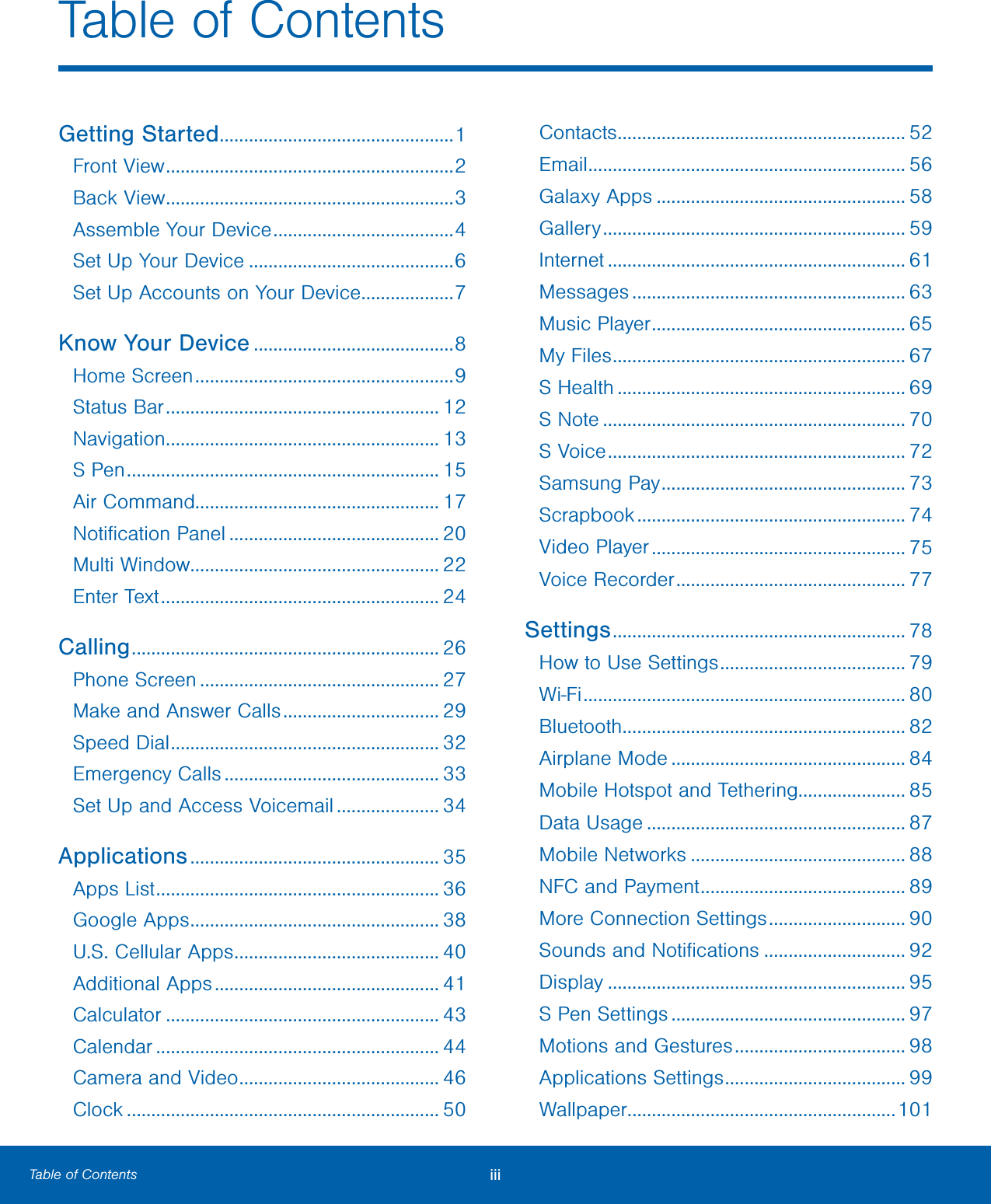
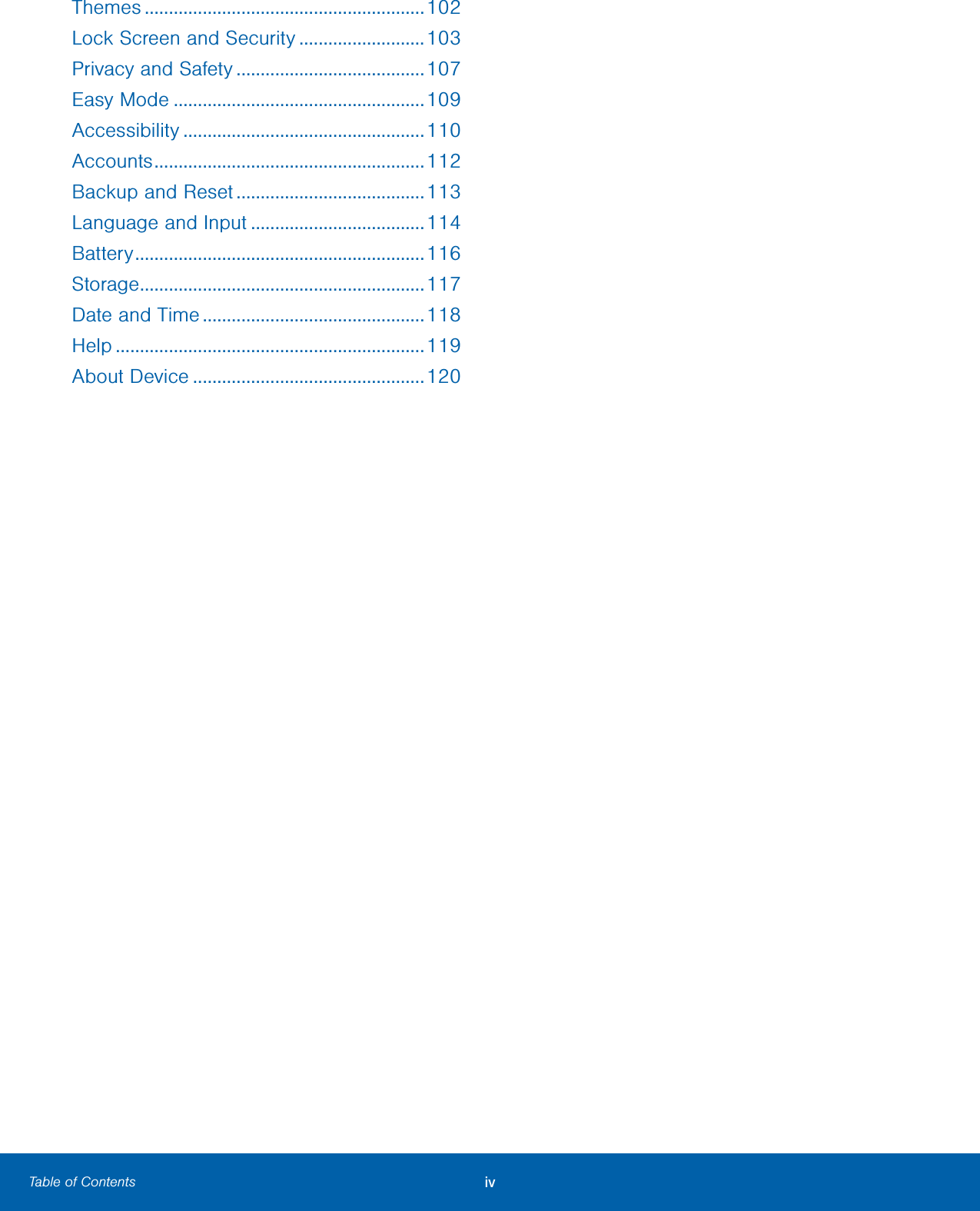
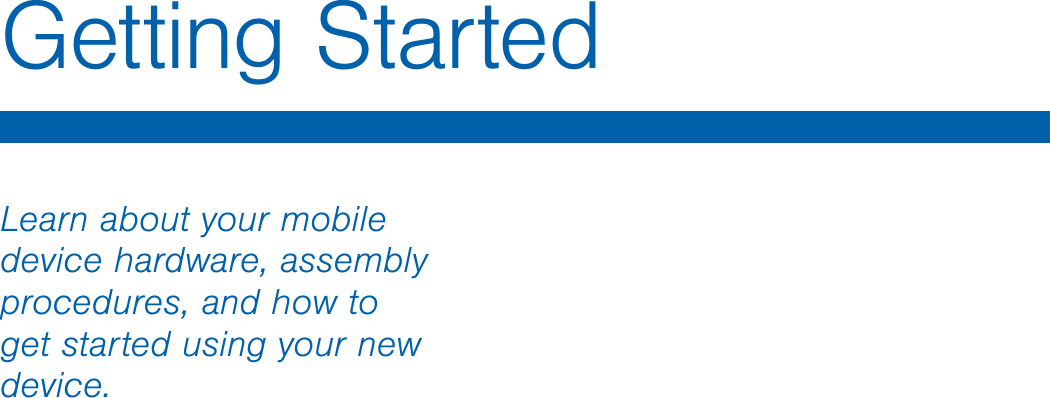
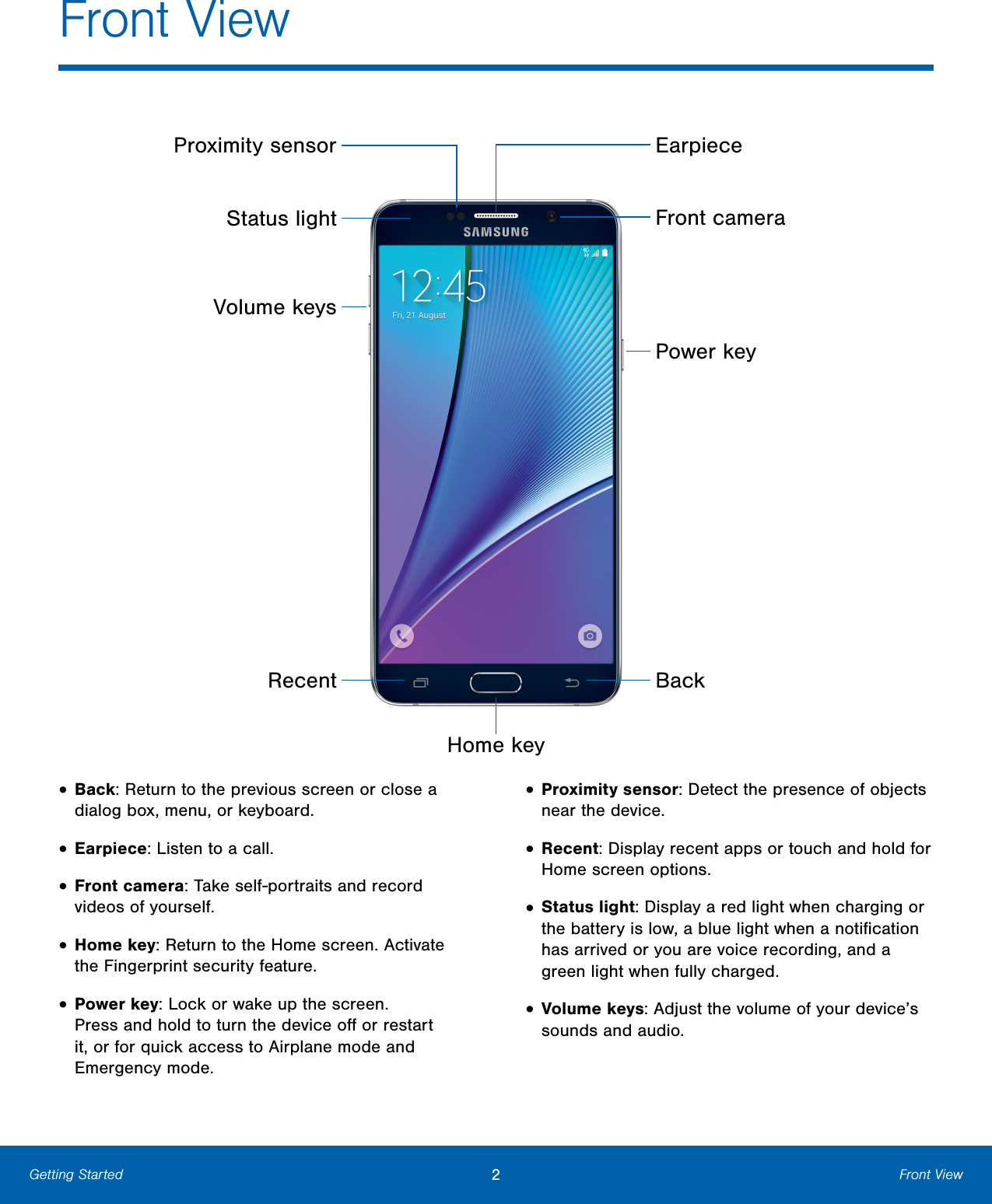
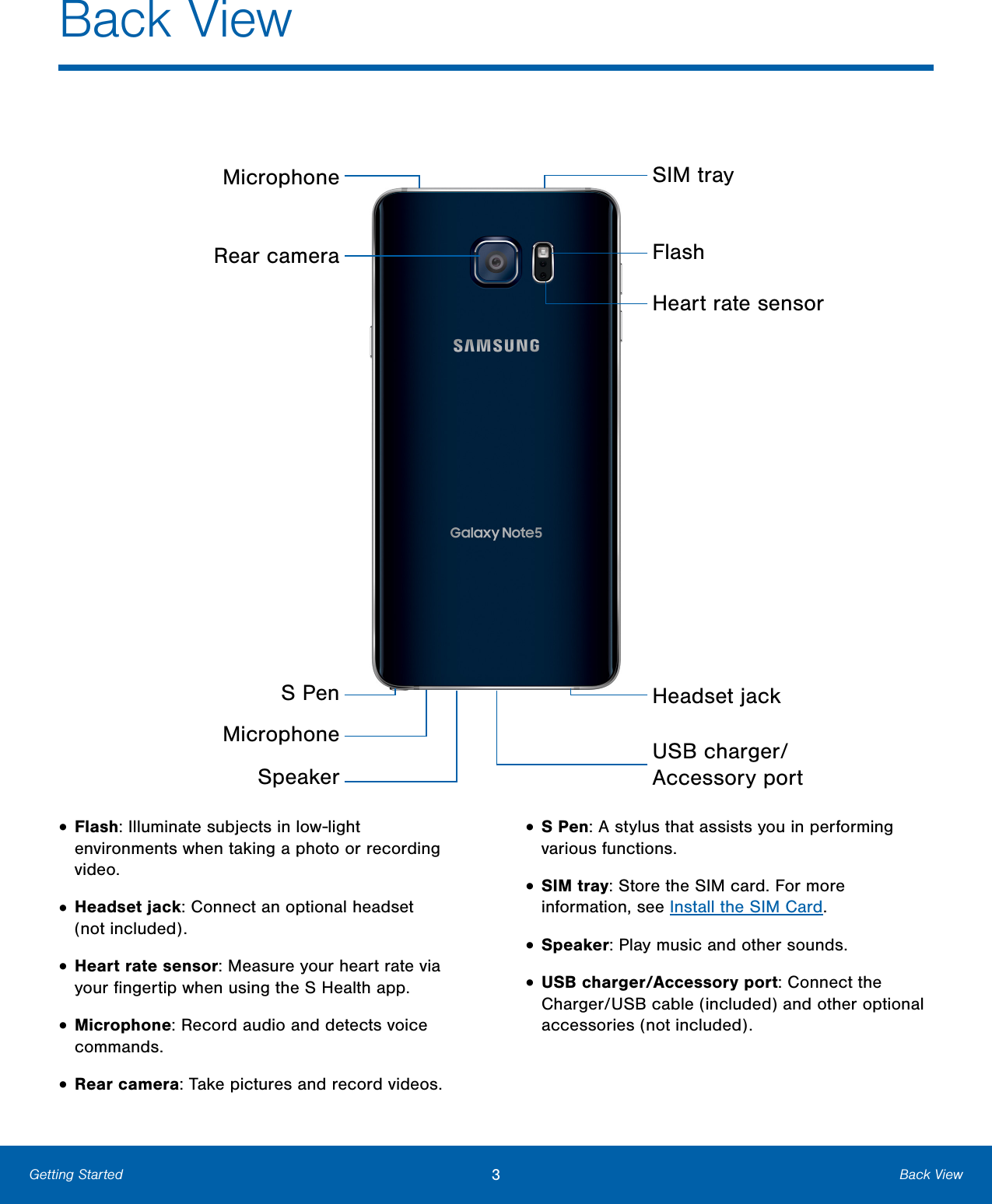
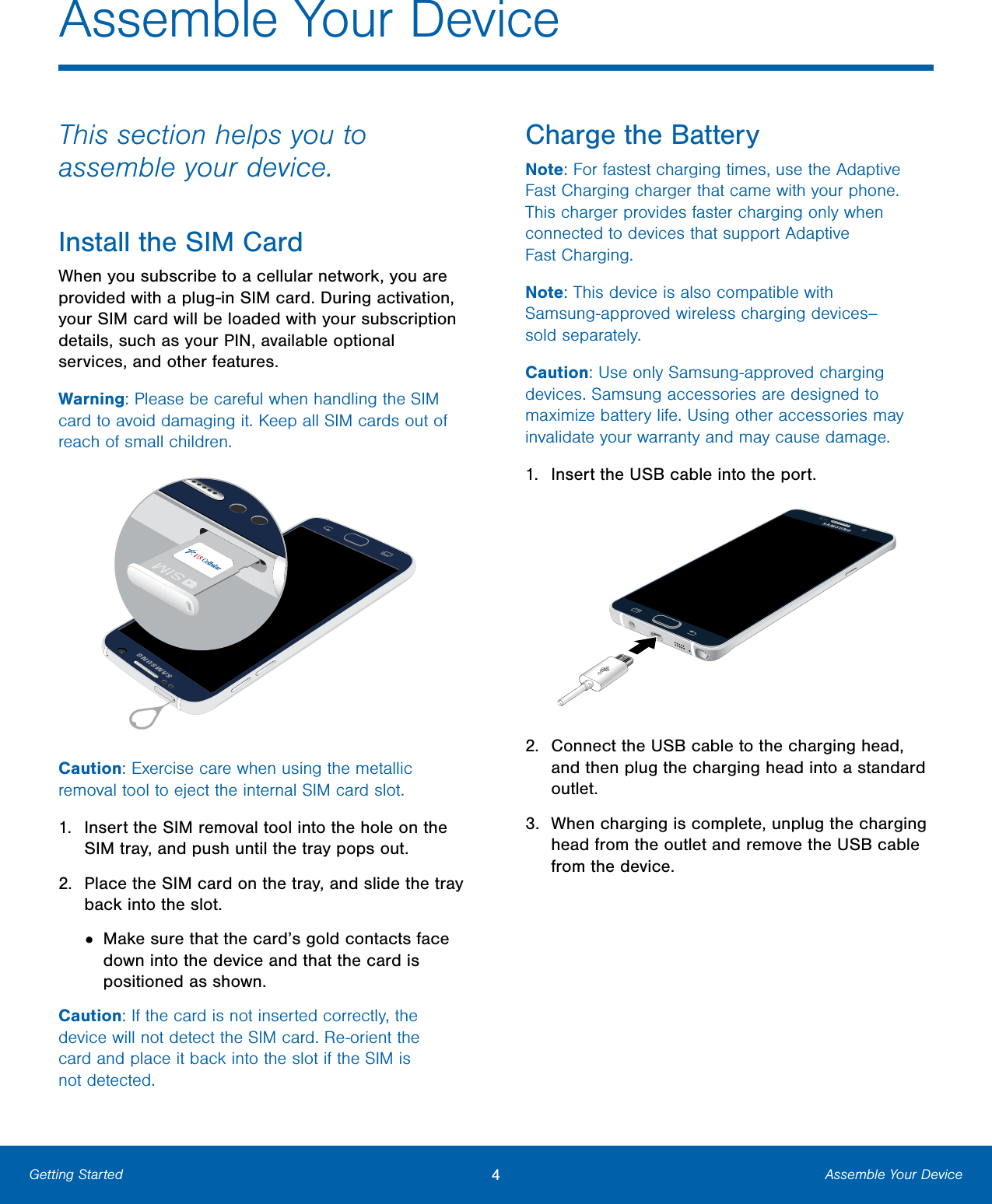
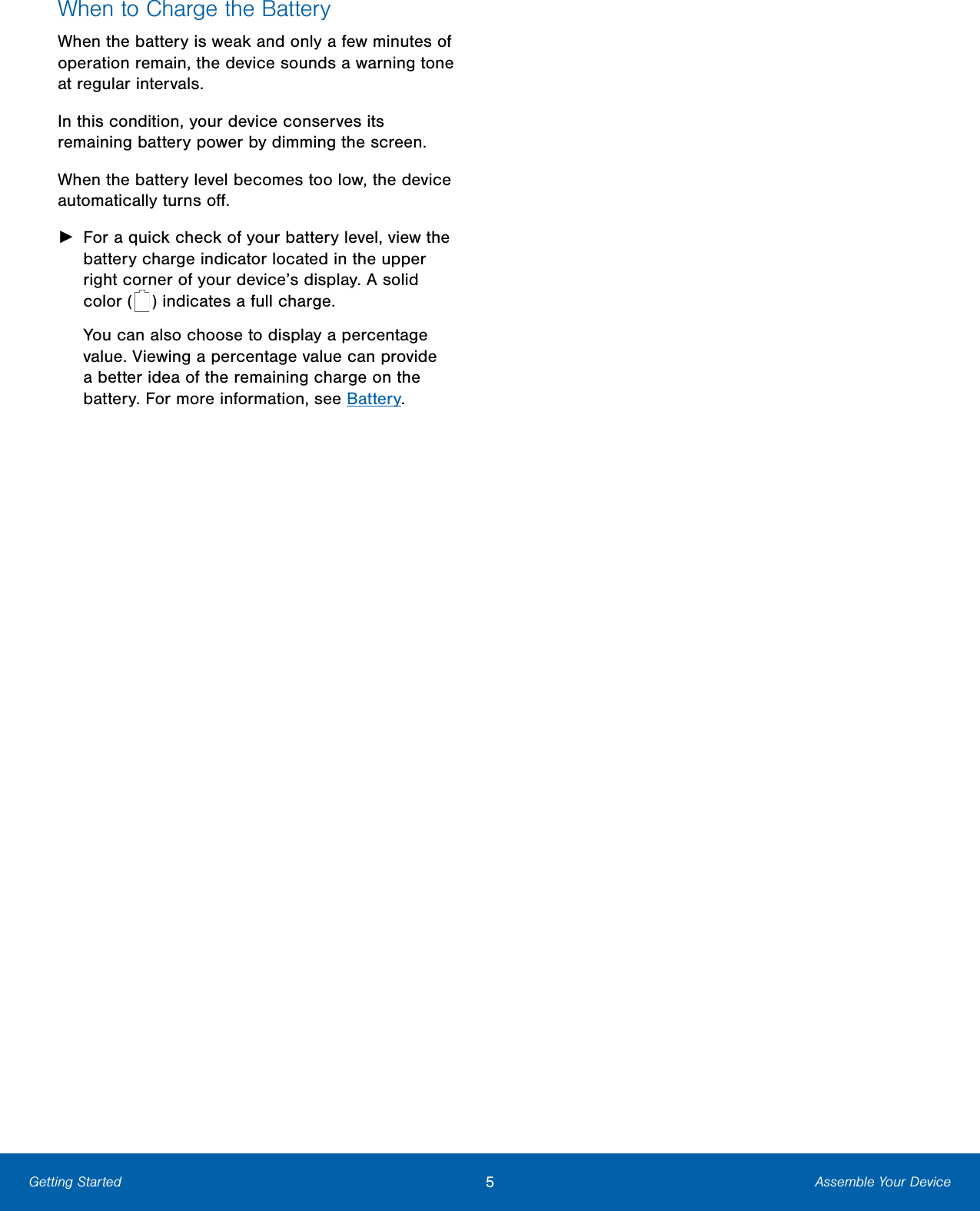
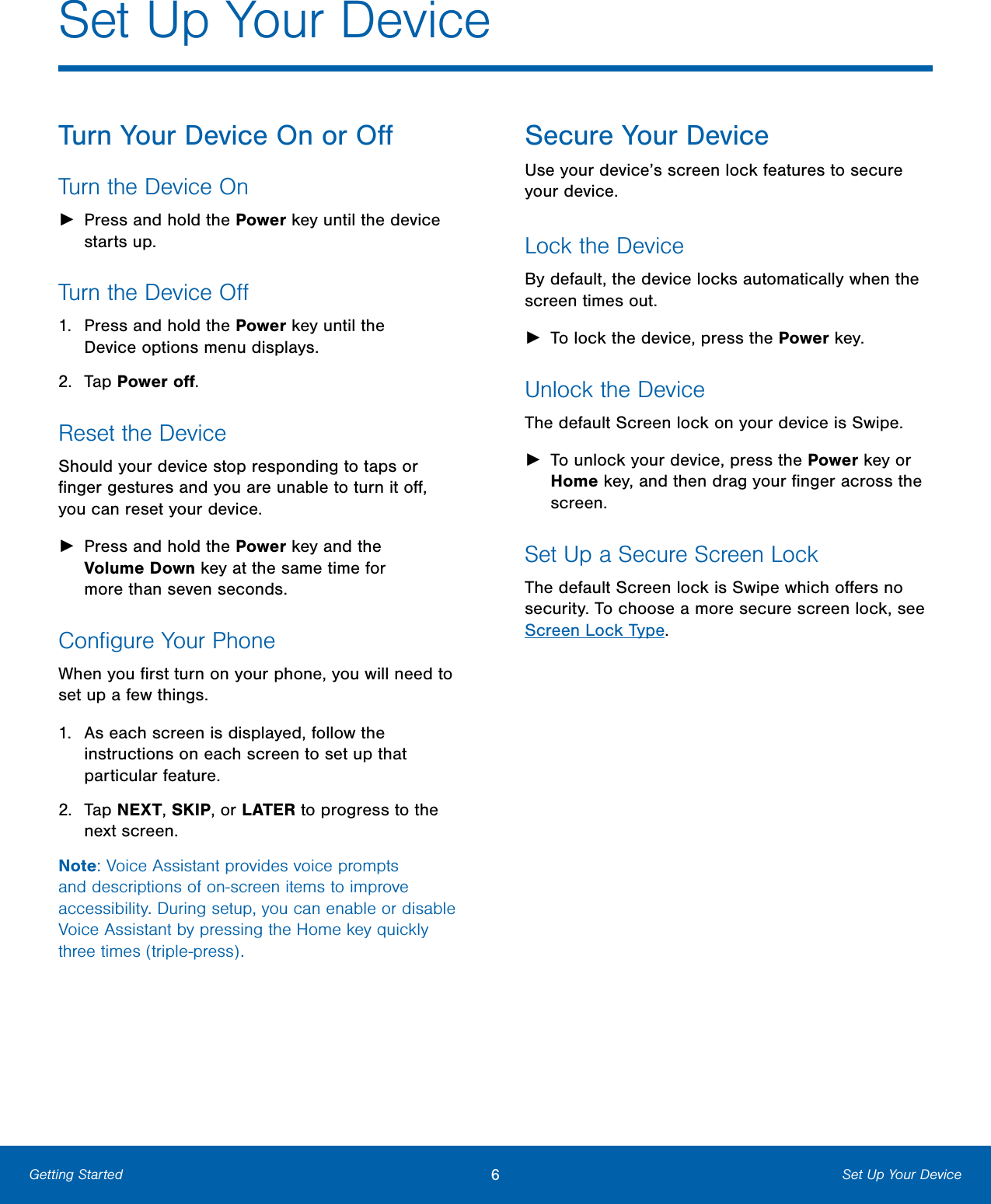
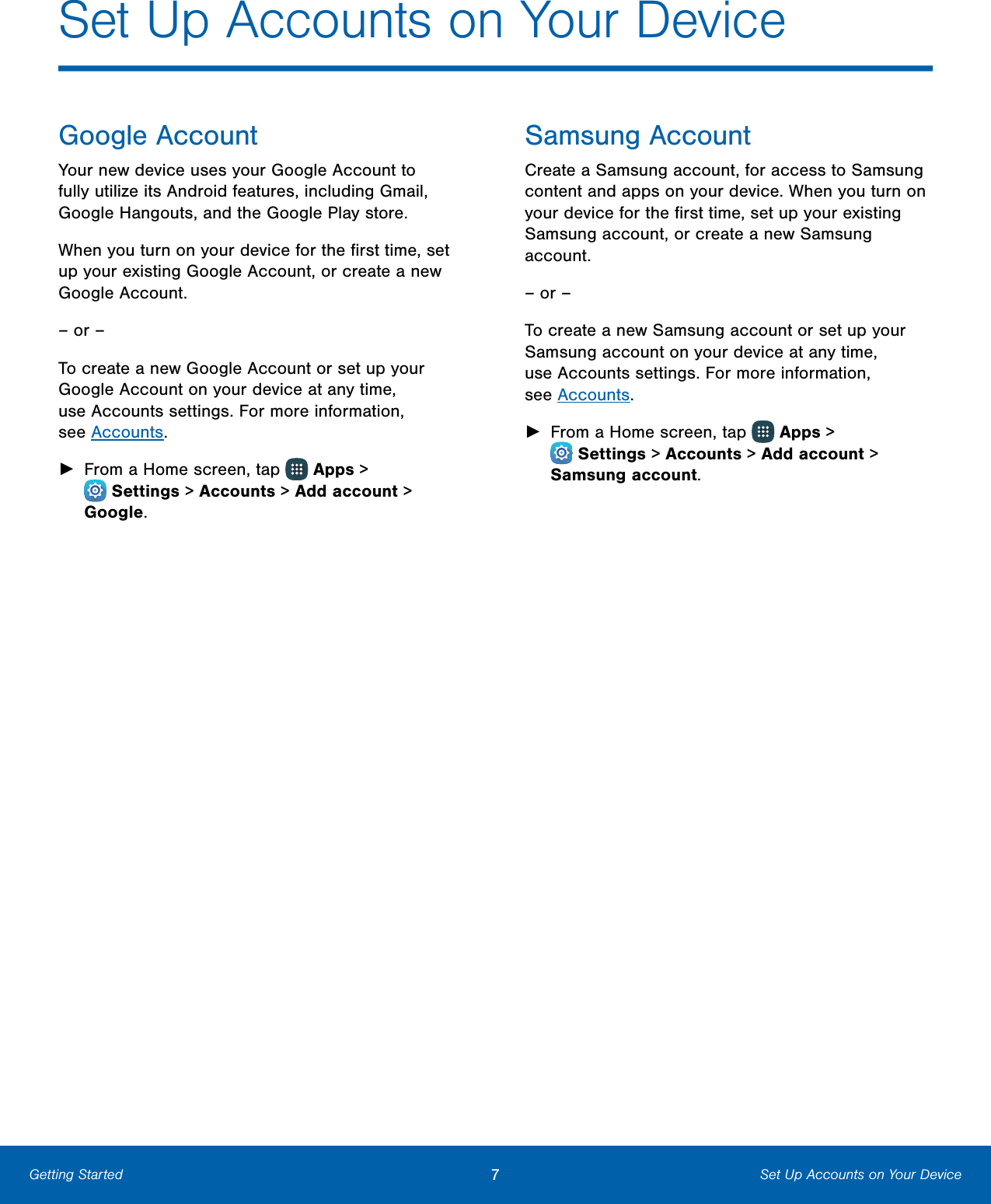
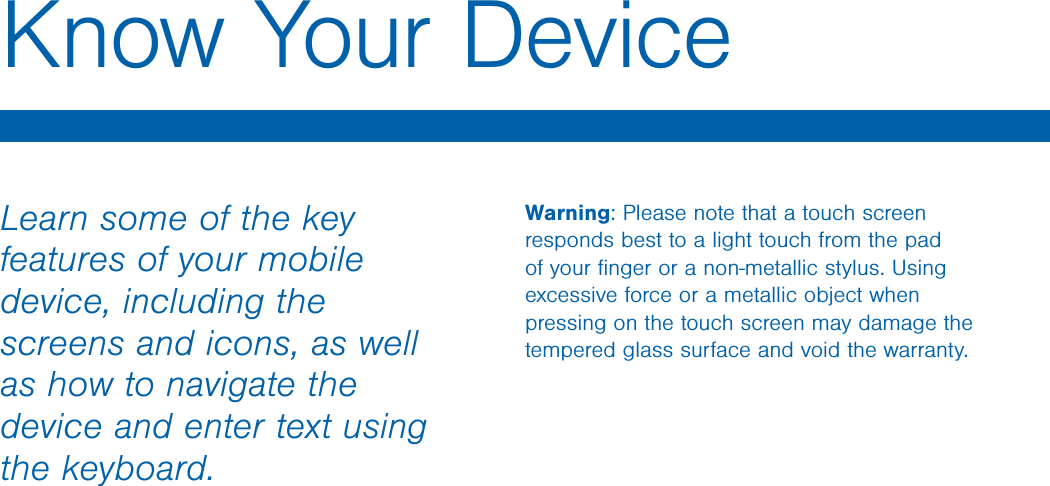
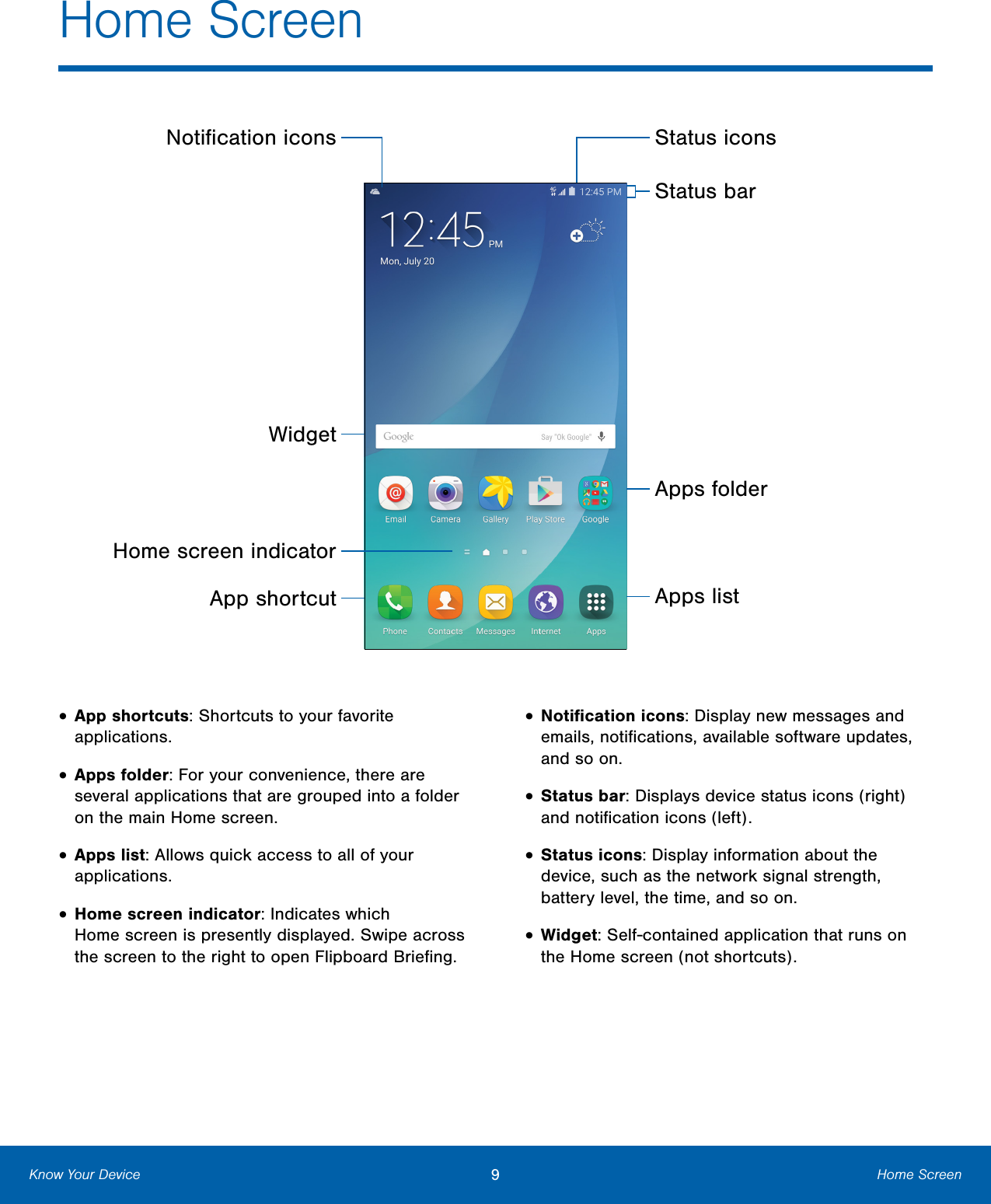
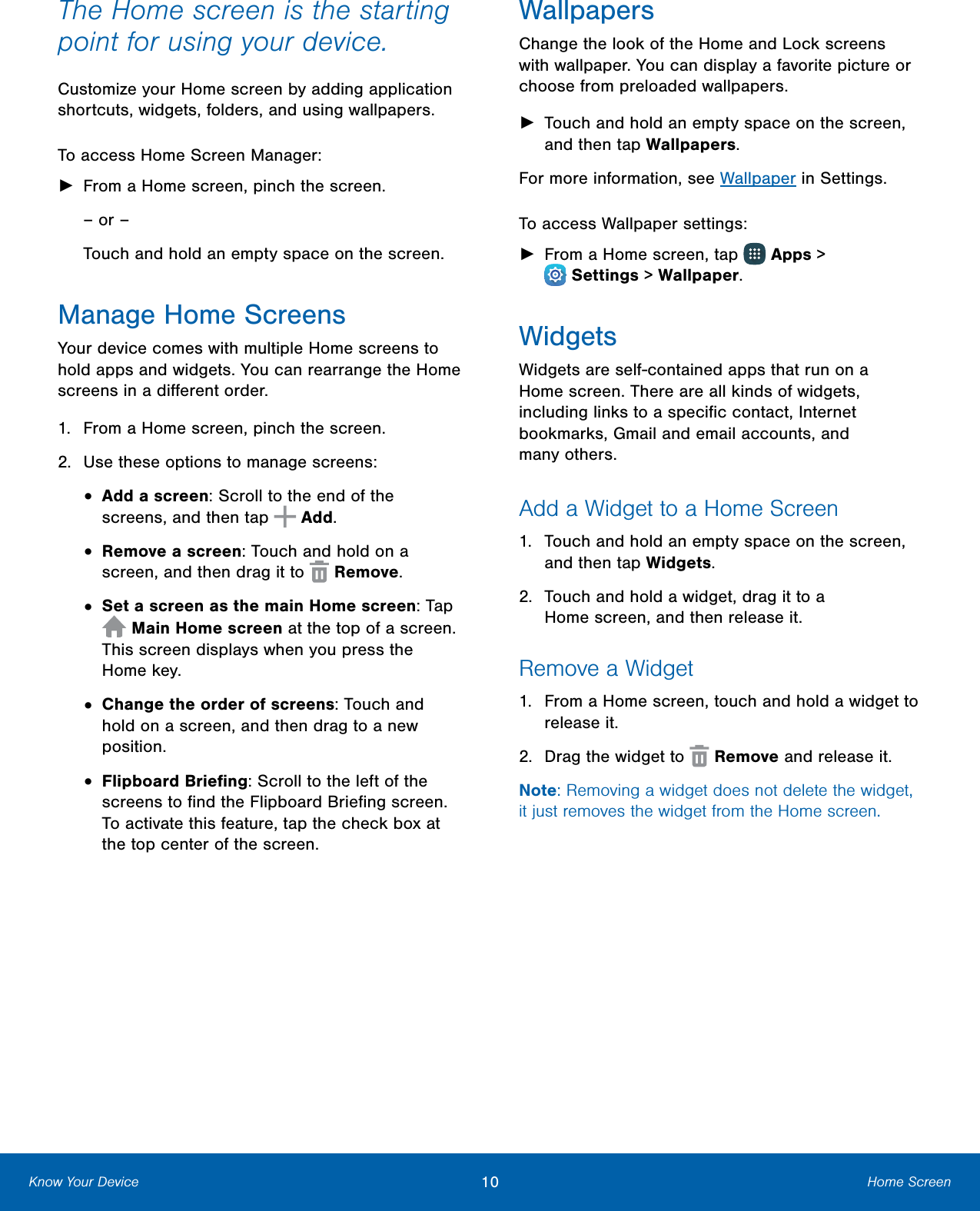
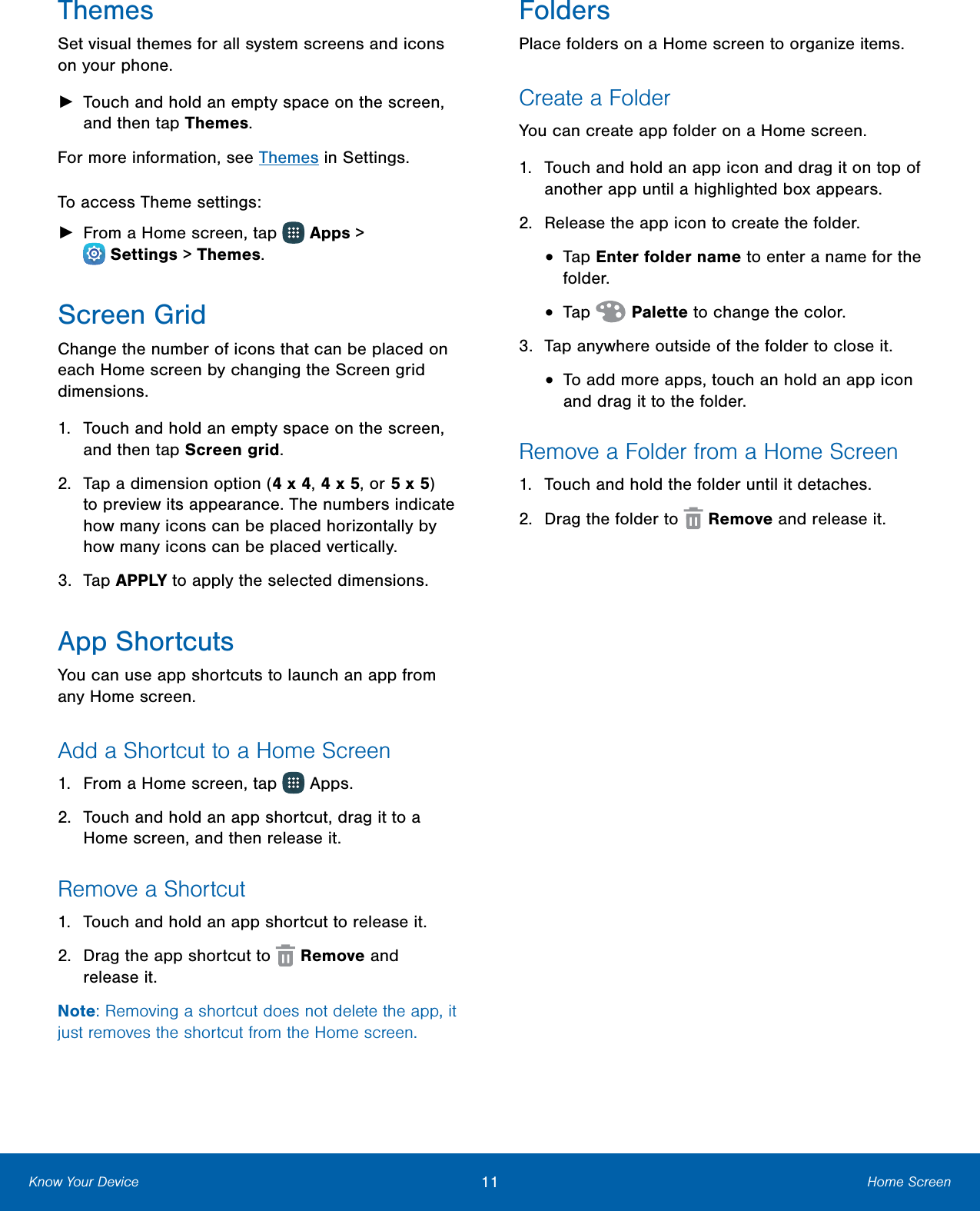
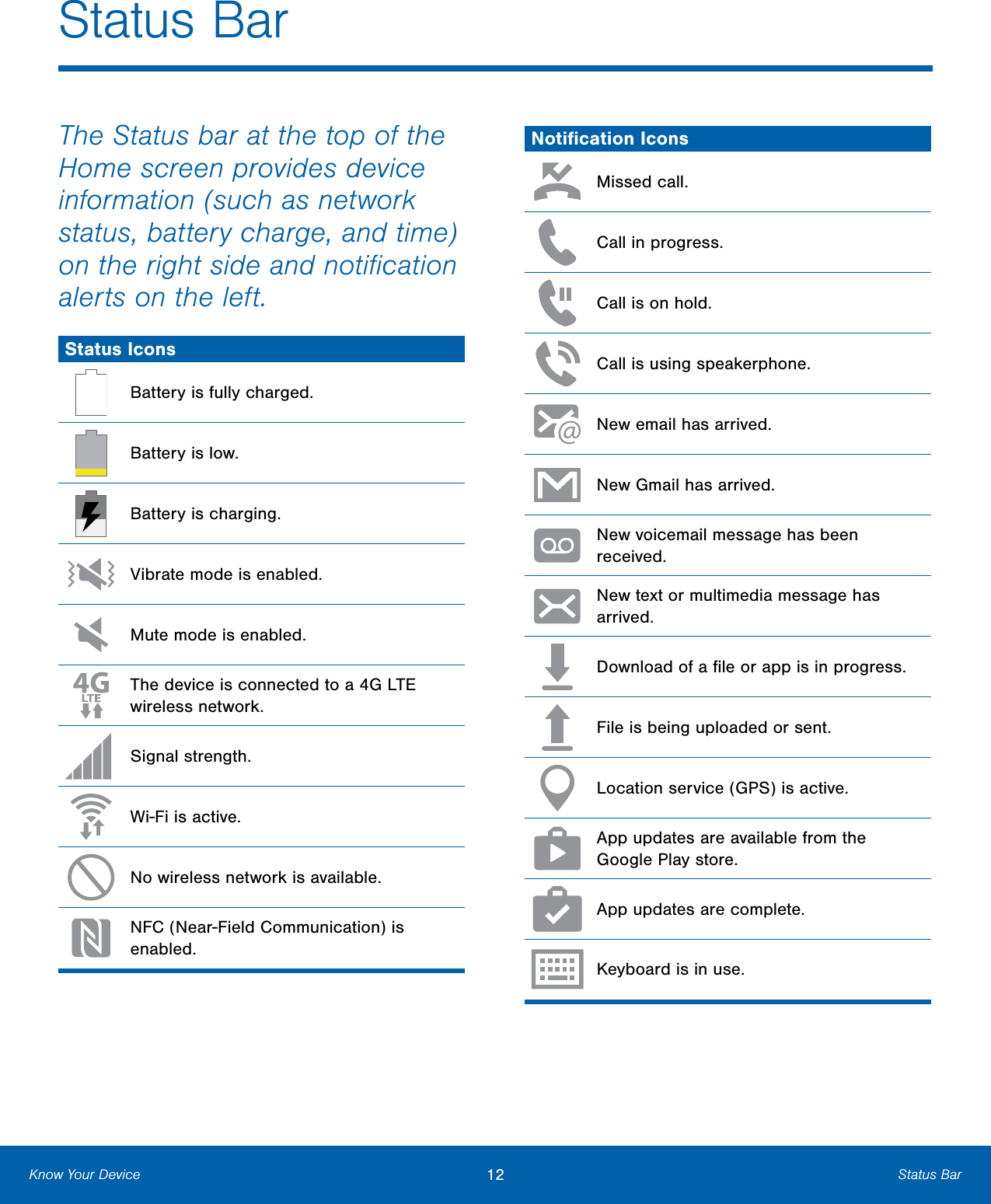
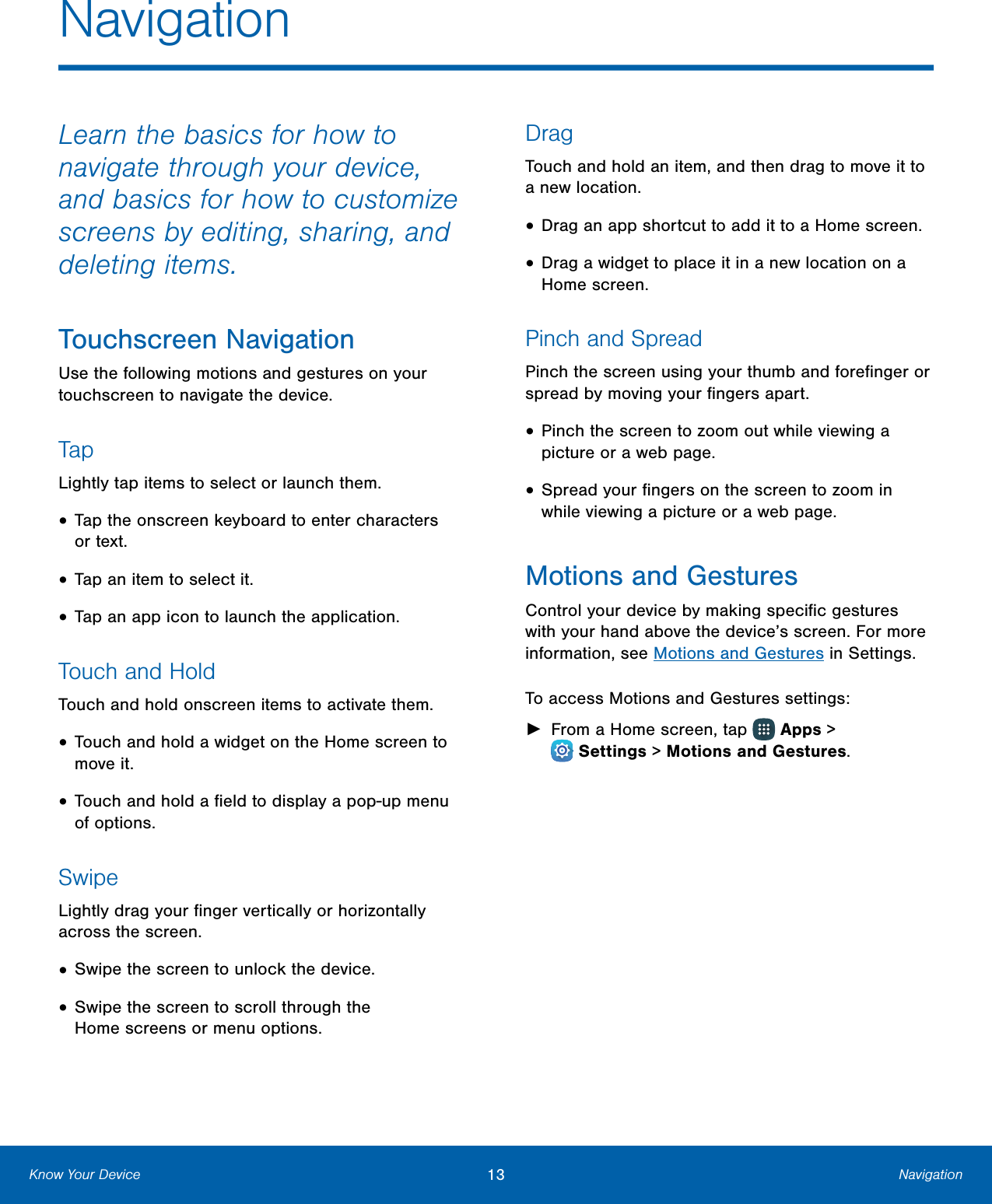
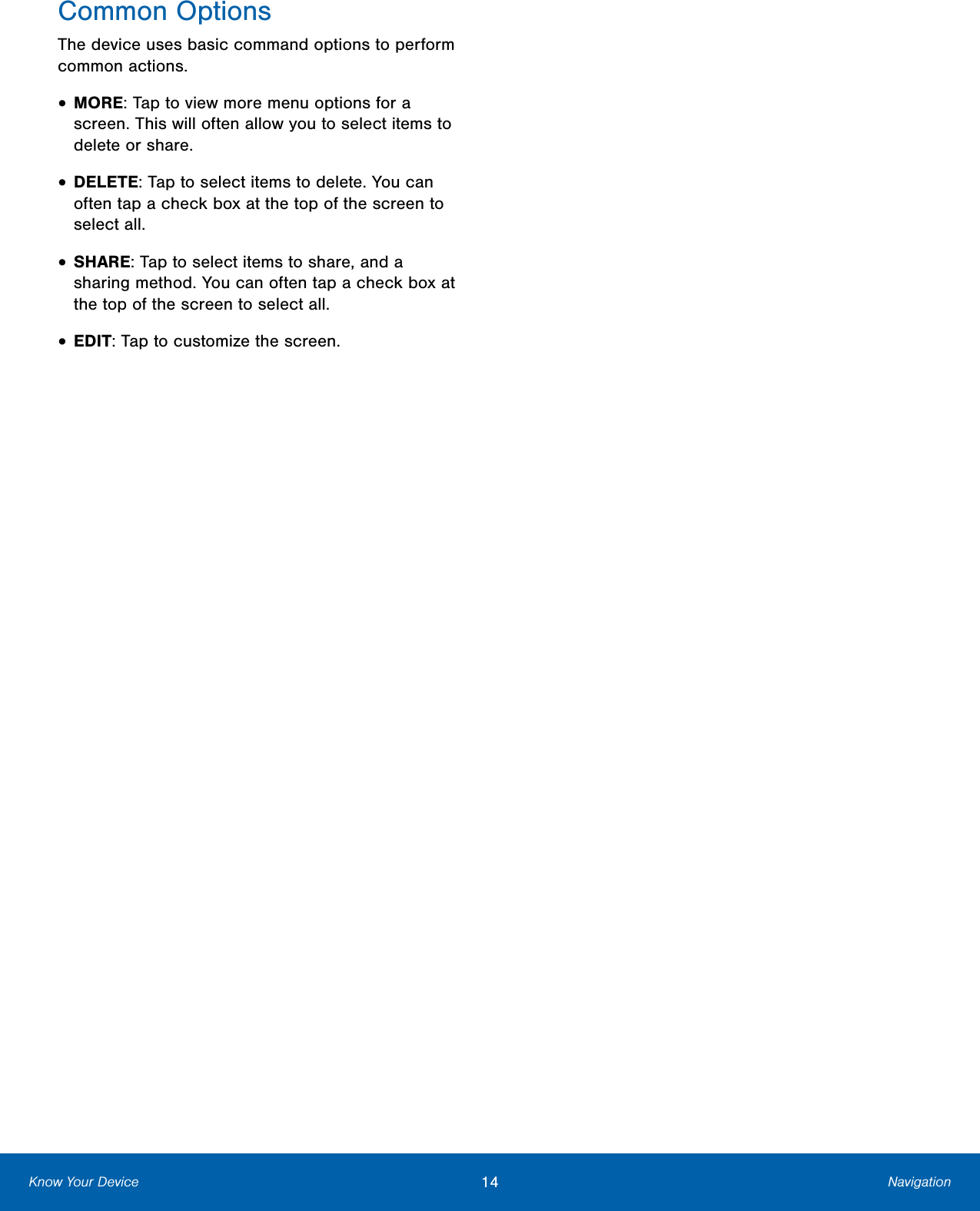
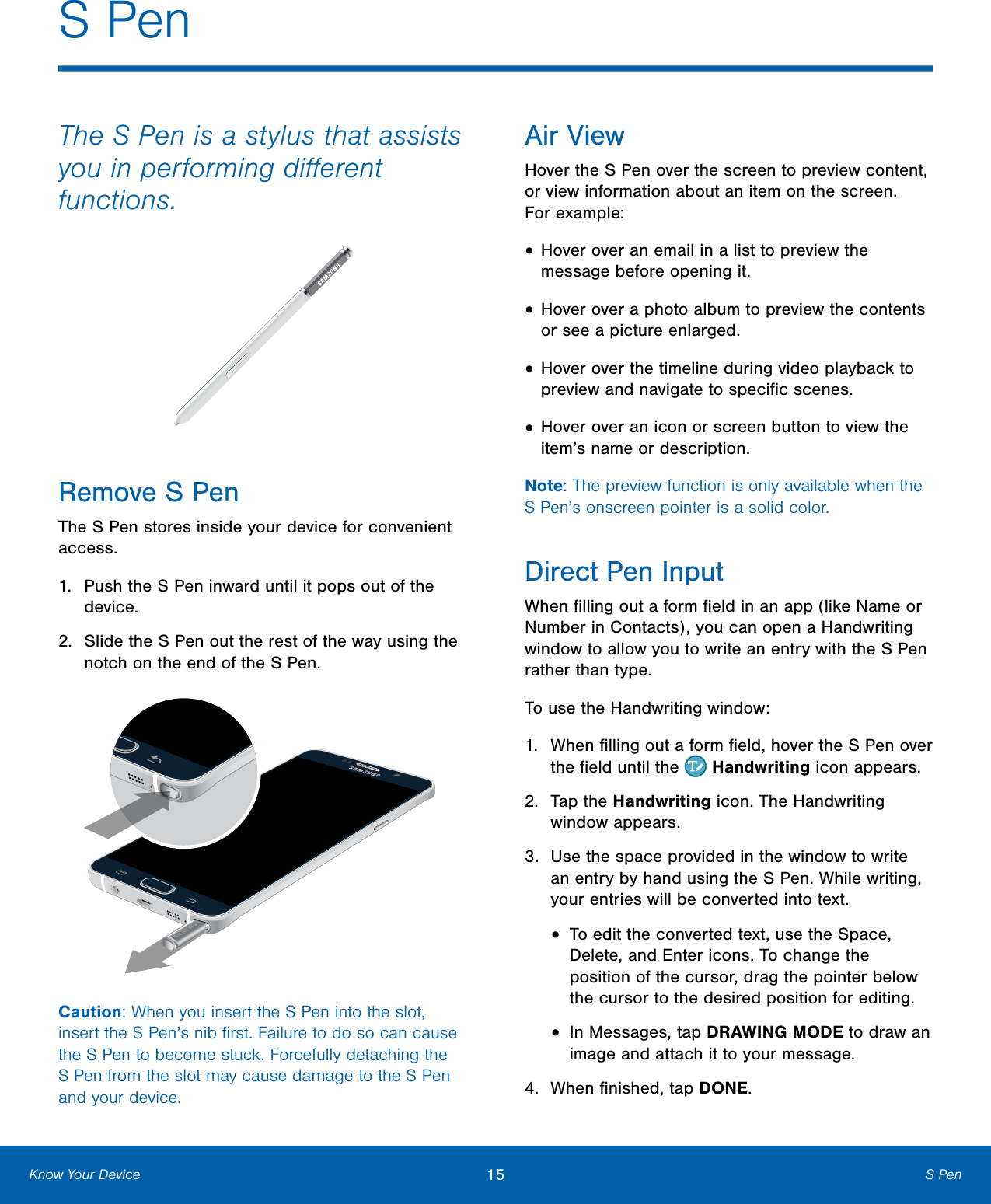
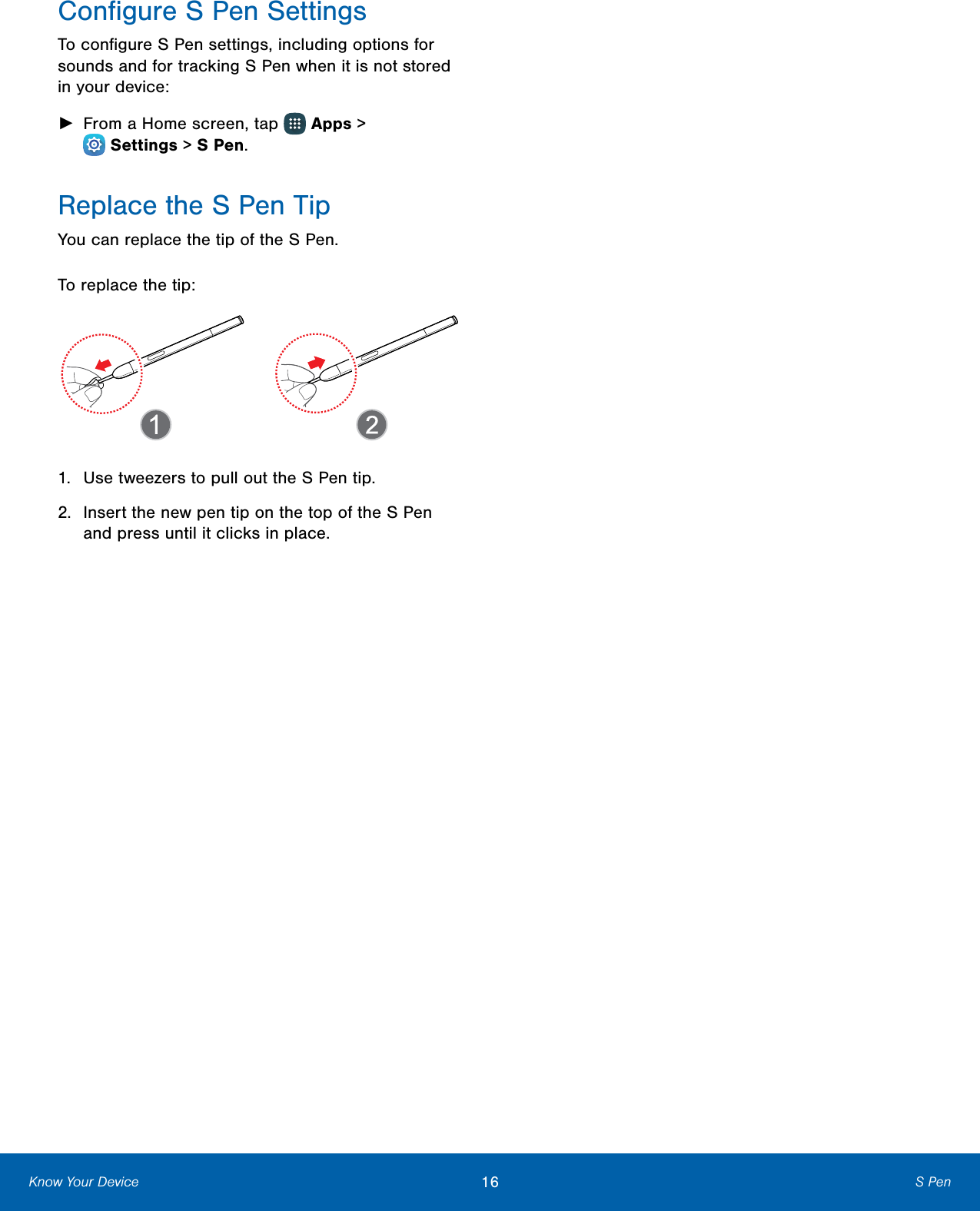
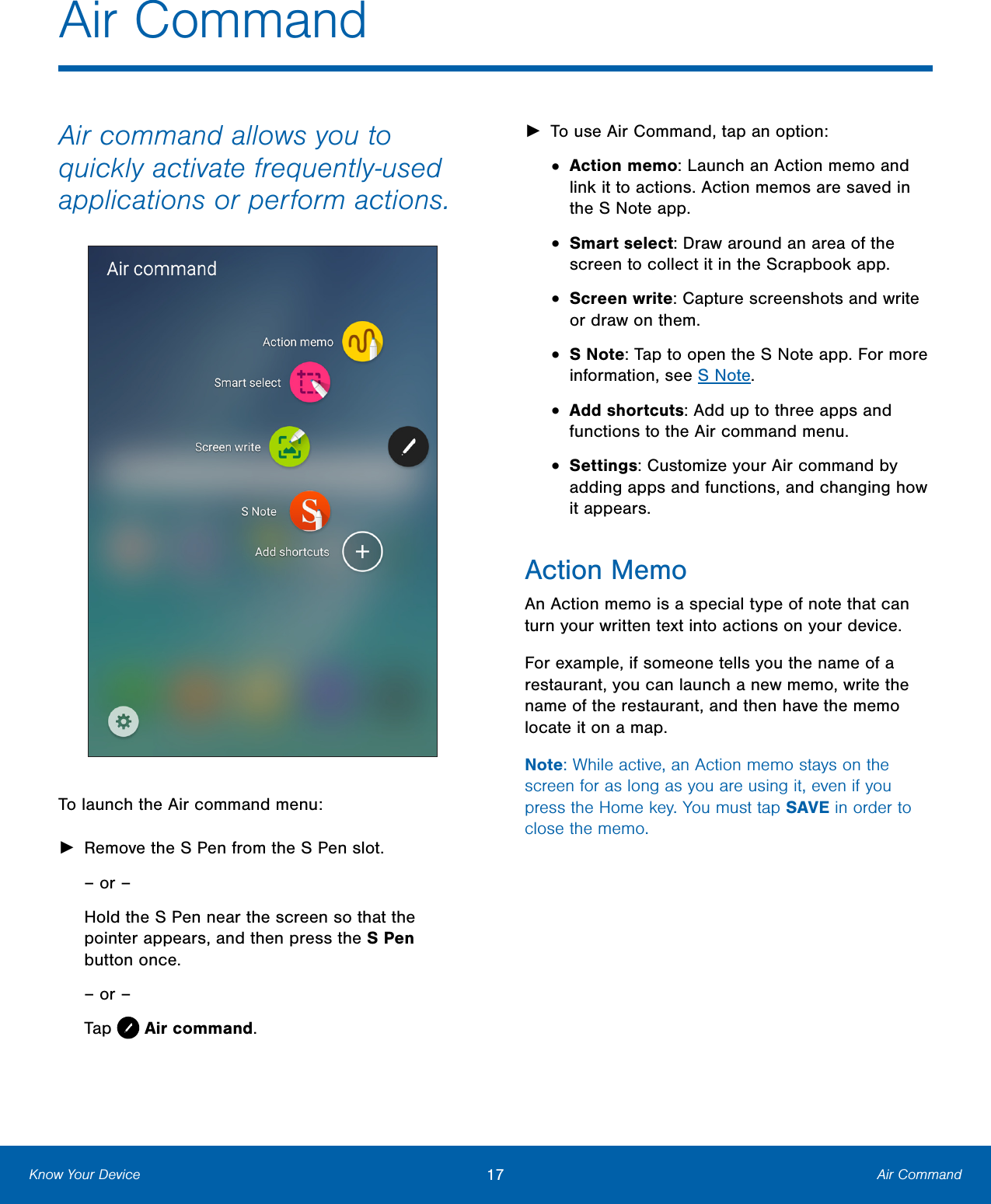
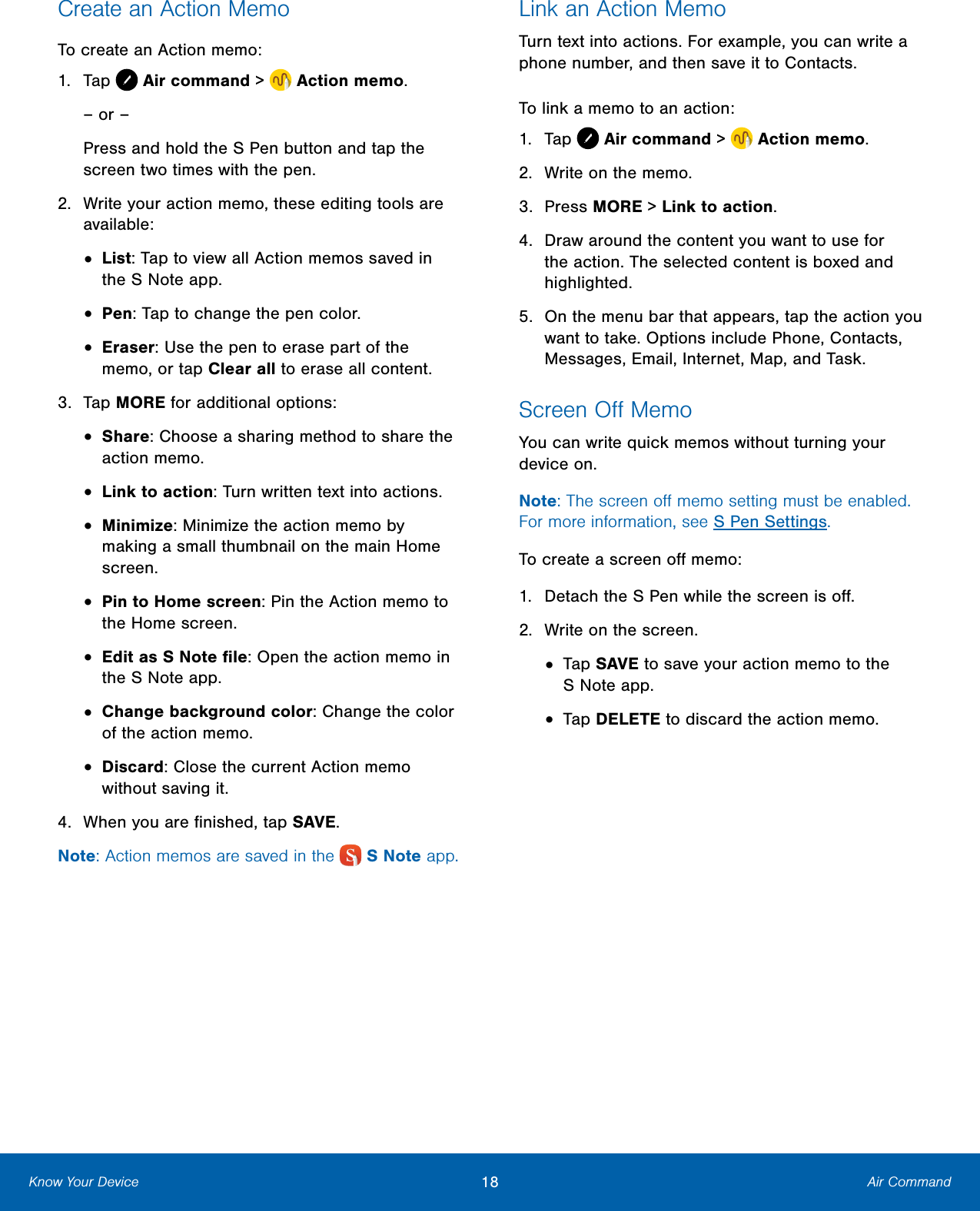
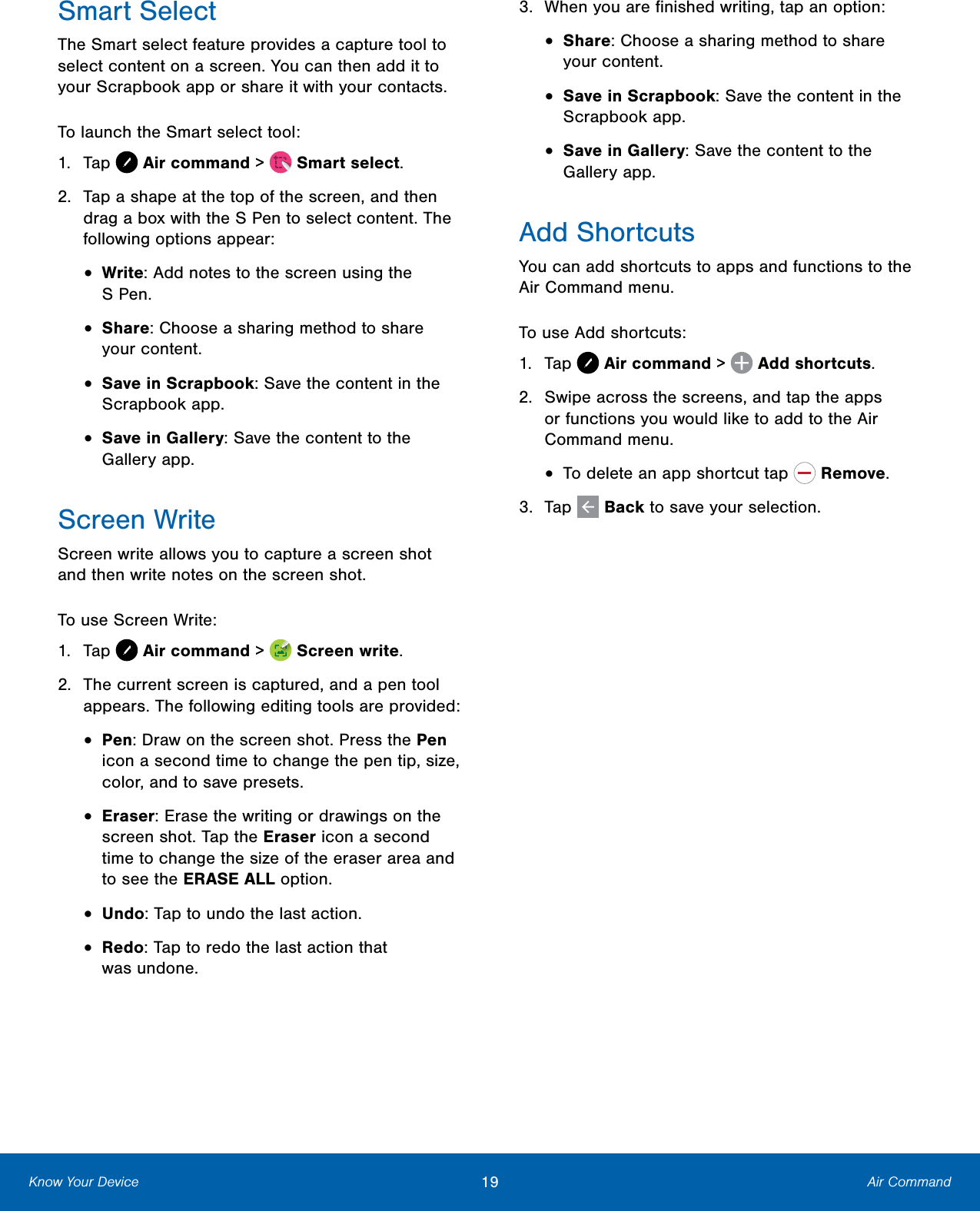
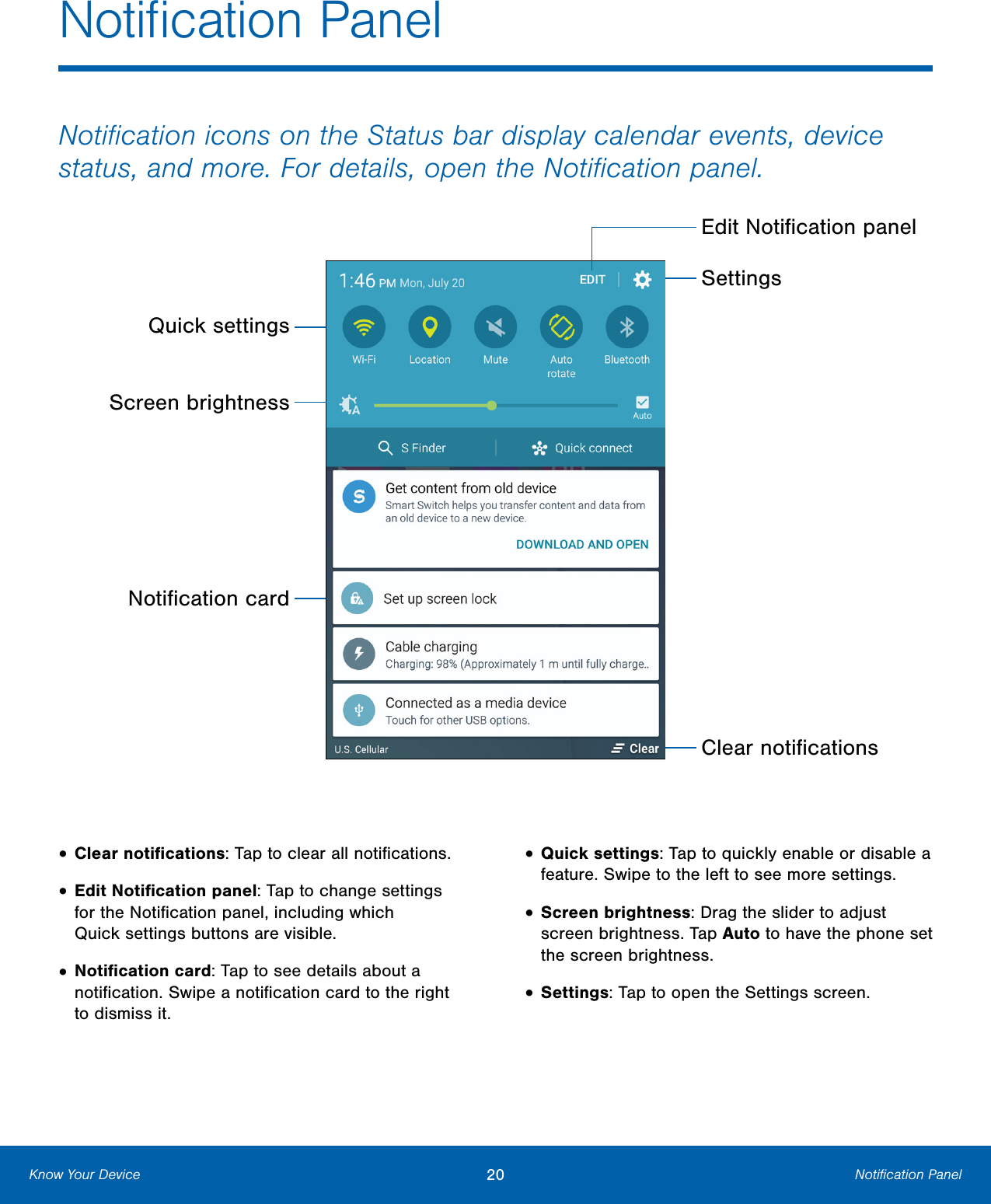
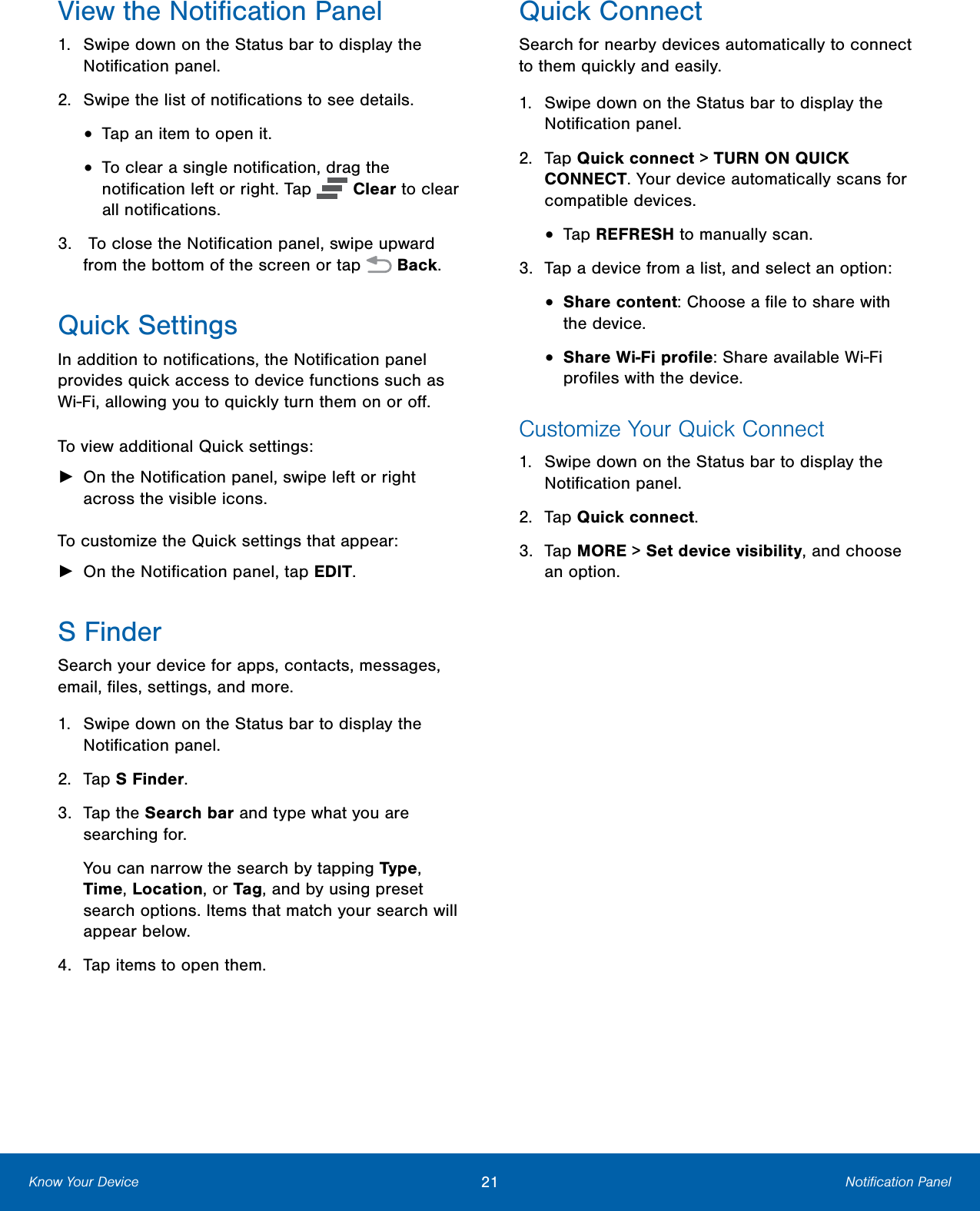
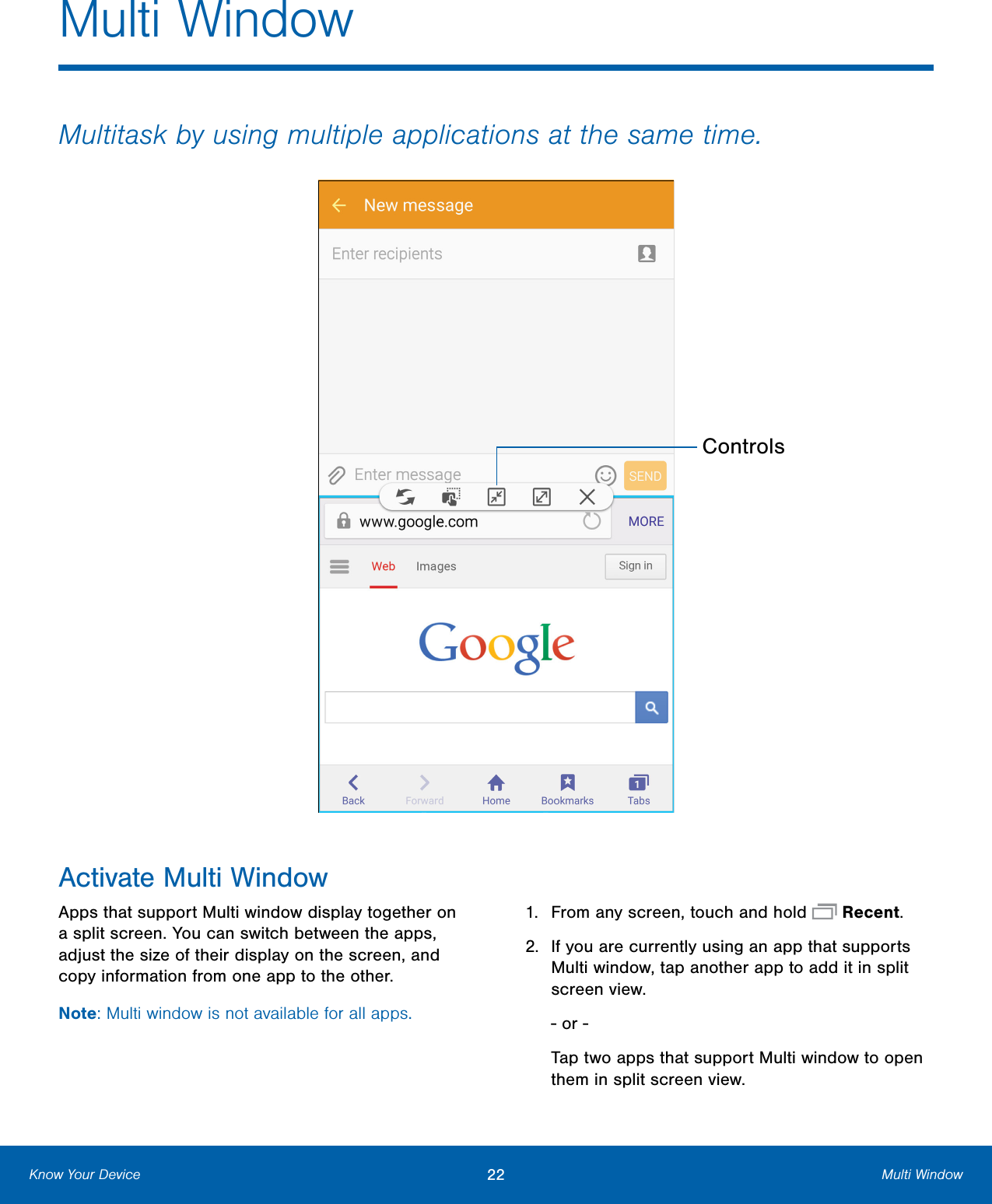
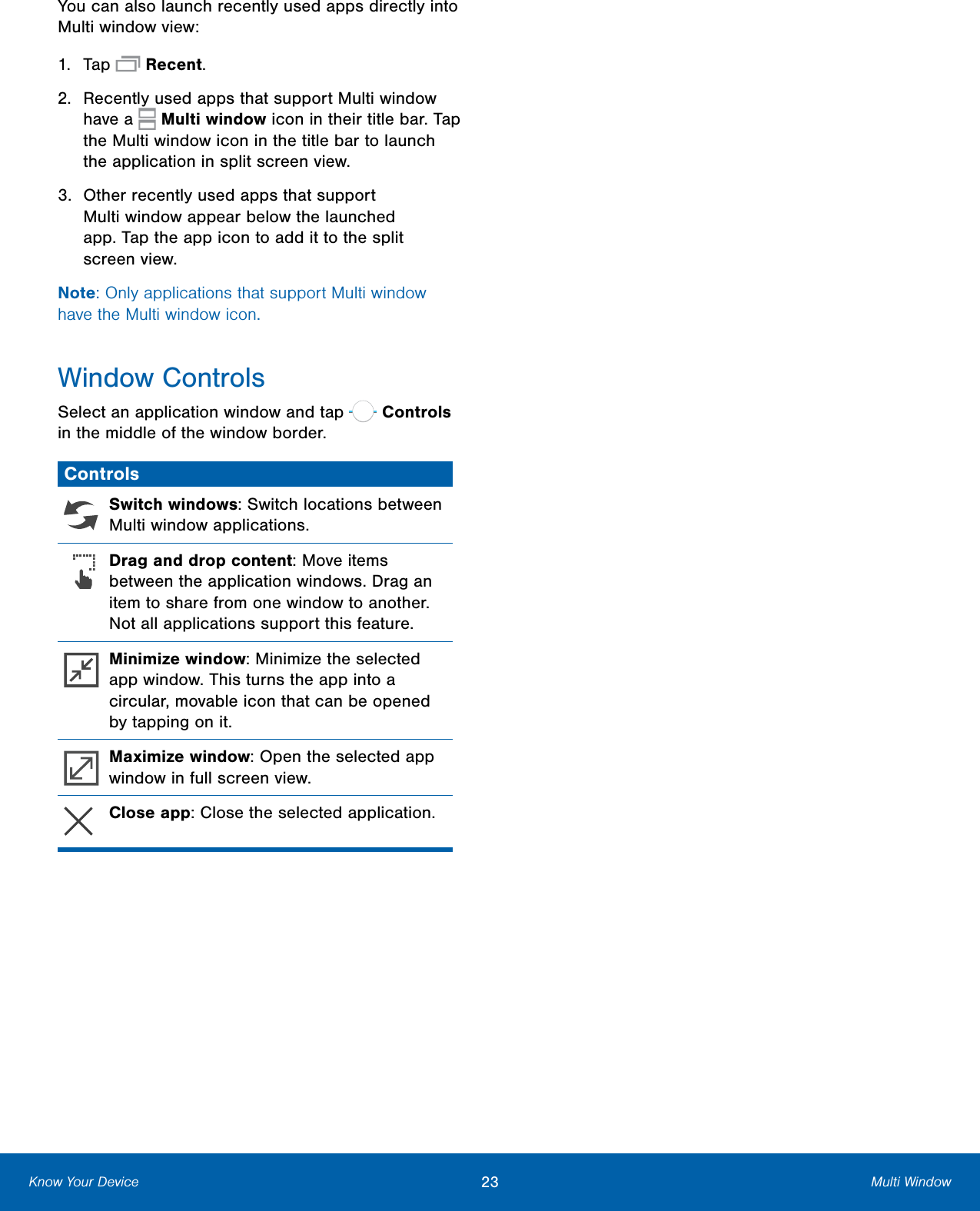
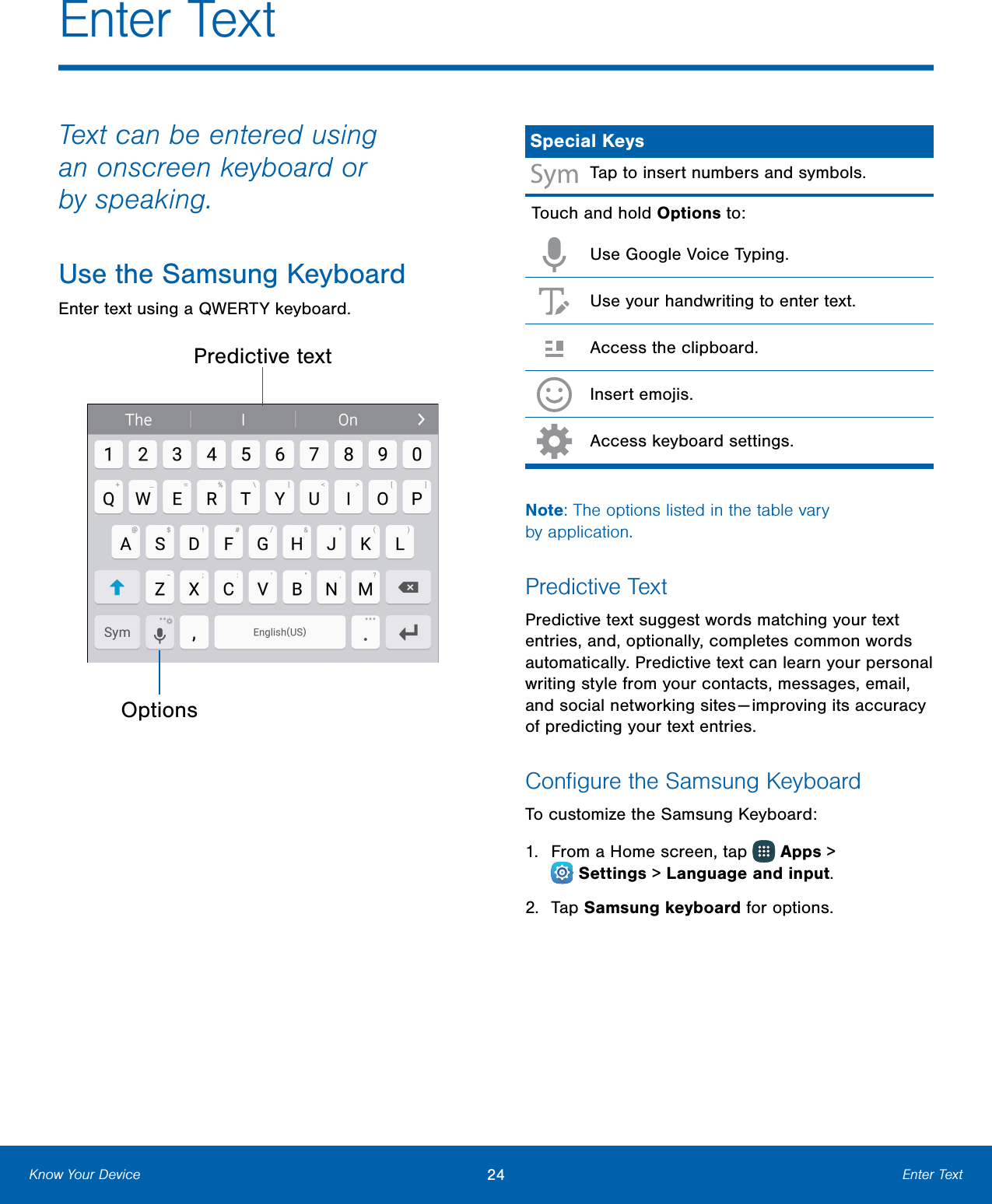
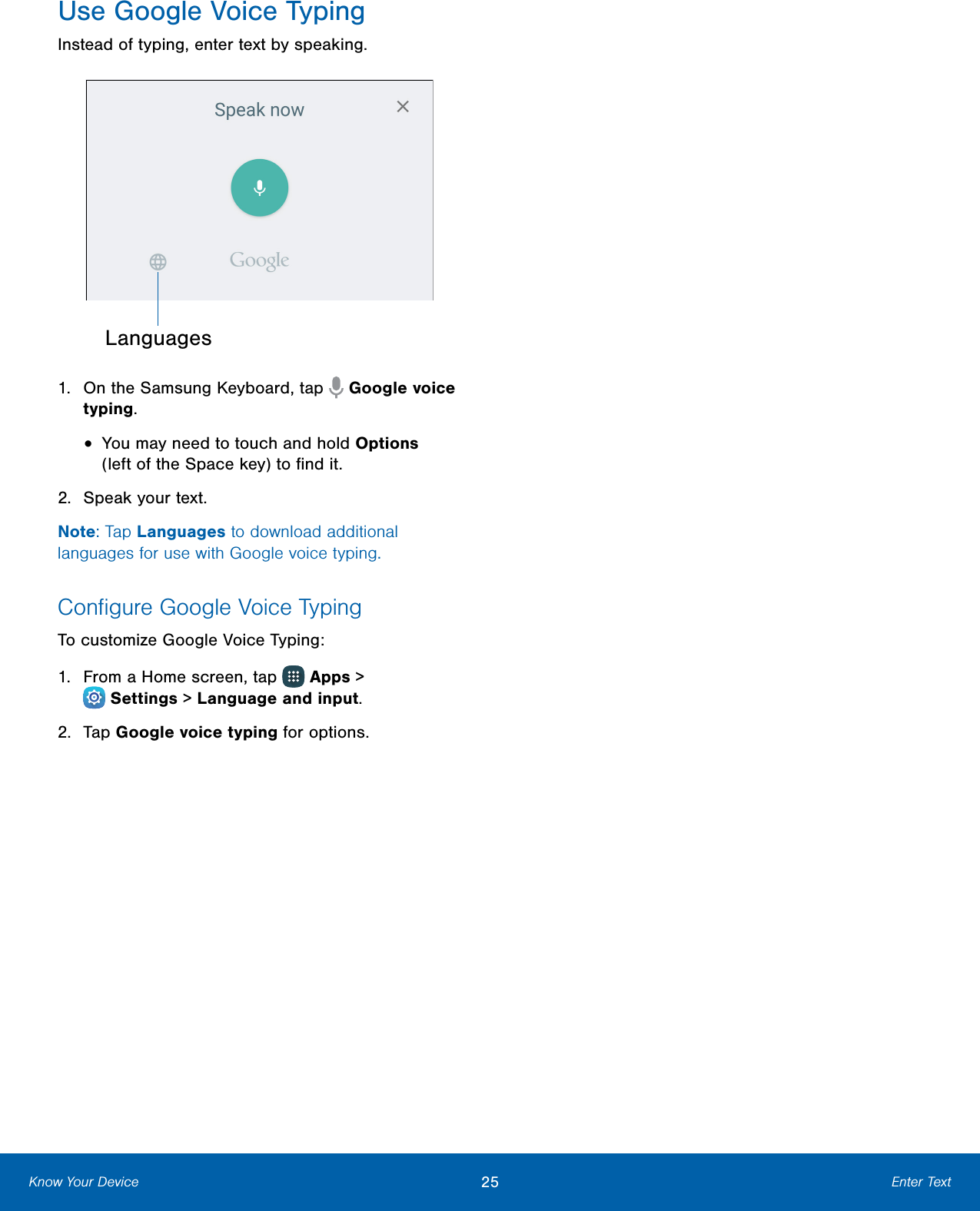

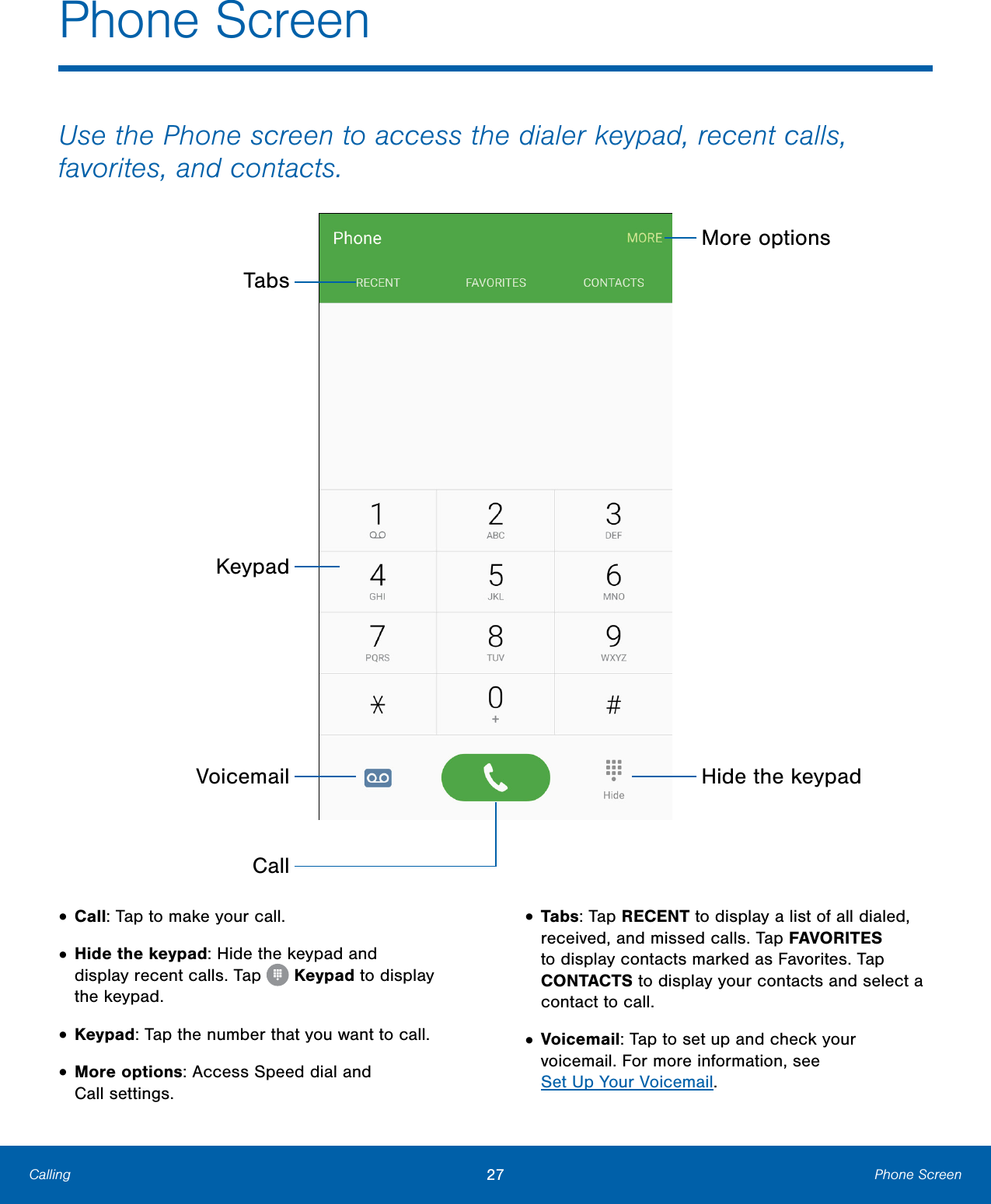
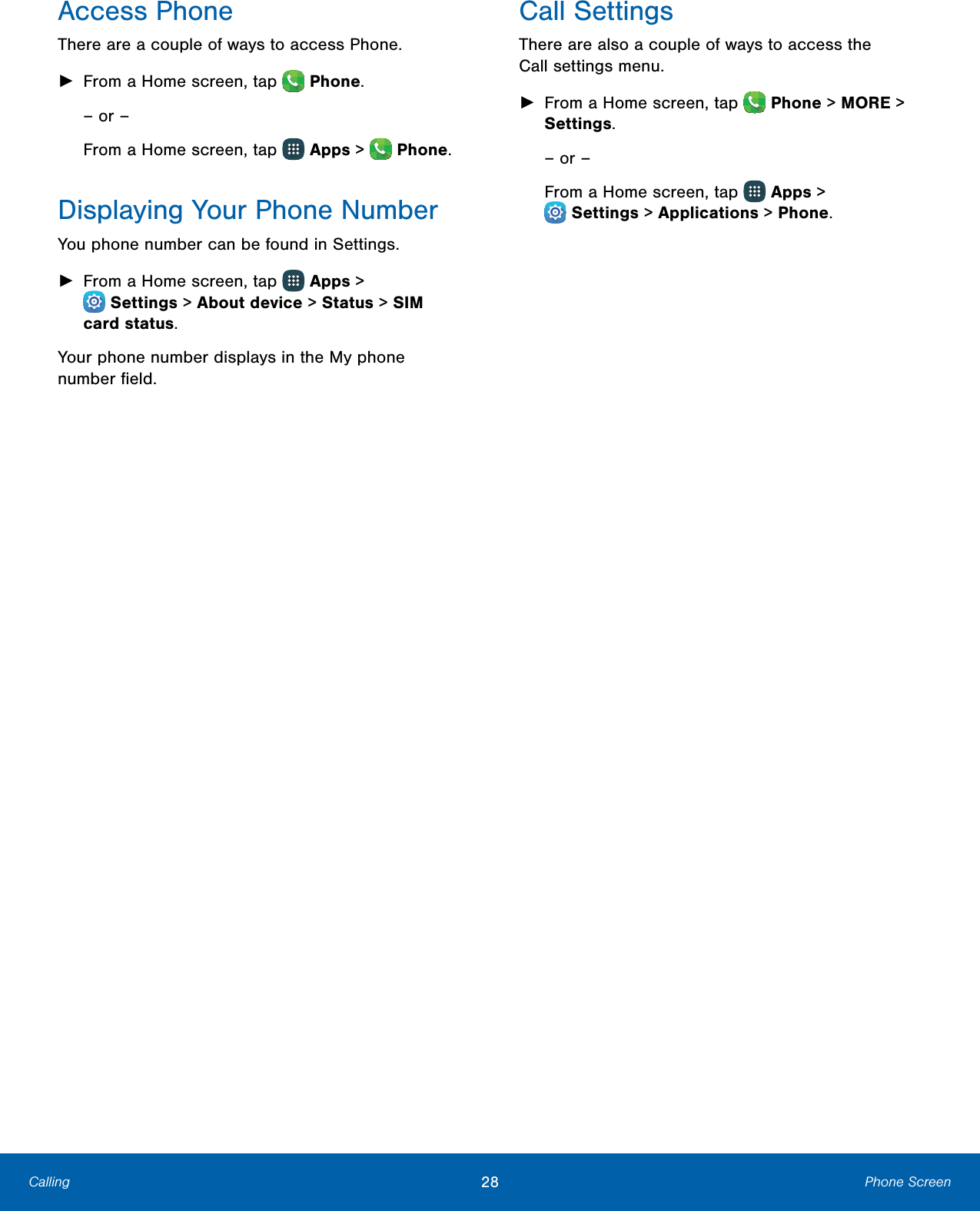
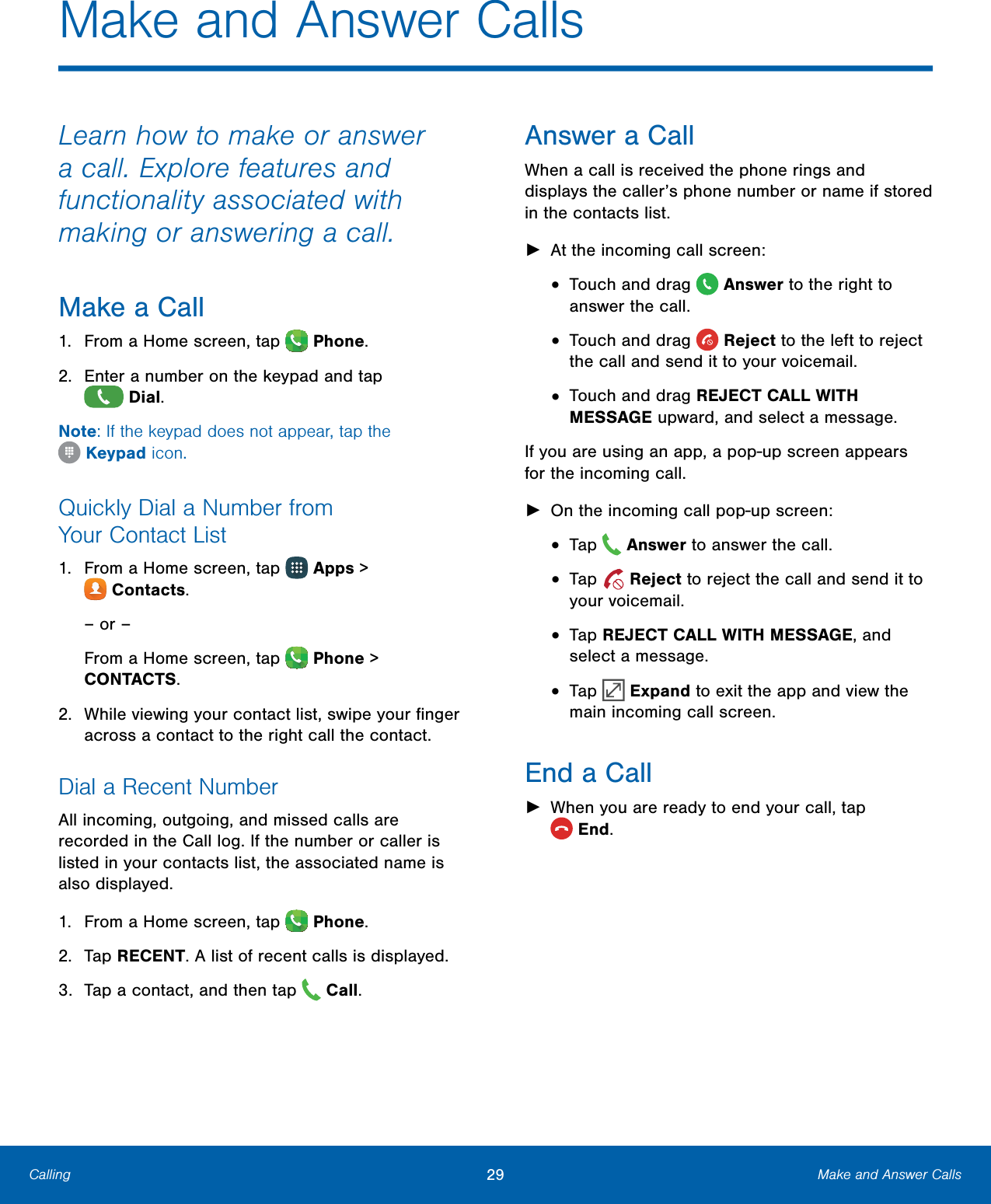
![ Multitask While on a Call If you exit the call screen and return to a Home screen, your active call is indicated by Call on the Status bar. This lets you continue with your current call and do something else, such as access the contacts list, view a recent email, locate a picture, and so on. To return to the call screen: ► Swipe the Status bar downward to reveal the Notification panel, and then tap the Callnotification. To end a call from any application: ► Swipe the Status bar downward to reveal the Notification panel, and then tap End call. Options During a Call Your phone provides a number of functions that you can use during a call. Adjust the Call Volume ► Press the Volume key to increase or decrease the volume. – or – Quickly add more volume to the incoming audio by tapping Extra volume. Listen with the Speaker or Bluetooth Headset Listen to the call using the speaker or through a Bluetoothheadset (not included). ► Tap Speaker to hear the caller using the speaker. – or – Tap Bluetooth to use a Bluetooth headset (notincluded). Place a New Call While on a Call If your service plan supports this feature, you can make another call while a call is in progress. 1. From the active call, tap Add call to dial the second call. 2. Dial the new number and tap Dial. When the call is answered: • Tap Swap to switch between the two calls. • Tap Merge to hear both callers at once (multi-conferencing). Call Waiting If your service plan supports this feature, you can answer an incoming call while you have a call in progress. You are notified of an incoming call by a call waiting tone. To answer a new call while you have a call in progress: 1. Slide Answer in any direction to answer the new call. 2. Tap an option: • Put [caller] on hold to place the previous caller on hold while you answer the new incoming call. • End call with [caller] to end the previous call and answer the new call. 3. Tap the previous On hold number entry and select Swap to switch between the two calls. This places the new caller on hold and activates the previous call. Calling 30 Make and Answer Calls](https://usermanual.wiki/Samsung-Electronics-Co/SMN920R4/User-Guide-2802244-Page-35.png)
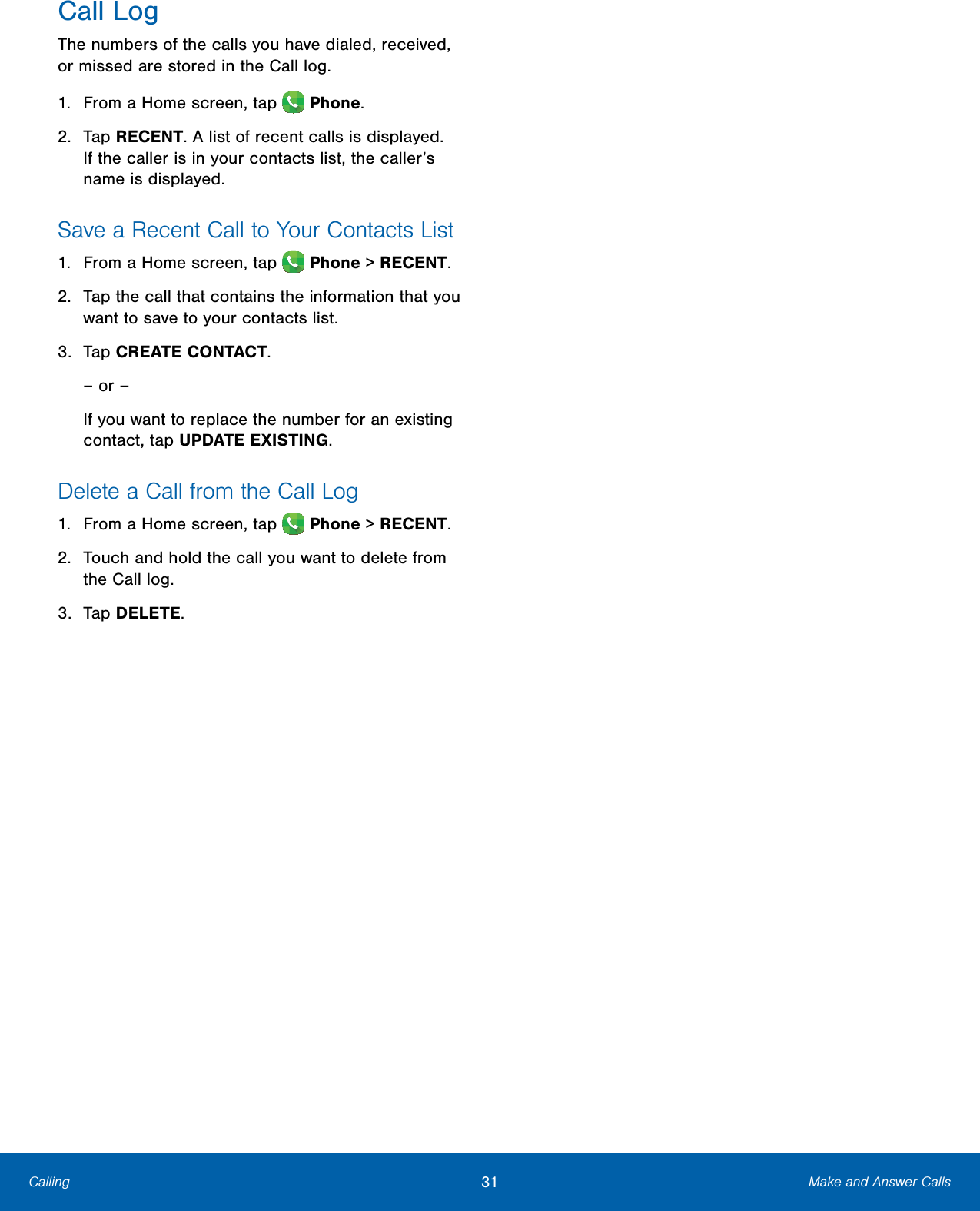
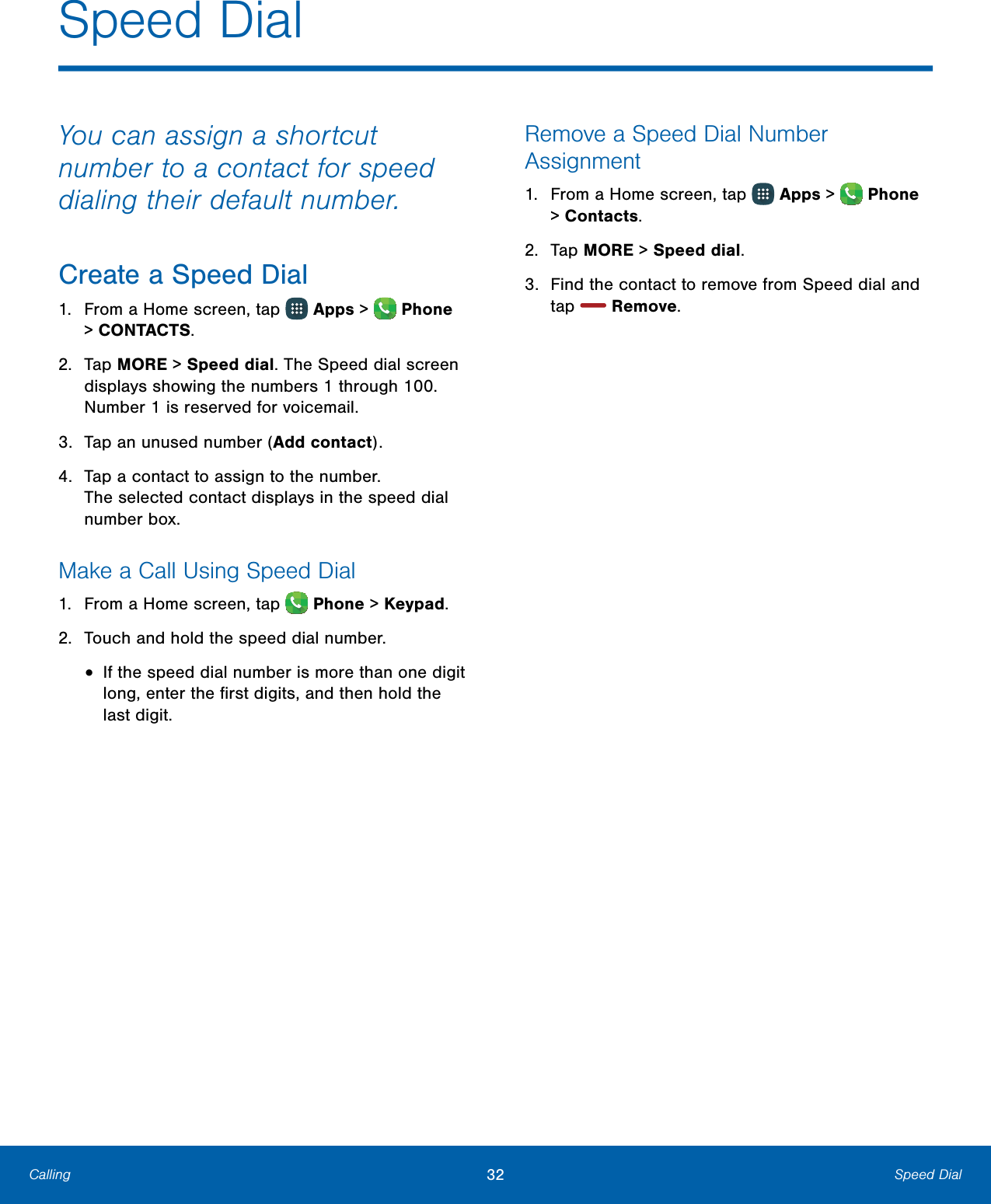
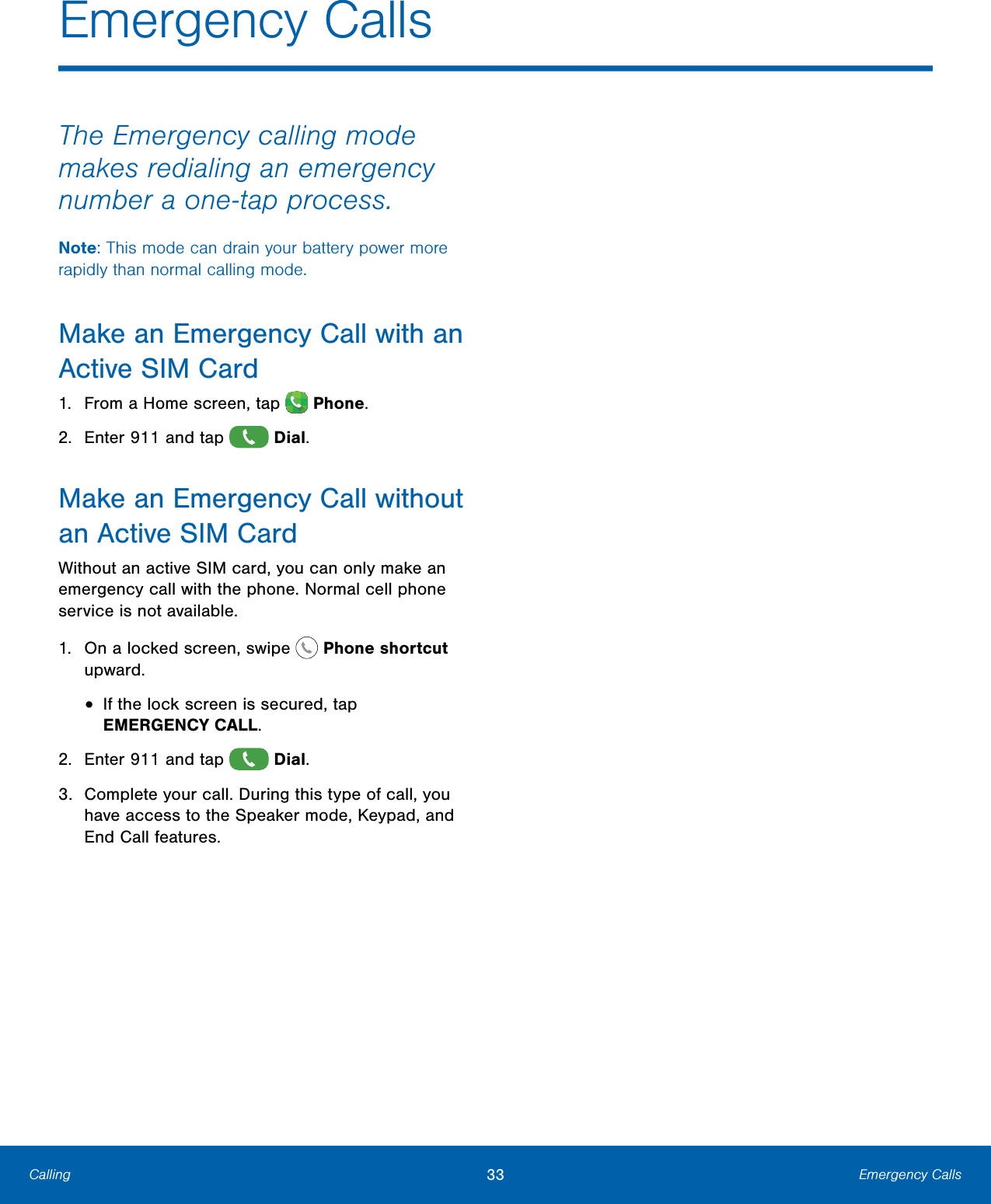
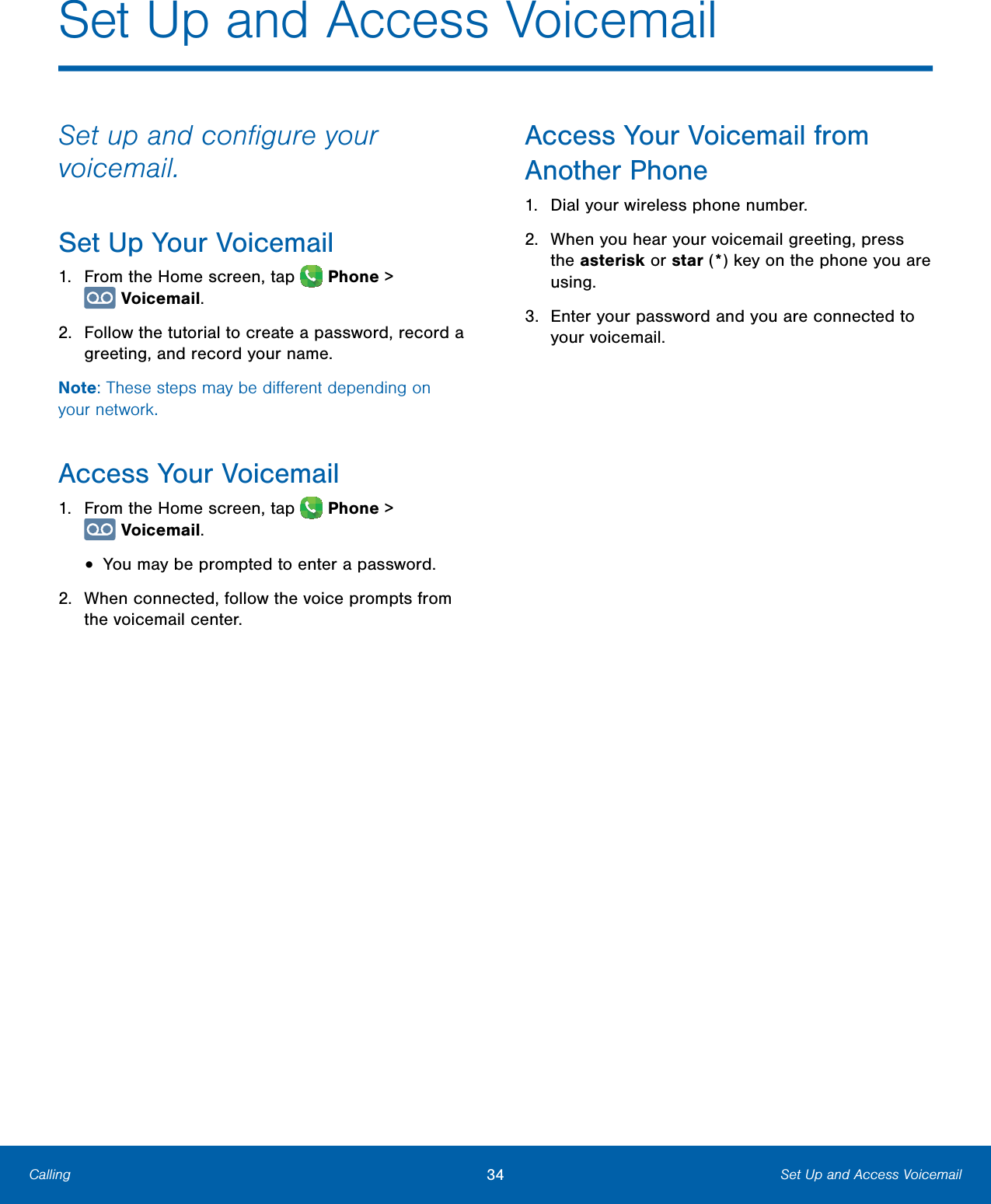
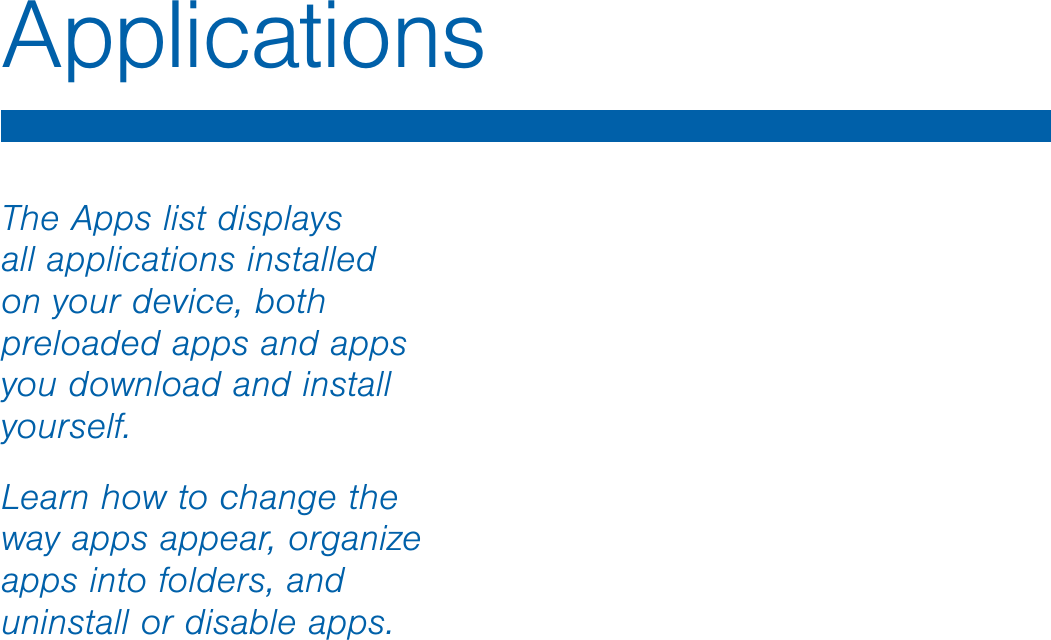
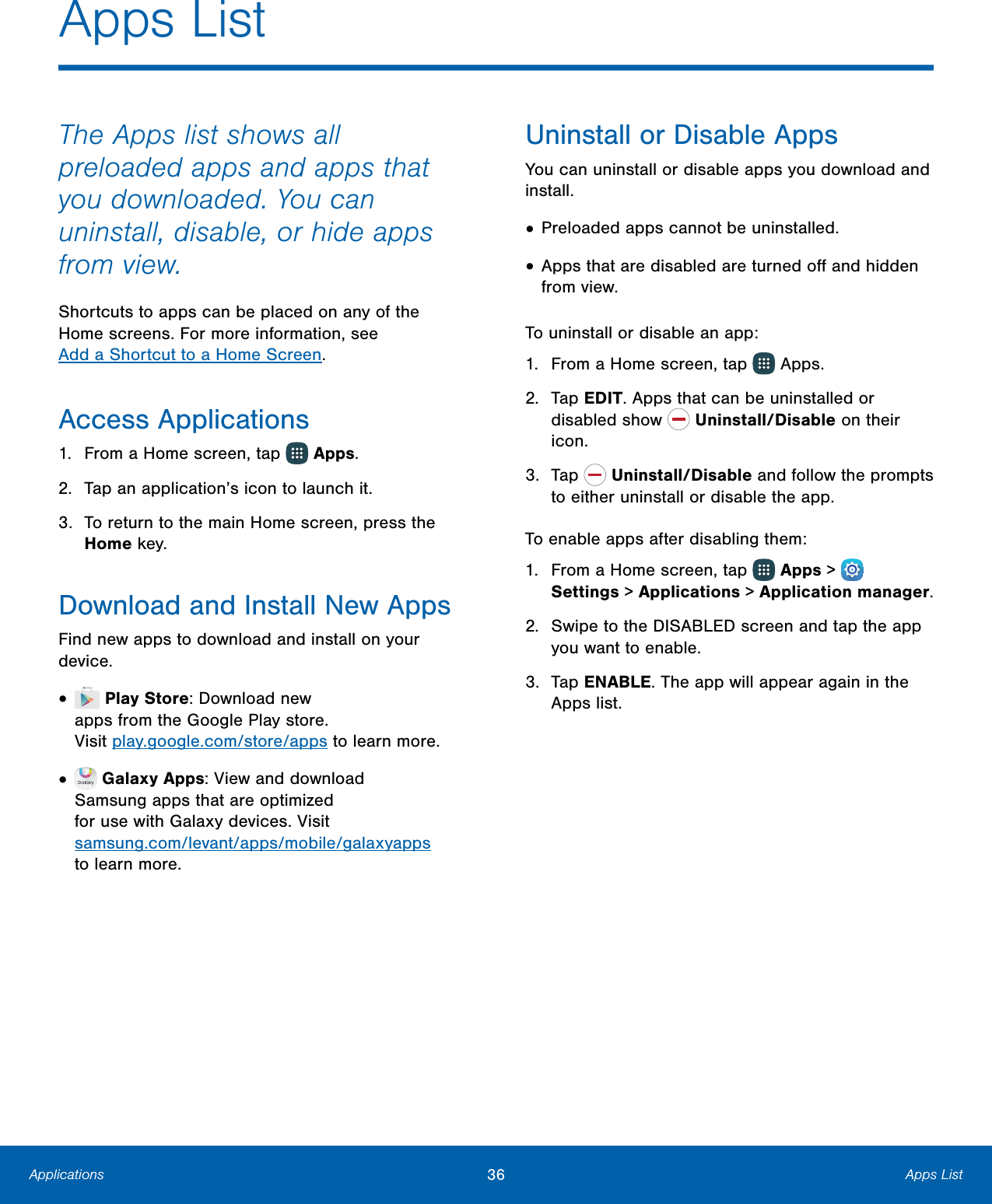
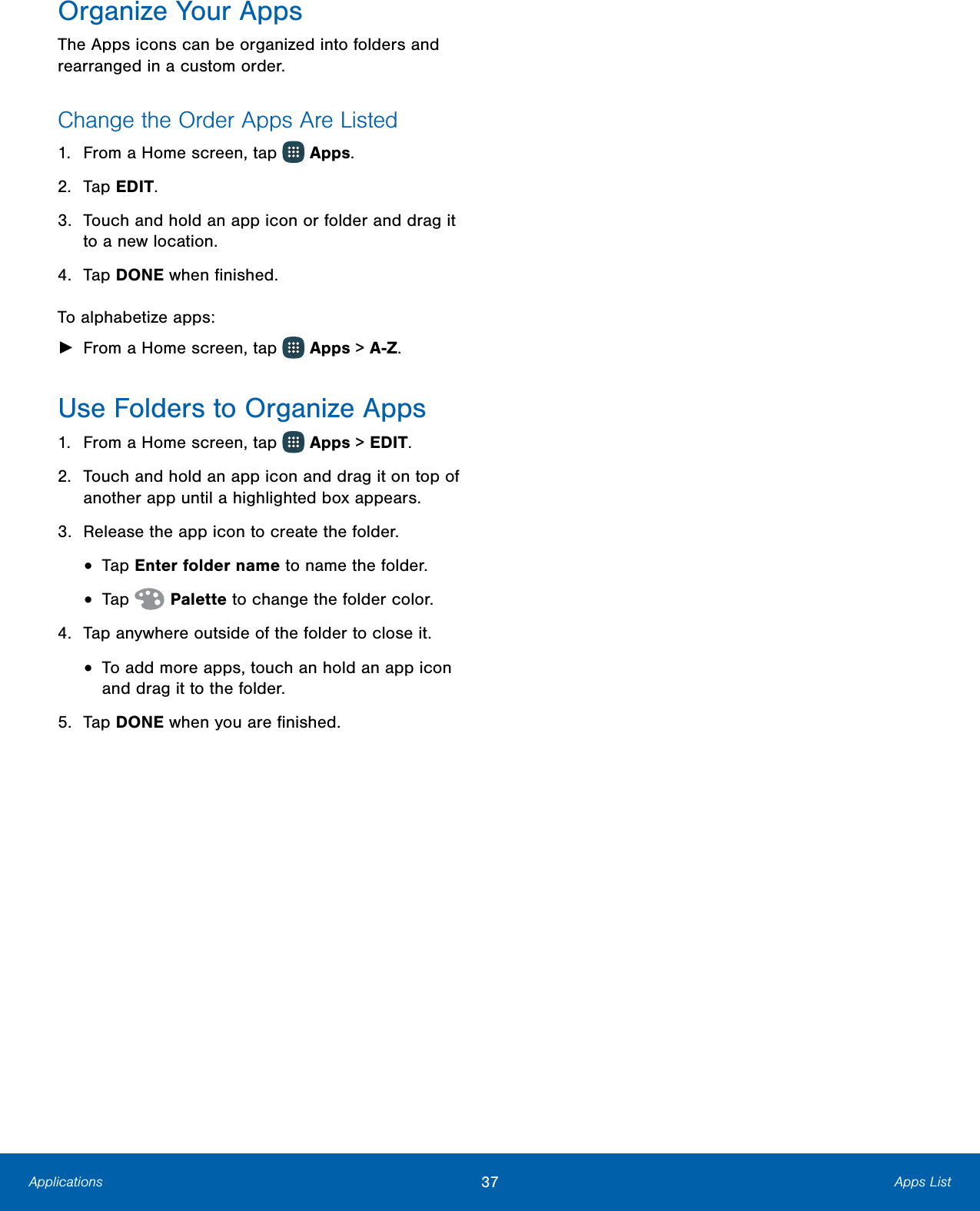
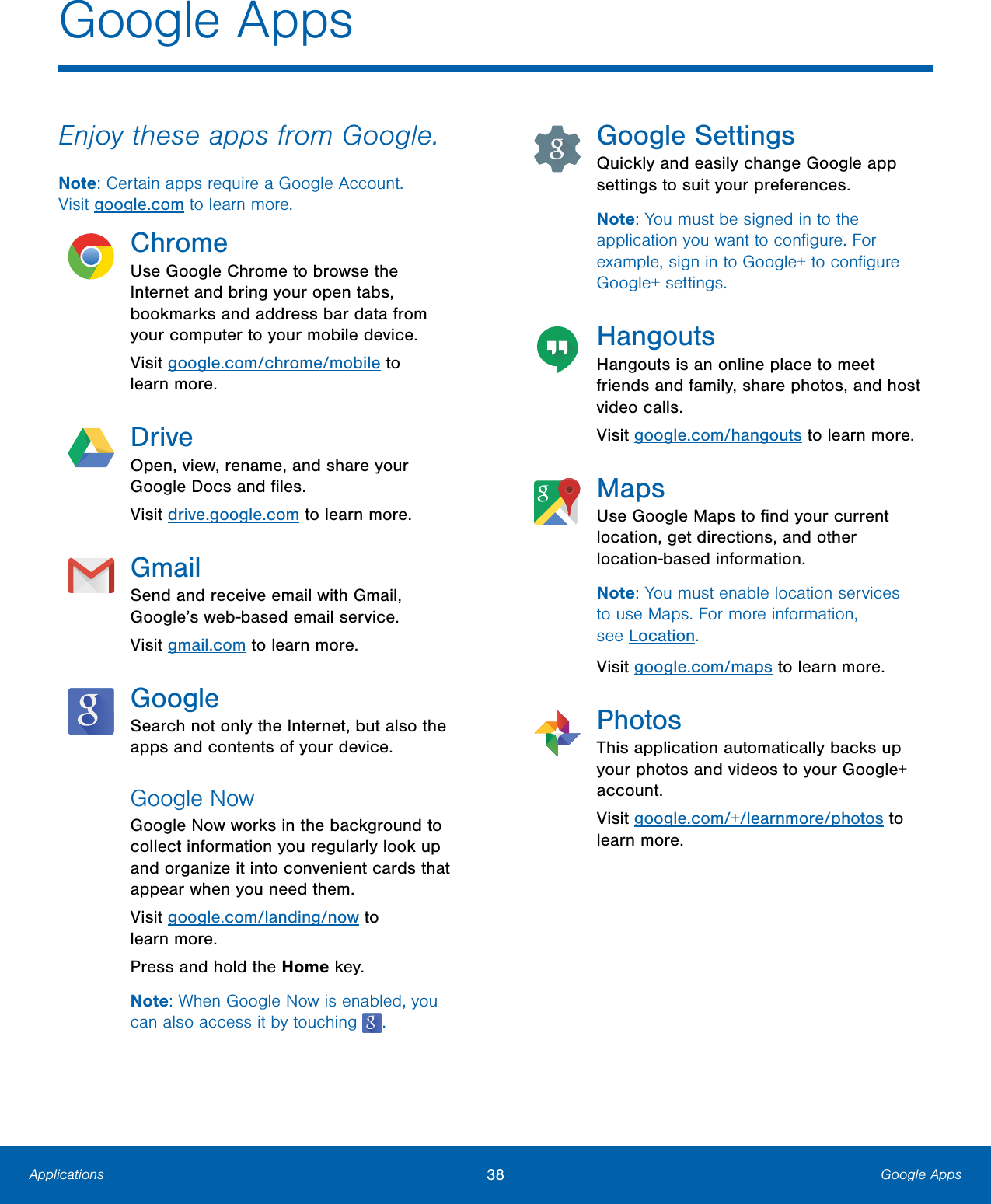
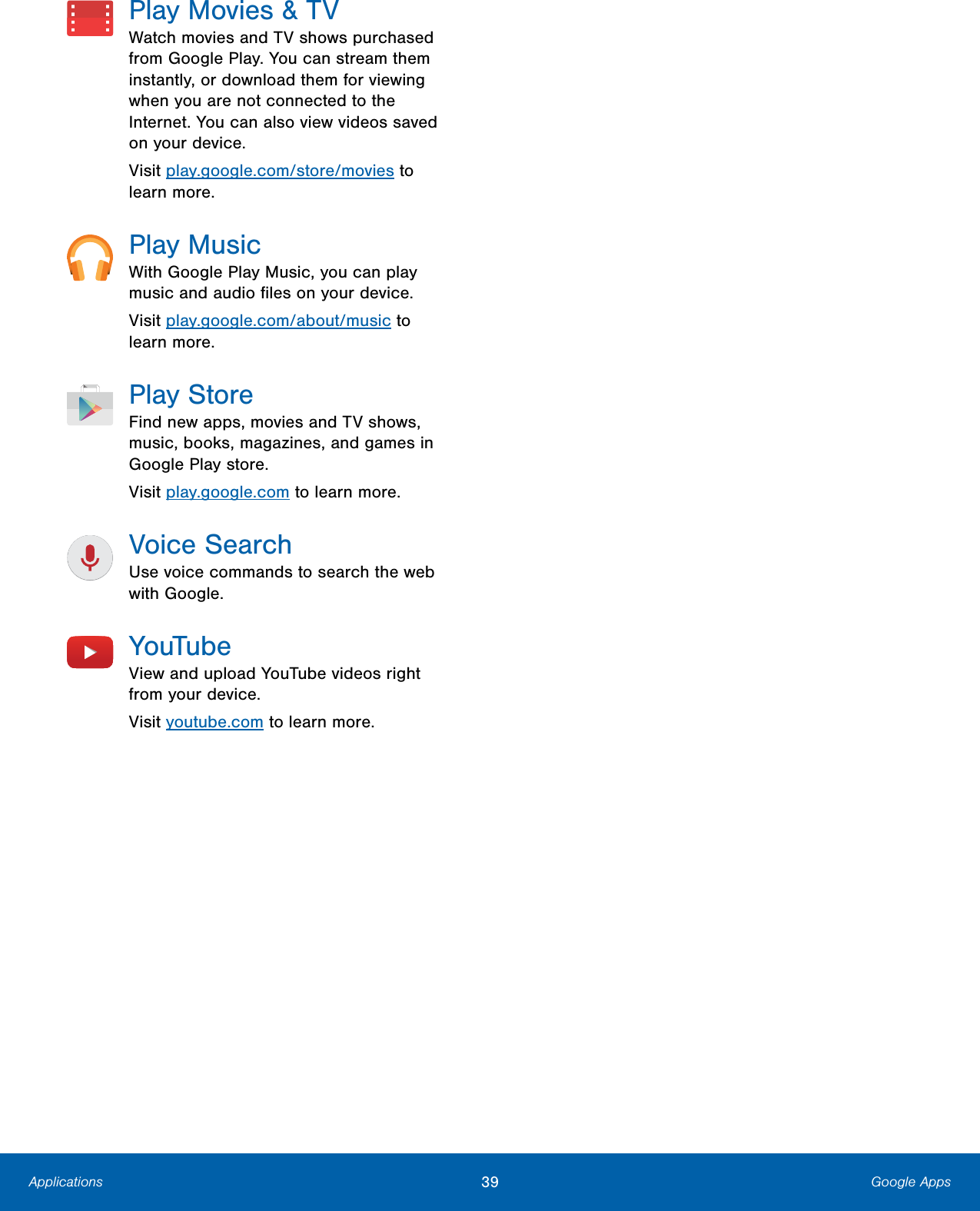
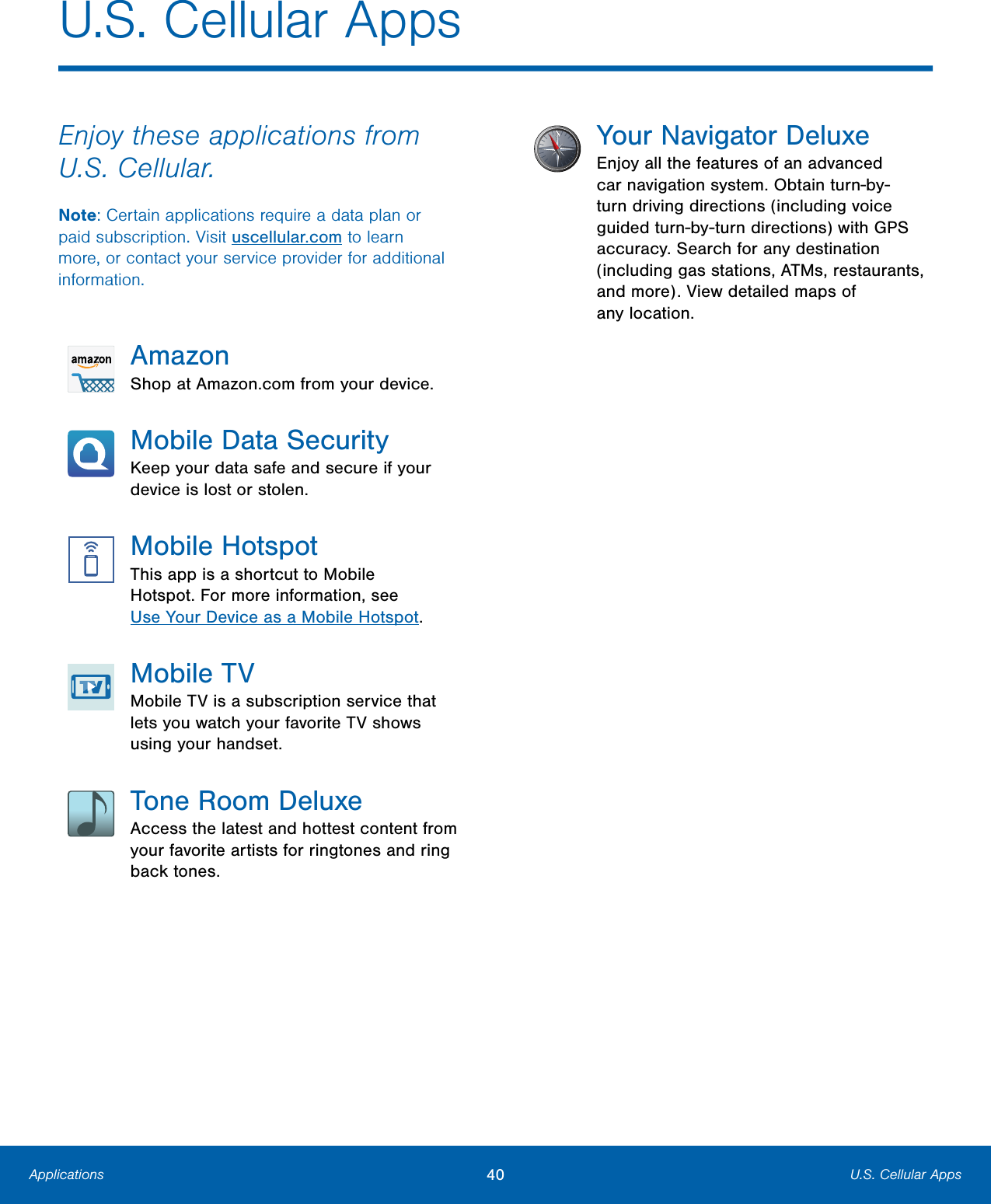
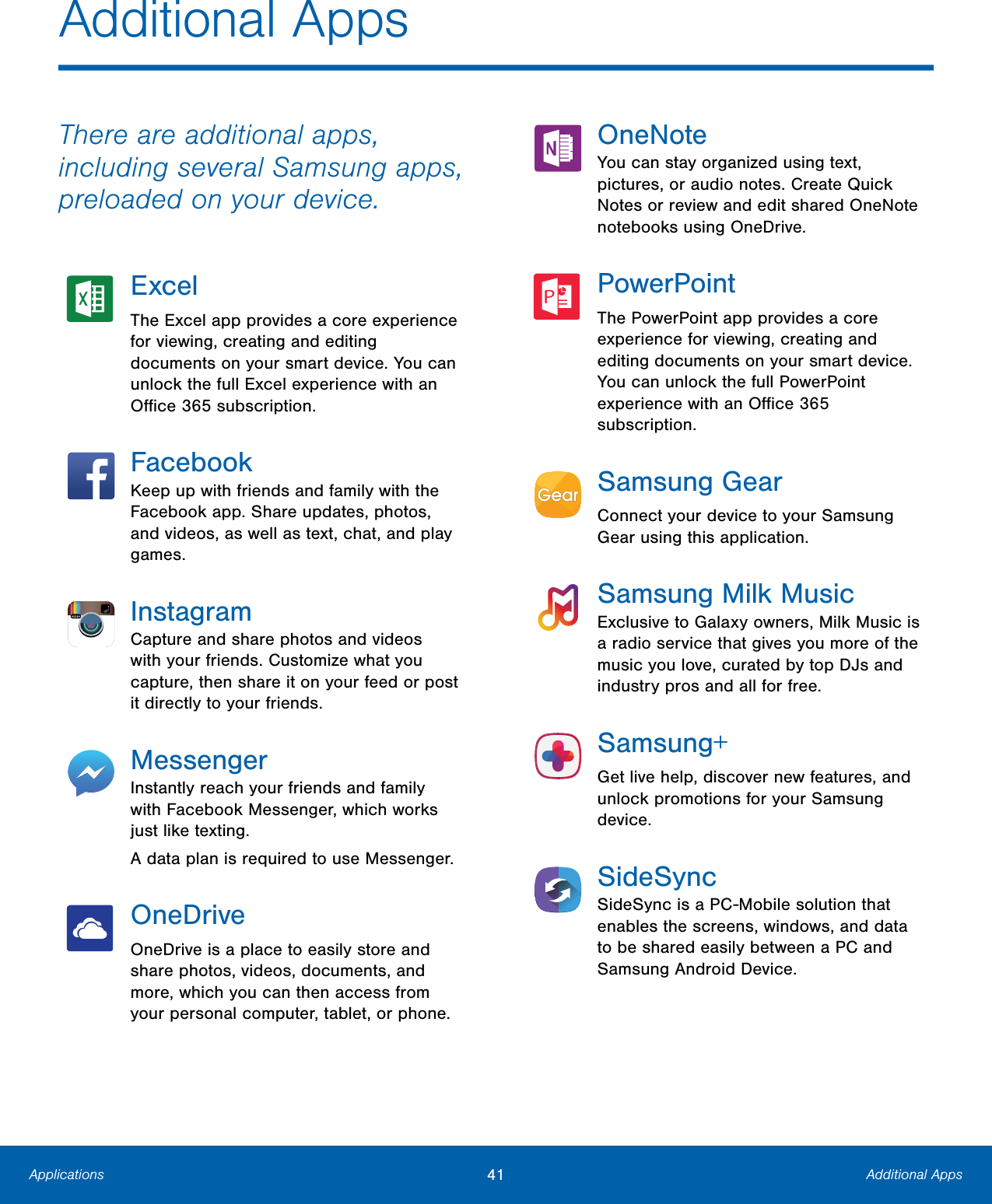
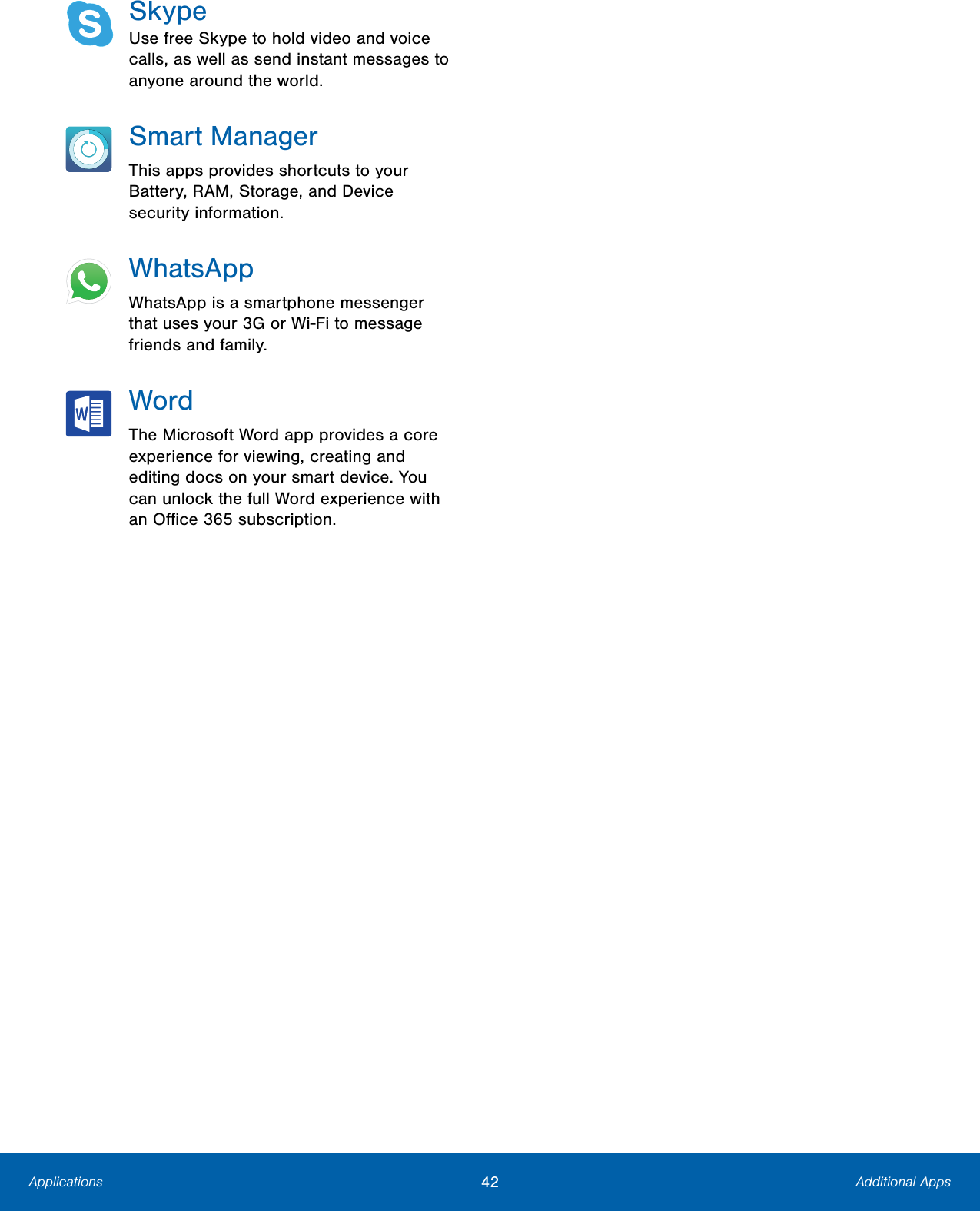
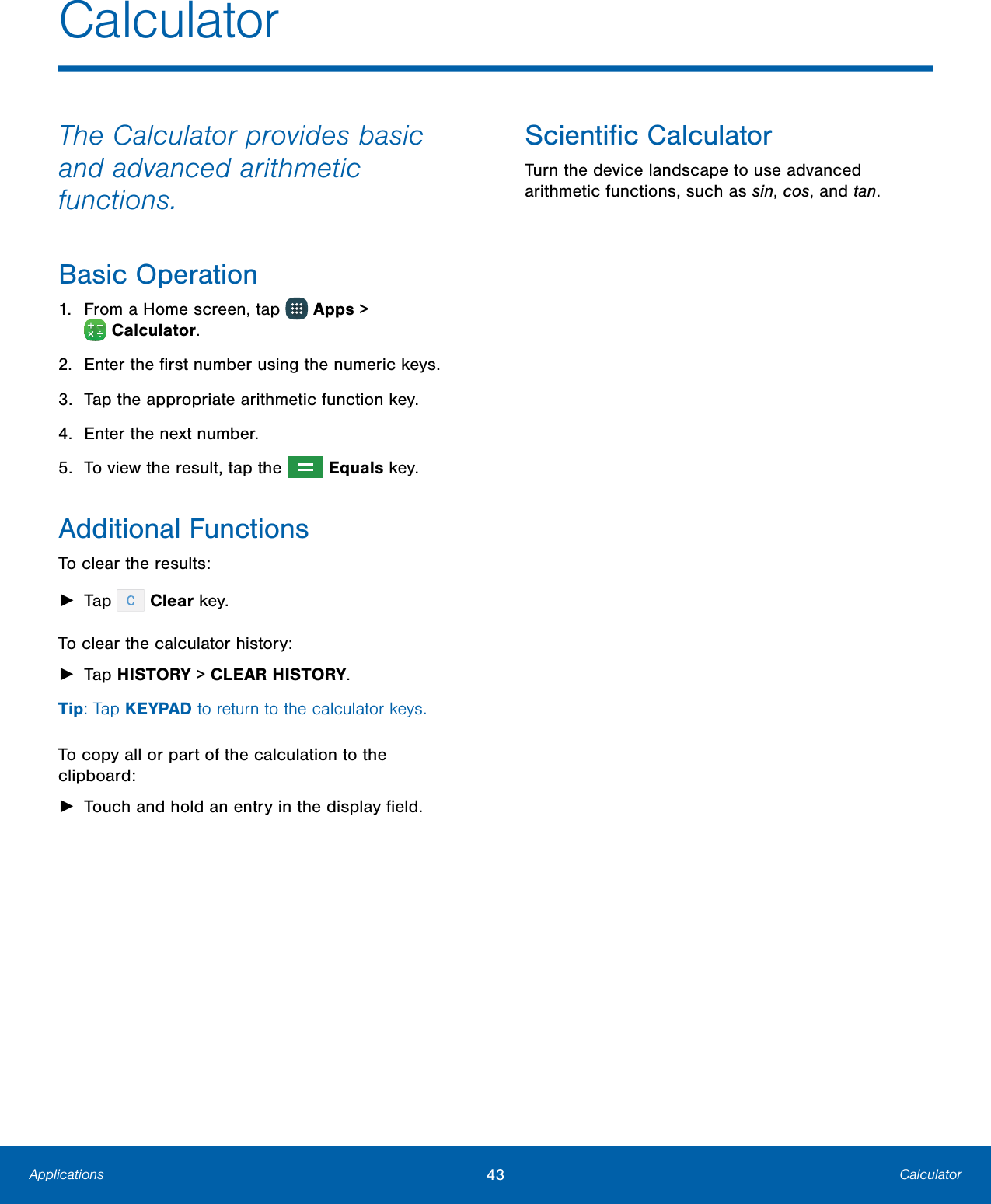
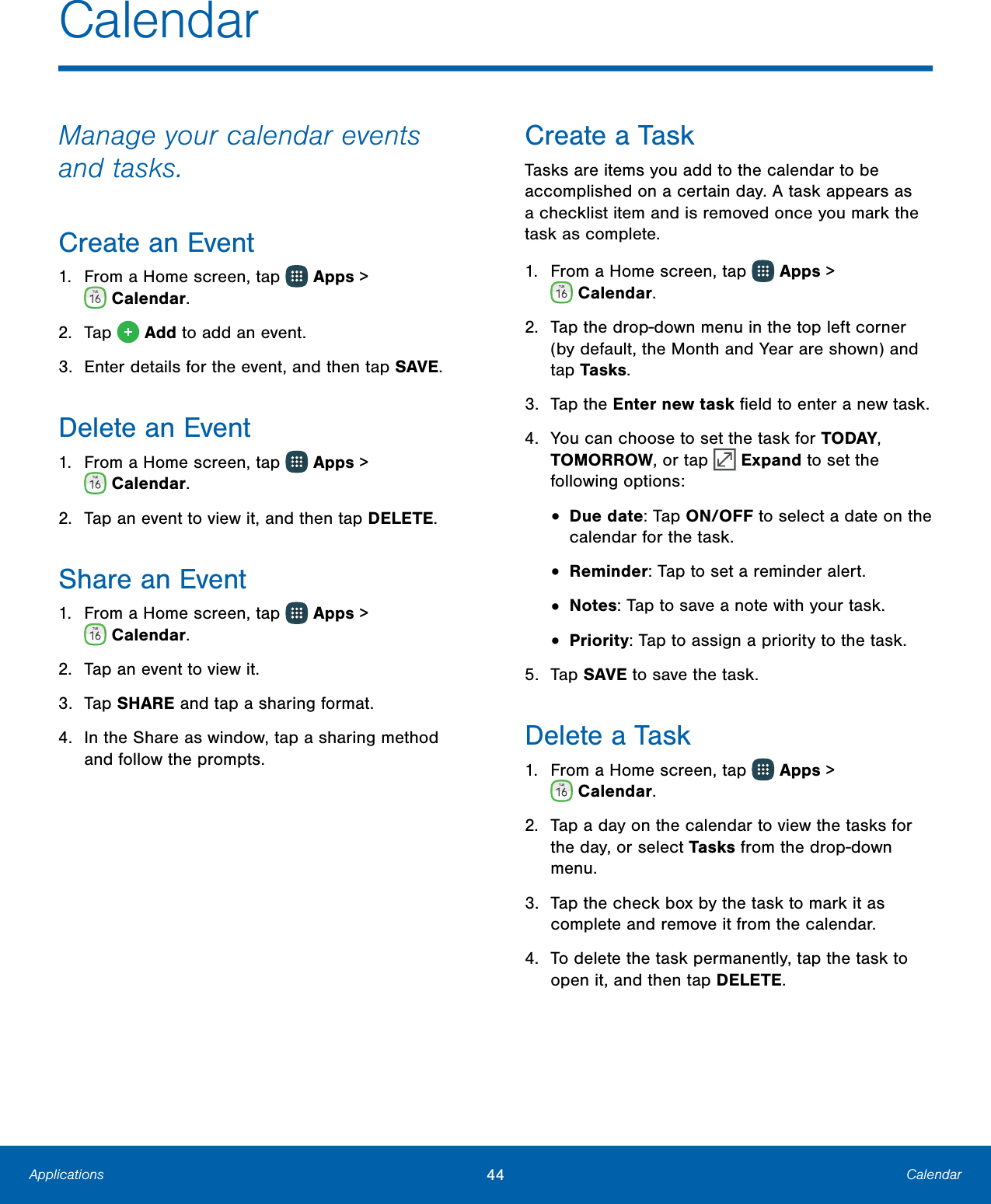

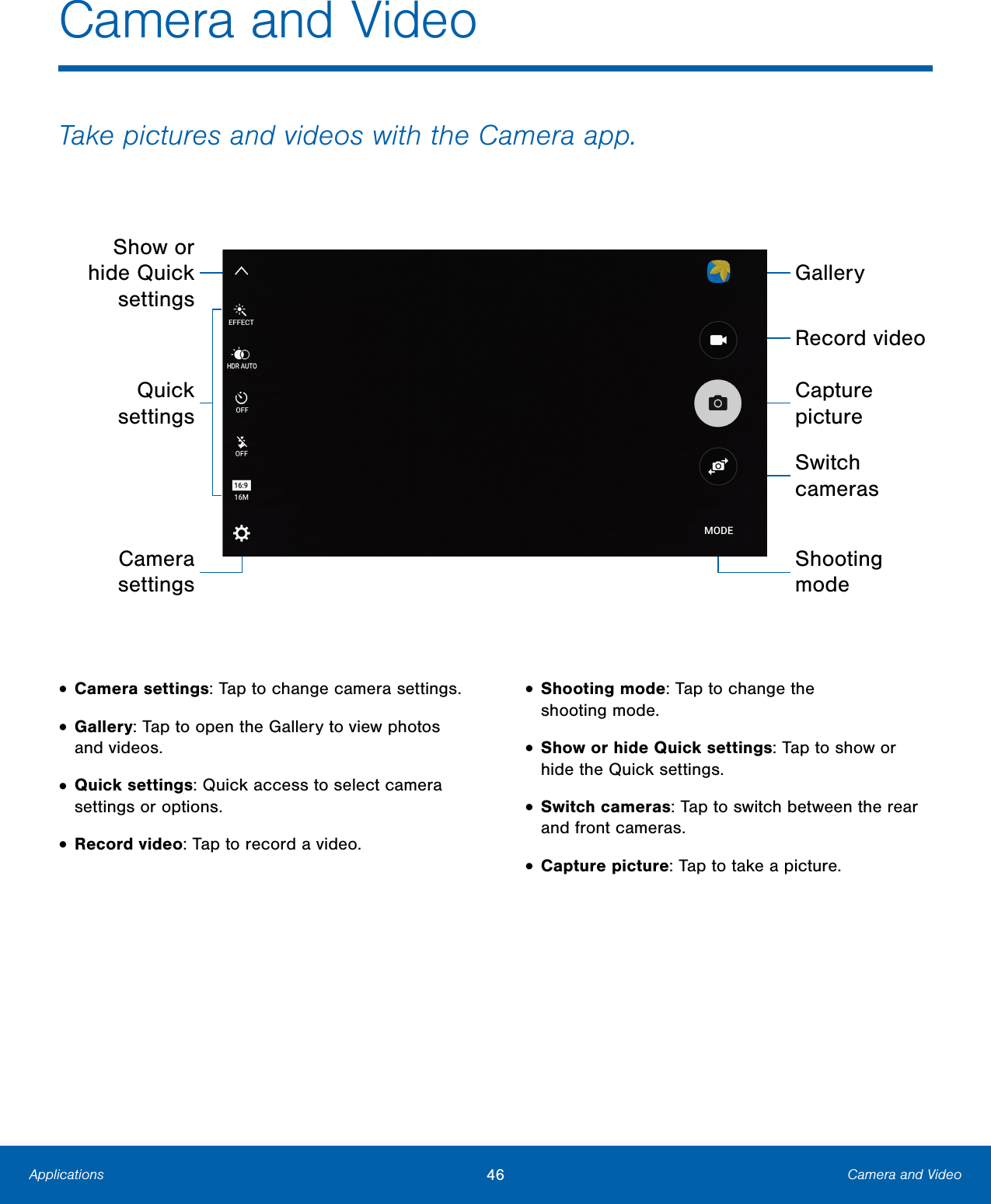
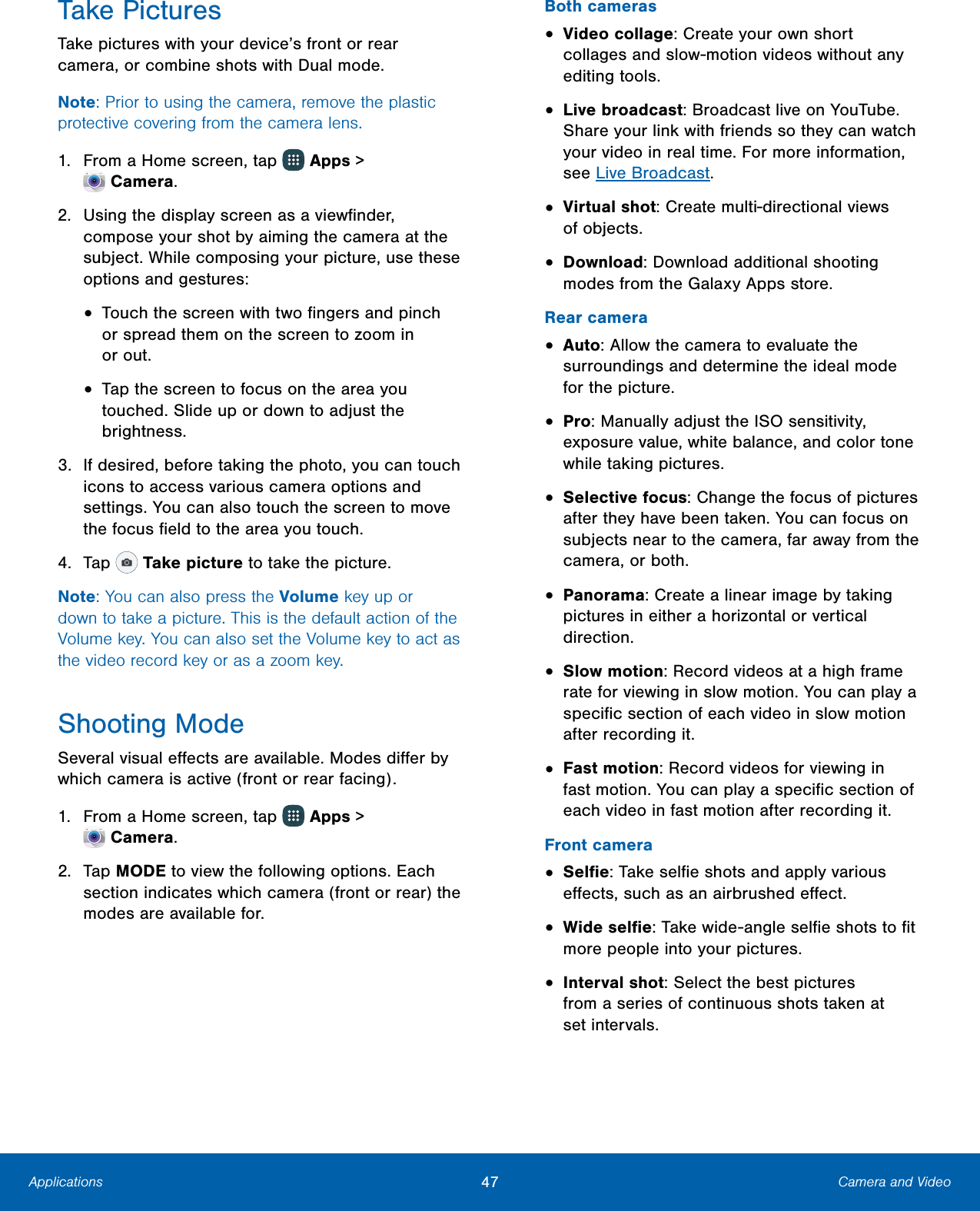
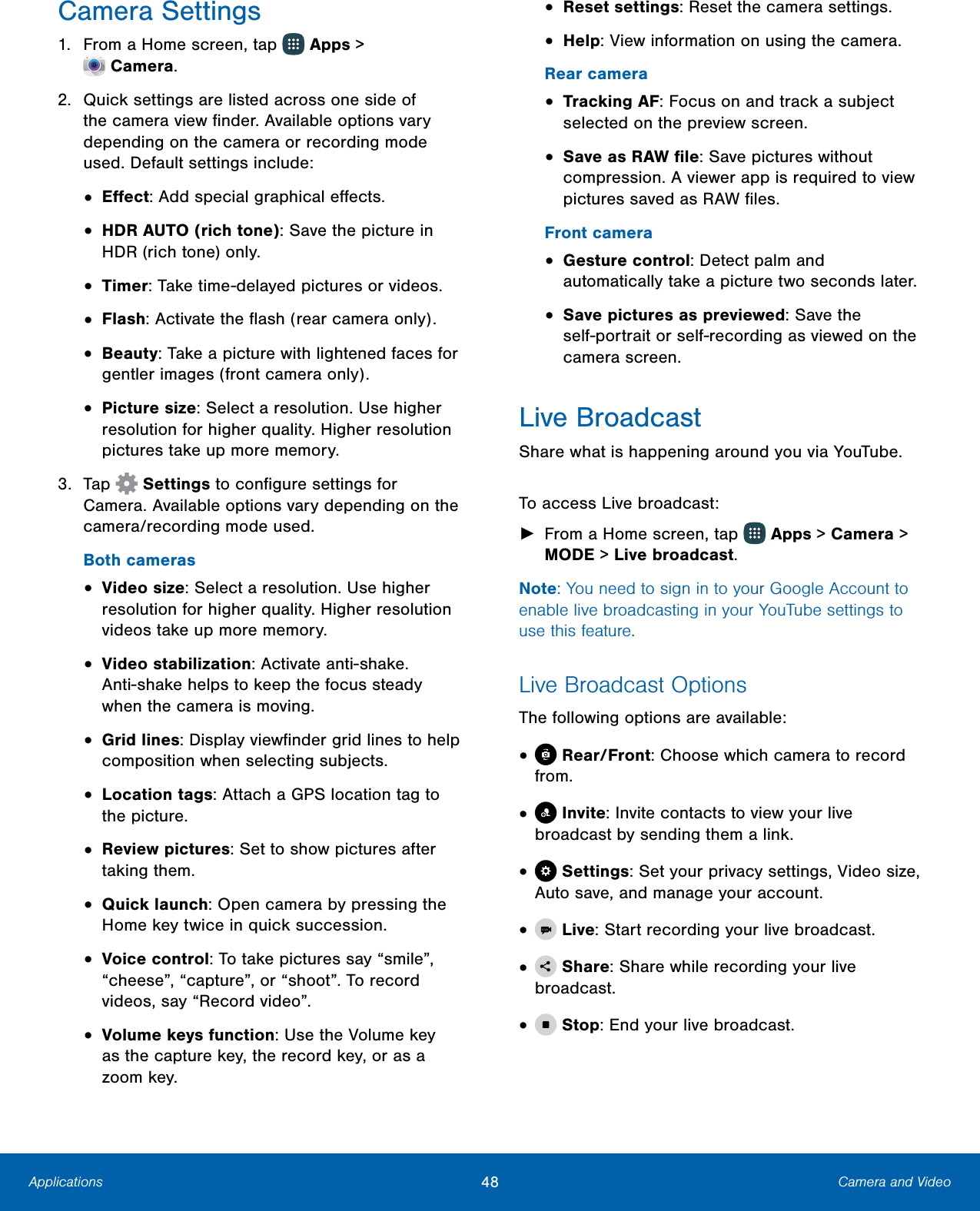
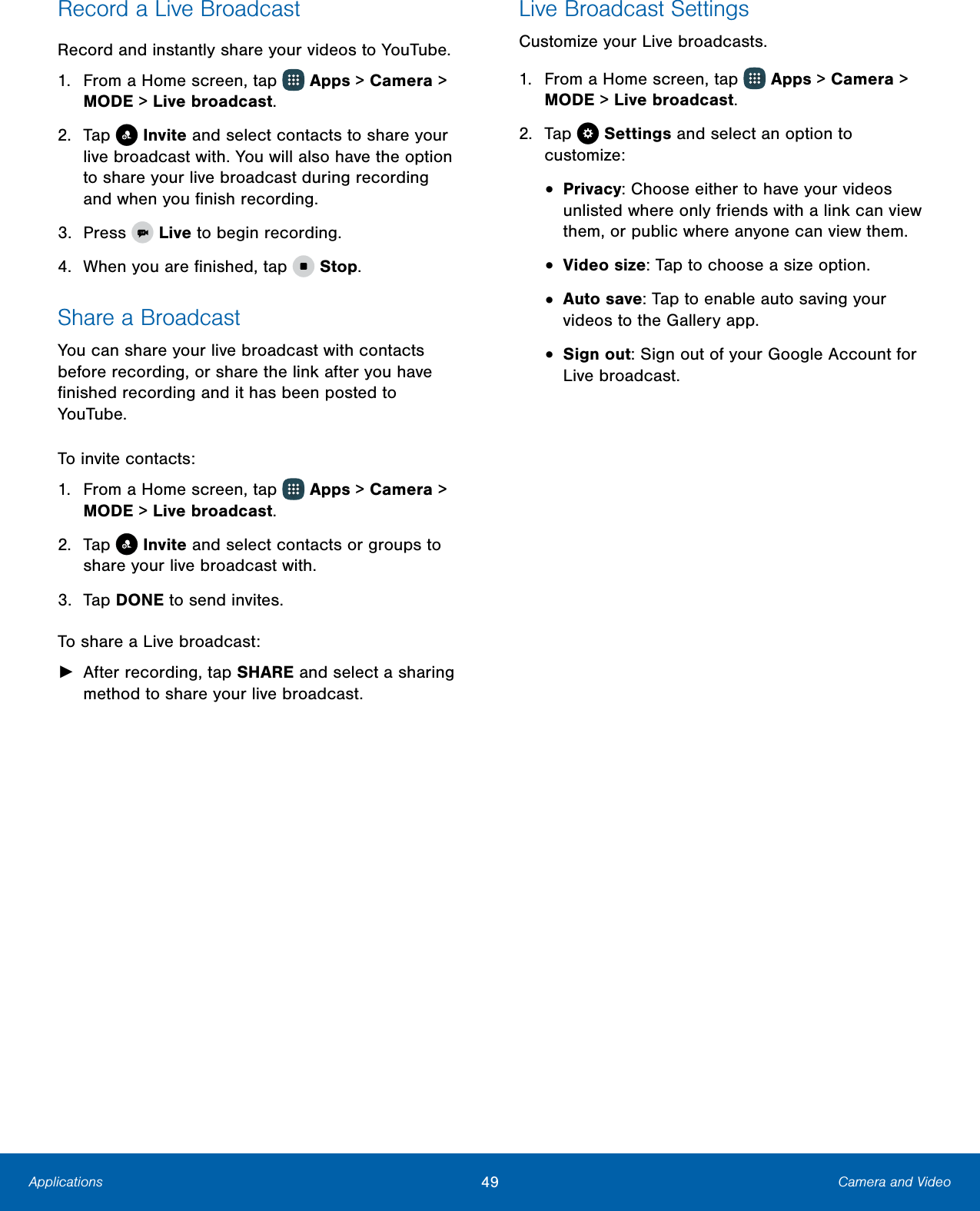
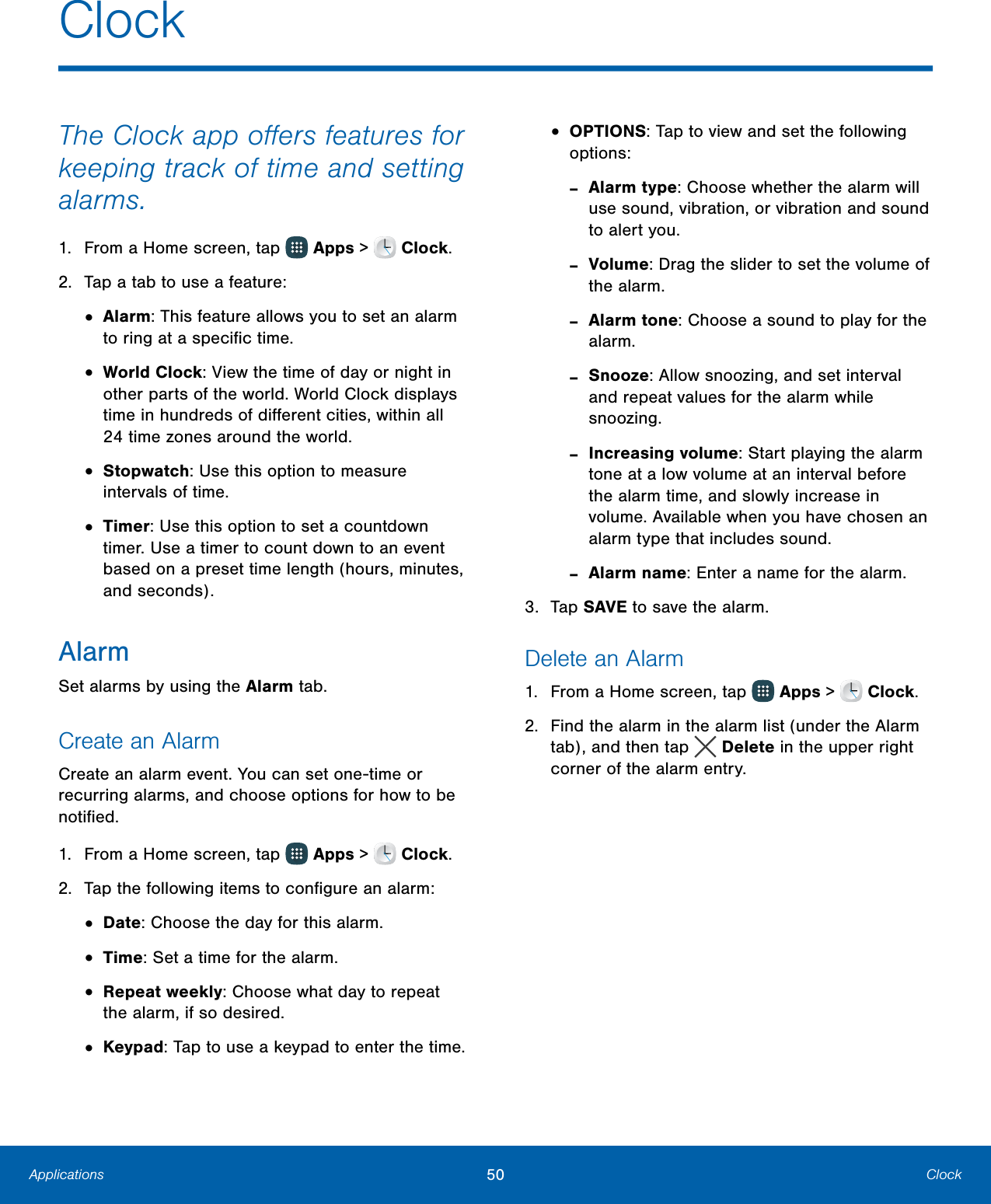
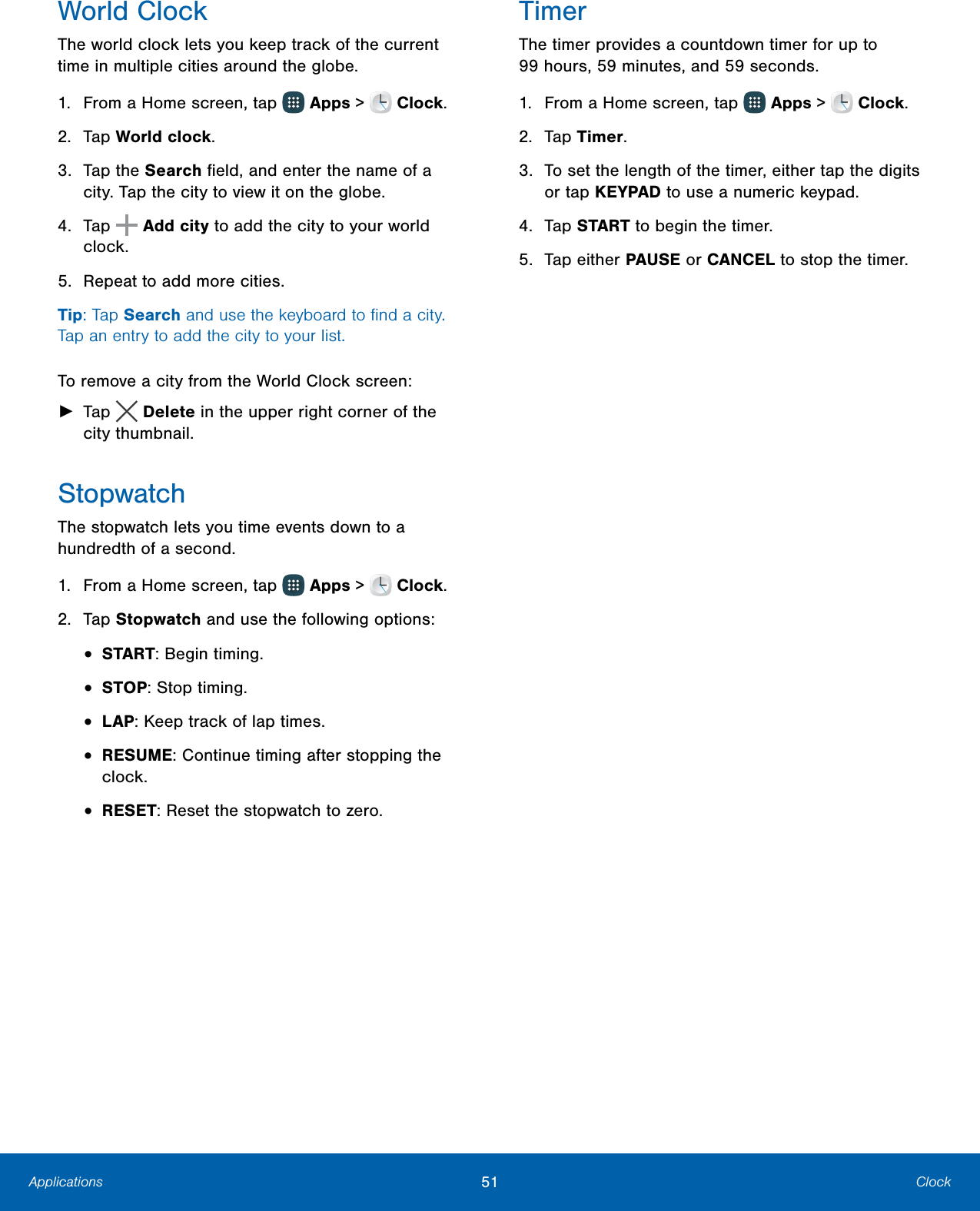
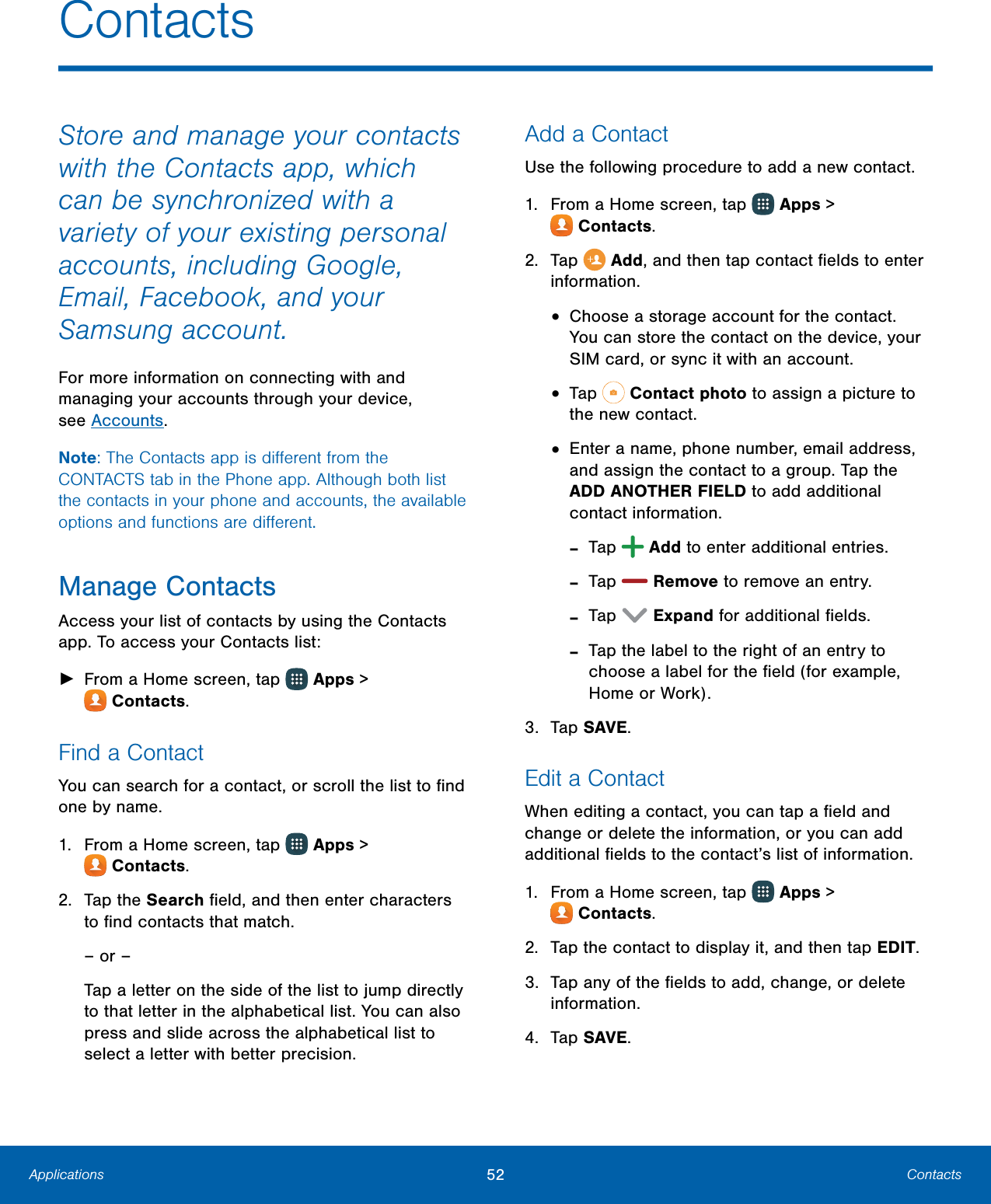
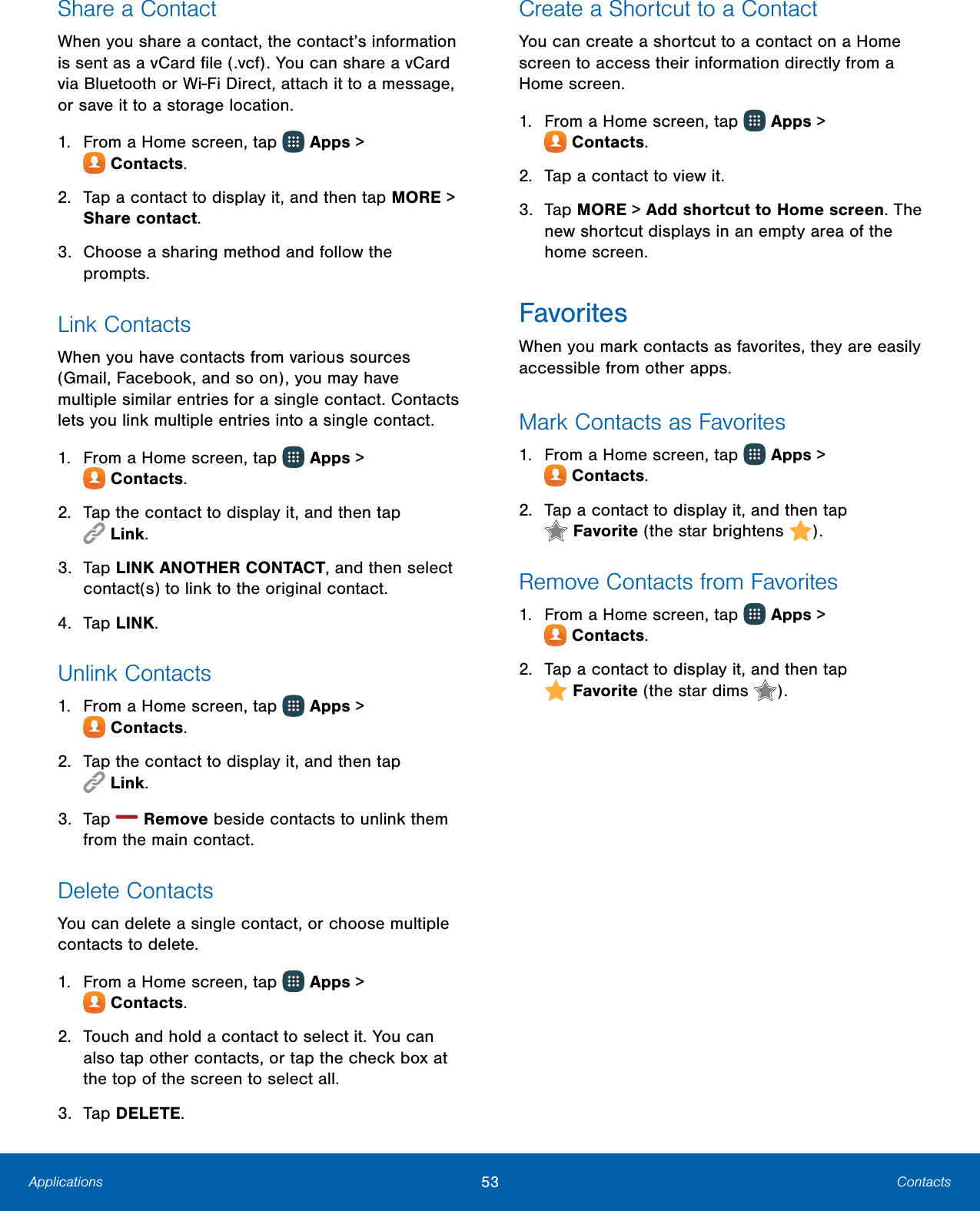
![54 Contacts Applications Groups You can use groups to organize your contacts. Your device comes with preloaded groups, and you can create your own. You might create a group for your family, for coworkers, or a team. Groups make it easy to find contacts, and you can send messages to the members of a group. Create a Group 1. From a Home screen, tap Apps > Contacts. 2. Tap GROUPS, and then tap ADD. 3. Tap fields to enter information about the group: • Tap [location] to choose where to save the group. You can save it to a specific account, to the device storage, or to all accounts. Tap the entries to select or unselect them. • Tap Group name to enter a name for the new group. • Tap Group ringtone to assign a ringtone to members of the group. • Tap Add member and select contact(s) to add to the new group, and then tap DONE. 4. Tap SAVE. Rename a Group 1. From a Home screen, tap Apps > Contacts. 2. Tap GROUPS, and then tap a group. 3. Tap EDIT and enter a new name. 4. Tap SAVE. Add Contacts to a Group 1. From a Home screen, tap Apps > Contacts. 2. Tap GROUPS, and then tap a group. 3. Tap EDIT > Add member, and then tap the contacts you want to add. When finished tapDONE. 4. Tap SAVE. Send a Message to a Group You can send a text message to members of a group. 1. From a Home screen, tap Apps > Contacts. 2. Tap GROUPS, and then tap a group. 3. Tap MORE > Send message. 4. Tap contacts to select them, or tap the All check box at the top of the screen to select all, and then tap DONE. • You will only see group members that have a phone number in their records. 5. Type your message and tap SEND. Send an Email to a Group You can send an email to members of a group. 1. From a Home screen, tap Apps > Contacts. 2. Tap GROUPS, and then tap a group. 3. Tap MORE > Send email. 4. Tap contacts to select them, or tap the All check box at the top of the screen to select all, and then tap DONE. • You will only see group members that have an email address in their records. 5. Choose an account and follow the prompts.](https://usermanual.wiki/Samsung-Electronics-Co/SMN920R4/User-Guide-2802244-Page-59.png)
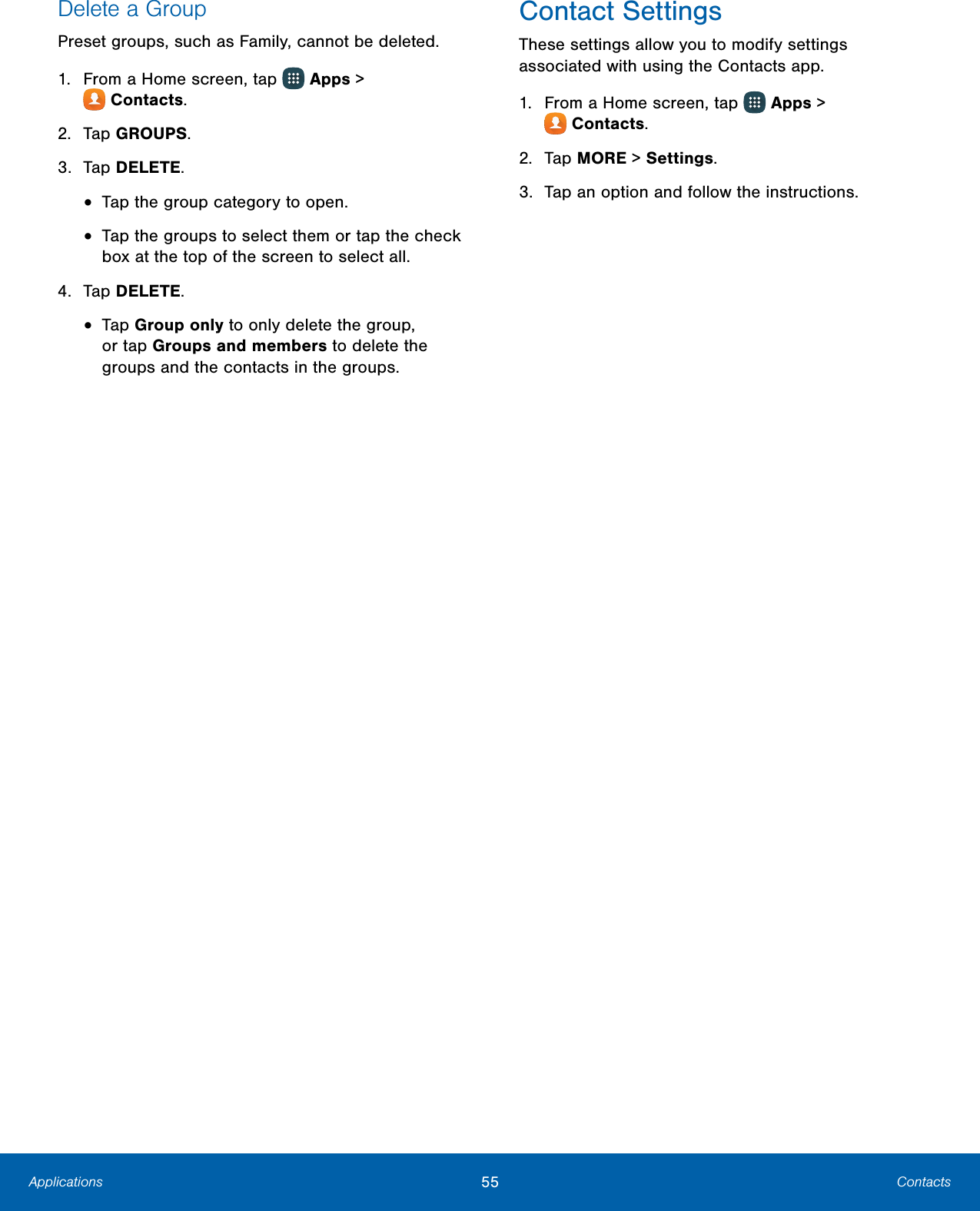
![56 Email Applications Email Use the Email app to view and manage all your email accounts in one application. To access Email: ► From a Home screen, tap Apps > Email. Configure Email Accounts You can configure Email for most accounts in just a few steps. 1. From a Home screen, tap Apps > Email. 2. Follow the instructions to set up your email account. To add an Email account: 1. From a Home screen, tap Apps > Email. 2. Tap MORE > Settings > Add account. 3. Enter your email address and password. The device communicates with the appropriate server to set up your account and synchronize your email. When complete, your email appears in the Inbox for the account. Note: To configure email account settings at any time, tap MORE > Settings. Tap the email account to display its settings. View Your Email Accounts You can view email you receive for all accounts on the Combined view screen, or you can view email accounts individually. 1. From a Home screen, tap Apps > Email. 2. Tap the drop-down menu at the top left of the screen to view the current account mailbox. 3. Tap on the account name to view: • Combined inbox: View all email in a combined inbox. • [Account Name]: View email for only one email account. Manage Your Inbox There are several tools available from the Inbox screen. ► From a Home screen, tap Apps > Email. • Tap a message to read and reply or forward it. • Tap SEARCH to search for key words in your email inbox. • Tap MORE for additional message options like sorting, deleting, sharing and more.](https://usermanual.wiki/Samsung-Electronics-Co/SMN920R4/User-Guide-2802244-Page-61.png)
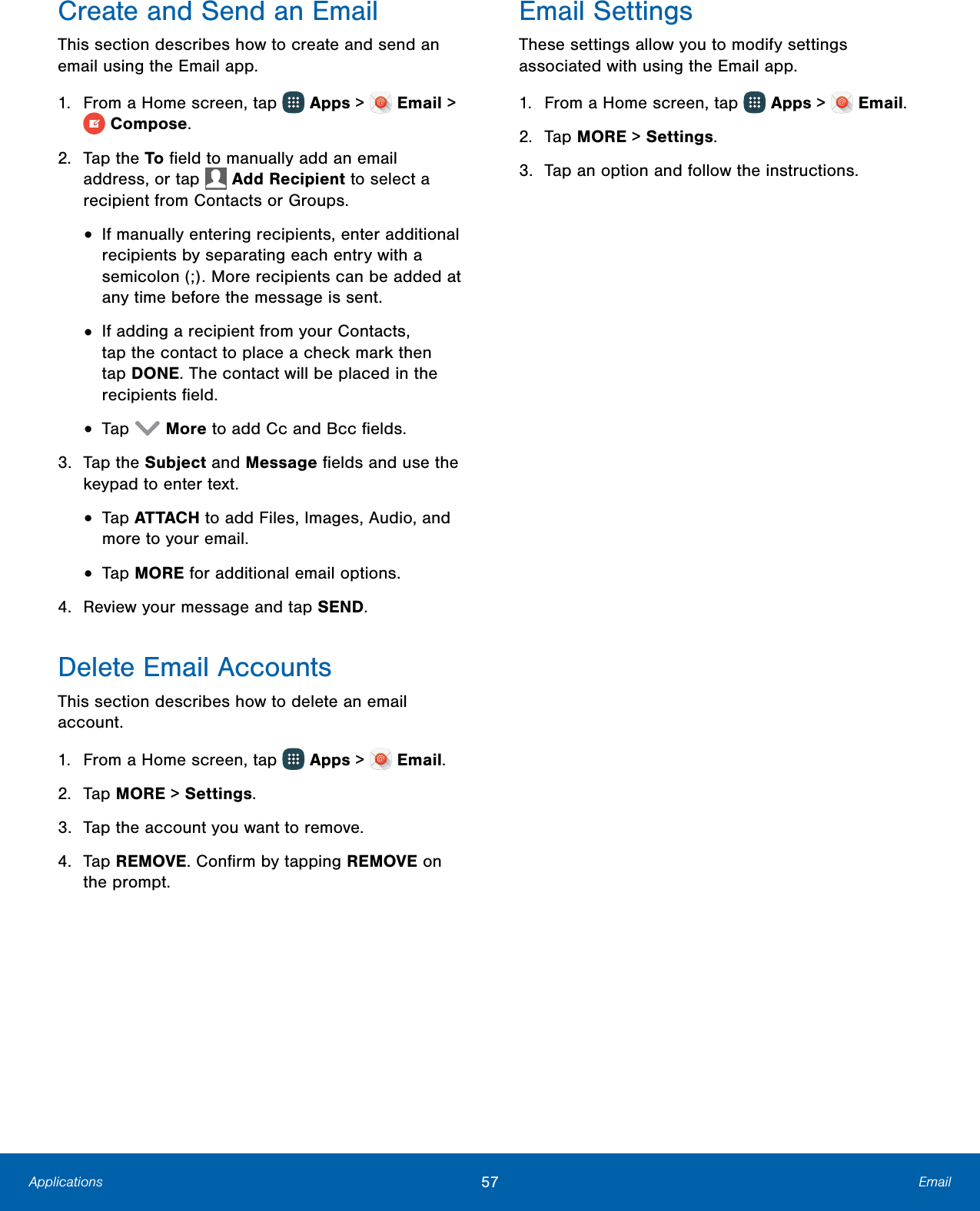
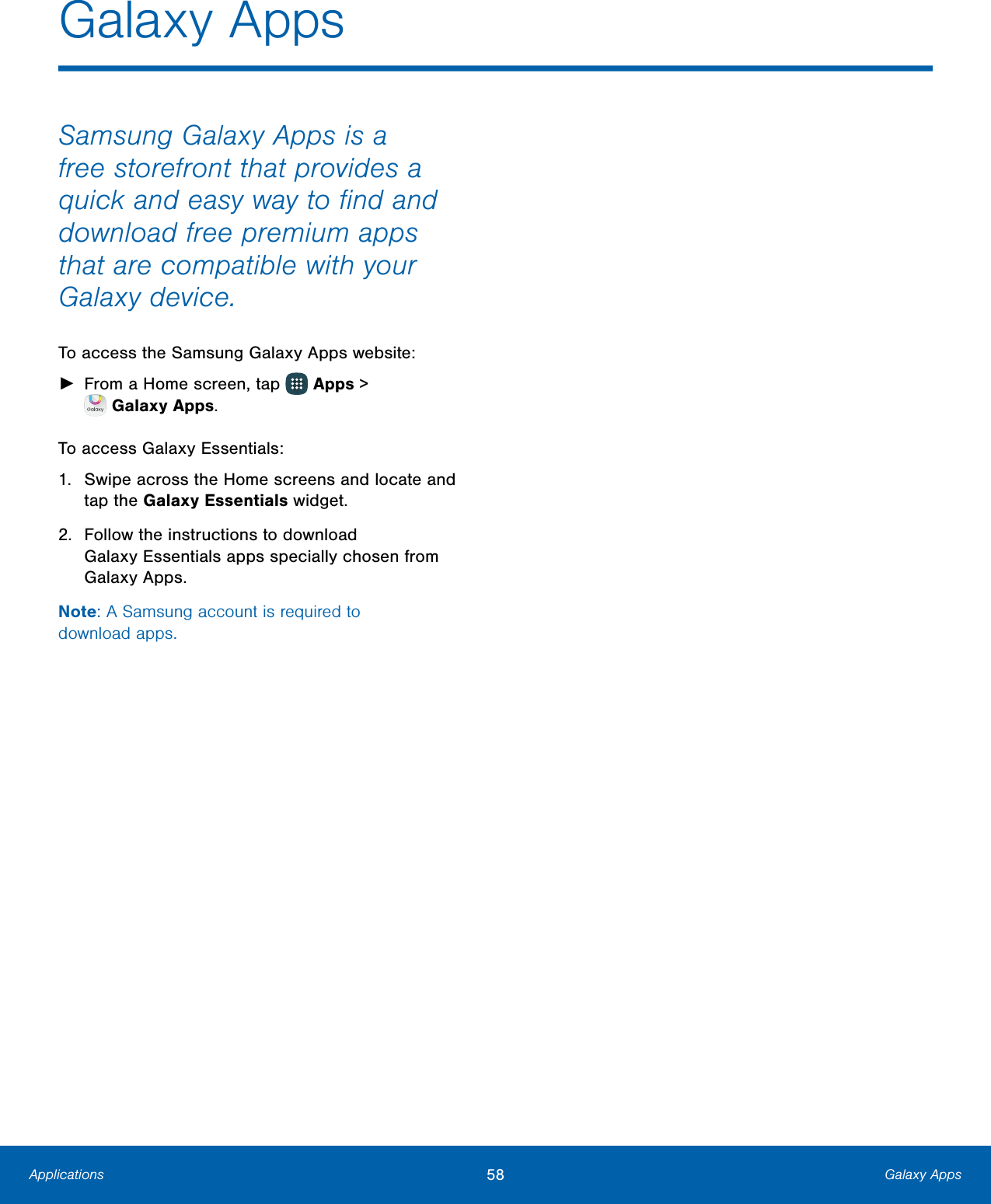
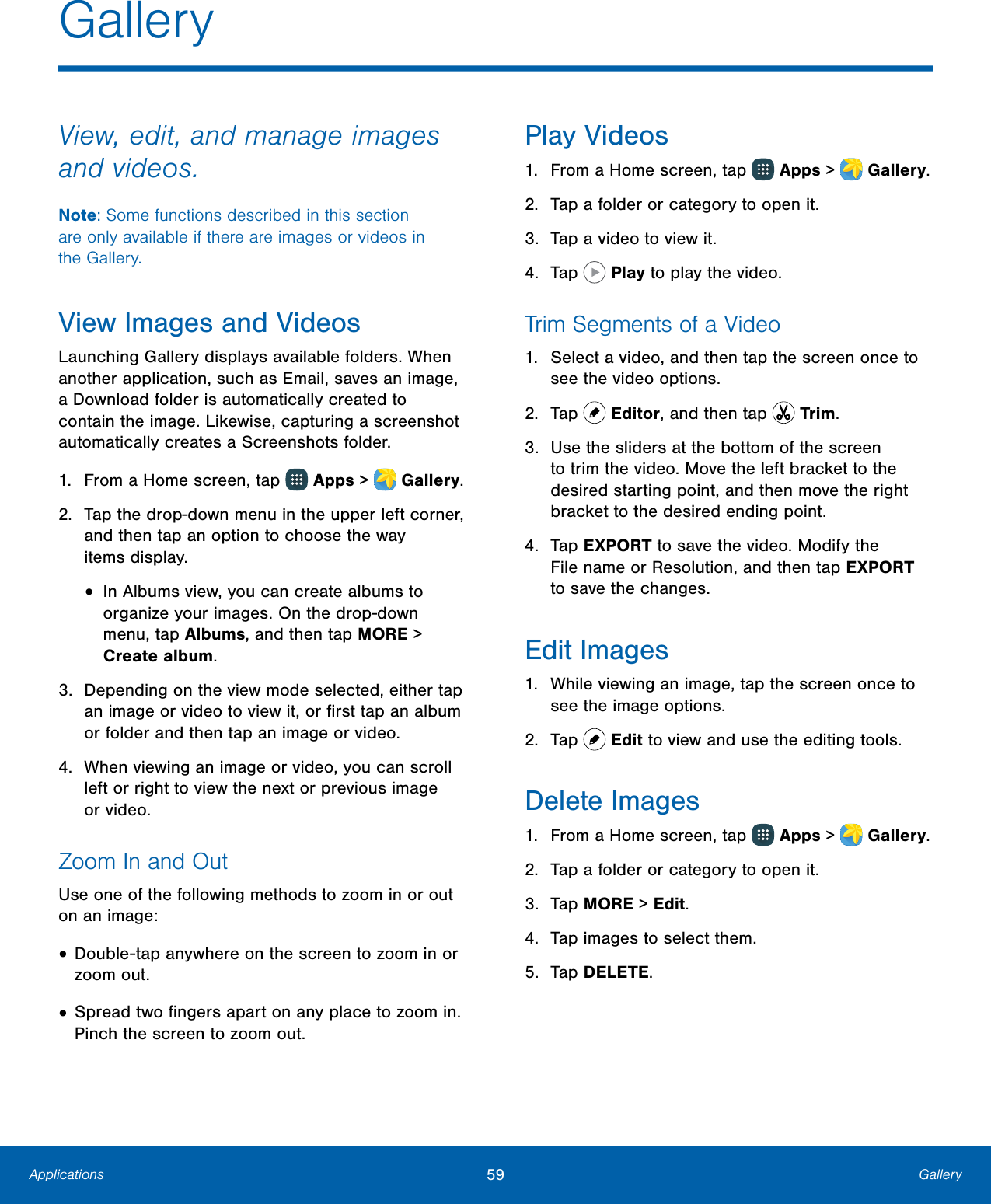

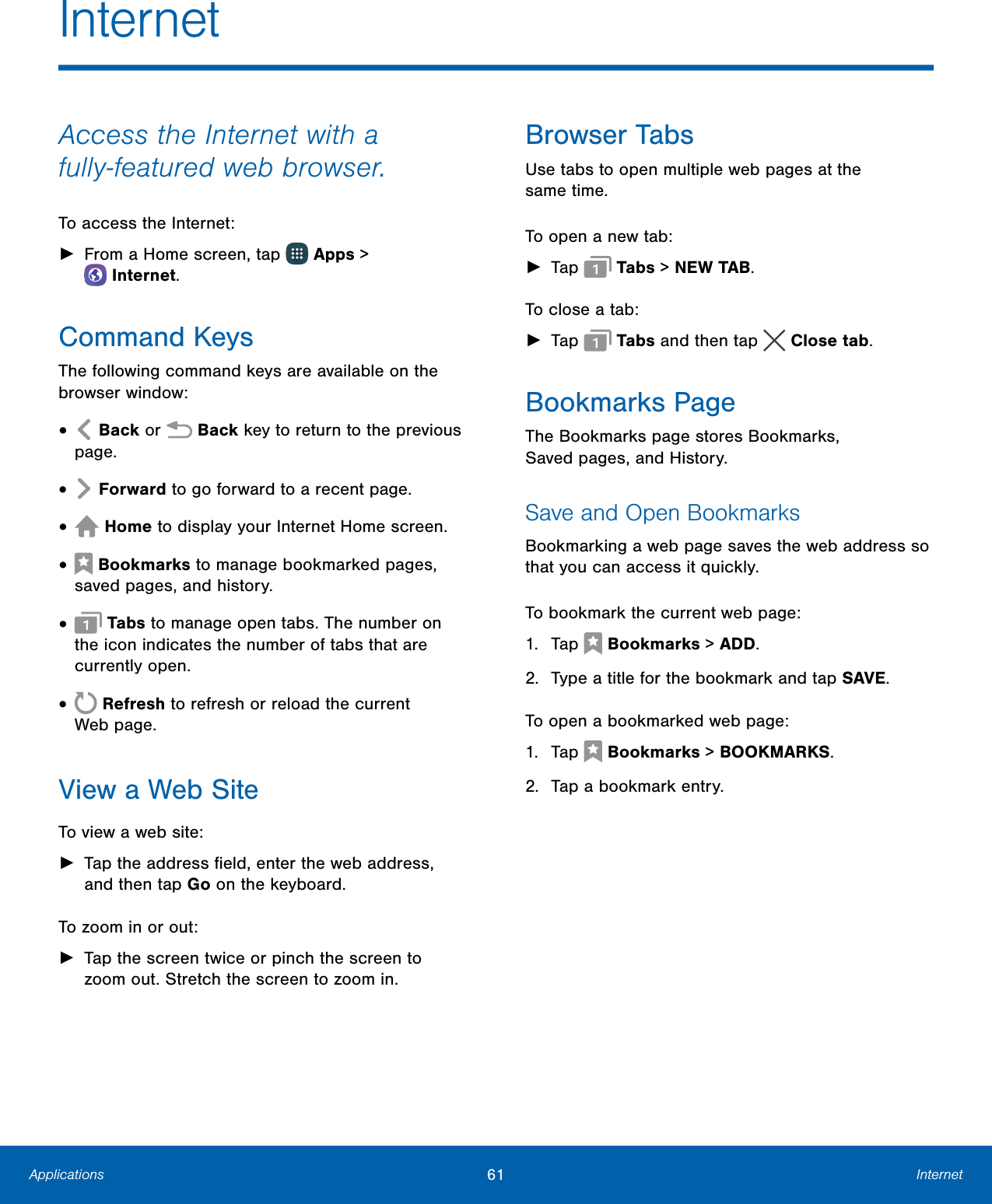
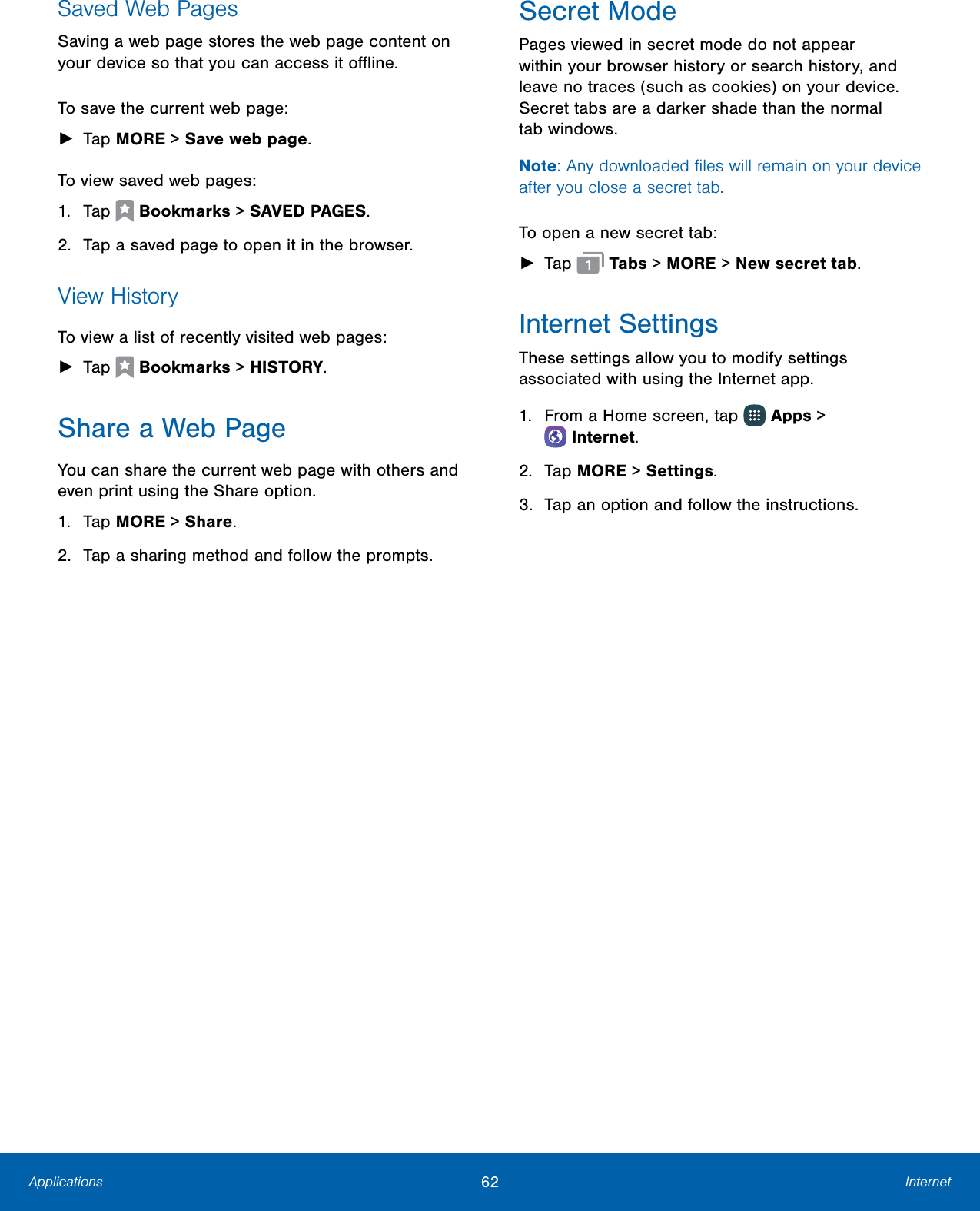
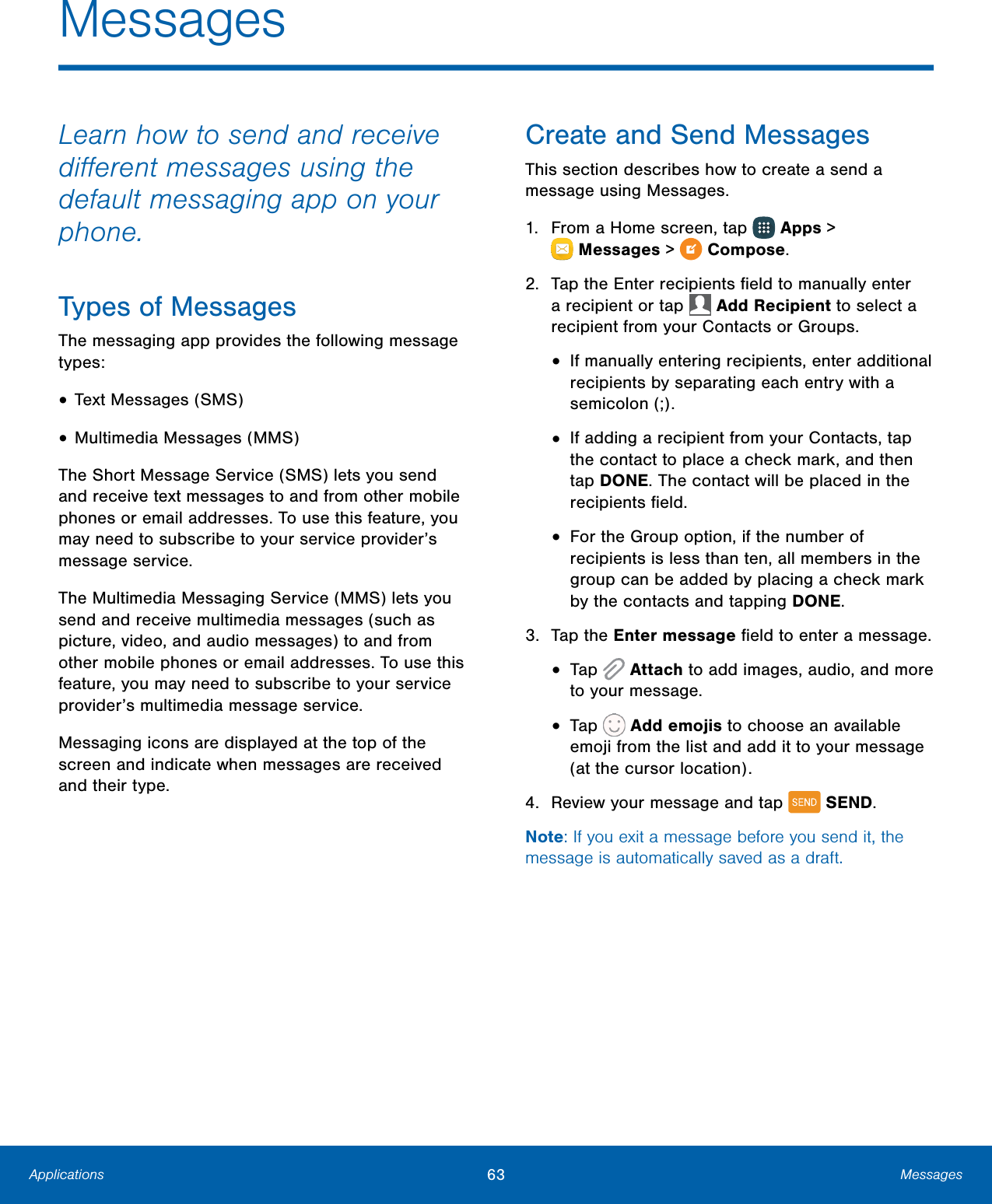
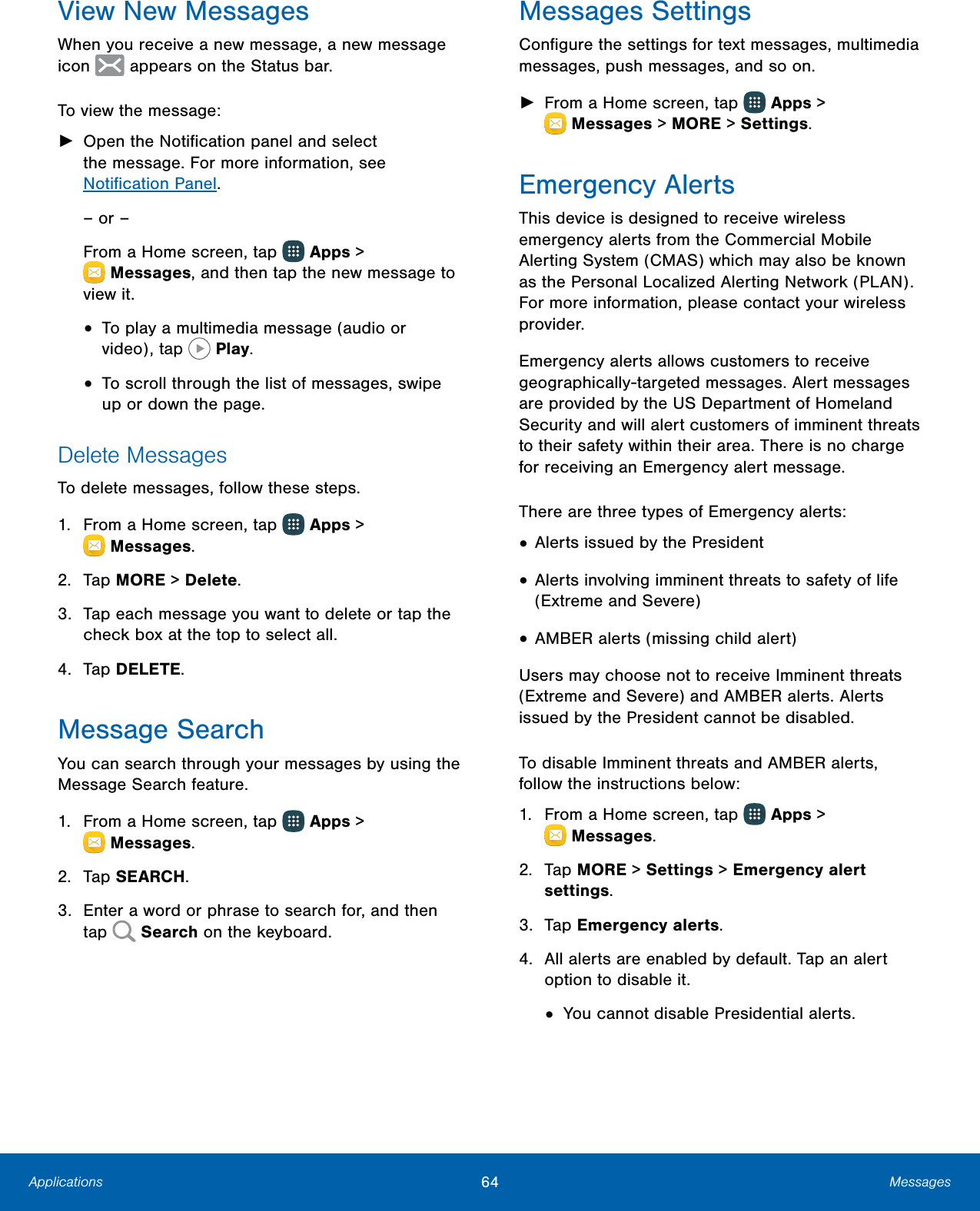
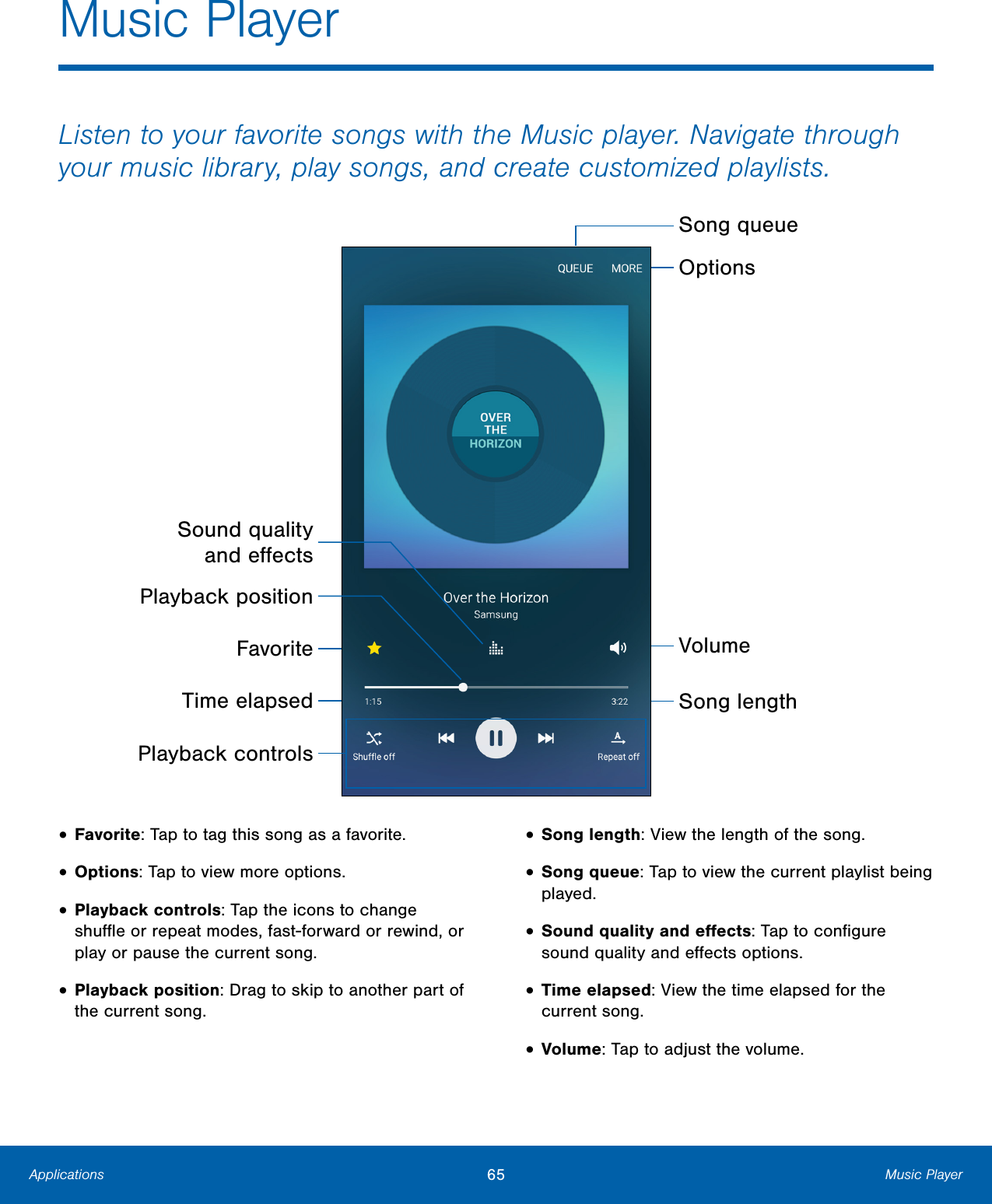
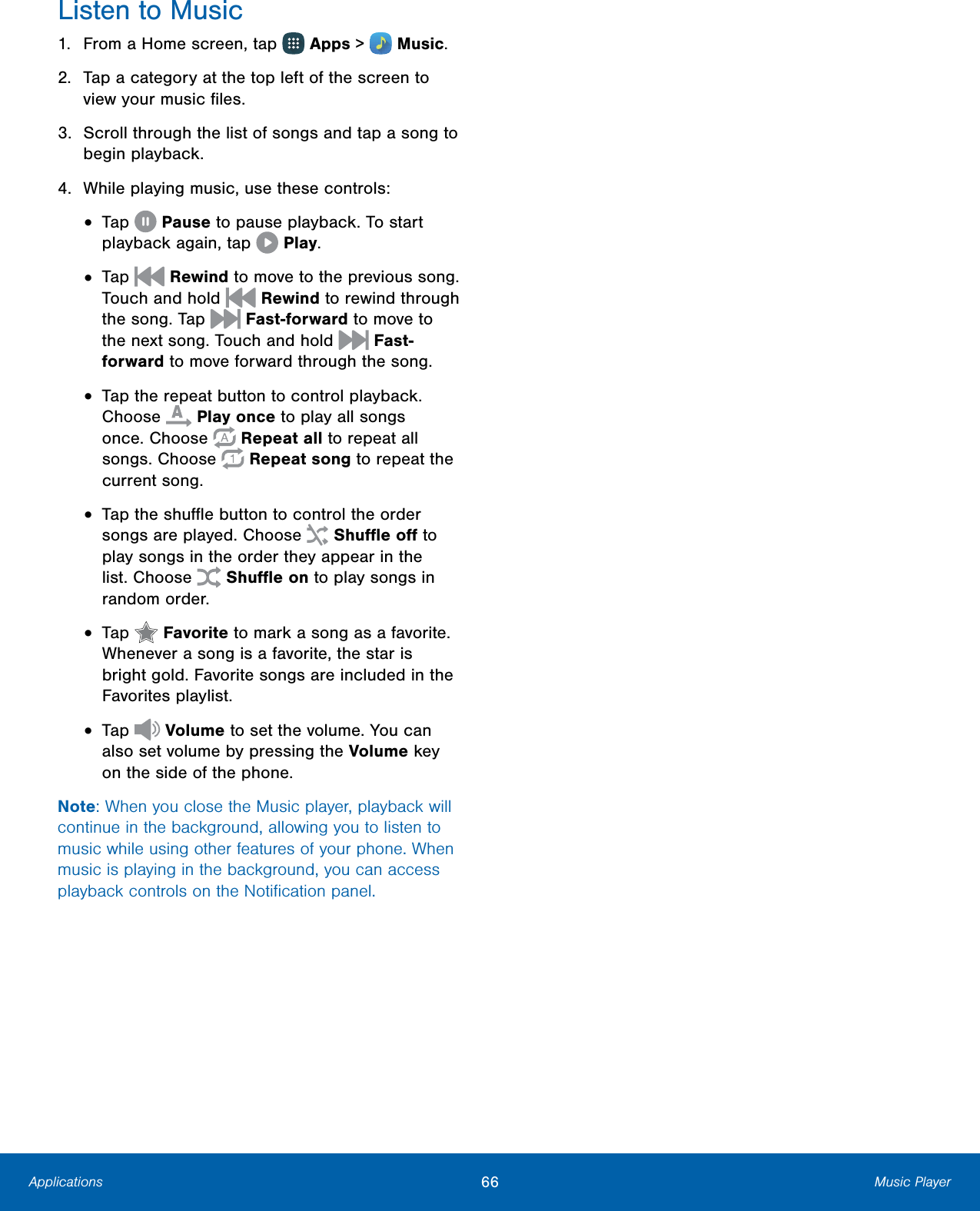
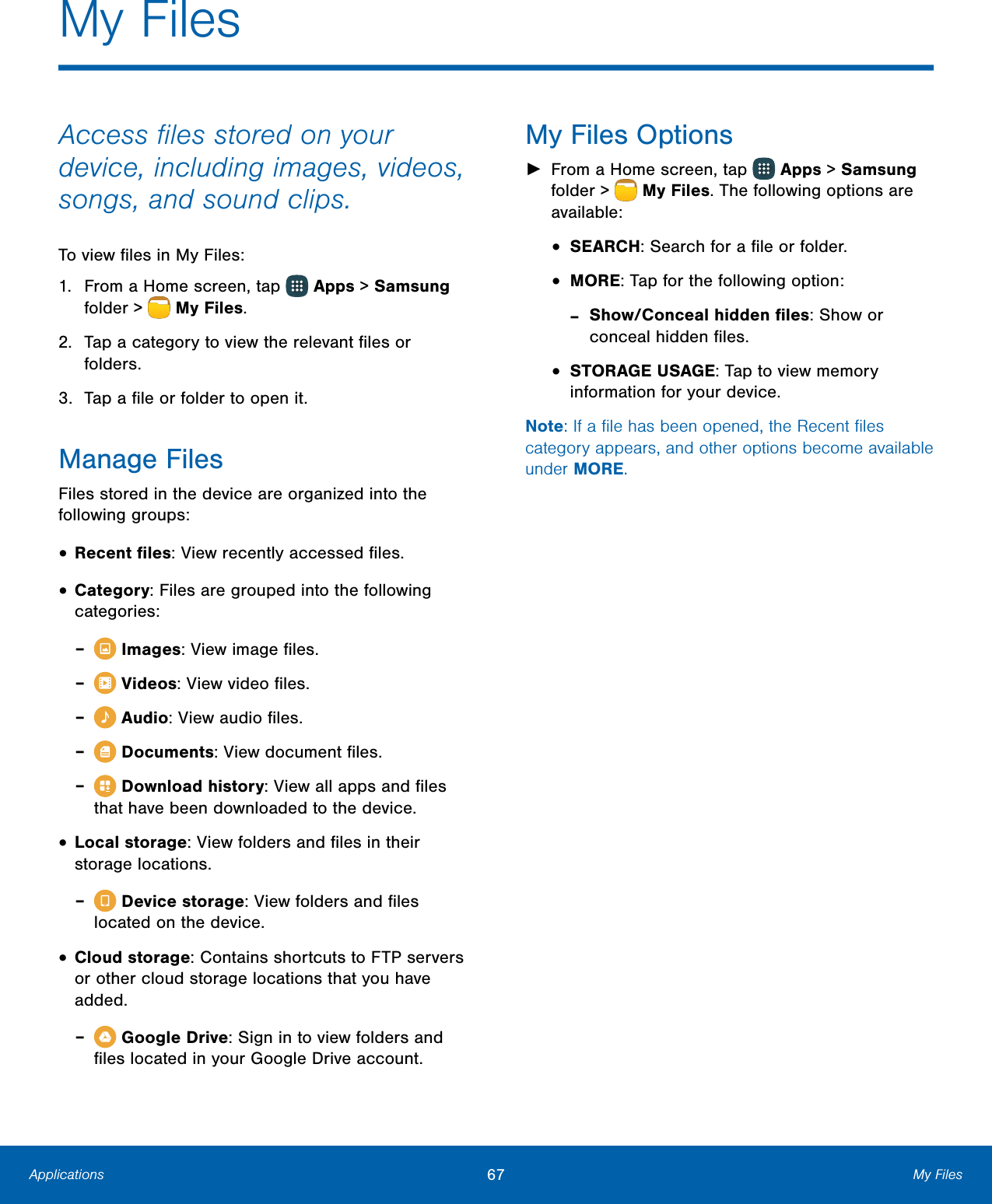
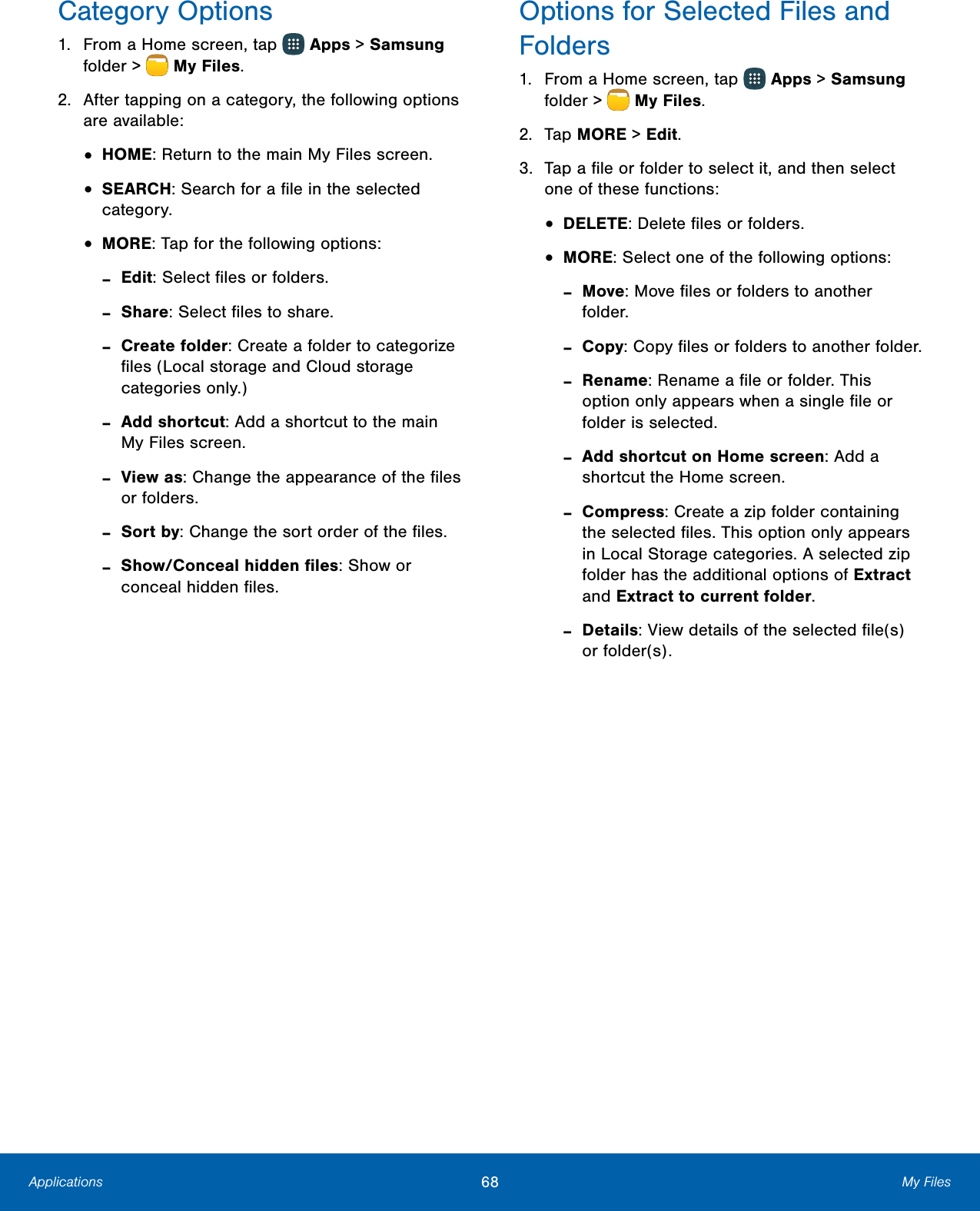
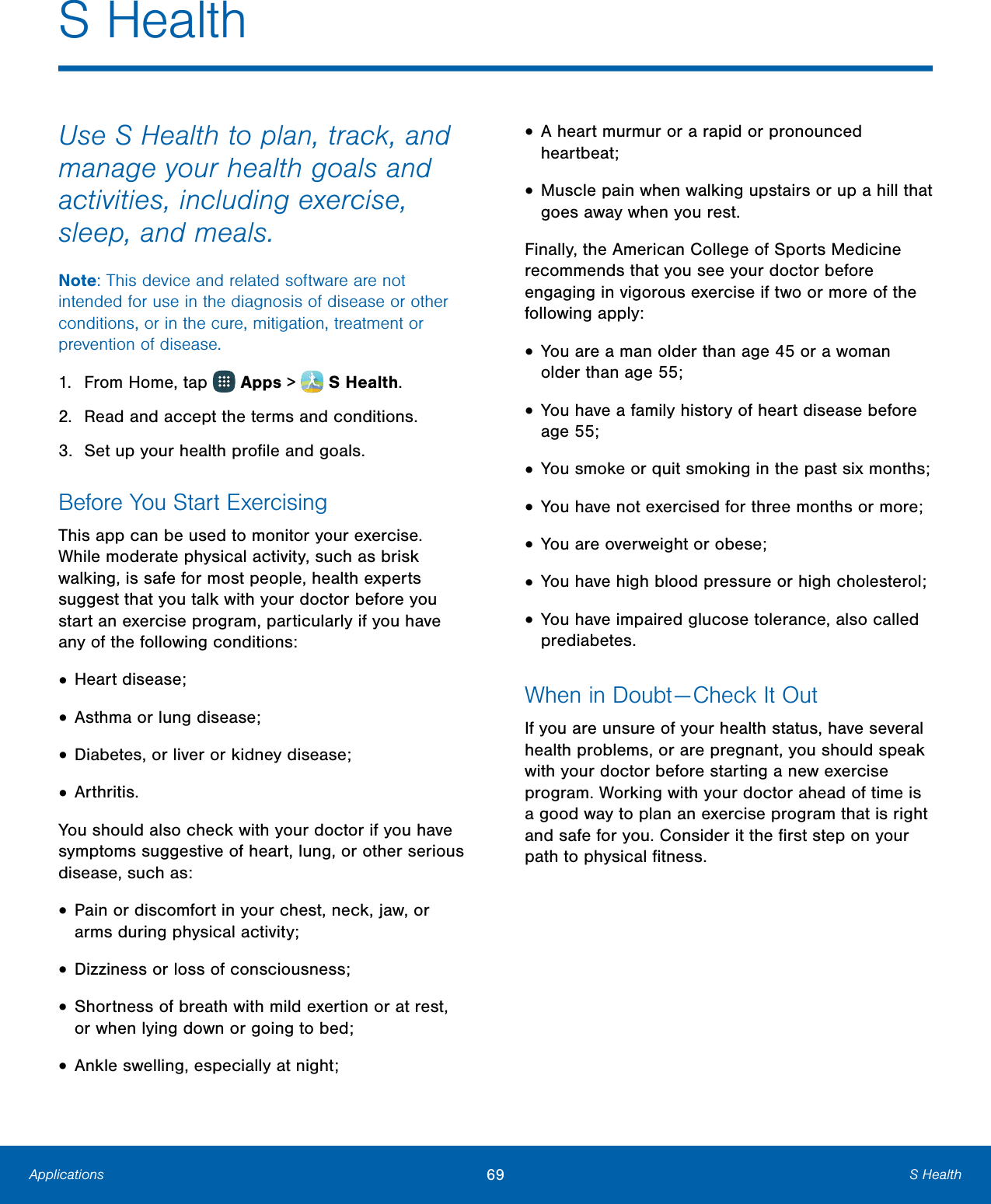
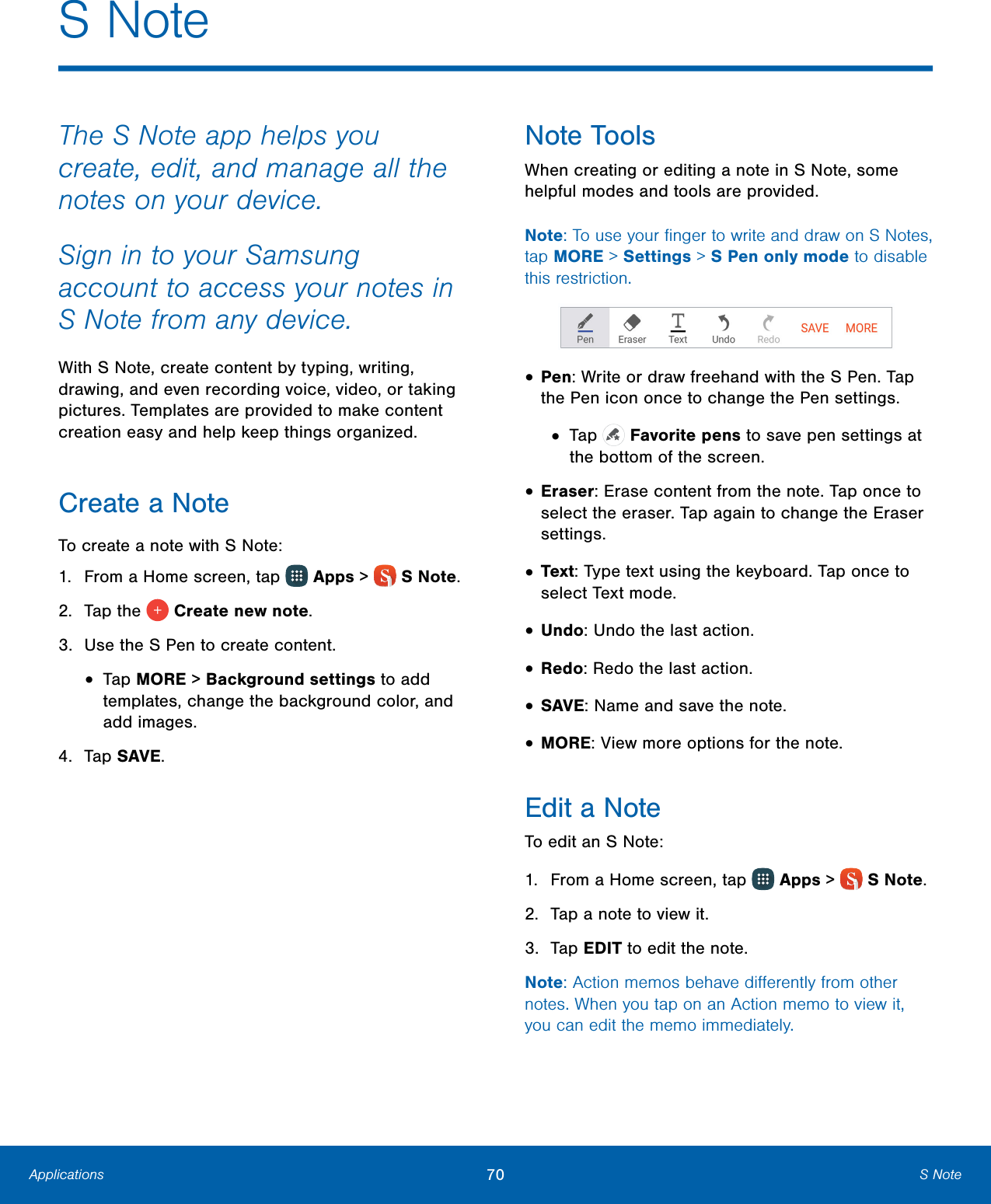
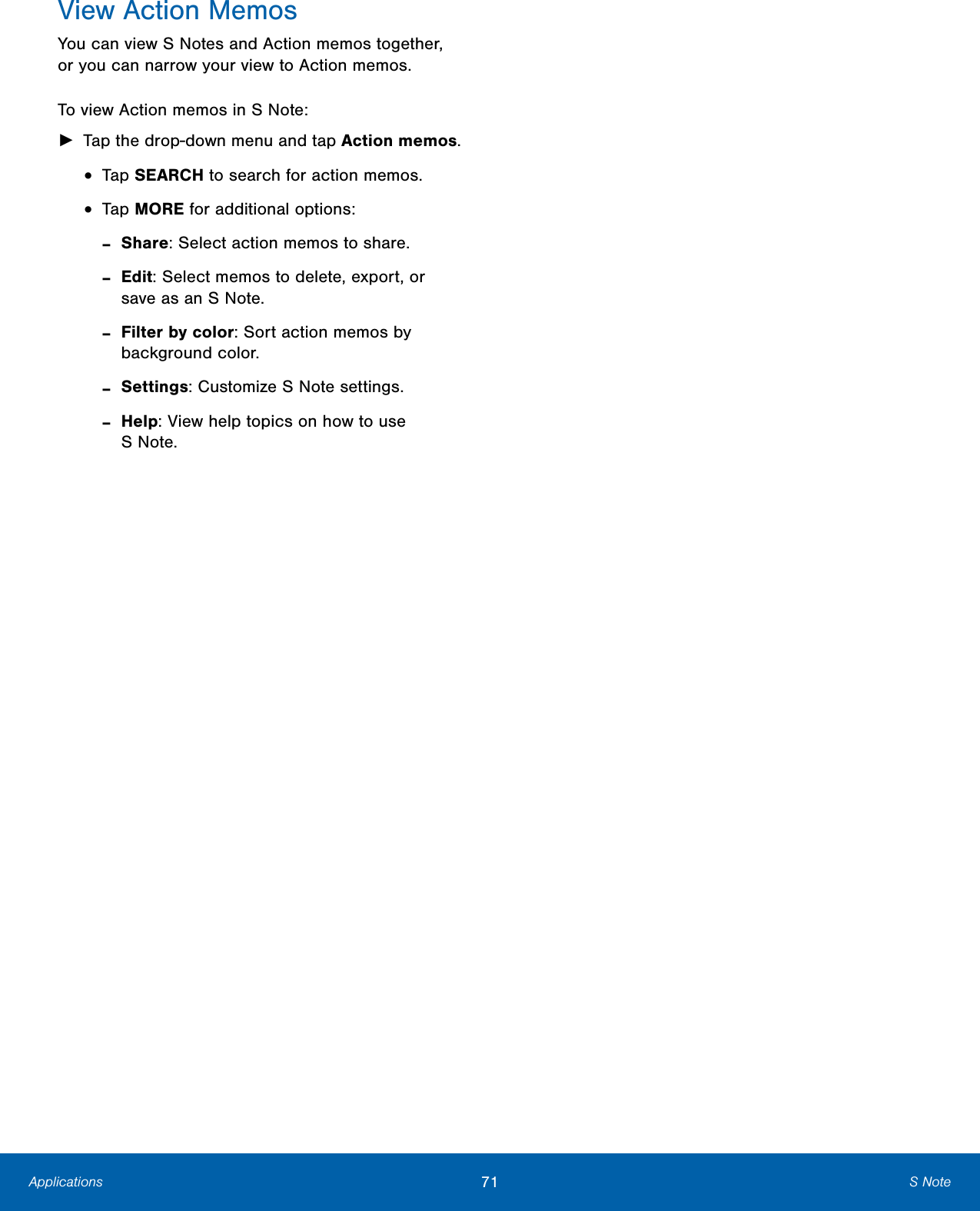
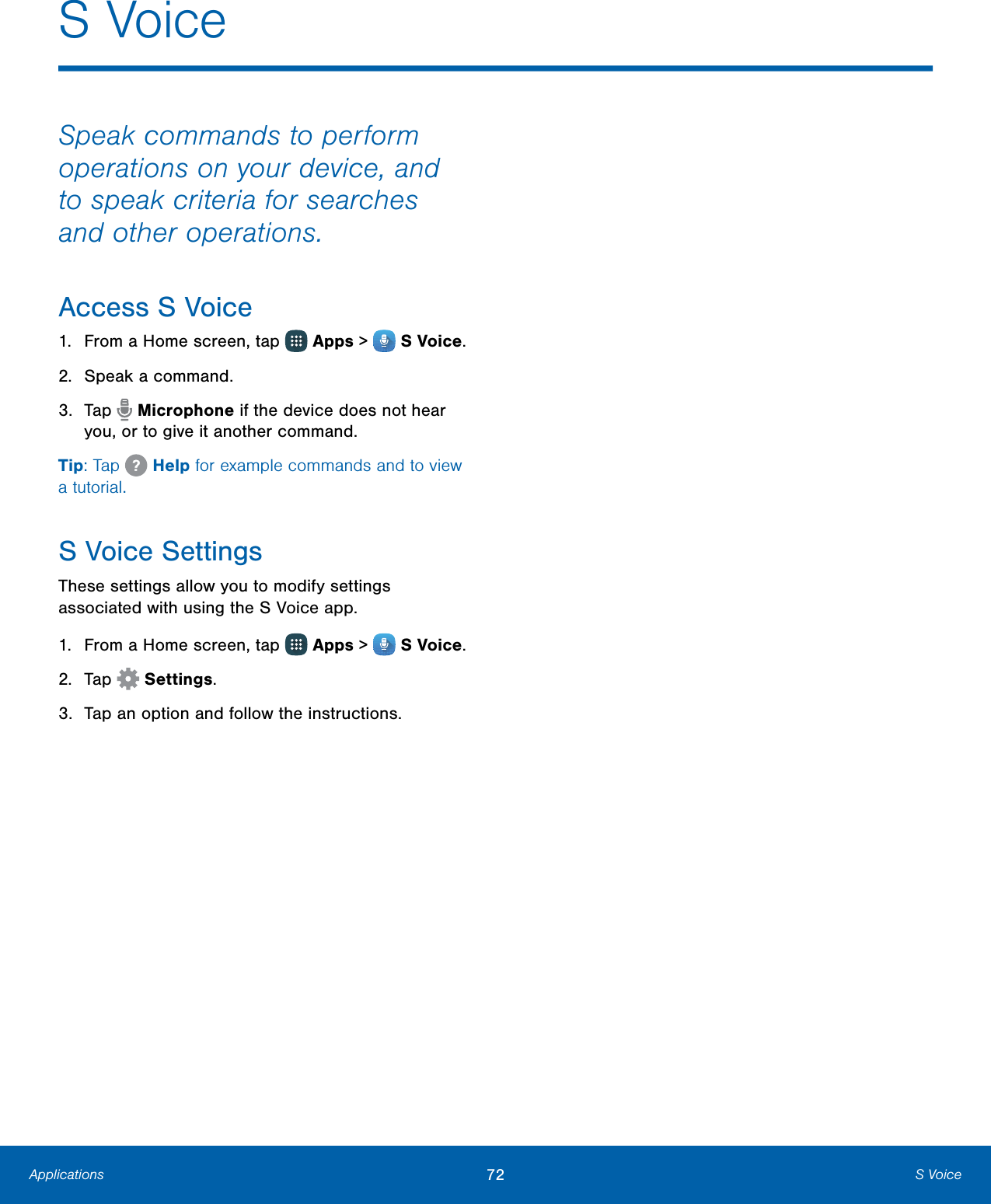
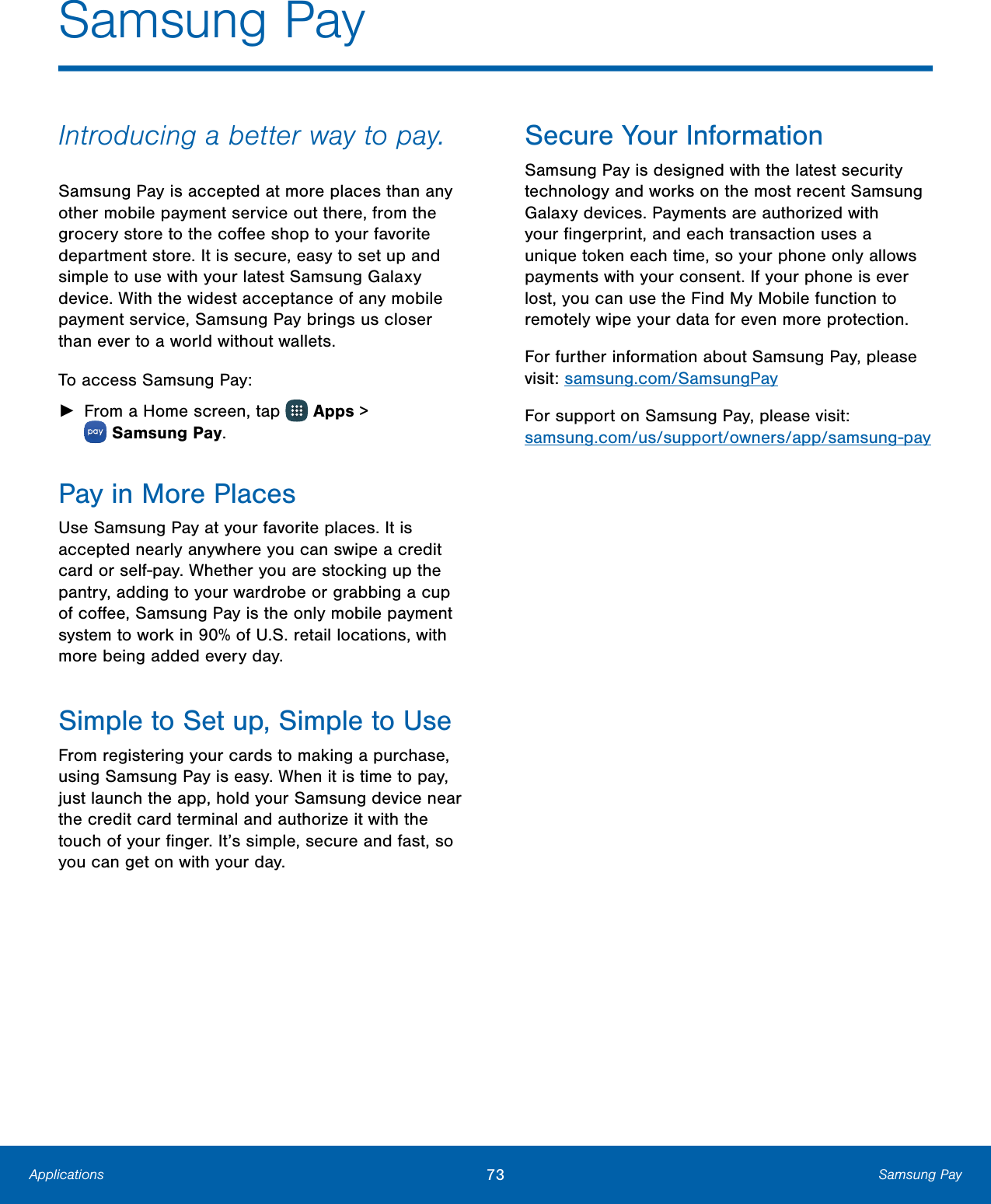
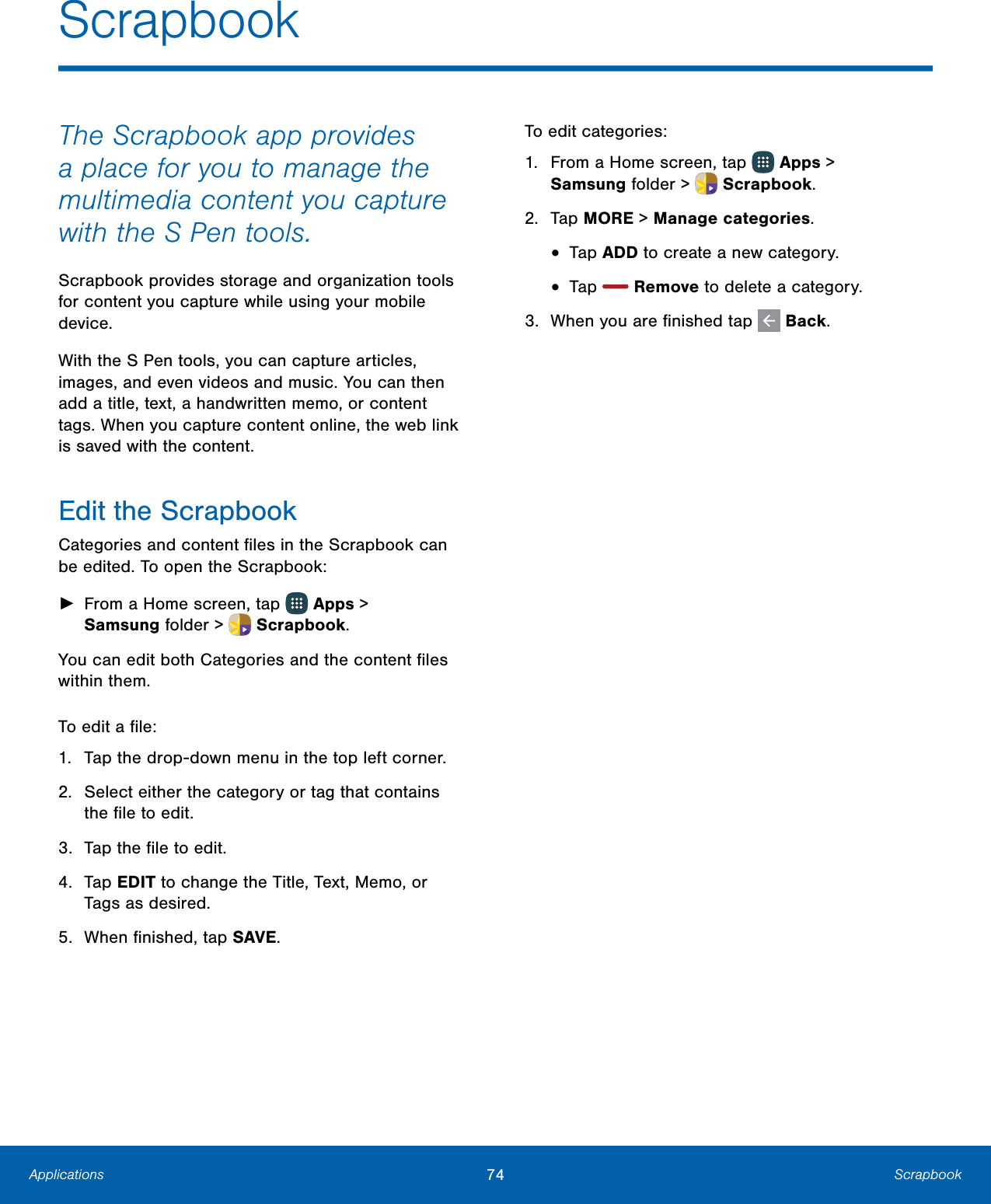
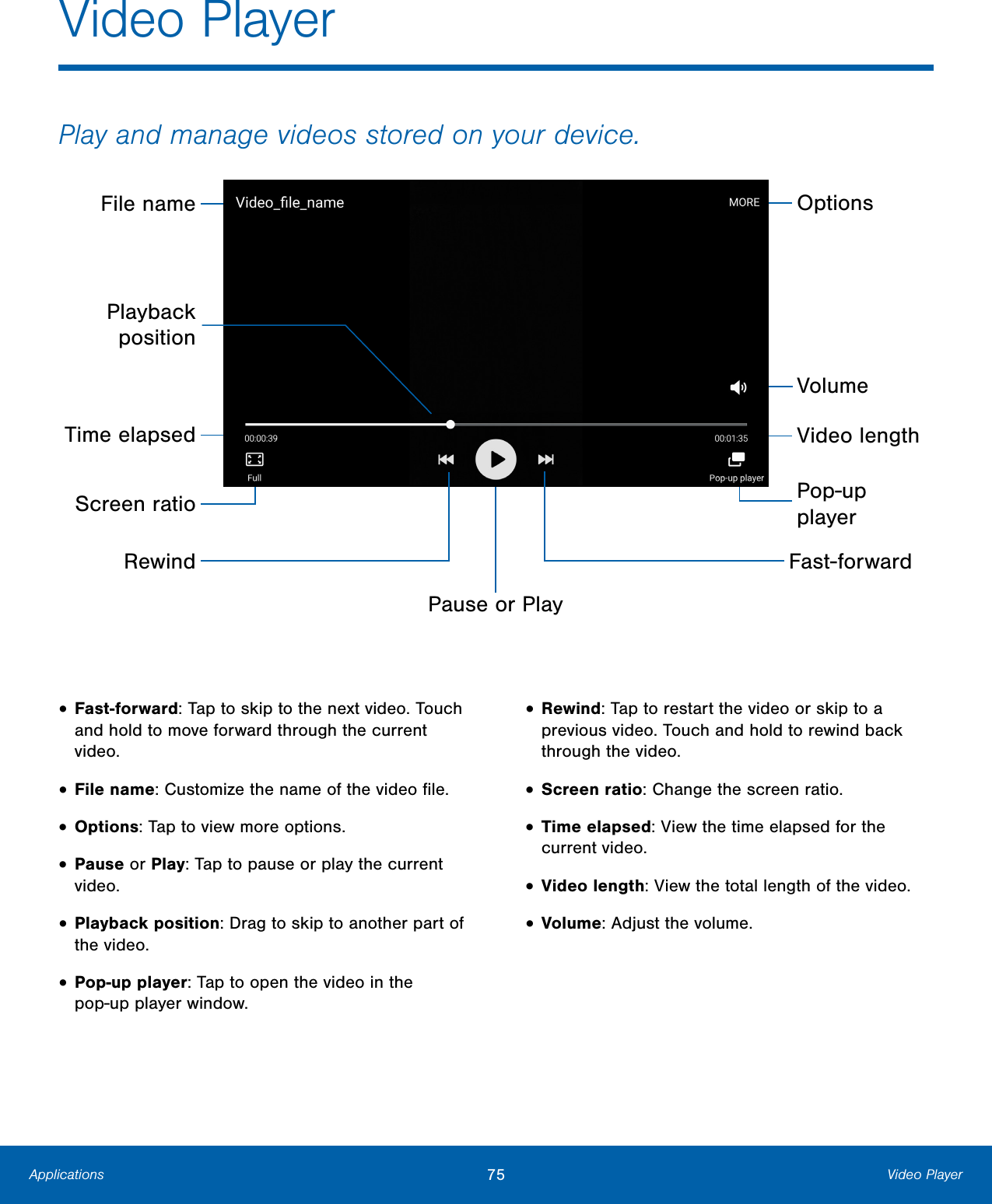
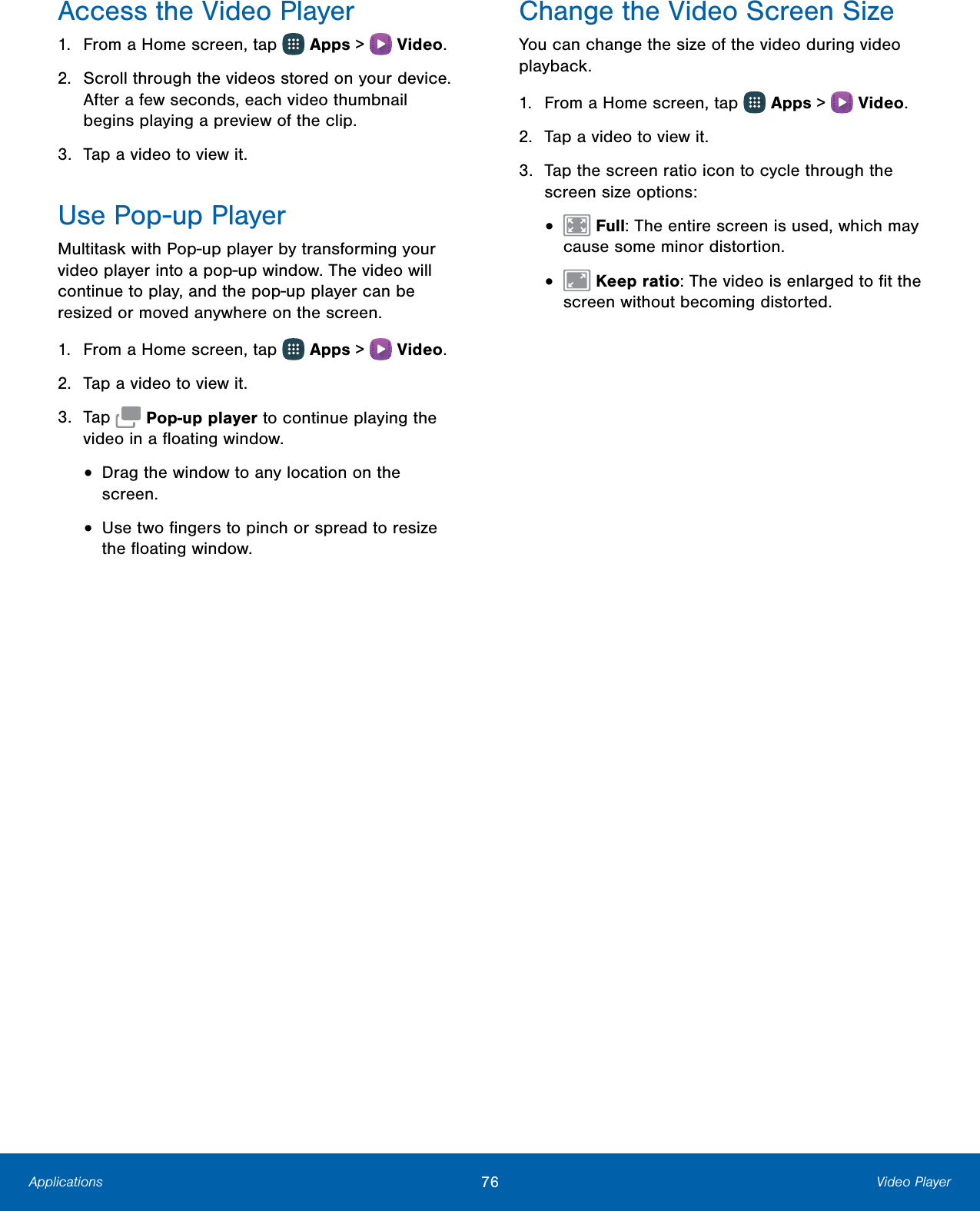
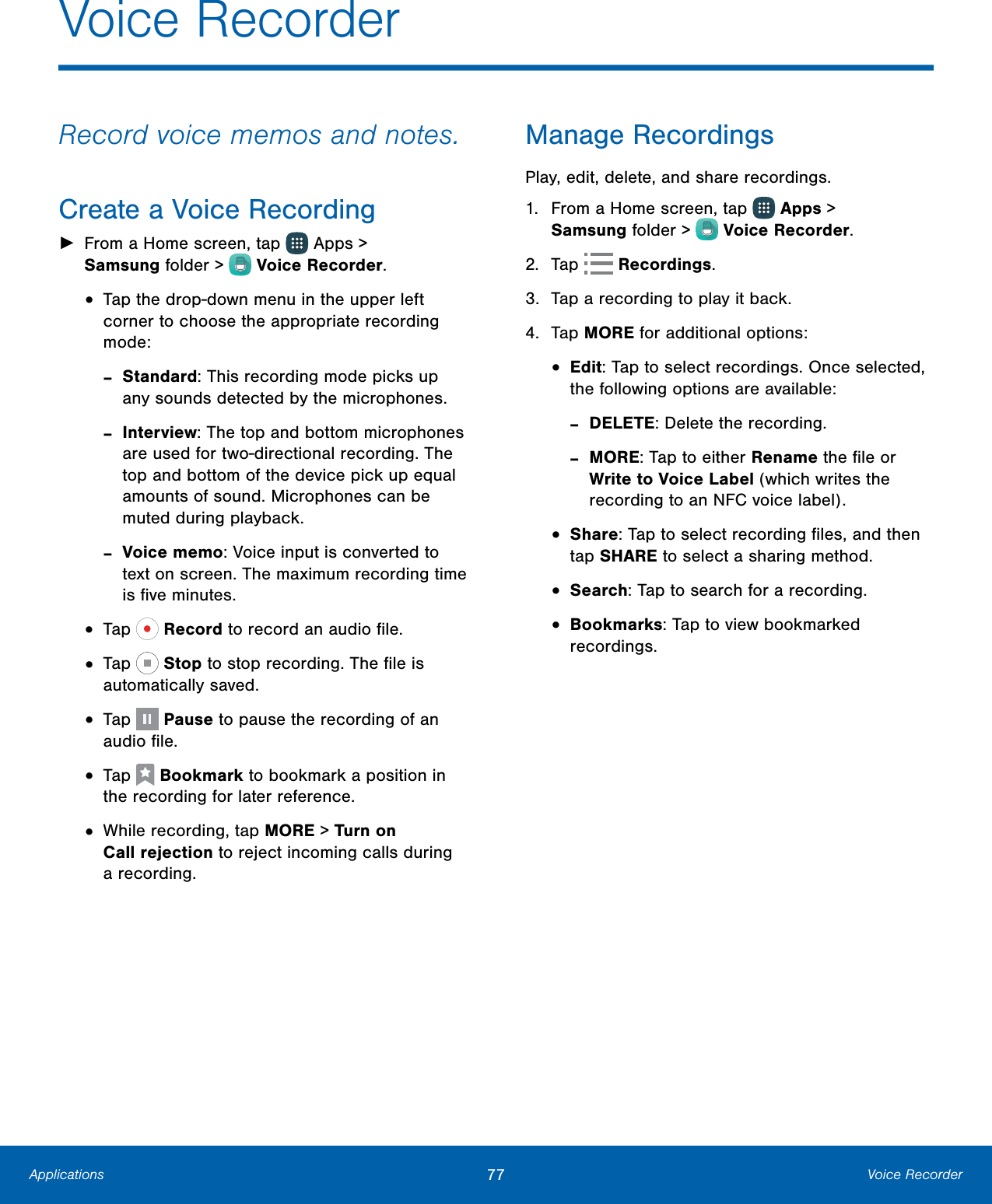
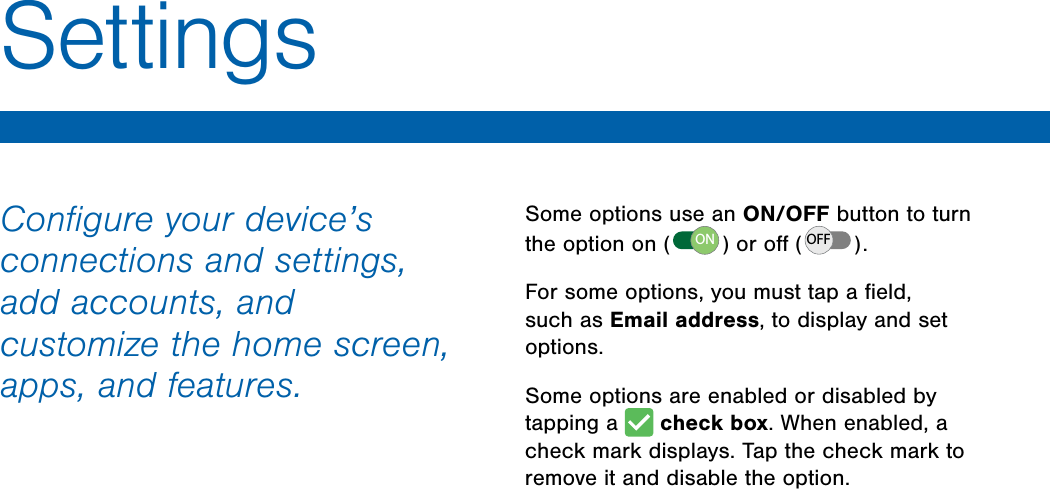
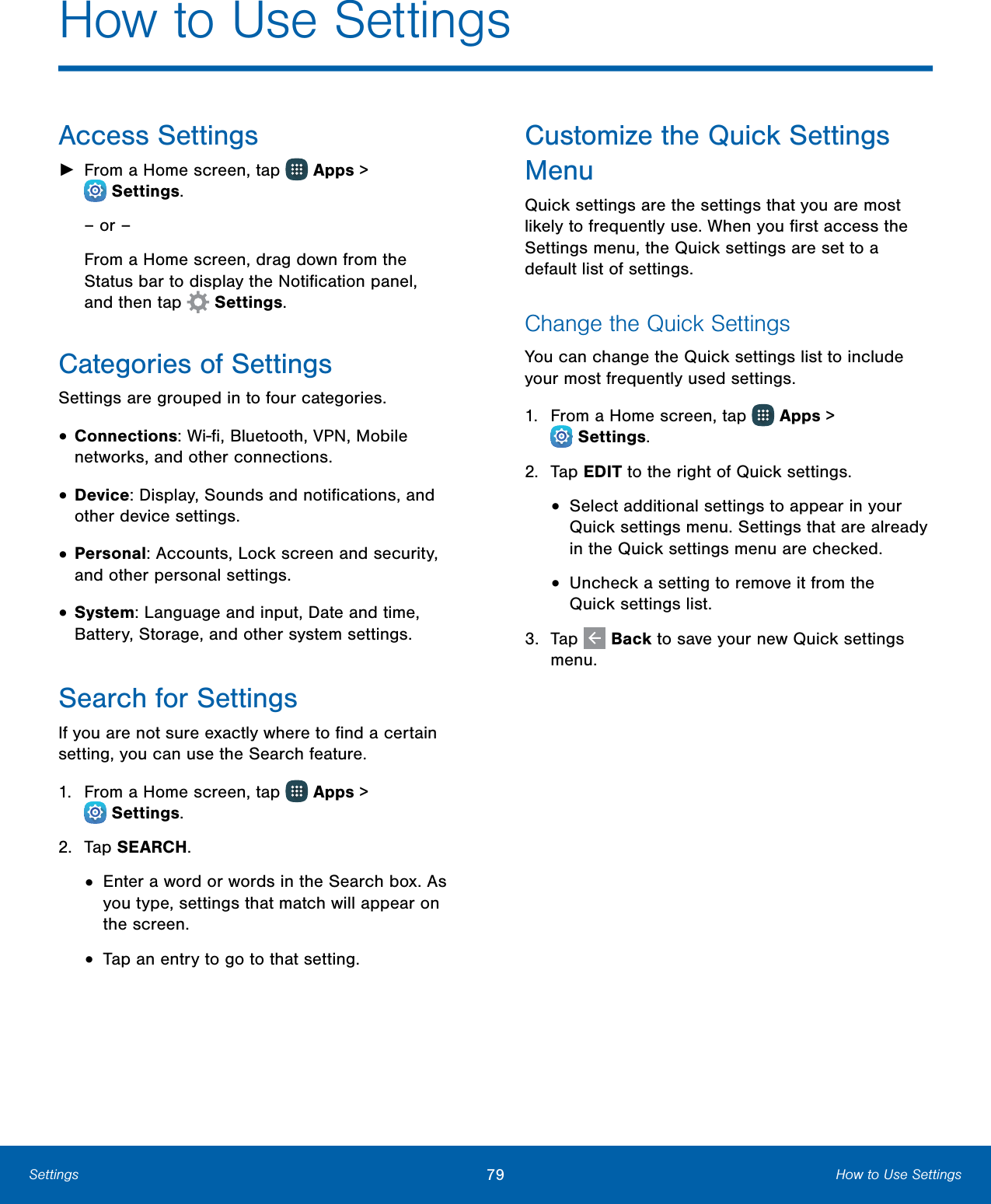
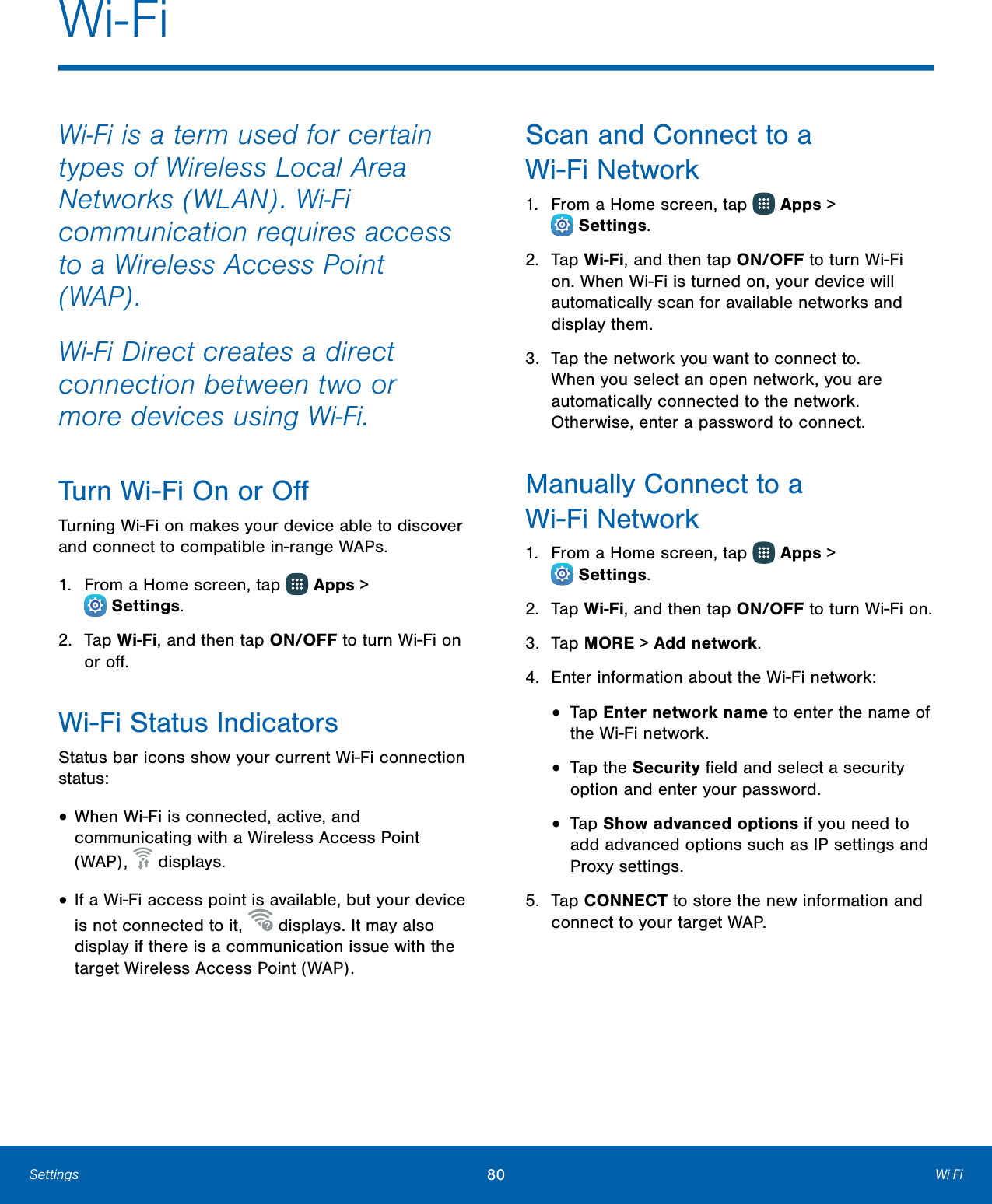
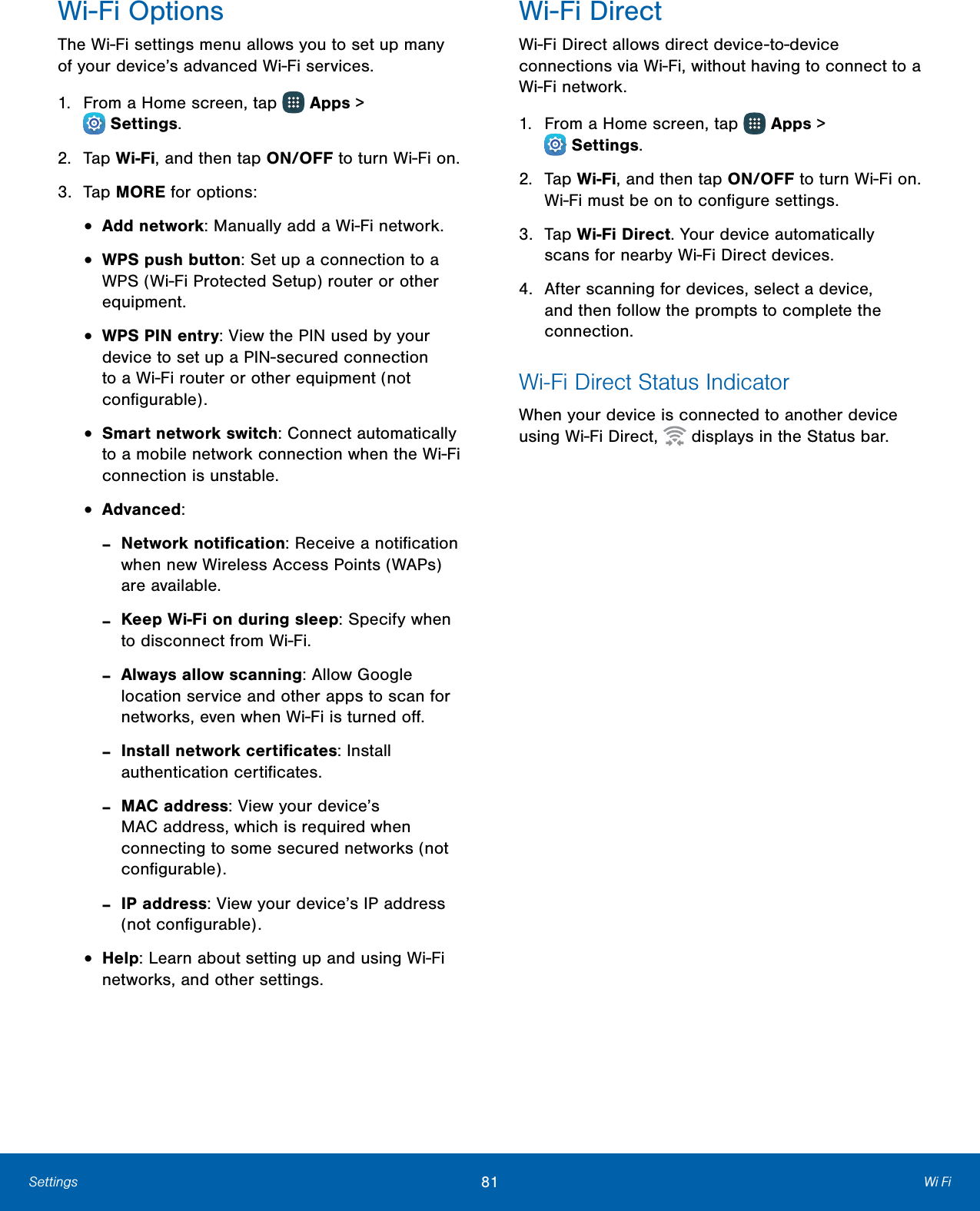
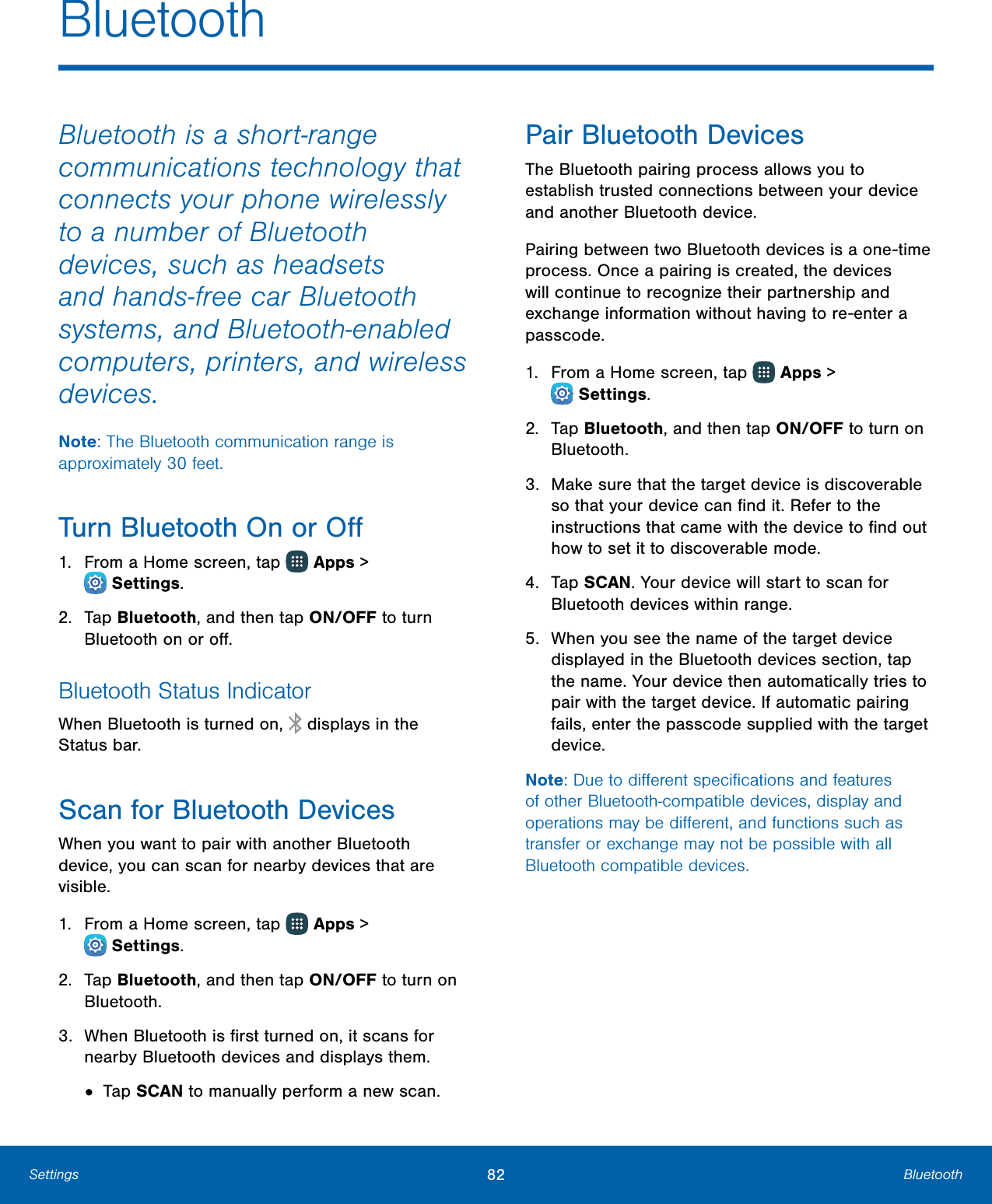
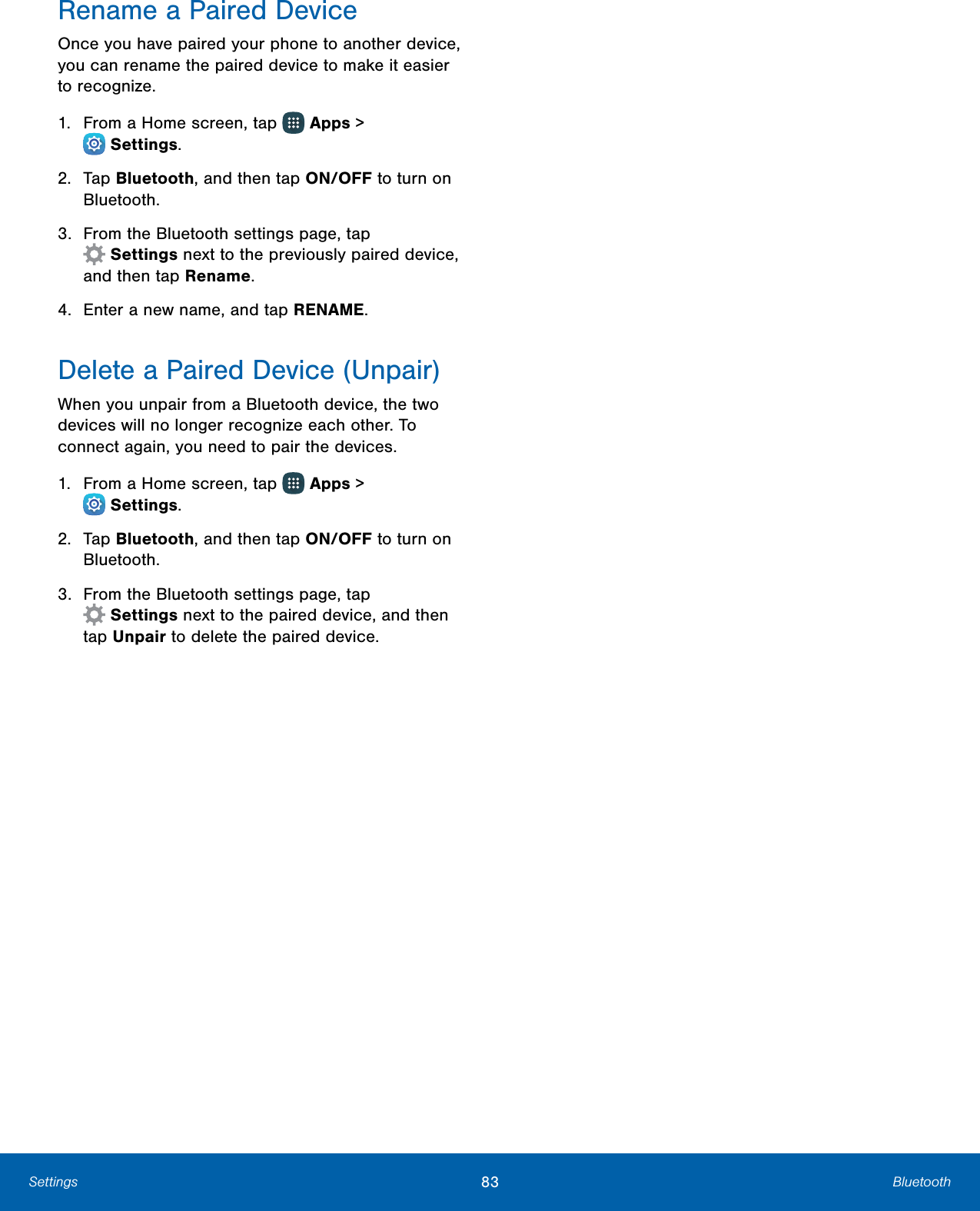
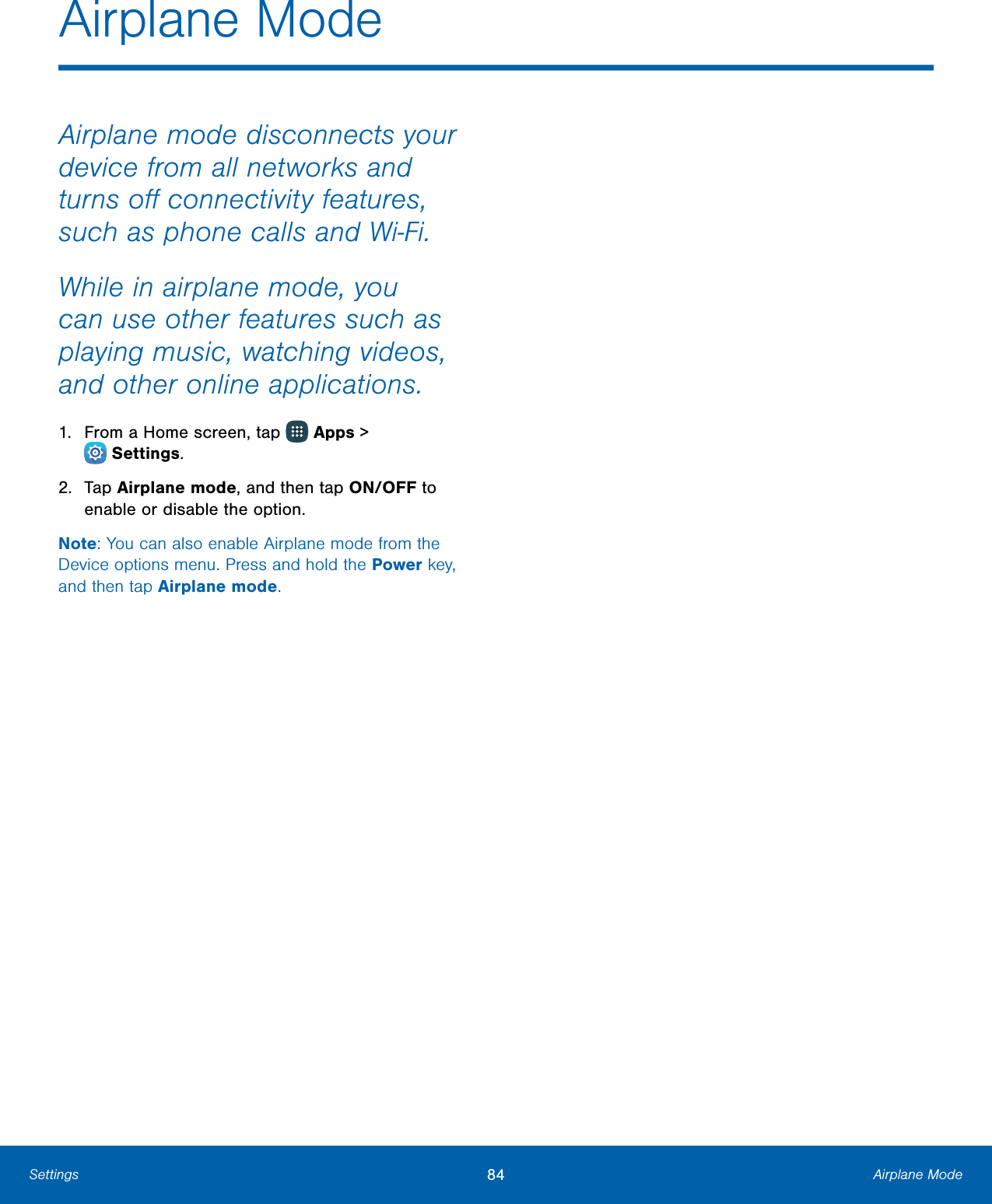
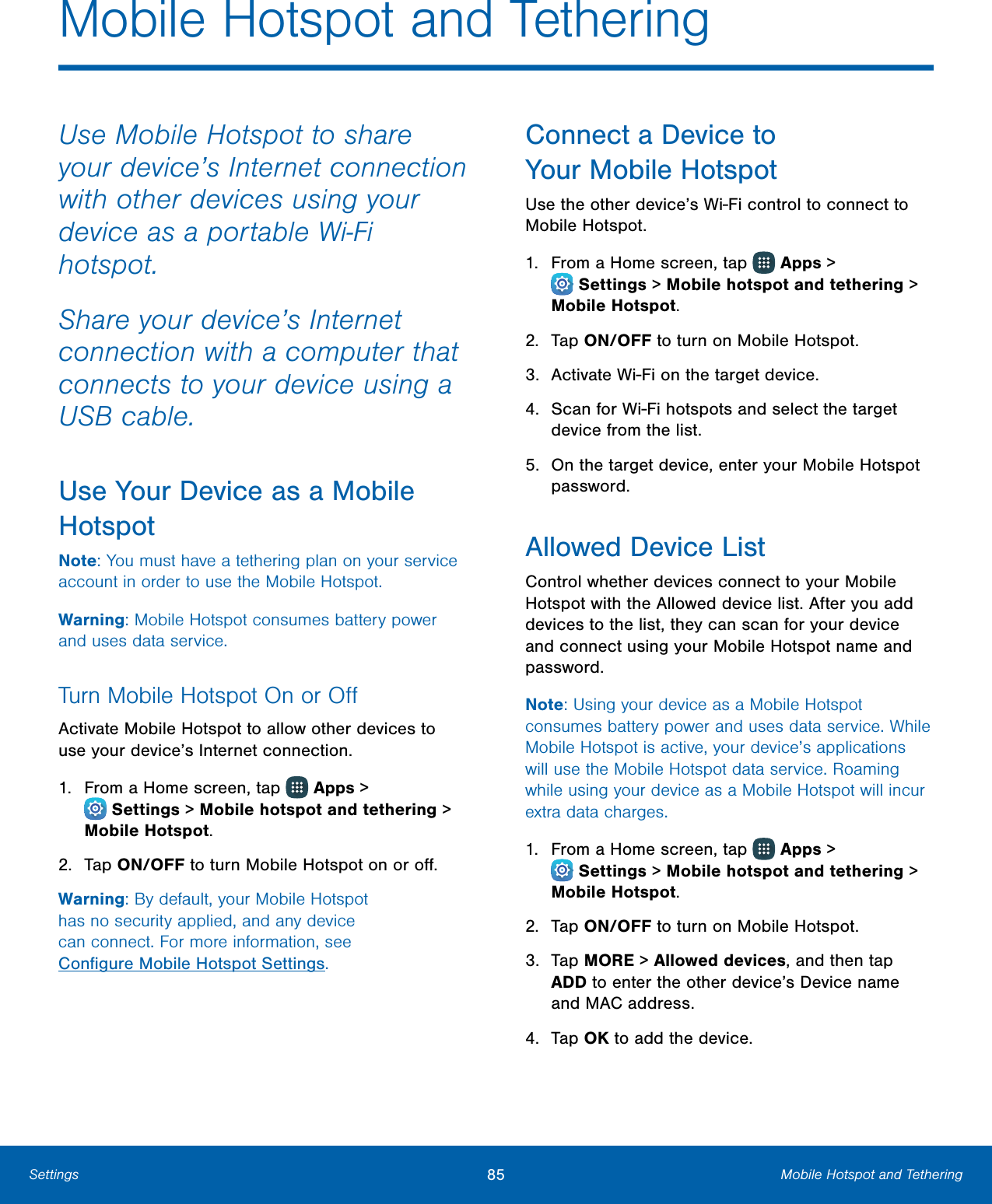
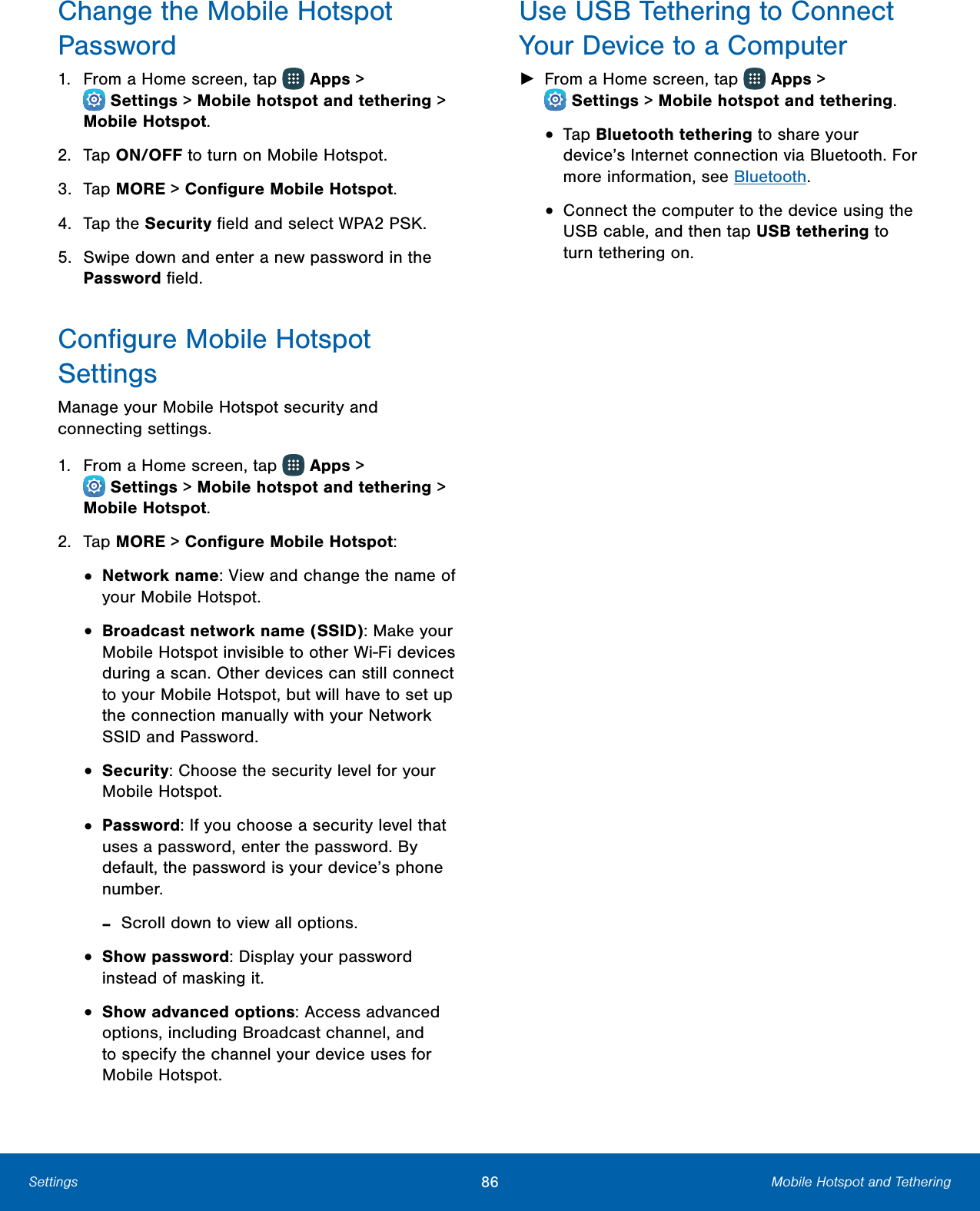
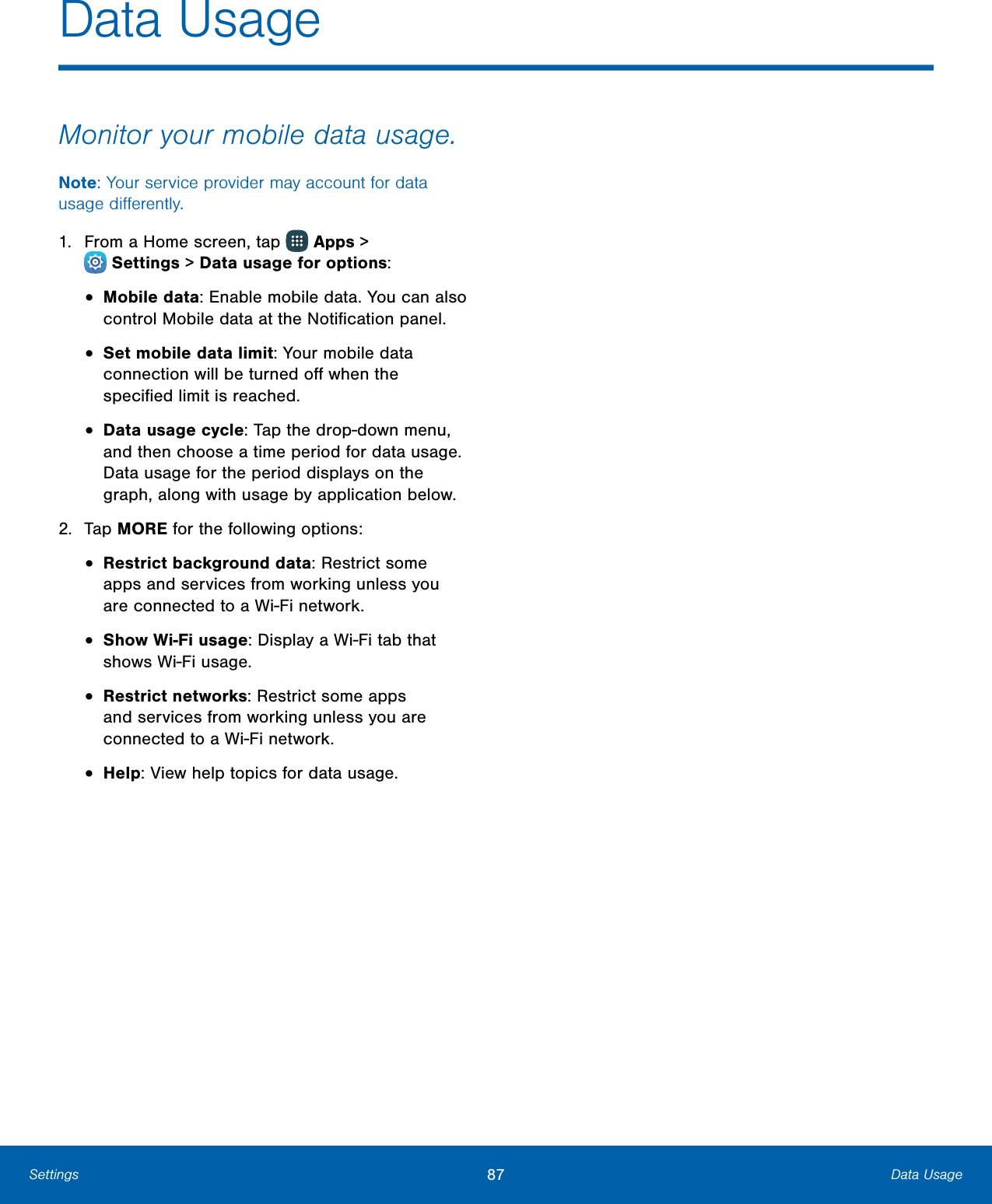
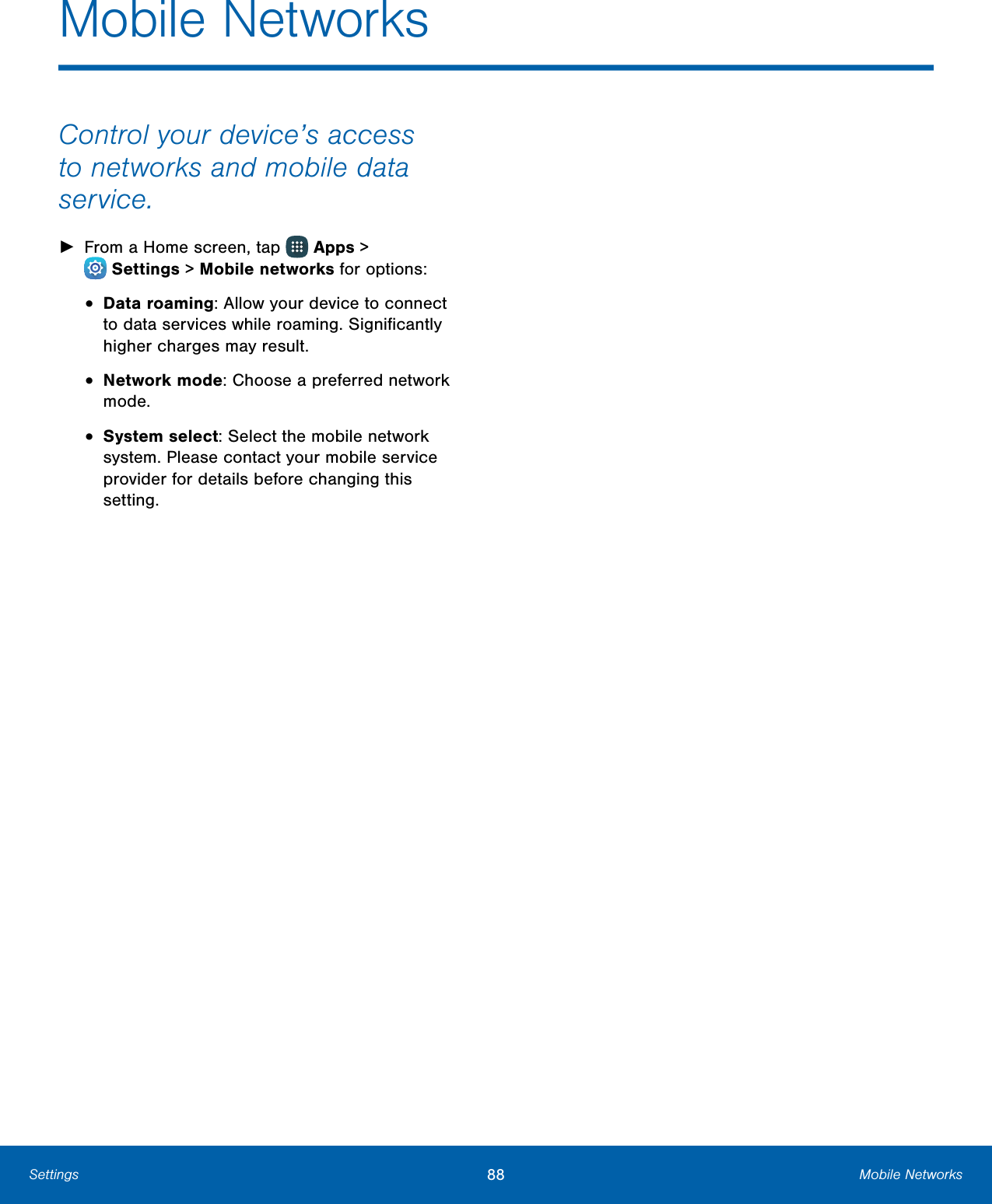
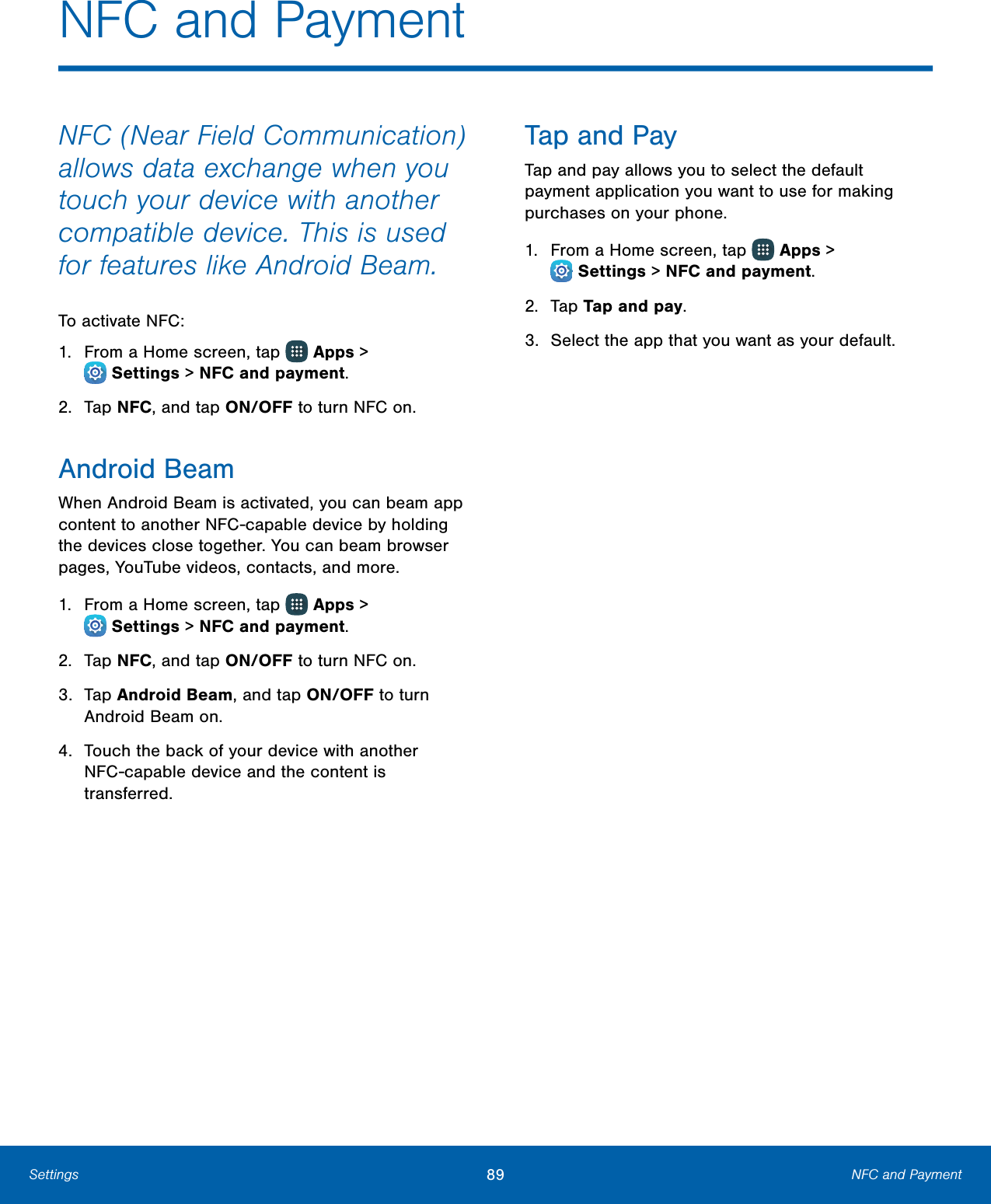
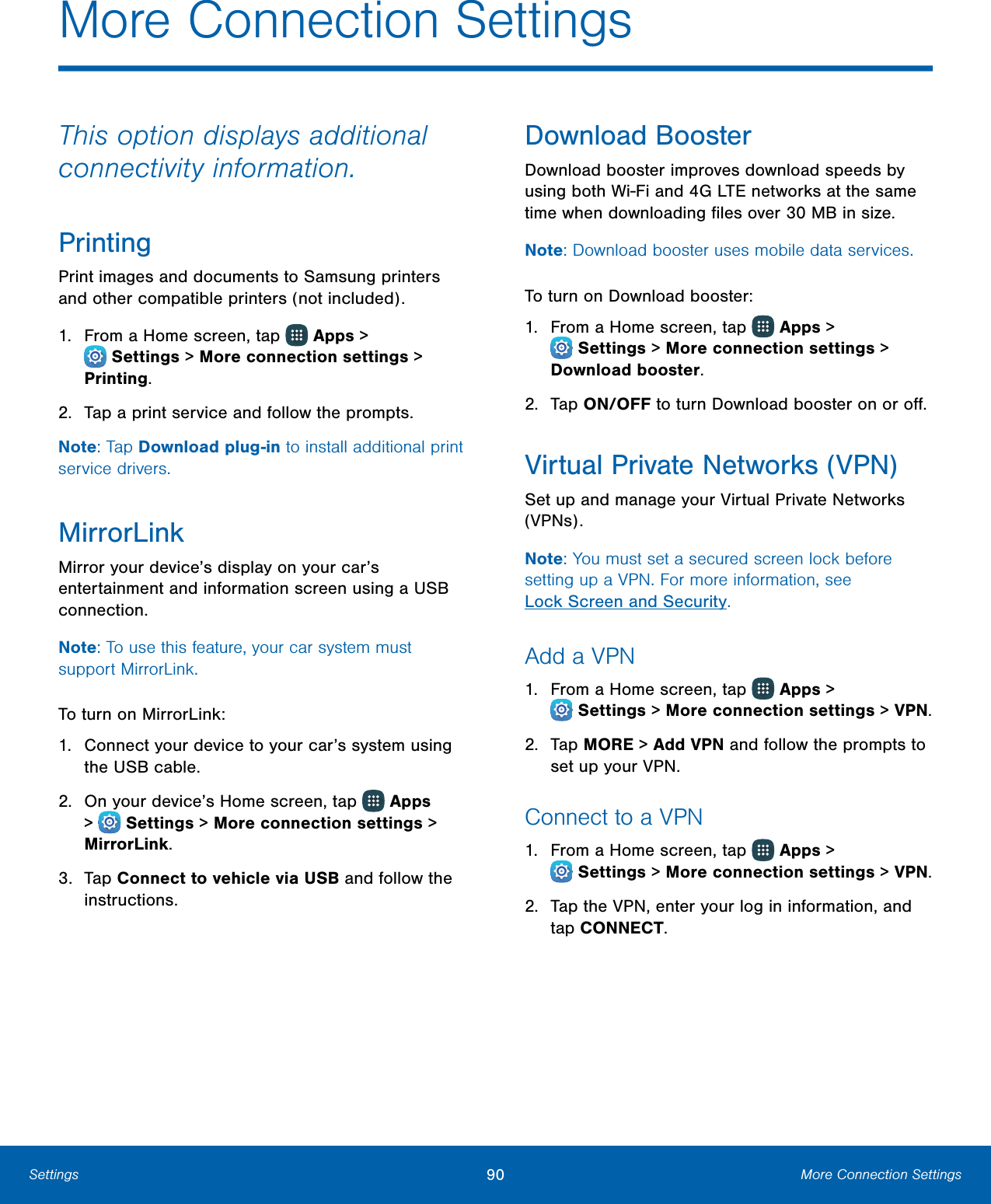
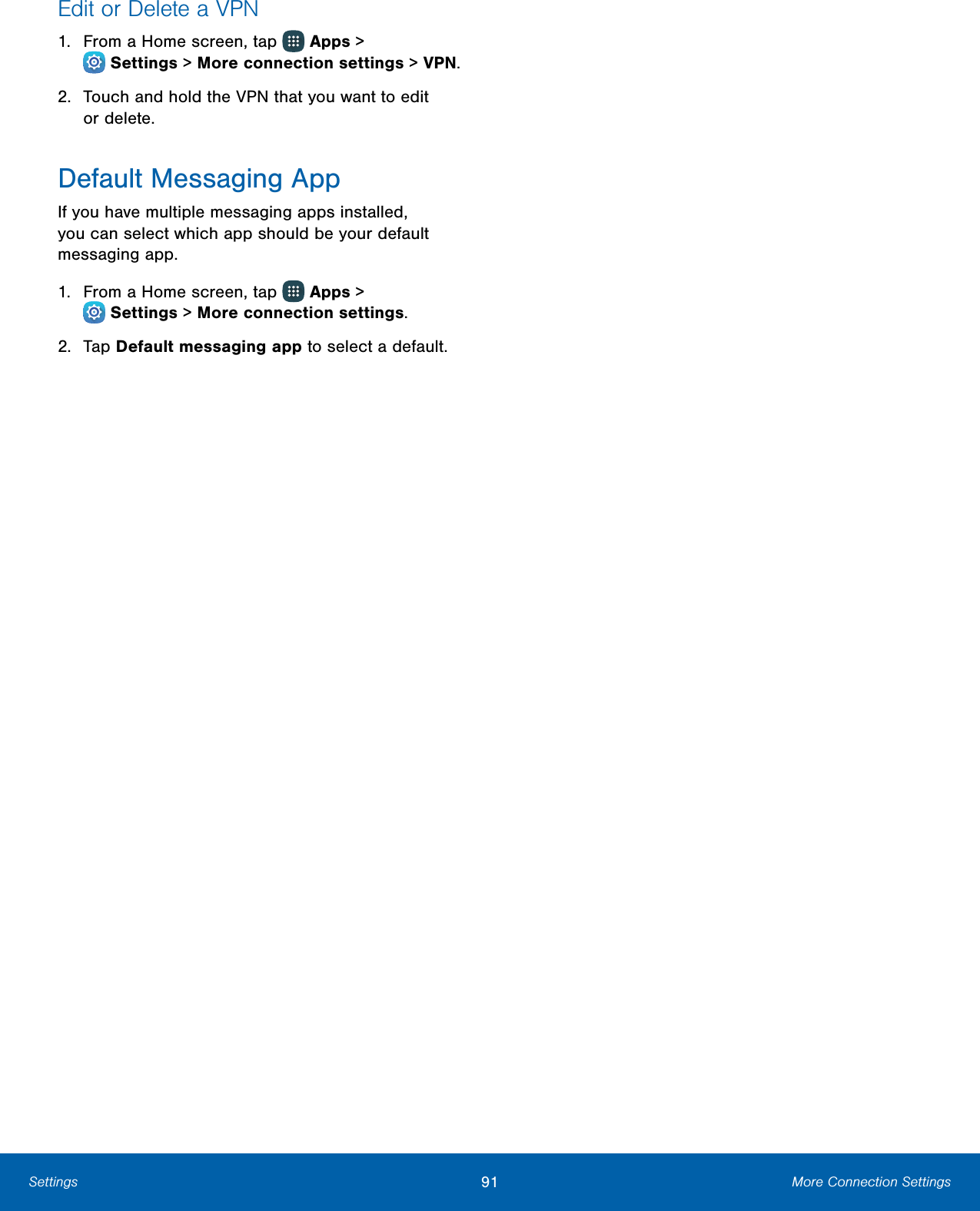
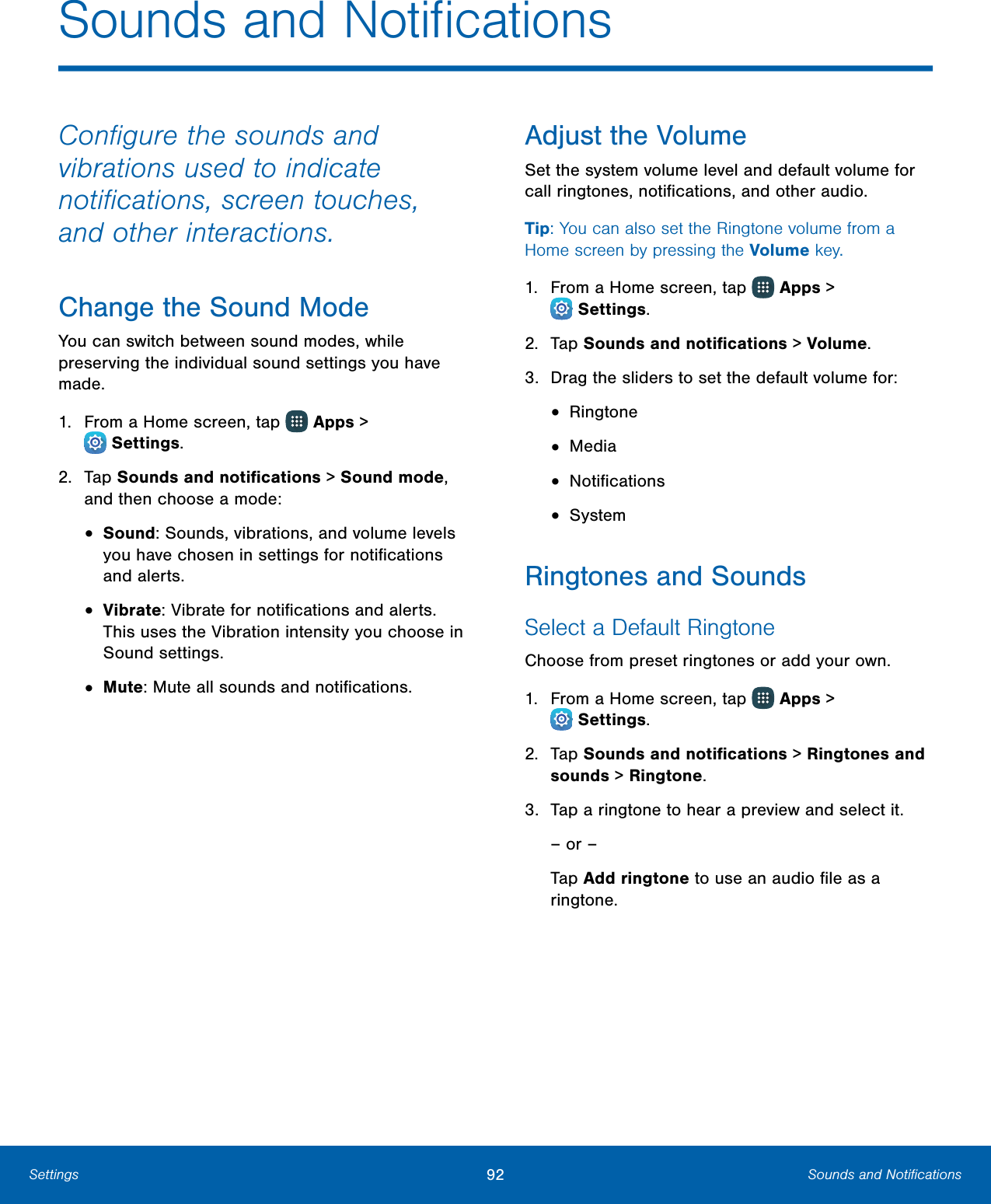
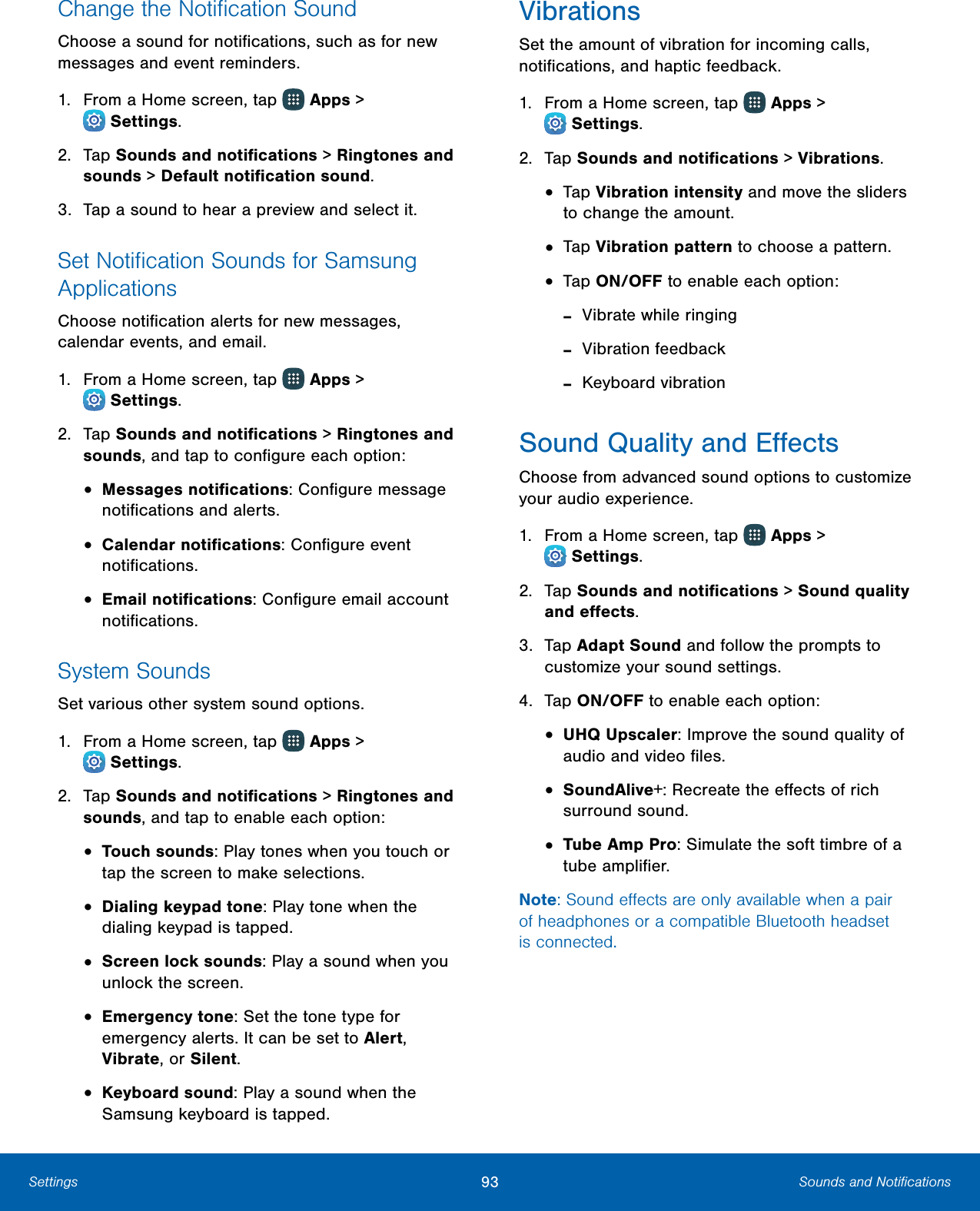
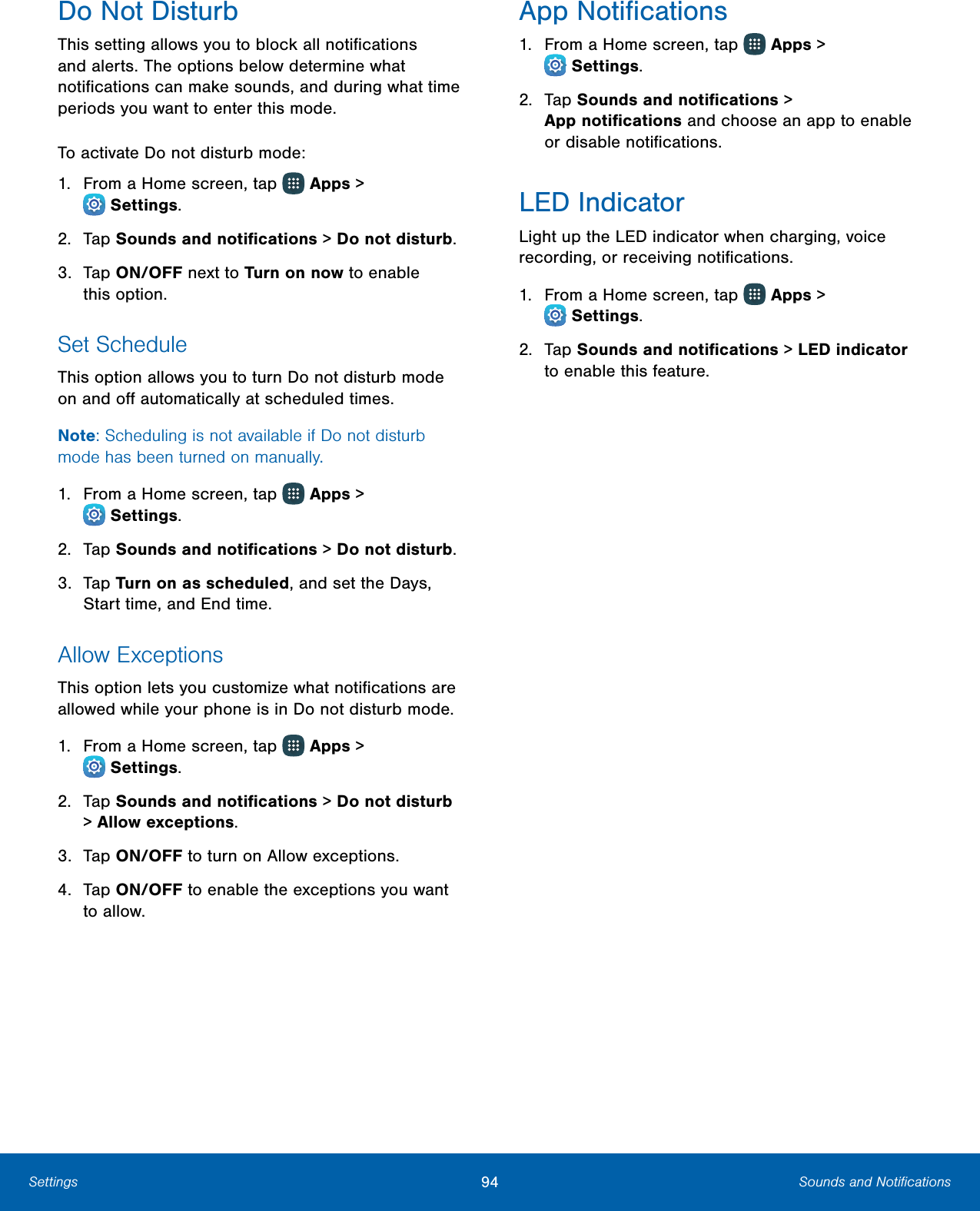
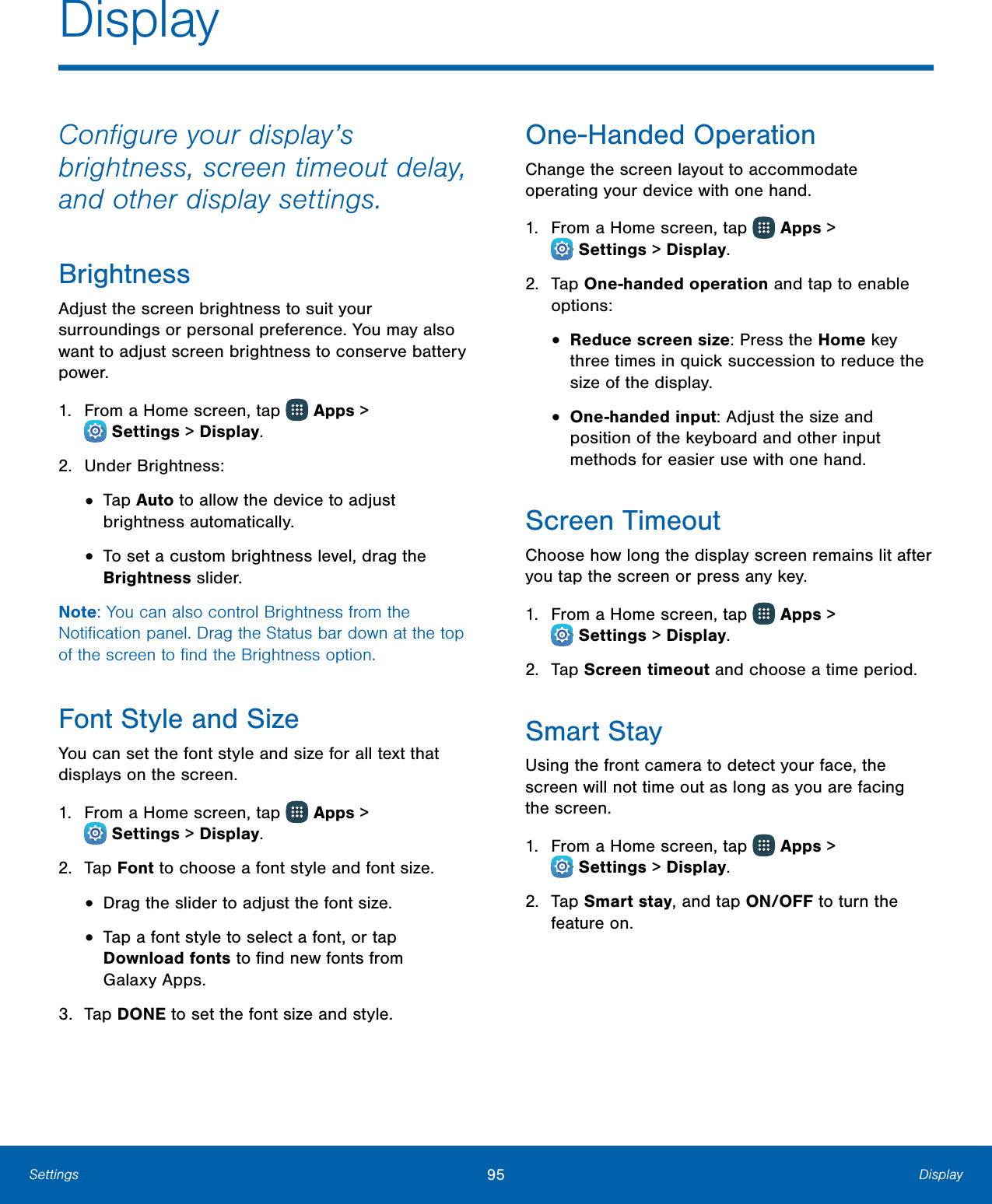
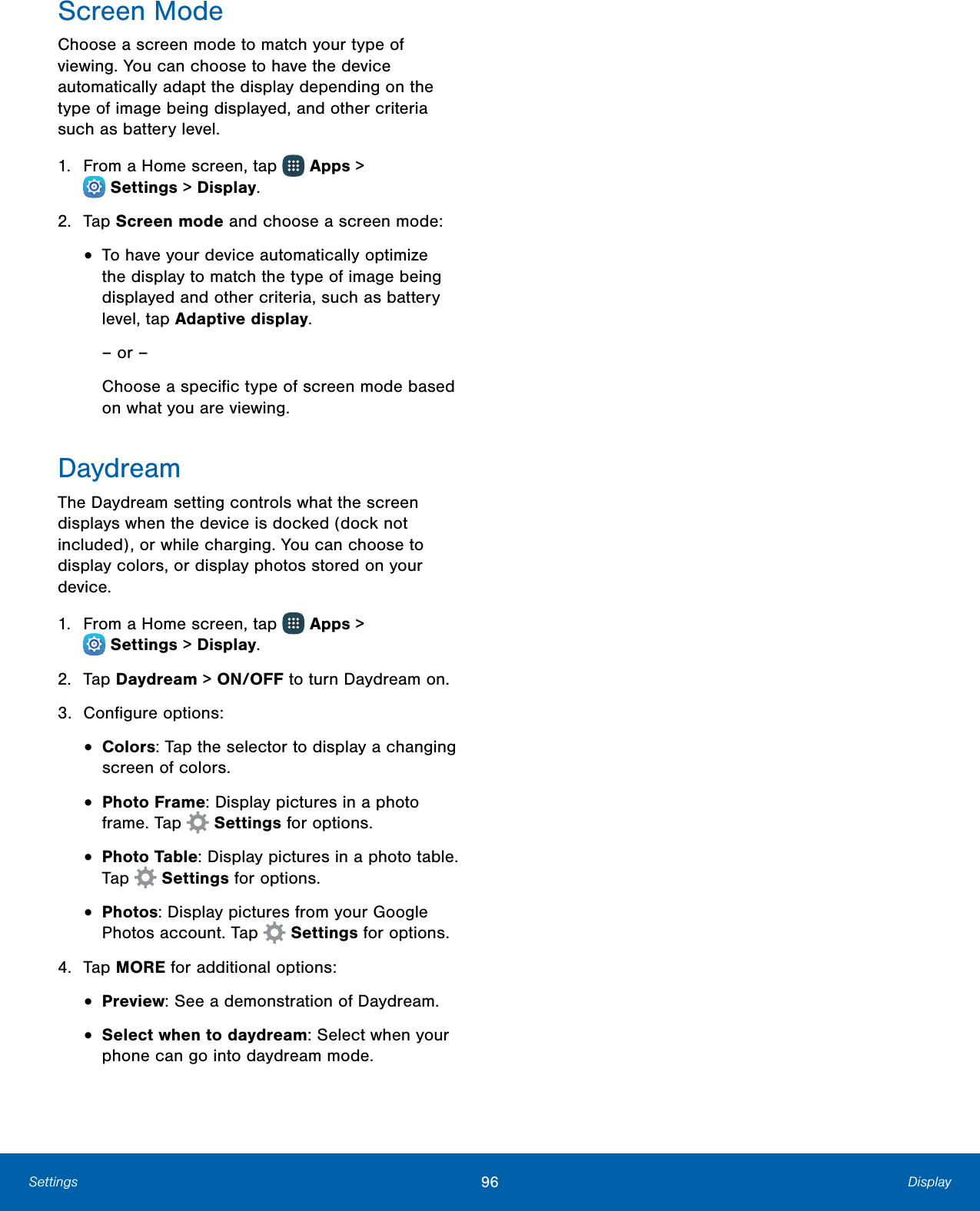
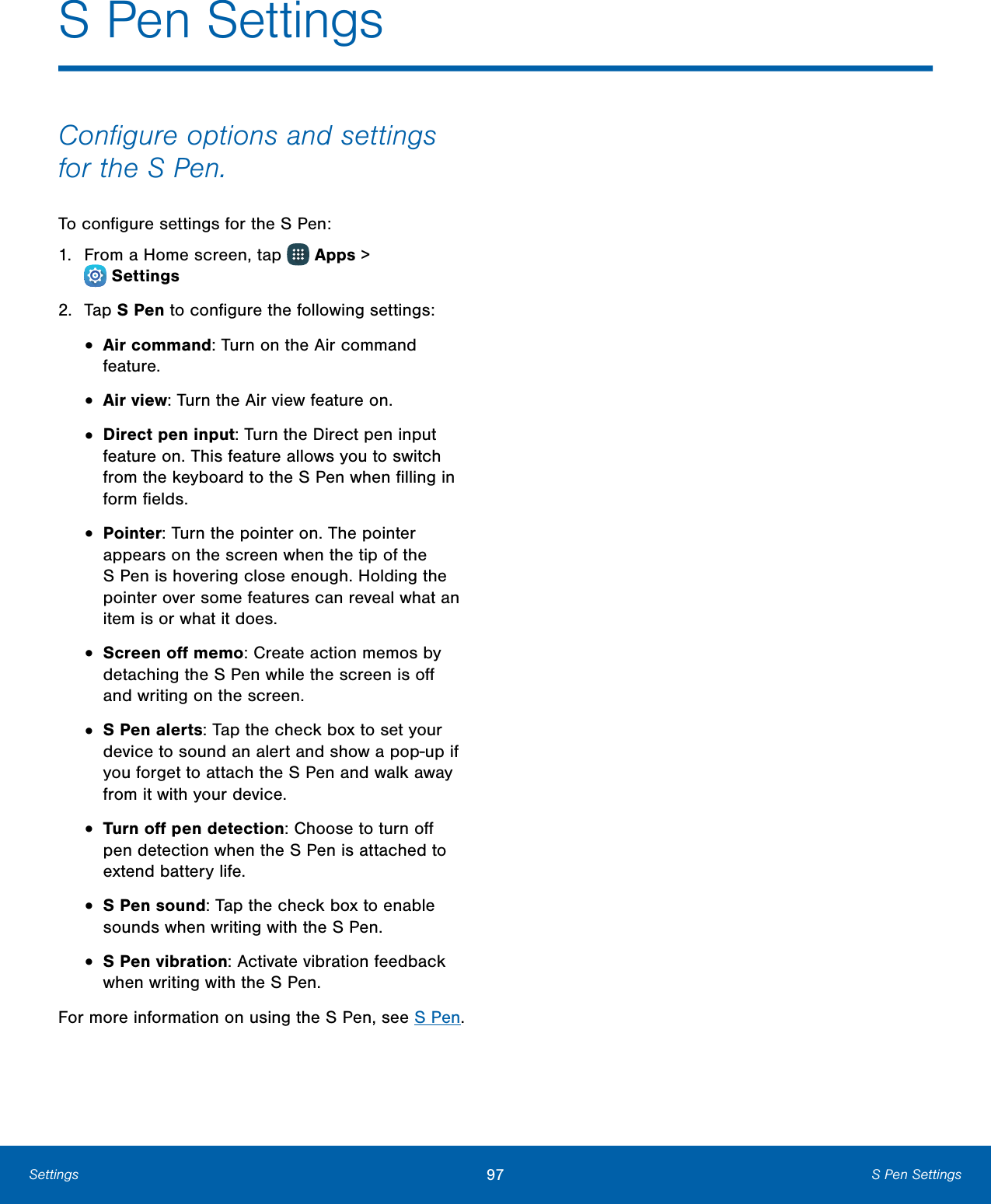
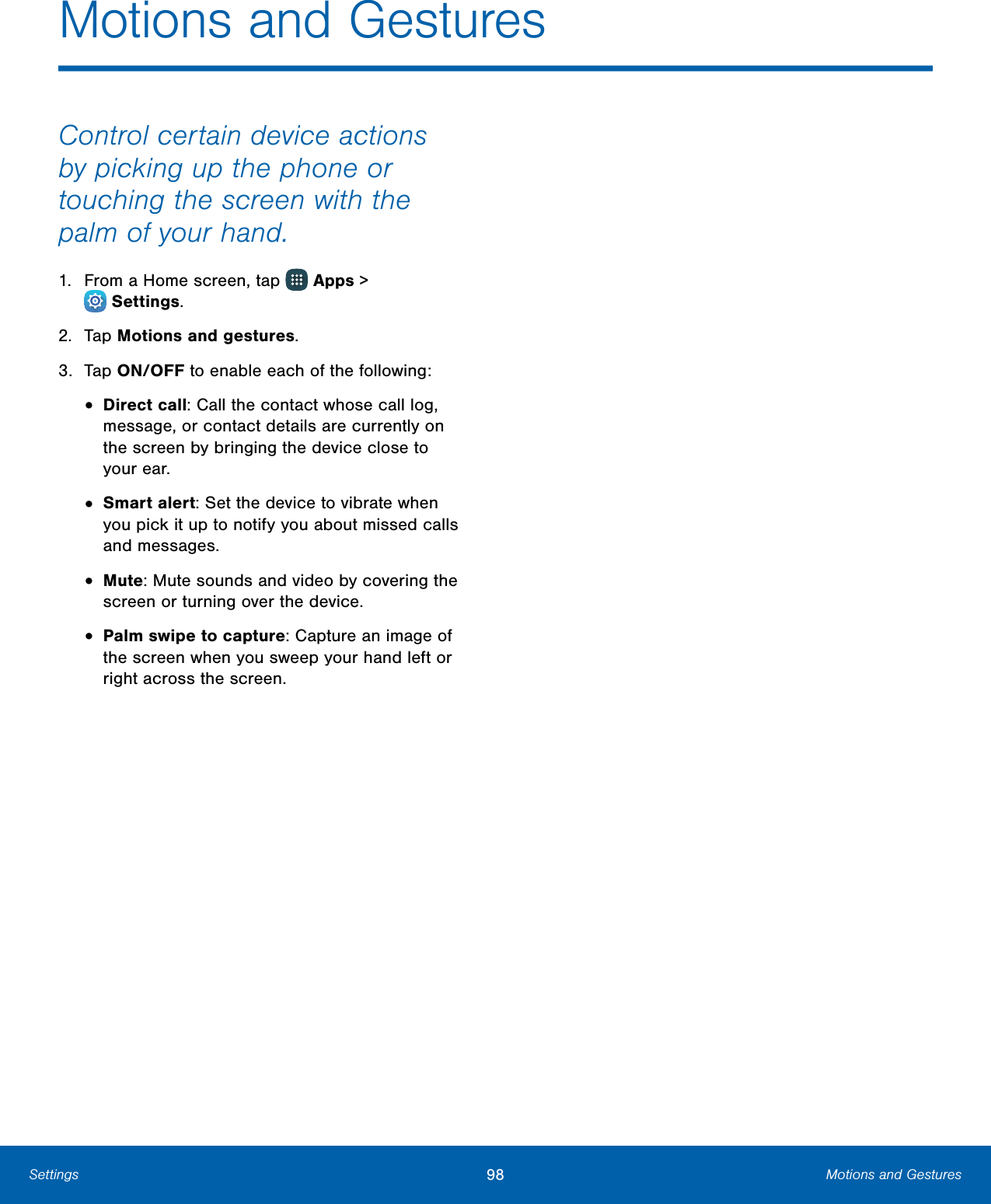
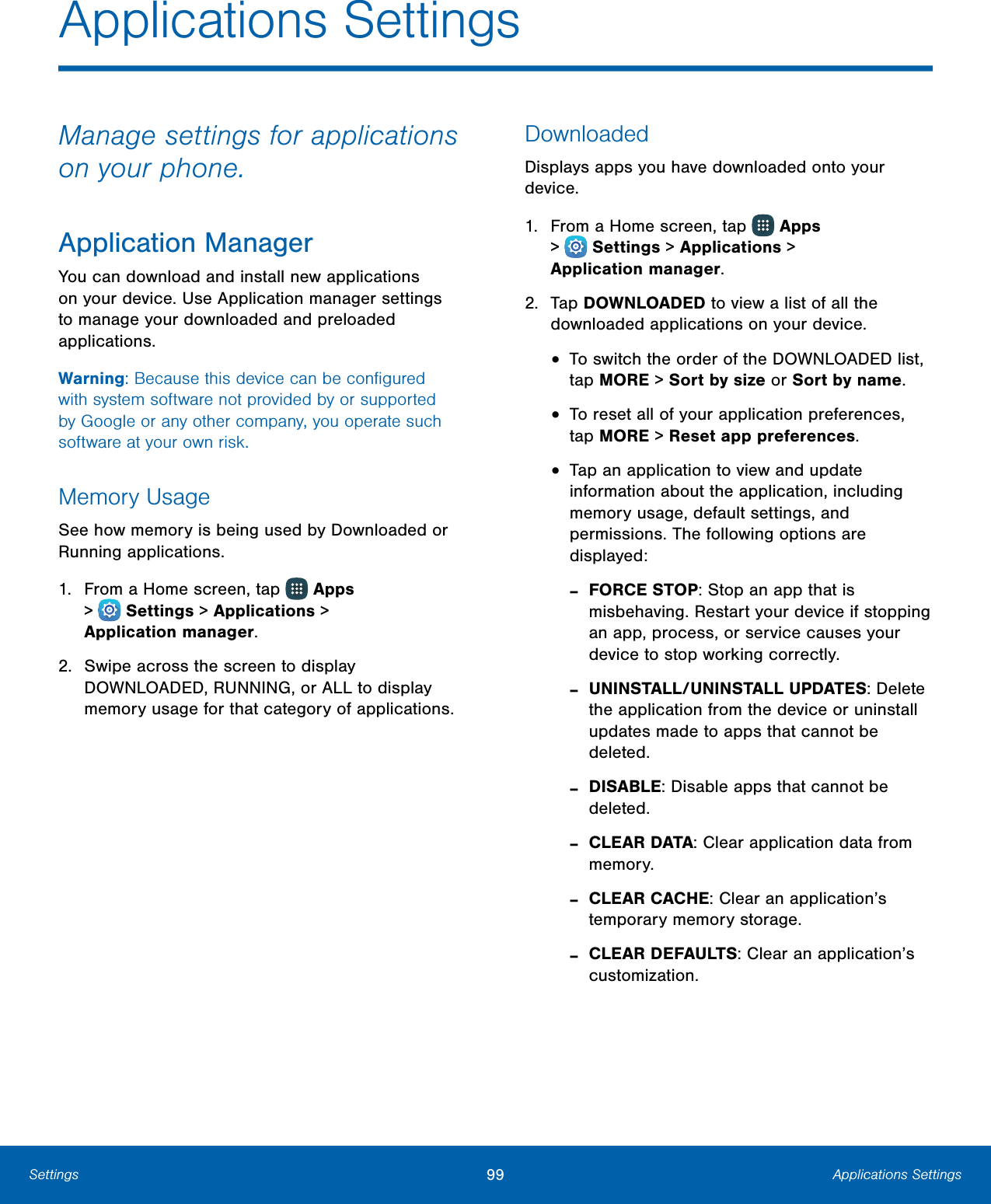
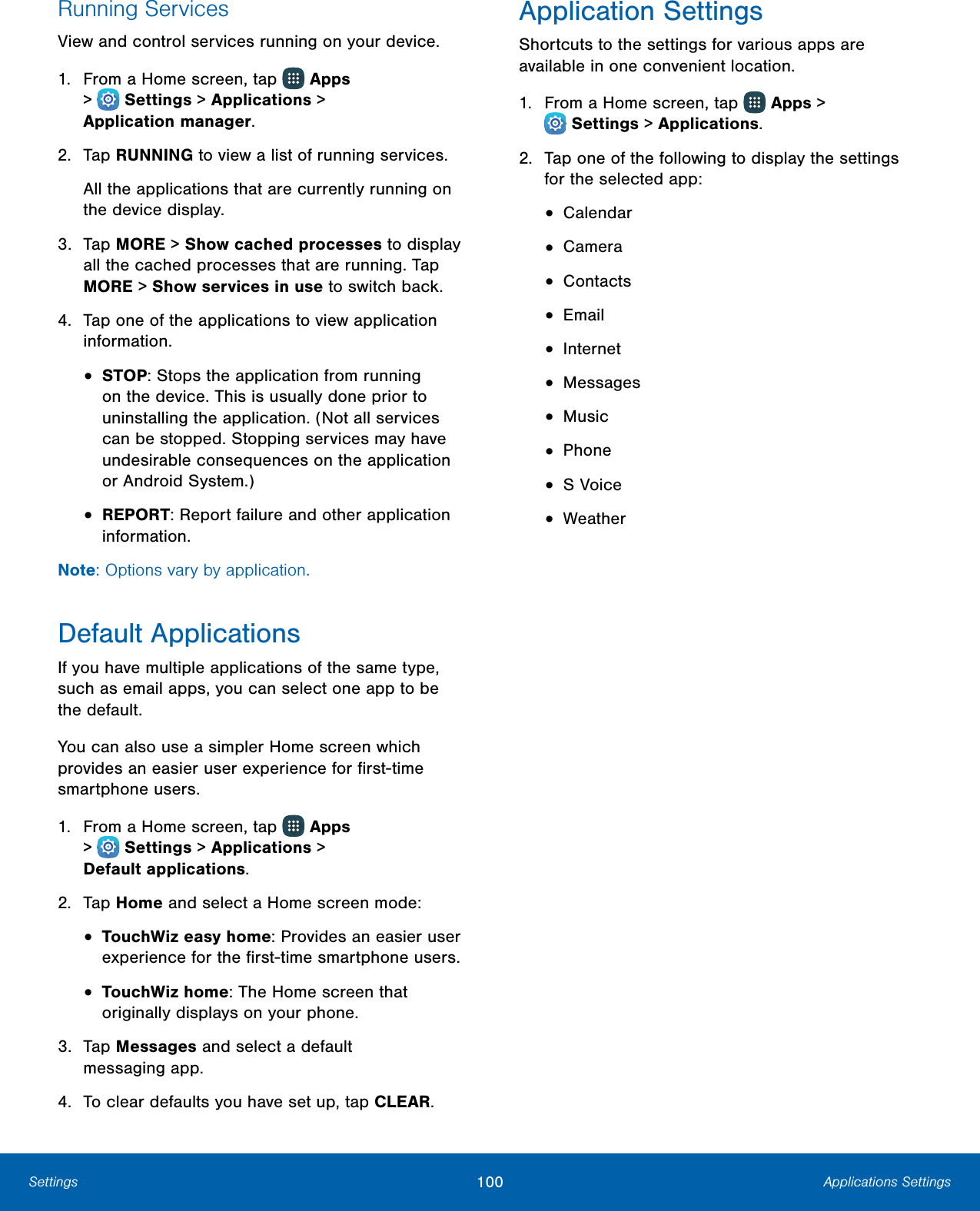
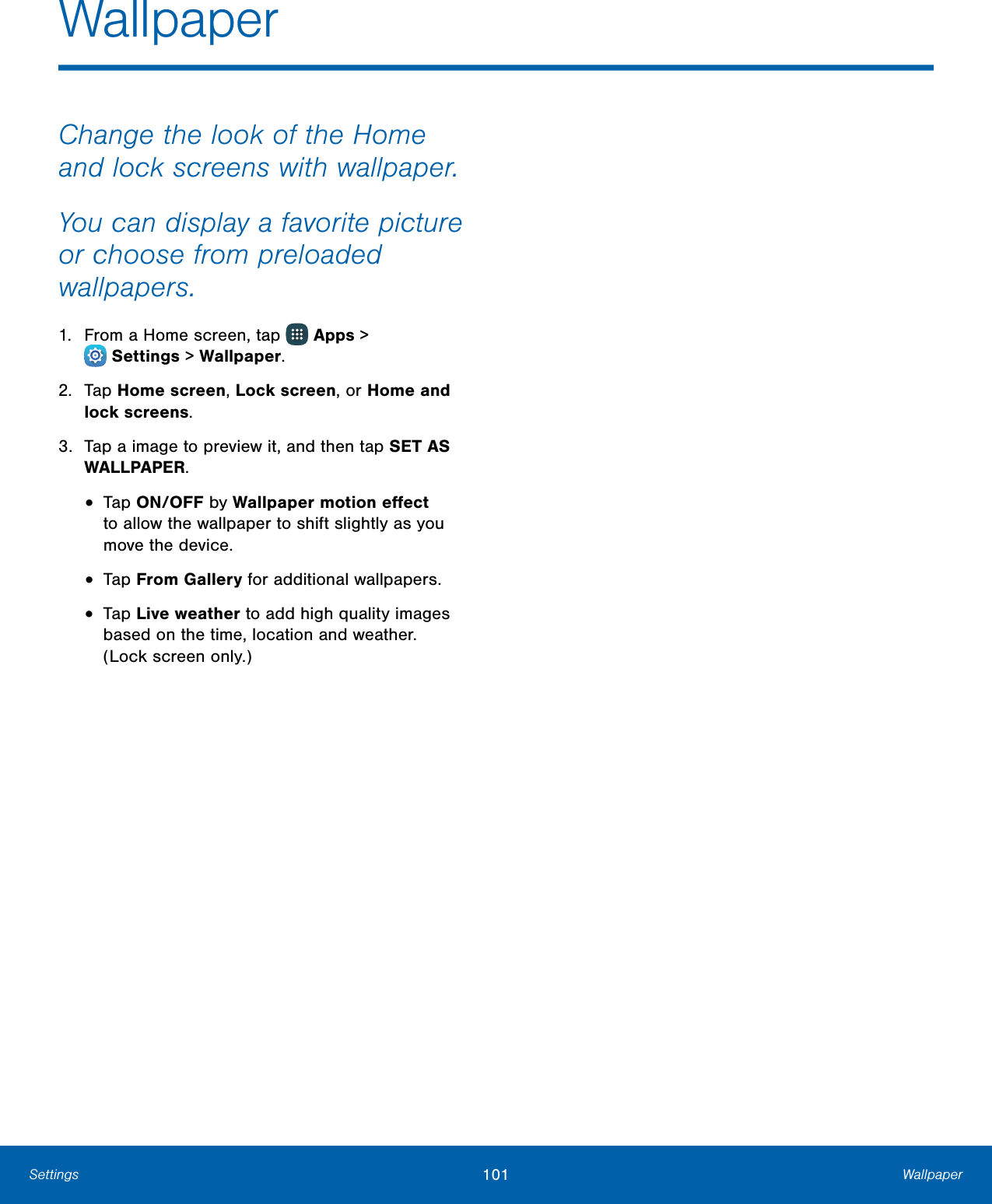
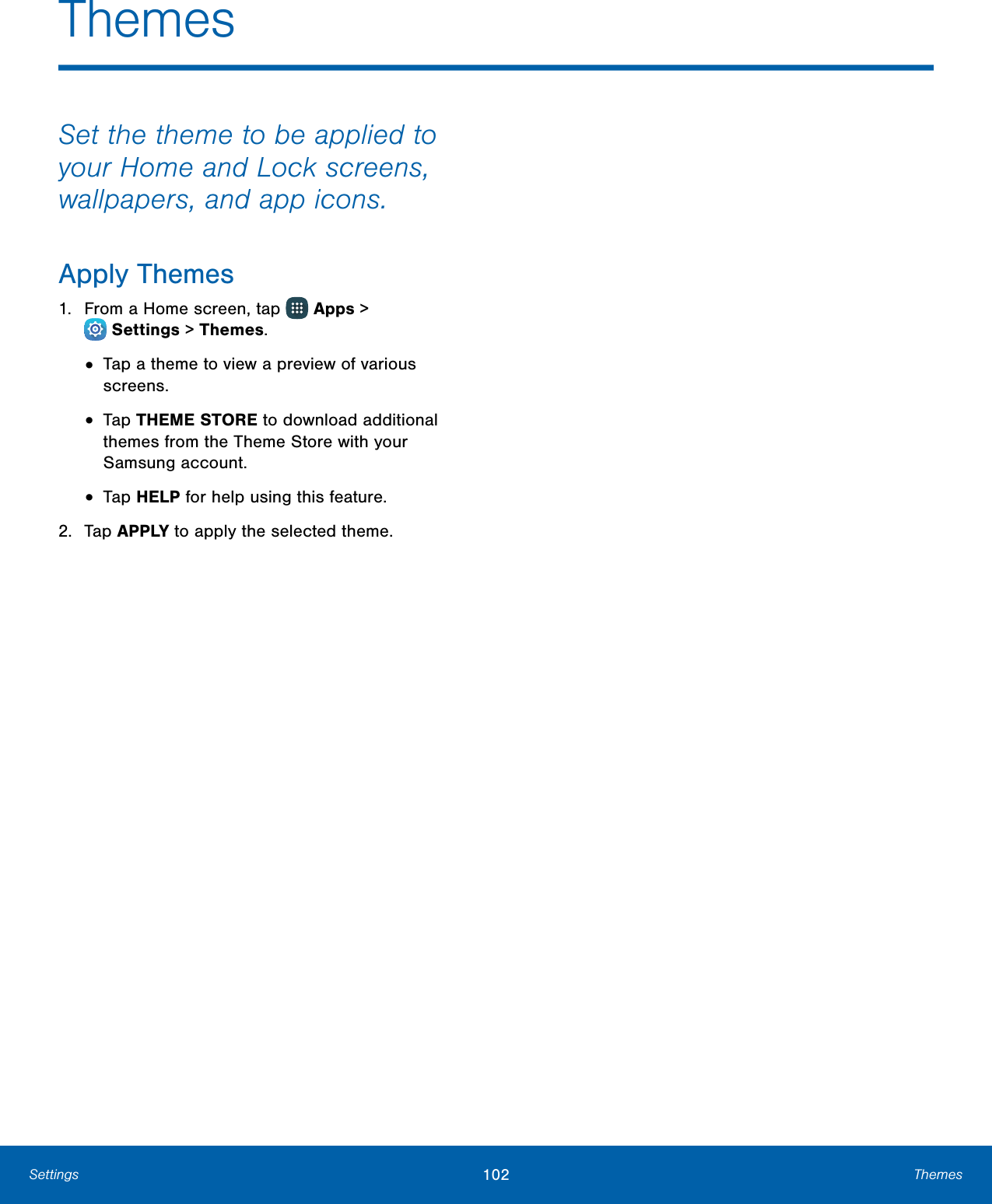
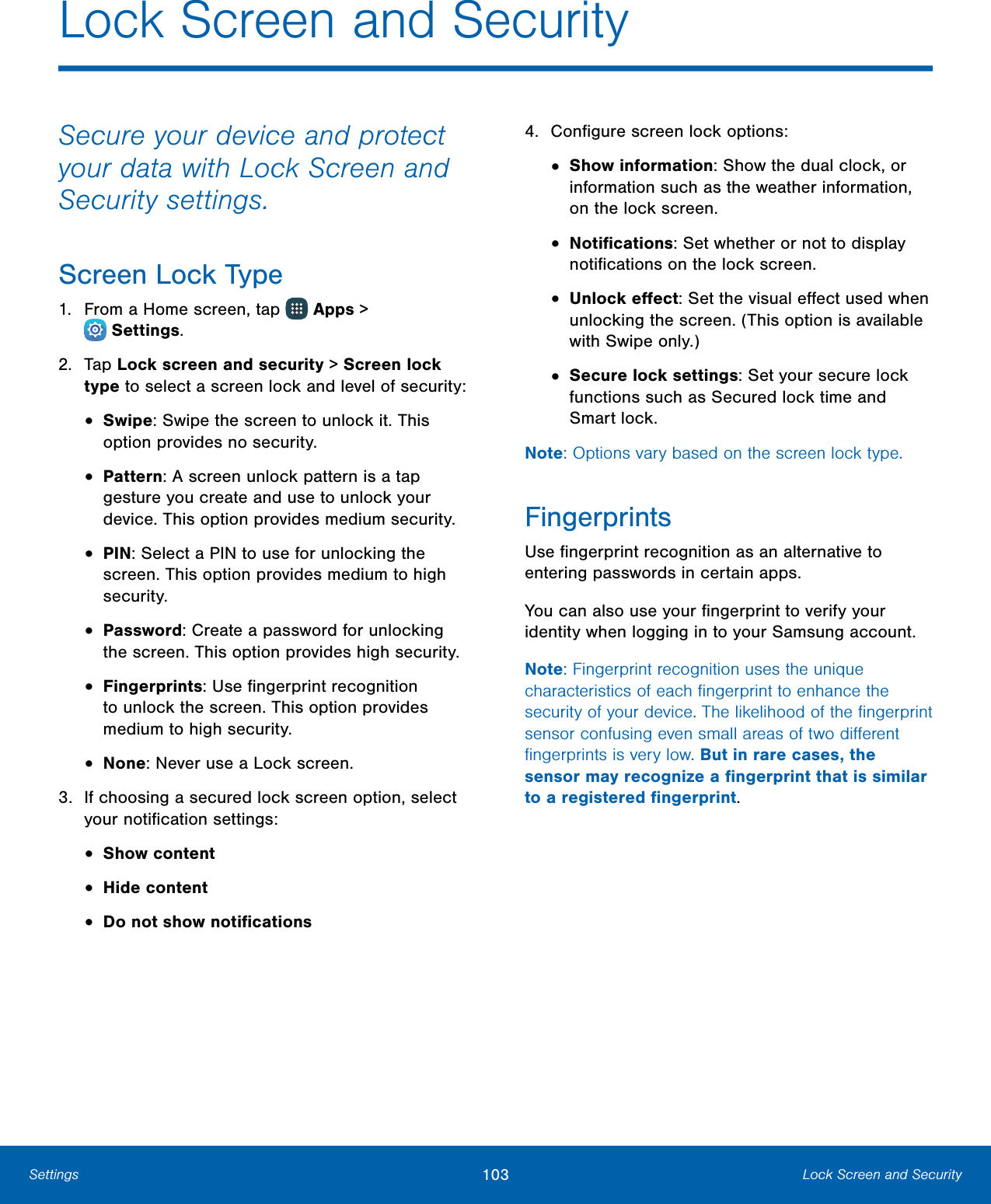
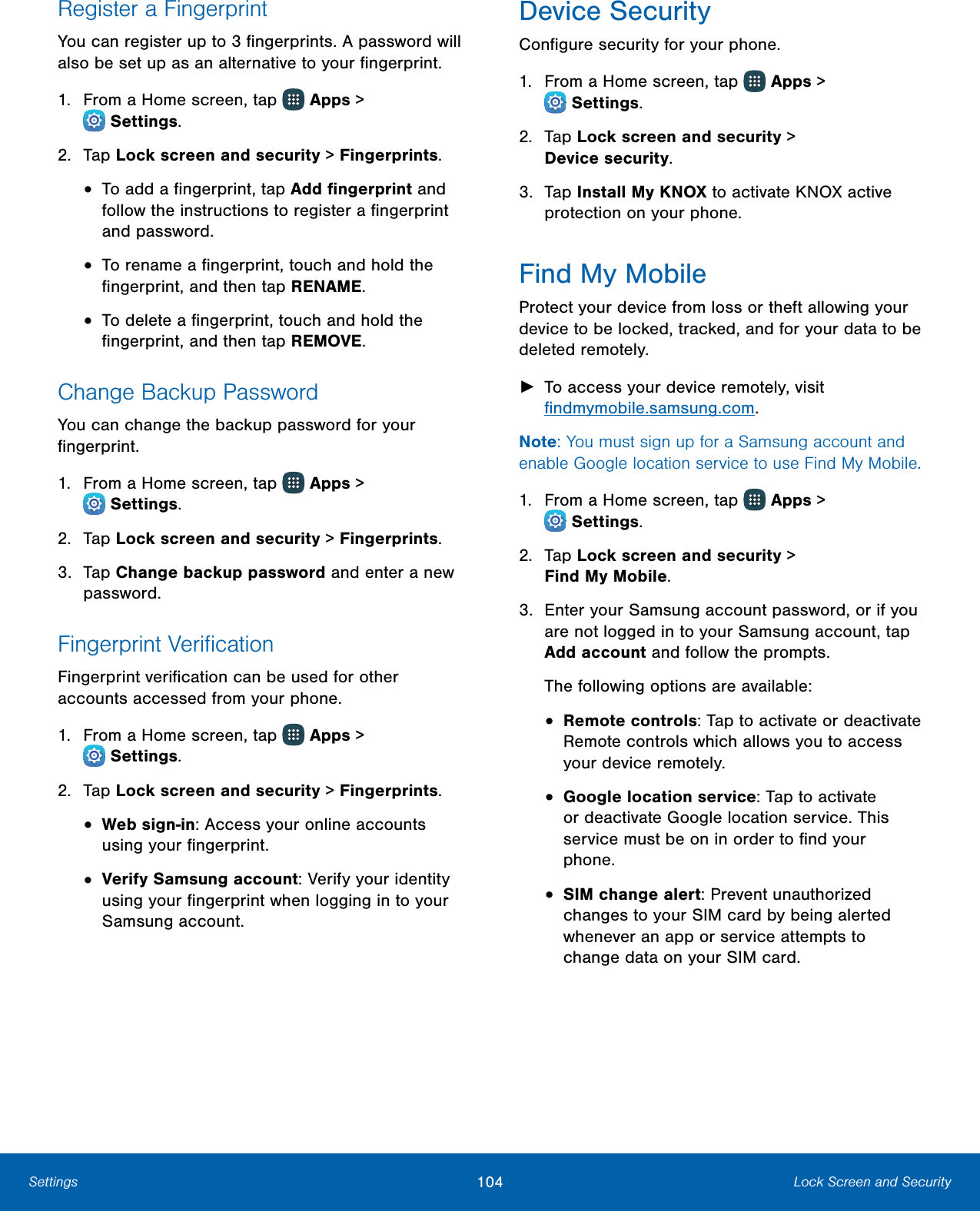
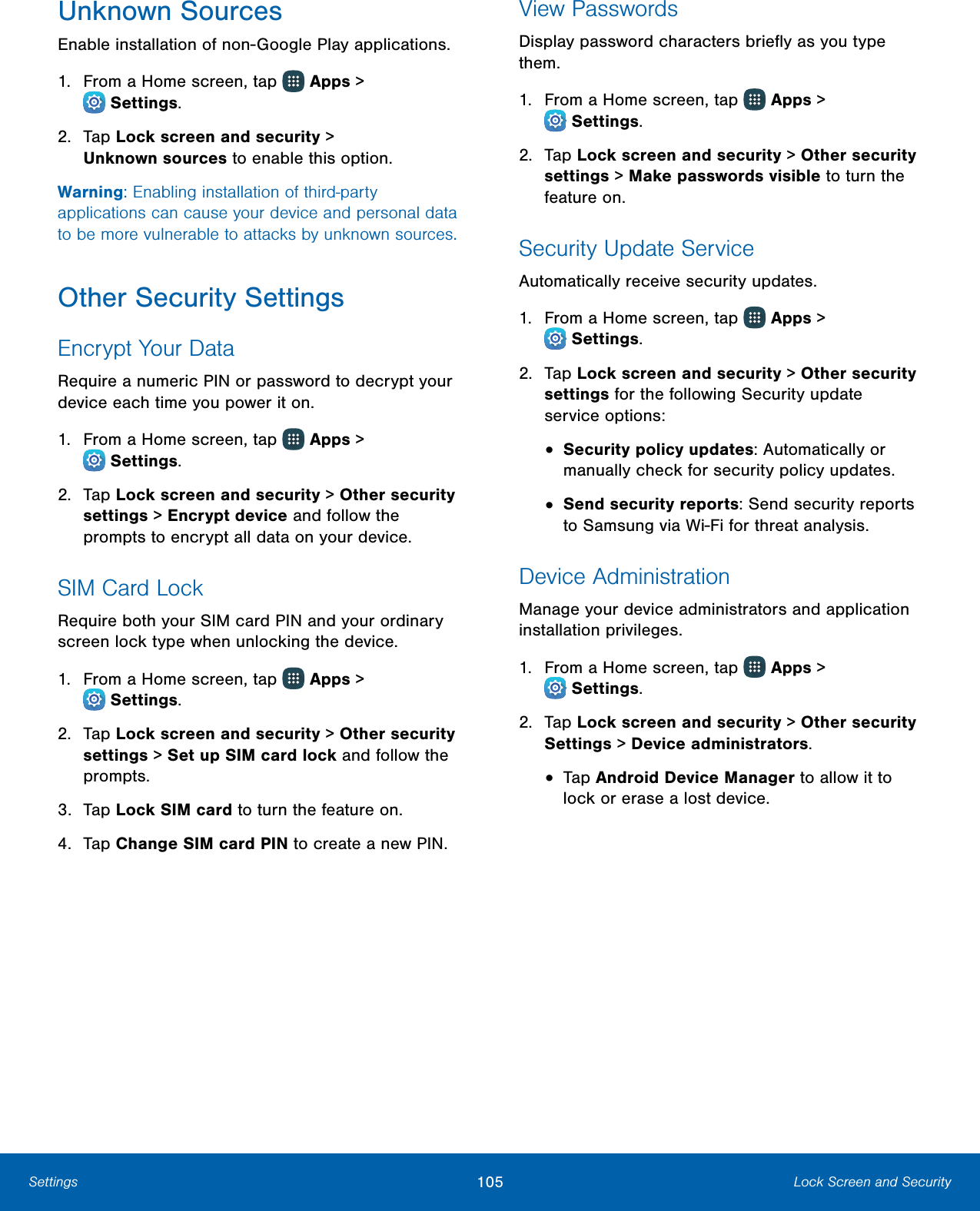
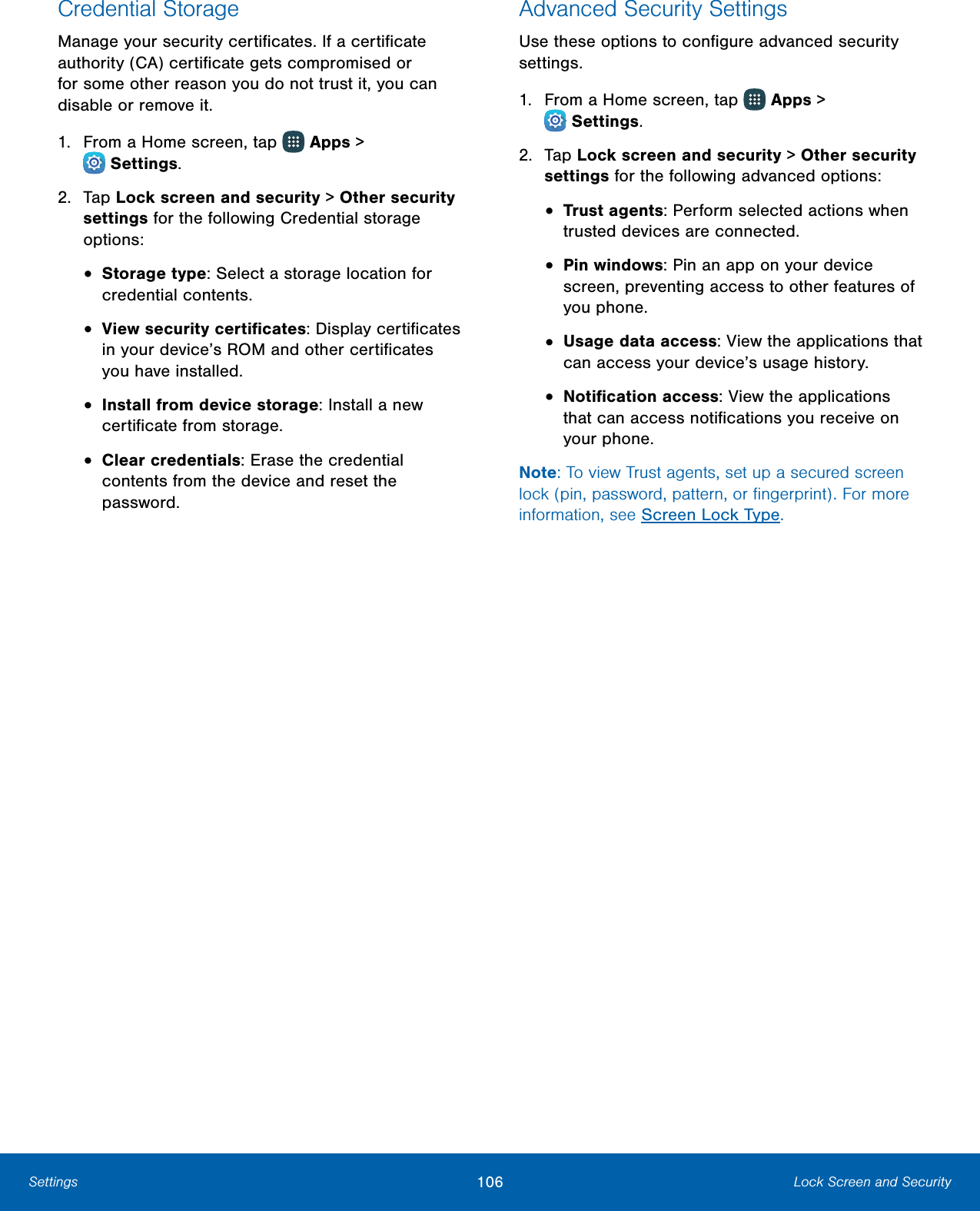
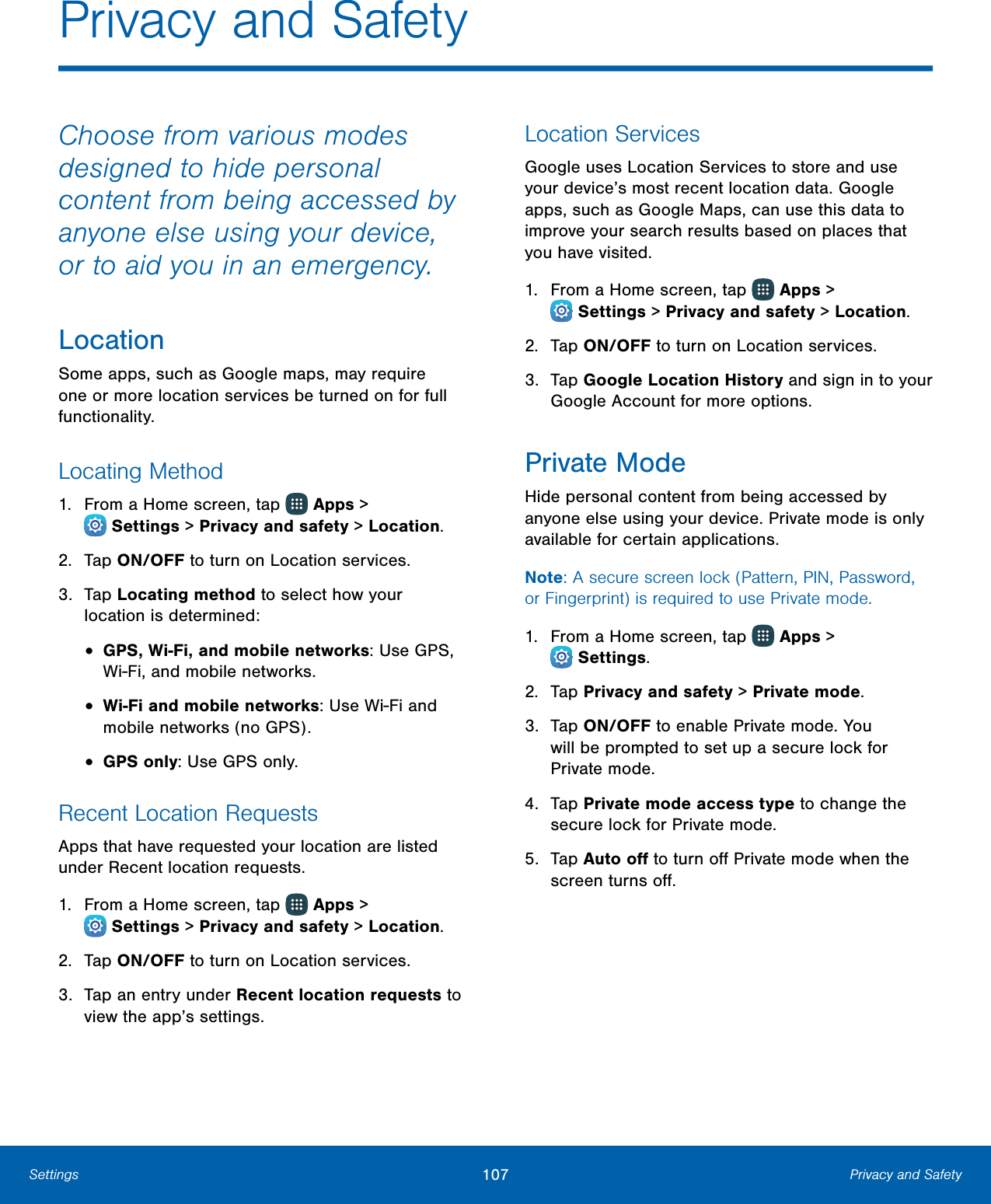
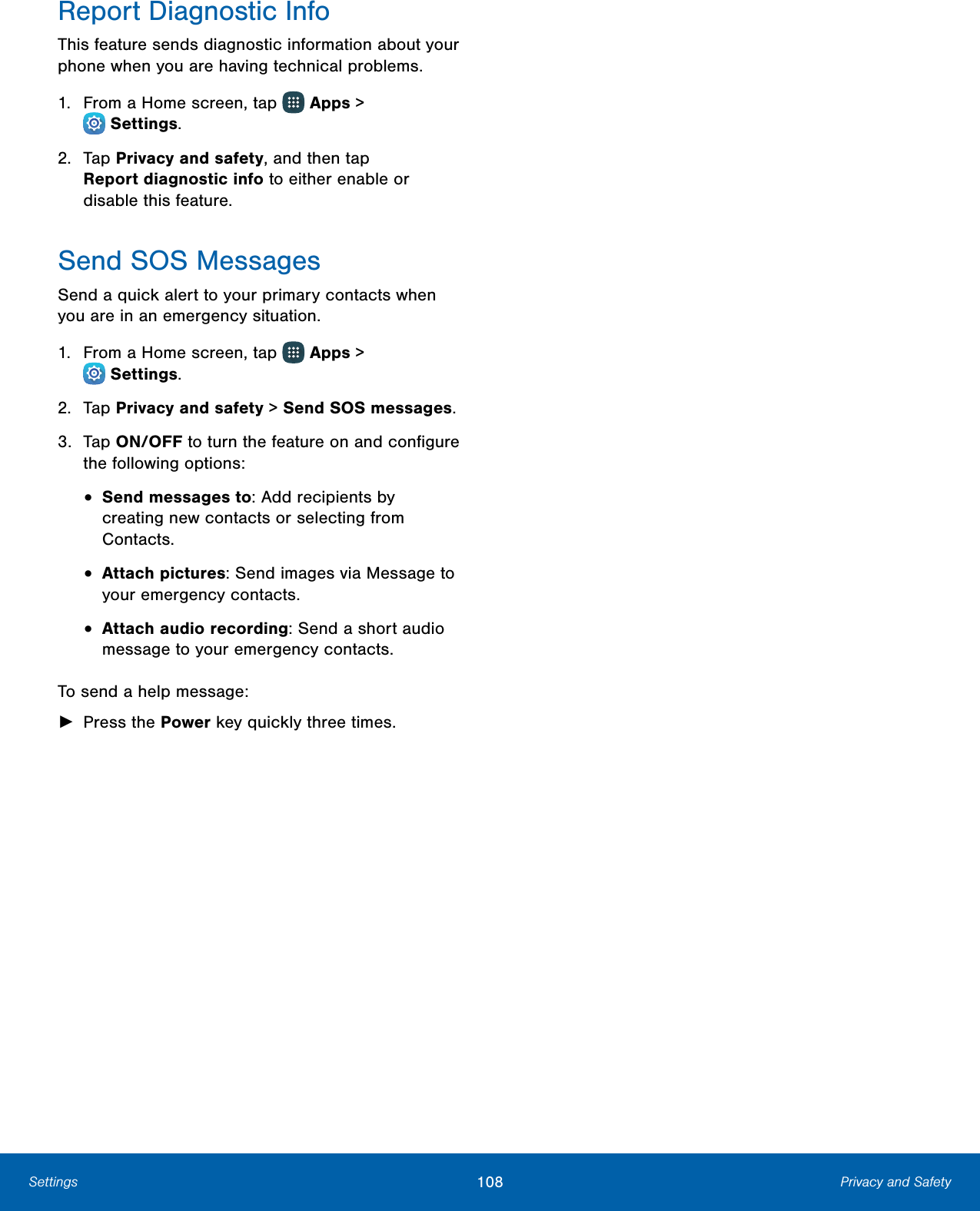
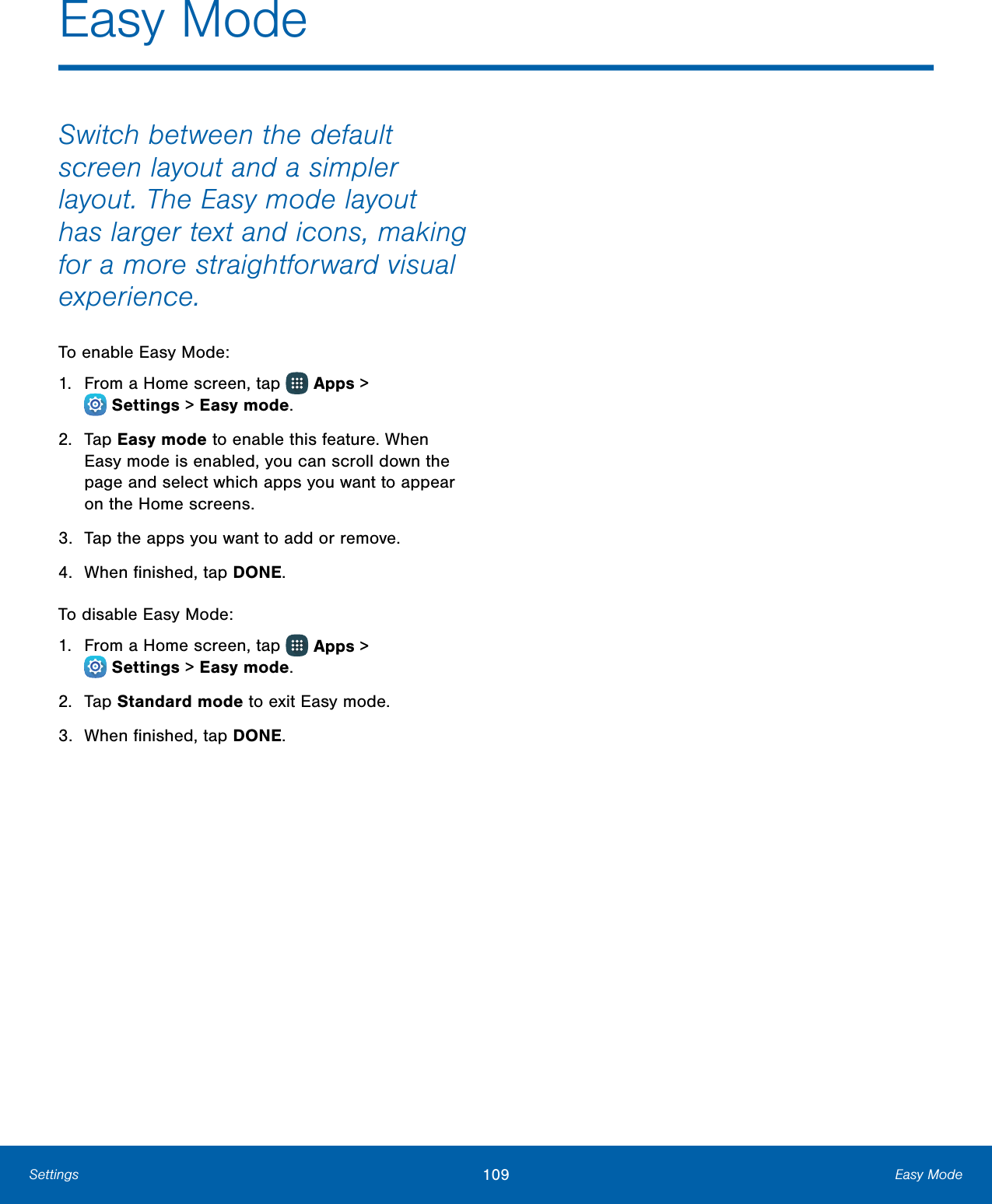
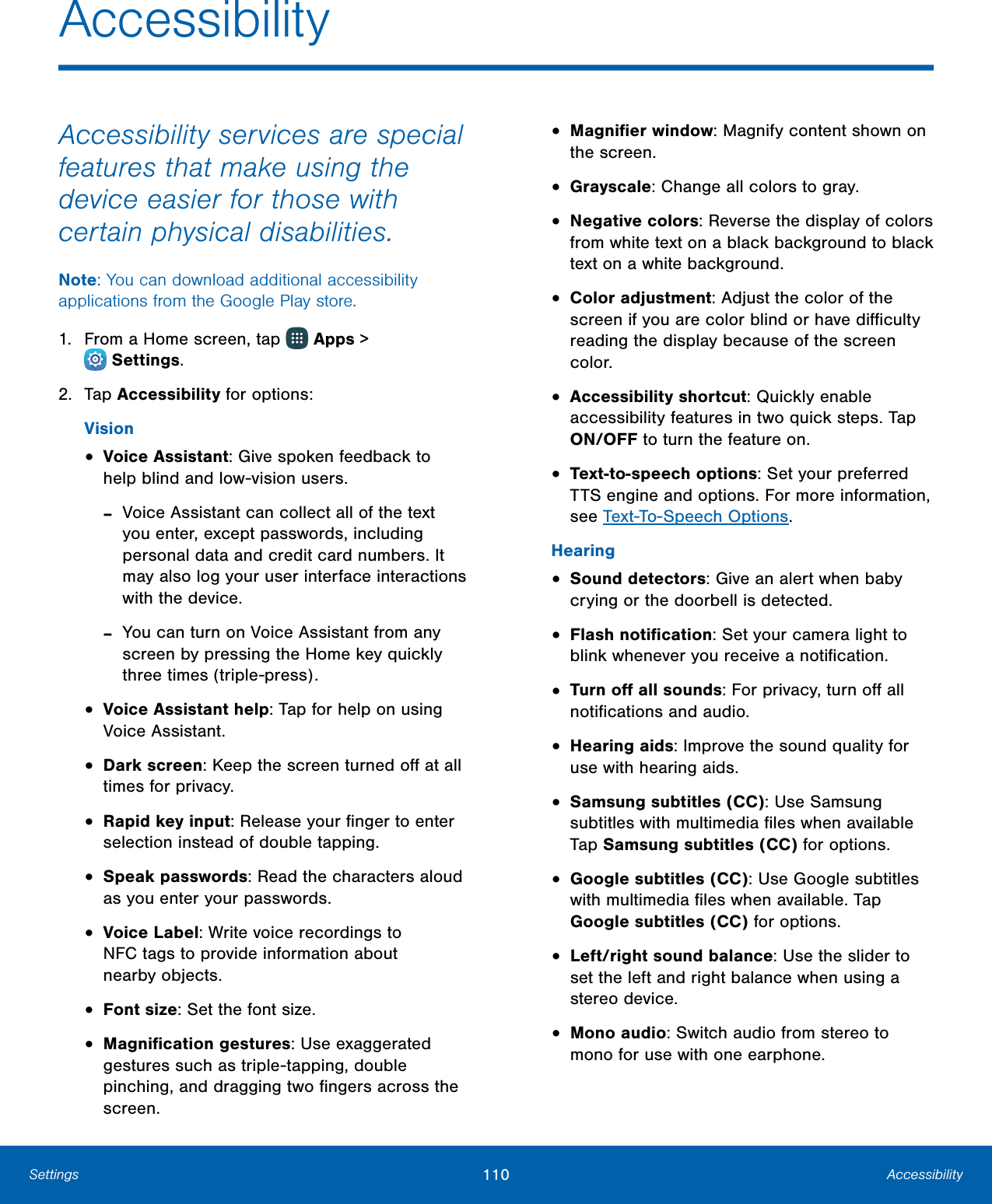
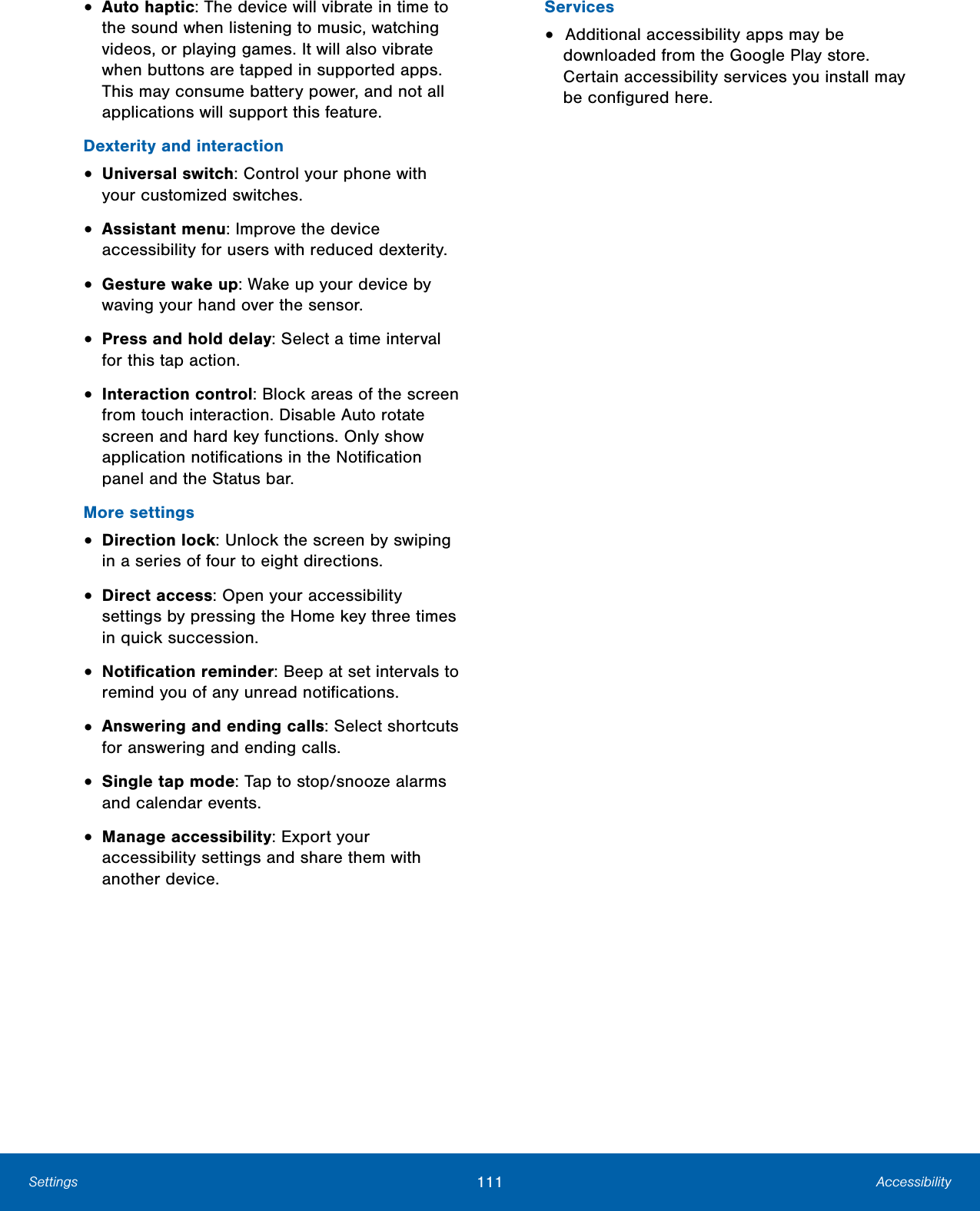
![ Accounts Set up and manage accounts, including your Google Account, Samsung account, email, and social networking accounts. Depending on the account, you can choose to synchronize your calendar, contacts, and other types of content. Add an Account 1. From a Home screen, tap Apps > Settings. 2. Tap Accounts > Add account. 3. Tap one of the account types. 4. Follow the prompts to enter your credentials and set up the account. Synchronize Accounts 1. From a Home screen, tap Apps > Settings. 2. Tap Accounts > [Account type]. 3. Tap an account to view the sync settings for that account. 4. Tap individual data items to sync. 5. Tap MORE > Sync all or Sync now to synchronize the account. Note: Sync options and the location of the sync command differ depending on the account type. Account Settings Each account has its own set of settings. In addition, you can configure common settings for all accounts of the same type. Note: Account settings and available features vary between account types and service providers. Contact your service provider for more information on your account’s settings. 1. From a Home screen, tap Apps > Settings. 2. Tap Accounts > [Account type]. 3. Tap an account to configure that account’s sync settings. 4. Tap other available options for the account. Delete an Account 1. From a Home screen, tap Apps > Settings. 2. Tap Accounts > [Account type]. 3. Tap the account and then tap MORE > Removeaccount. Settings 112 Accounts ](https://usermanual.wiki/Samsung-Electronics-Co/SMN920R4/User-Guide-2802244-Page-117.png)
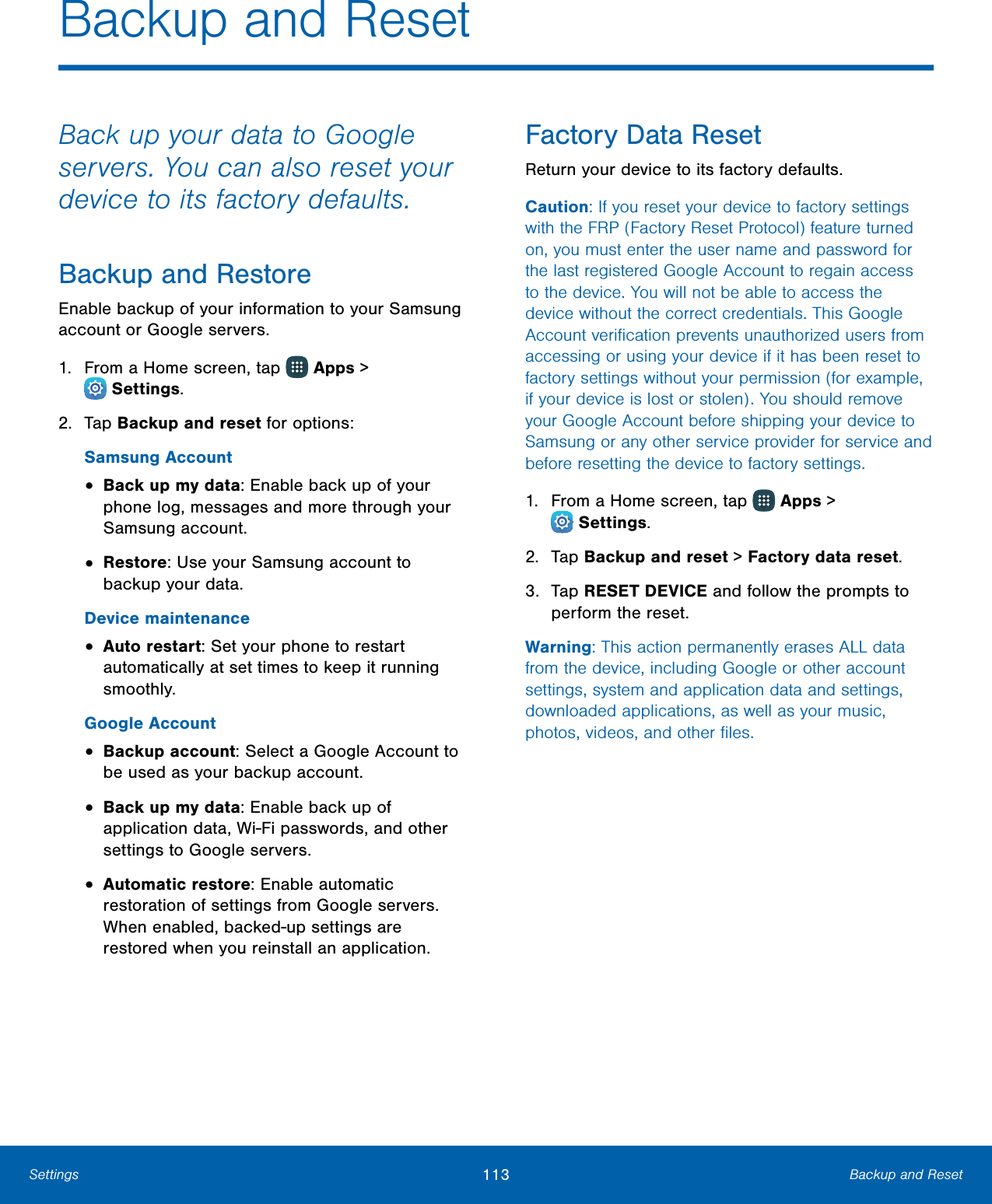
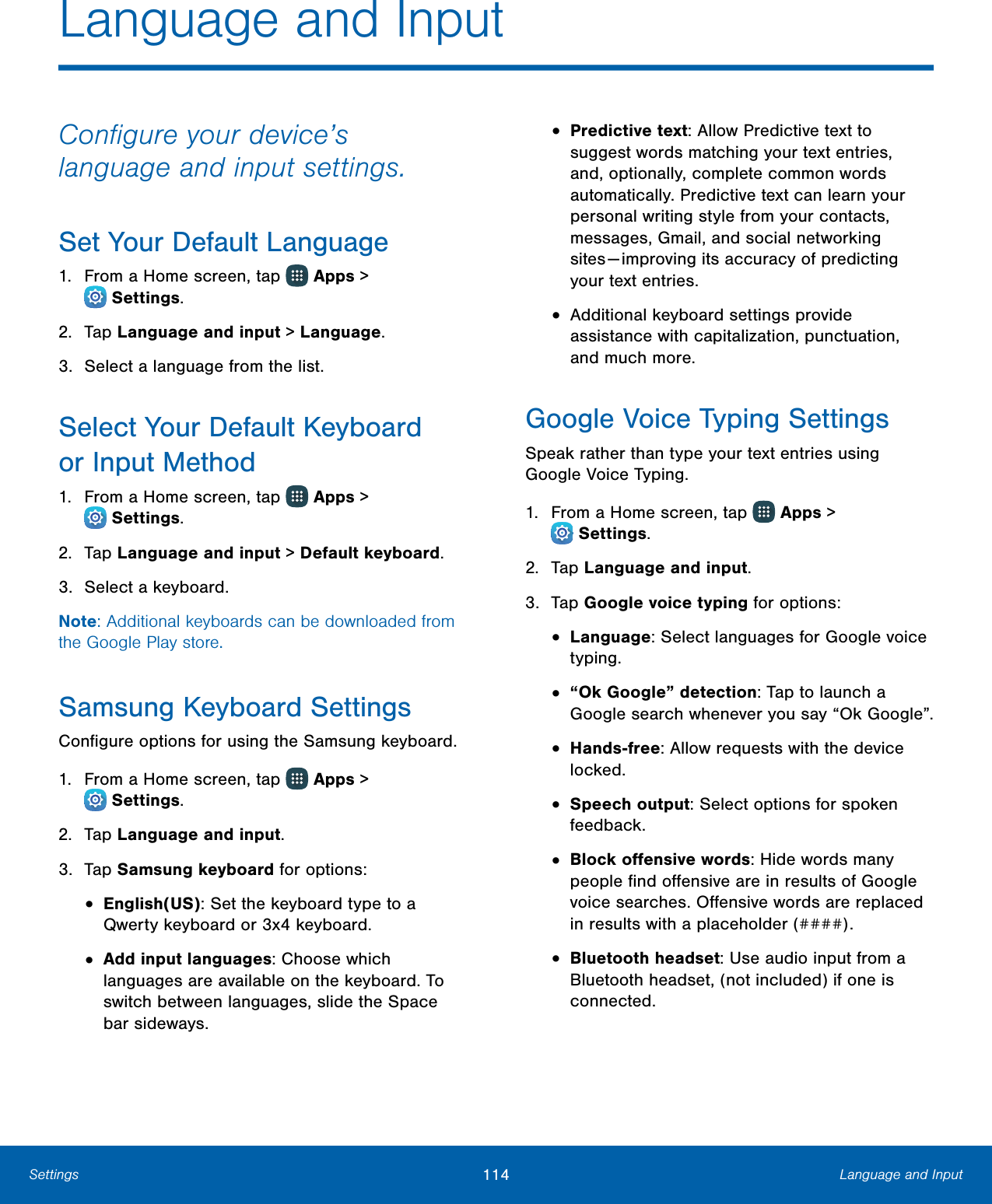
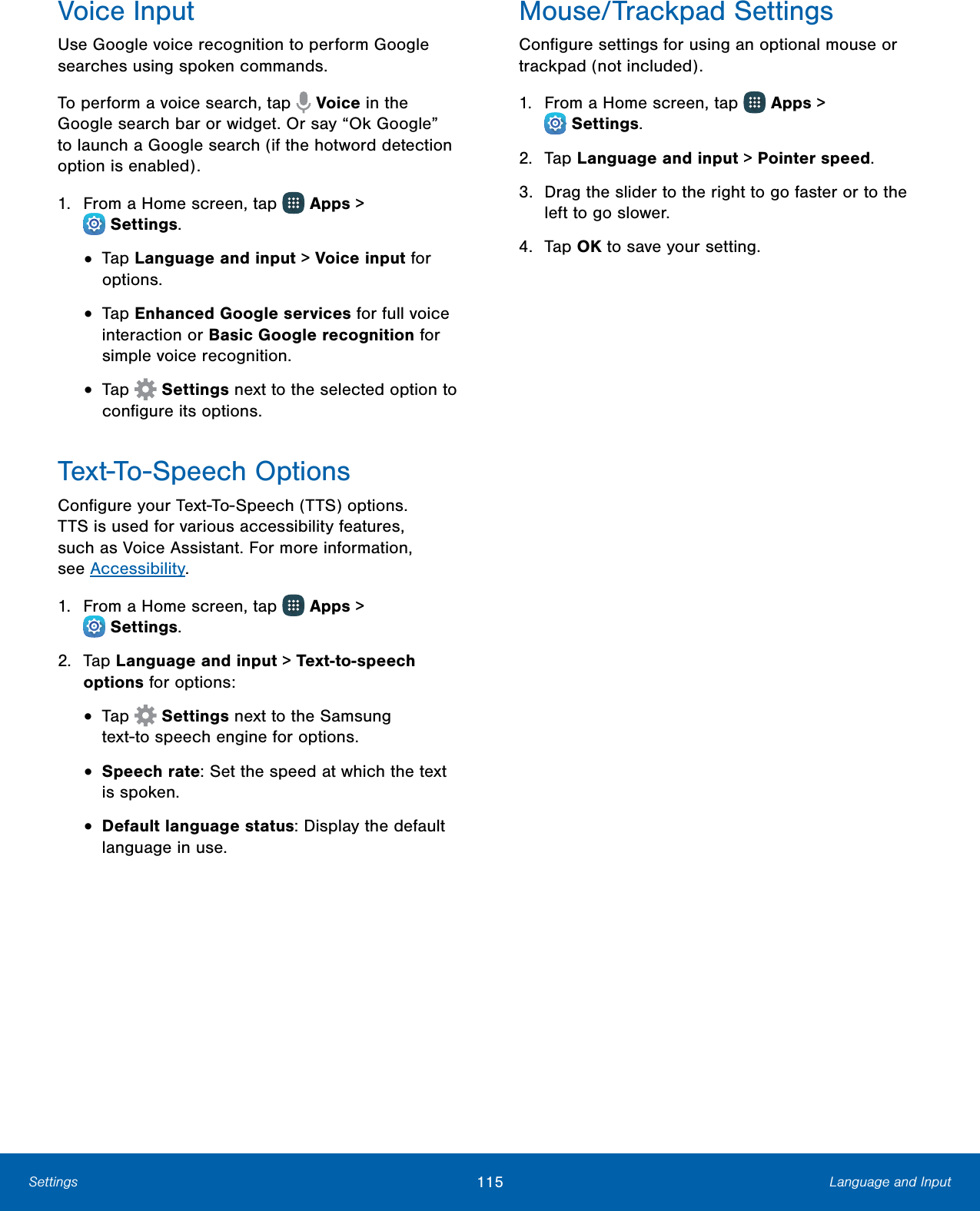
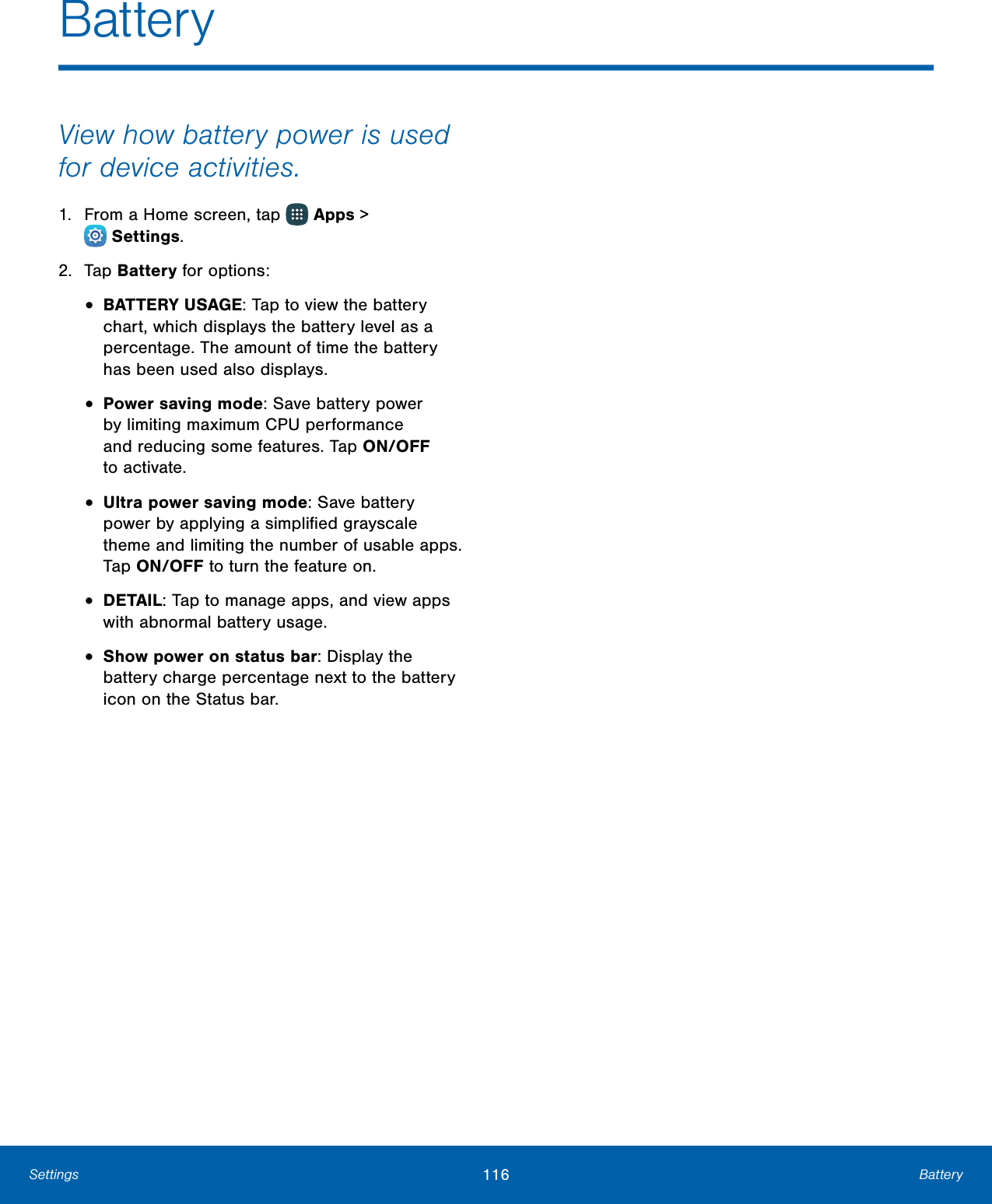
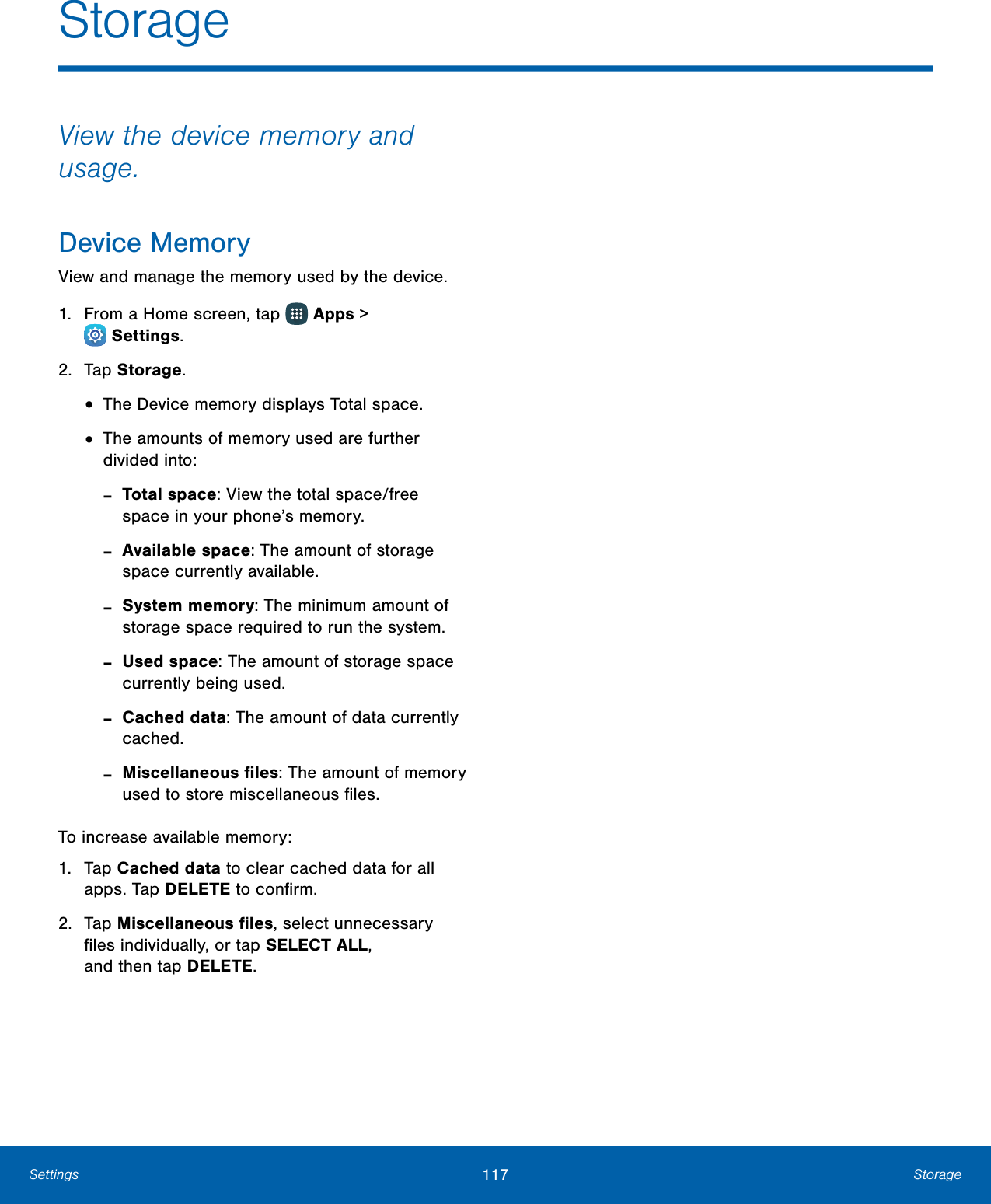
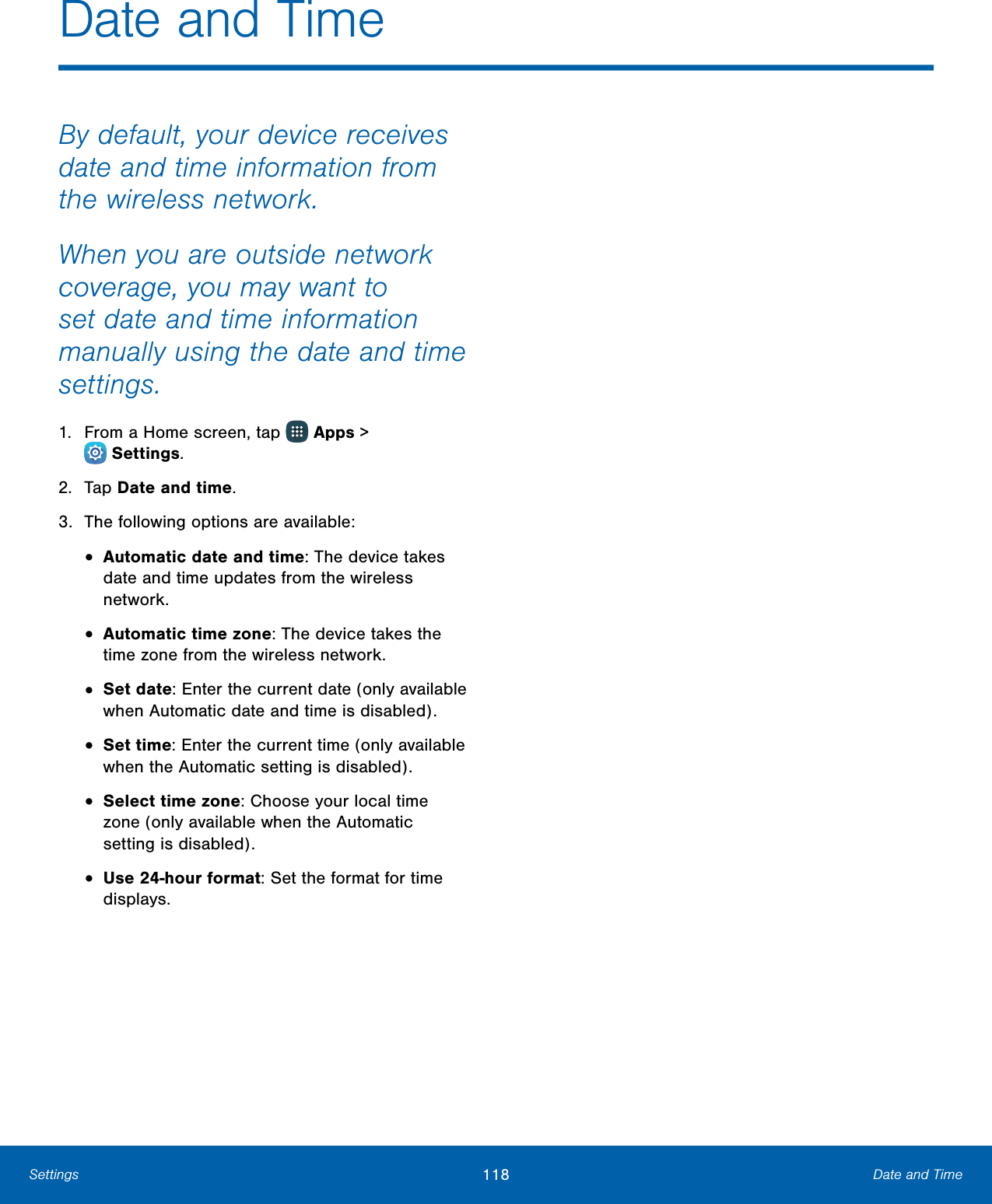
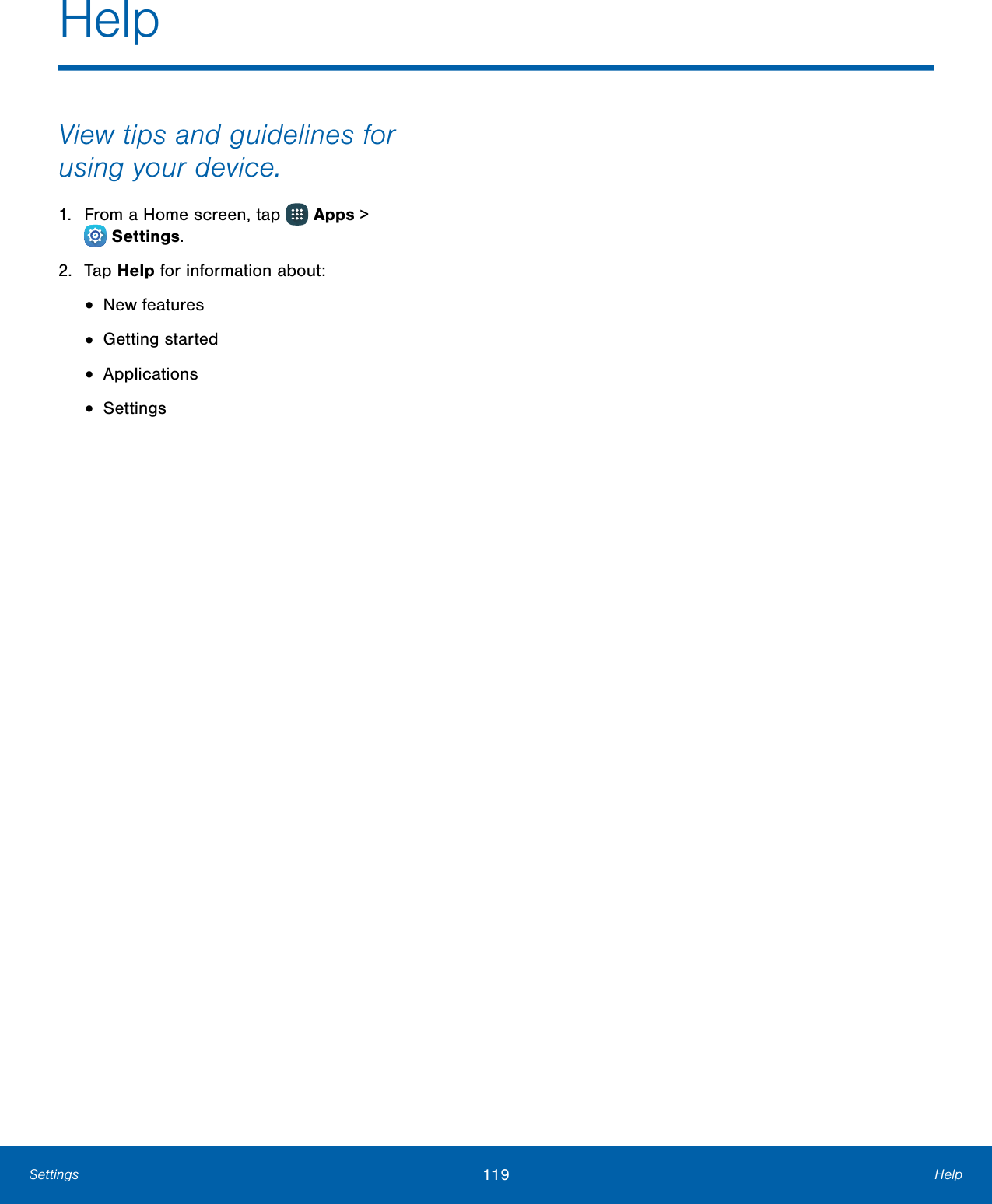
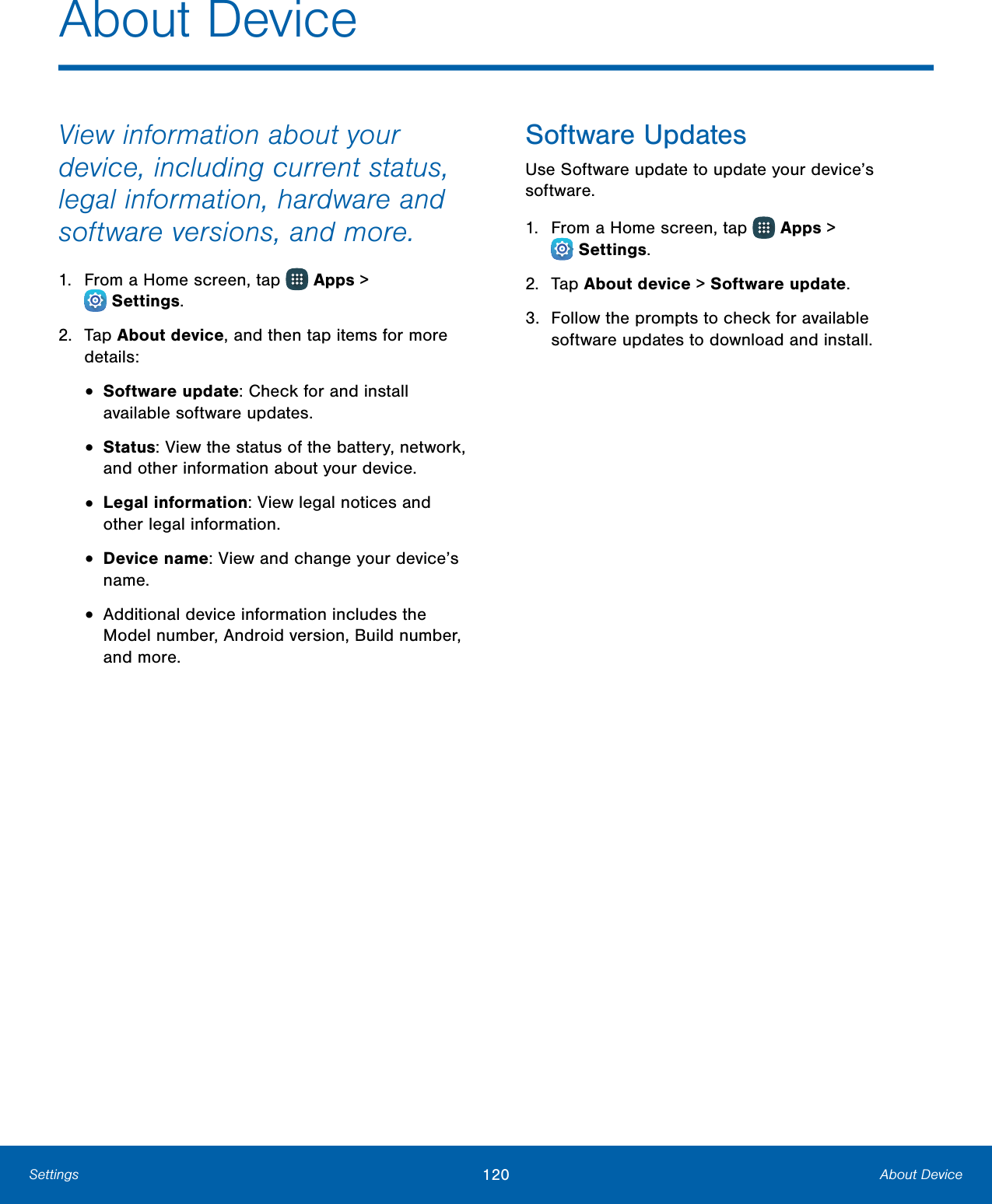

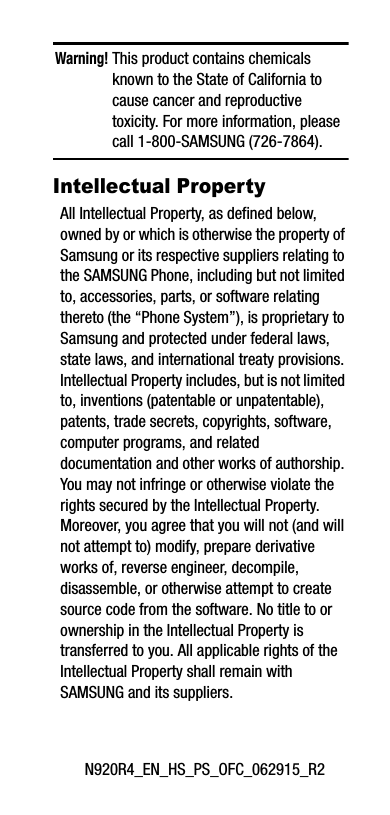
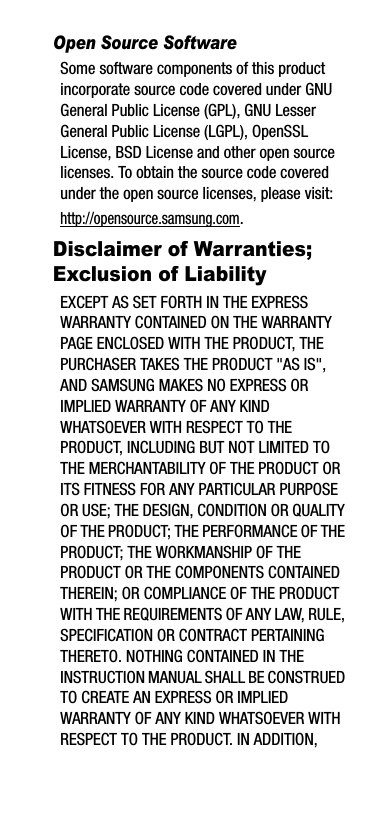
![SAMSUNG SHALL NOT BE LIABLE FOR ANY DAMAGES OF ANY KIND RESULTING FROM THE PURCHASE OR USE OF THE PRODUCT OR ARISING FROM THE BREACH OF THE EXPRESS WARRANTY, INCLUDING INCIDENTAL, SPECIAL OR CONSEQUENTIAL DAMAGES, OR LOSS OF ANTICIPATED PROFITS OR BENEFITS.Modification of SoftwareSAMSUNG IS NOT LIABLE FOR PERFORMANCE ISSUES OR INCOMPATIBILITIES CAUSED BY YOUR EDITING OF REGISTRY SETTINGS, OR YOUR MODIFICATION OF OPERATING SYSTEM SOFTWARE. USING CUSTOM OPERATING SYSTEM SOFTWARE MAY CAUSE YOUR DEVICE AND APPLICATIONS TO WORK IMPROPERLY. YOUR CARRIER MAY NOT PERMIT USERS TO DOWNLOAD CERTAIN SOFTWARE, SUCH AS CUSTOM OS.Samsung KNOXSamsung Knox™ is Samsung’s security platform and is a mark for a Samsung device tested for security with enterprise use in mind. Additional licensing fee may be required. For more information about Knox, please refer to:www.samsung.com/us/knox. [030115]](https://usermanual.wiki/Samsung-Electronics-Co/SMN920R4/User-Guide-2802244-Page-129.png)
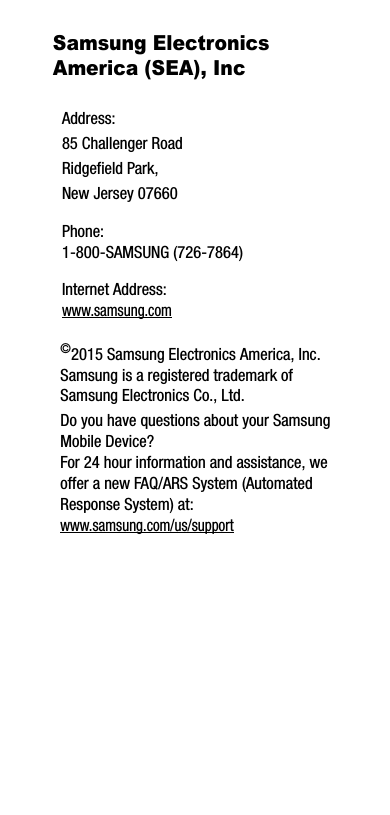
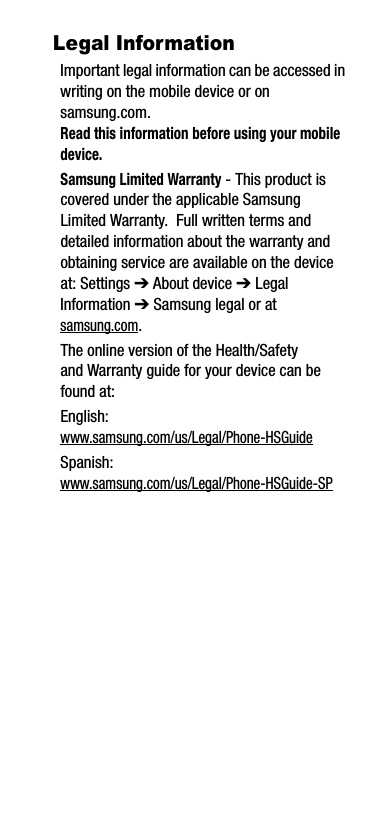
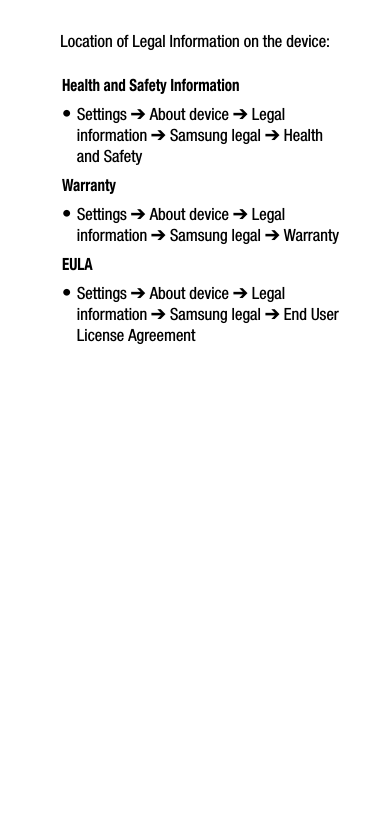
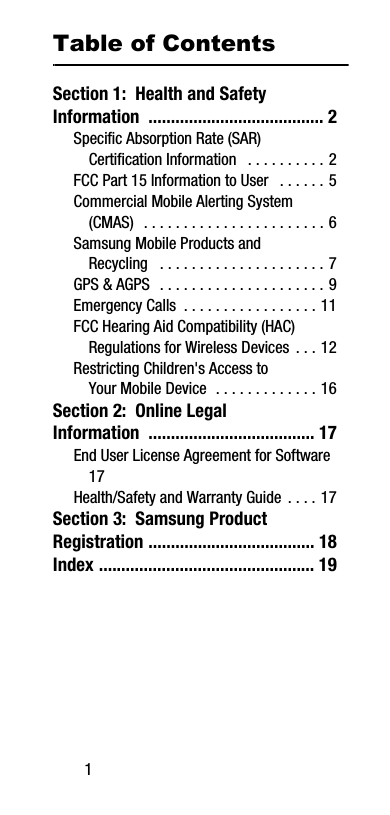
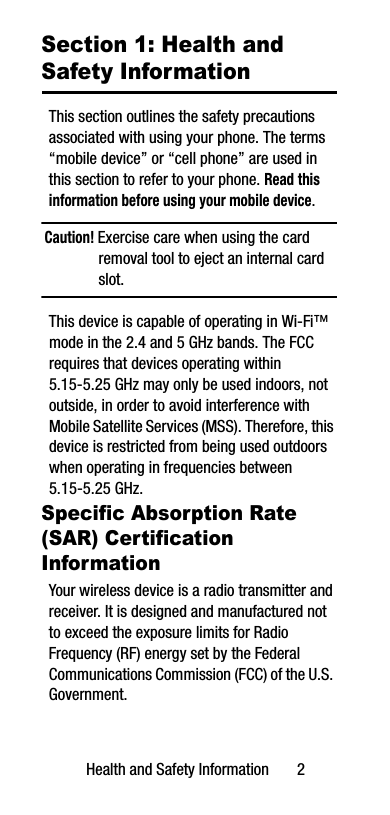
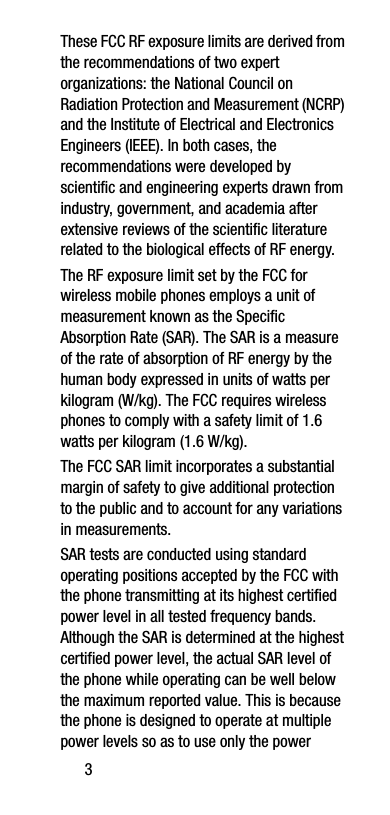
![Health and Safety Information 4required to reach the network. In general, the closer you are to a wireless base station antenna, the lower the power output of the device.Before a new model device is available for sale to the public, it must be tested and certified to the FCC that it does not exceed the SAR limit established by the FCC. Tests for each model phone are performed in positions and locations (e.g. at the ear and worn on the body) as required by the FCC. For body-worn operation, this device has been tested and meets FCC RF exposure guidelines when used with an accessory that contains no metal and that positions the mobile device a minimum of 1.5 cm from the body. Use of other accessories may not ensure compliance with FCC RF exposure guidelines. The FCC has granted an Equipment Authorization for this mobile device with all reported SAR levels evaluated as in compliance with the FCC RF exposure guidelines. This device has a FCC ID number: A3LSMN920R4 [Model Number: SM-N920R4] and the specific SAR levels for this device can be found at the following FCC website:www.fcc.gov/oet/ea/.The SAR information for this device can also be found on Samsung’s website: www.samsung.com/sar. SAR information on this and other model devices can be accessed online on the FCC's website through http://transition.fcc.gov/oet/rfsafety/sar.html. To](https://usermanual.wiki/Samsung-Electronics-Co/SMN920R4/User-Guide-2802244-Page-136.png)
